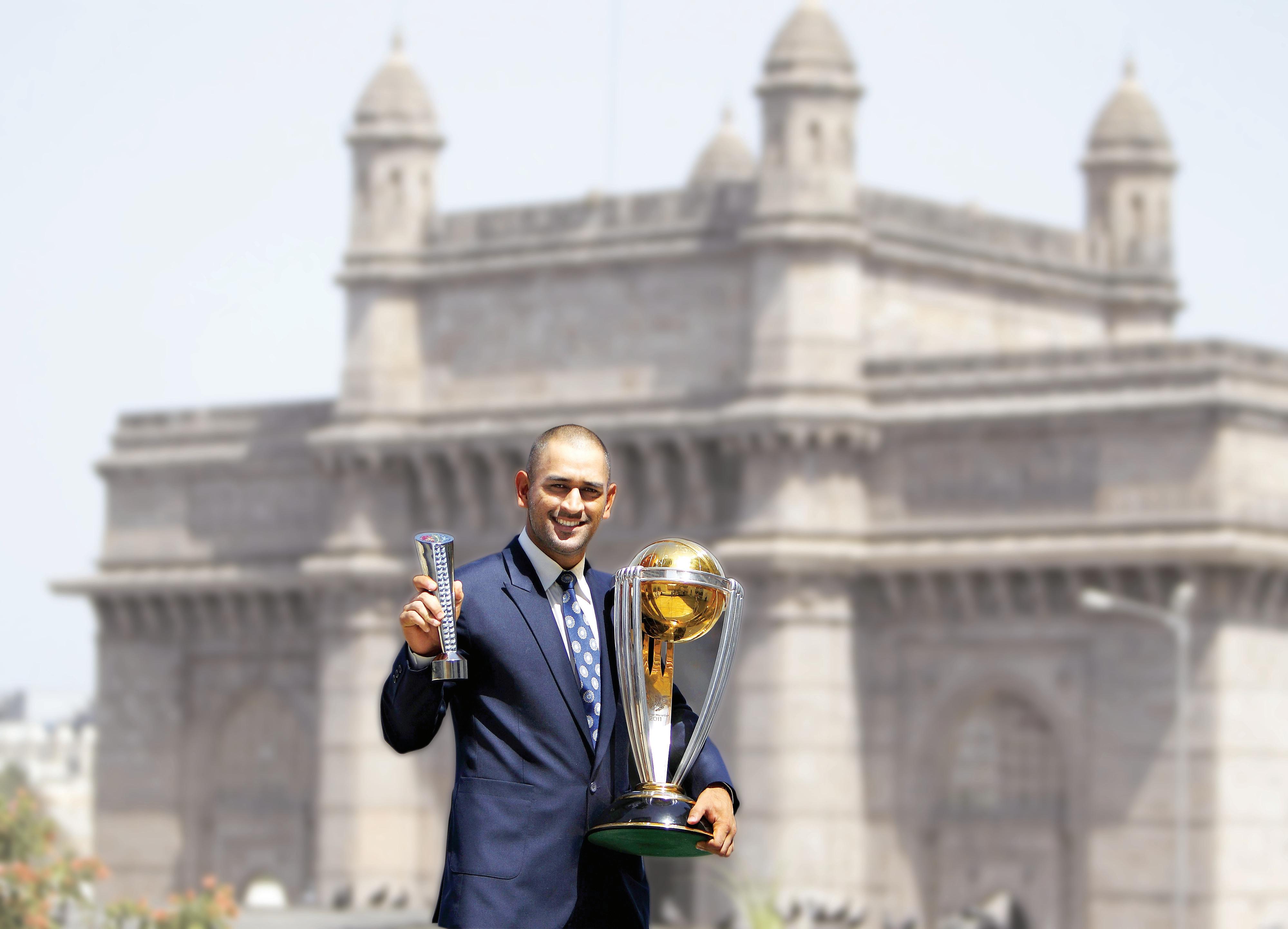

delivered delivered A billion billion dreams dreams A FREE Vol. 11 No. 5 • April 2011 • melb@indianlink.com.au • www.indianlink.com.au MELBOURNE PO Box 80, Chadstone Shopping Centre, Chadstone VIC 3148 • Ph: 03 9803 0200 • 1 8000 15 8 47 • Fax: 03 9803 0255

2 <> APRIL 2011 INDIAN LINK

APRIL 2011 <> 3 INDIAN LINK

4 <> APRIL 2011 INDIAN LINK
INDIAN LINK
PUBLISHER
Pawan Luthra
EDITOR
Rajni
Anand Luthra
ASSISTANT EDITOR
Sheryl Dixit
MELBOURNE
Preeti Jabbal
CONTRIBUTORS
Pinky Bhatia, Arminder Luthra, Gaurav Pandey, Ritam Mitra, Anusha Menon, Chitra Sudarshan, Roy Lange, Dilip Jadeja, Thomas King, Sandip Hor, Farzana Shakir, Geeta Khurana, Tim Blight, George Thakur, Om Khushi, Nima Menon, Saroja Srinivasan, Priyanka Tater, Neeru Thakar, Rani Jhala, Nancy Sood.
ADVERTISING MANAGER
Vivek Trivedi 02 9262 1766
ADVERTISING ASSISTANT
Drishya Sharma 02 9279 2004
GRAPHIC DESIGN AND LAYOUT
Kaye Martin
Indian Link is a fortnightly newspaper published in English. No material, including advertisements designed by Indian Link, maybe reproduced in part or in whole without the written consent of the editor. Opinions carried in Indian Link are those of the writers and not necessarily endorsed by Indian Link. All correspondence should be addressed to
Indian Link
Level 24/44 Market St, Sydney 2000 or GPO Box 108, Sydney 2001
Ph: 02 9279-2004 Fax: 02 9279-2005
Email: info@indianlink.com.au

Religious intolerance unacceptable
On the night of 19th March, two balaclava clad men stood outside the oldest Hindu temple in Auburn, Sydney and peppered it with bullets. The bullets shattered glass and went through the ceiling. The time was 10.40 p.m. and fortunately no one was visiting the temple. The family members of the temple priest Jatin Kumar Bhatt were fast asleep inside the temple complex and were only woken up by the investigating police.
The attack highlighted the need to ensure the safety of religious minorities in this country. Indian-Australians should not have to live with this menace.
The society in which we live allows us freedom to practice our religion of choice. If Hindus, Muslims, Buddhists, Sikhs and Christians can coexist peacefully in India, a country of over one billion people, there is no reason why the same cannot be emulated in this country.
Indian-Australians have drawn widespread praise for their secular values and tolerance. However, it should not be mistaken as a weakness. It does not mean that we will allow others to snatch from us what is rightfully ours.
BY PAWAN LUTHRA
Sri Mandir, established in 1977, has been promoting Hindu culture and philosophy among the Indian community as well as educating the wider mainstream about Hinduism and Indian values. That it could be so blatantly attacked puts a question mark on the secular credentials of this country.
It’s common knowledge that it is easier to get regulatory approval for a religious site where a religious structure already exists – a fact that makes the keepers of such sites vulnerable to harassment.
To blame any specific group for heinous incident may be putting the cart before the horse, but how often does one come across masked men spraying bullets at a place of worship?
That the police did not put out an immediate media alert is also shameful. While drive-by shooting incidents generally find a mention in
the mainstream media the next day, it took our media a few days to realise the seriousness of the crime.
While community papers are doing their bit, they need all the support they can get from the mainstream media to exert pressure on the local government, so that the grievances of religious minorities can be redressed.
Channel 10 and The Sydney Morning Herald reported the incident, but other major media platforms failed to highlight the issue. There is also a need for the local police to throw in more resources to ensure that the criminals are brought to justice, and such attacks do not happen in the future.
The local Indian community expects better support from the authorities concerned. The community’s ‘tea party’ group had hosted many a function to canvass for the Liberals in the run up to the elections. It is time for the newly-elected State government to stand behind the community on this issue.
We want the full force of the law working to ensure that those responsible for such crimes do not go scot-free.
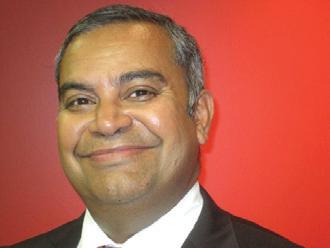
APRIL 2011 <> 5 INDIAN LINK www.indianlink.com.au EDITORIAL
Starry, starry night
BY PREETI JABBAL





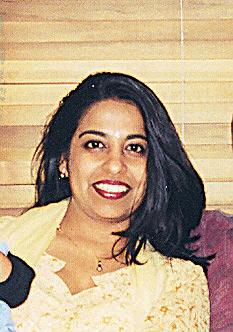
One star-making choreographer, countless rehearsals and over 90 performers equals one spectacular dance show. It was not just Indian cricket that bowled the Aussies over this March. The mainstream audience that attended the recent Stars of Bollywood show held at the Melbourne Convention centre was left completely gob-smacked by the Indian style extravaganza. The colours, vibrancy and energy of the eclectic lineup of dances were a joy to behold. Hosted by newly formed Hoopla Entertainment in collaboration with Shiamak Indo Jazz Dance Movement (SIJDM), the Stars of Bollywood show combined dance forms and coherent choreography to depict the journey of Indian cinema. Motion and emotion discovered new pairing as dancers filled the stage with each segment. The dances alluded to different eras, genres and artists of Indian cinema. The momentum on the stage was punctuated with video footage and a voice over. No time was wasted in introducing each and every segment, thus creating the impression of a seamless body of work. The dancers raced onto the stage in rapid succession, sporting a variety of dazzling costumes and bursting with talent and inspiration.
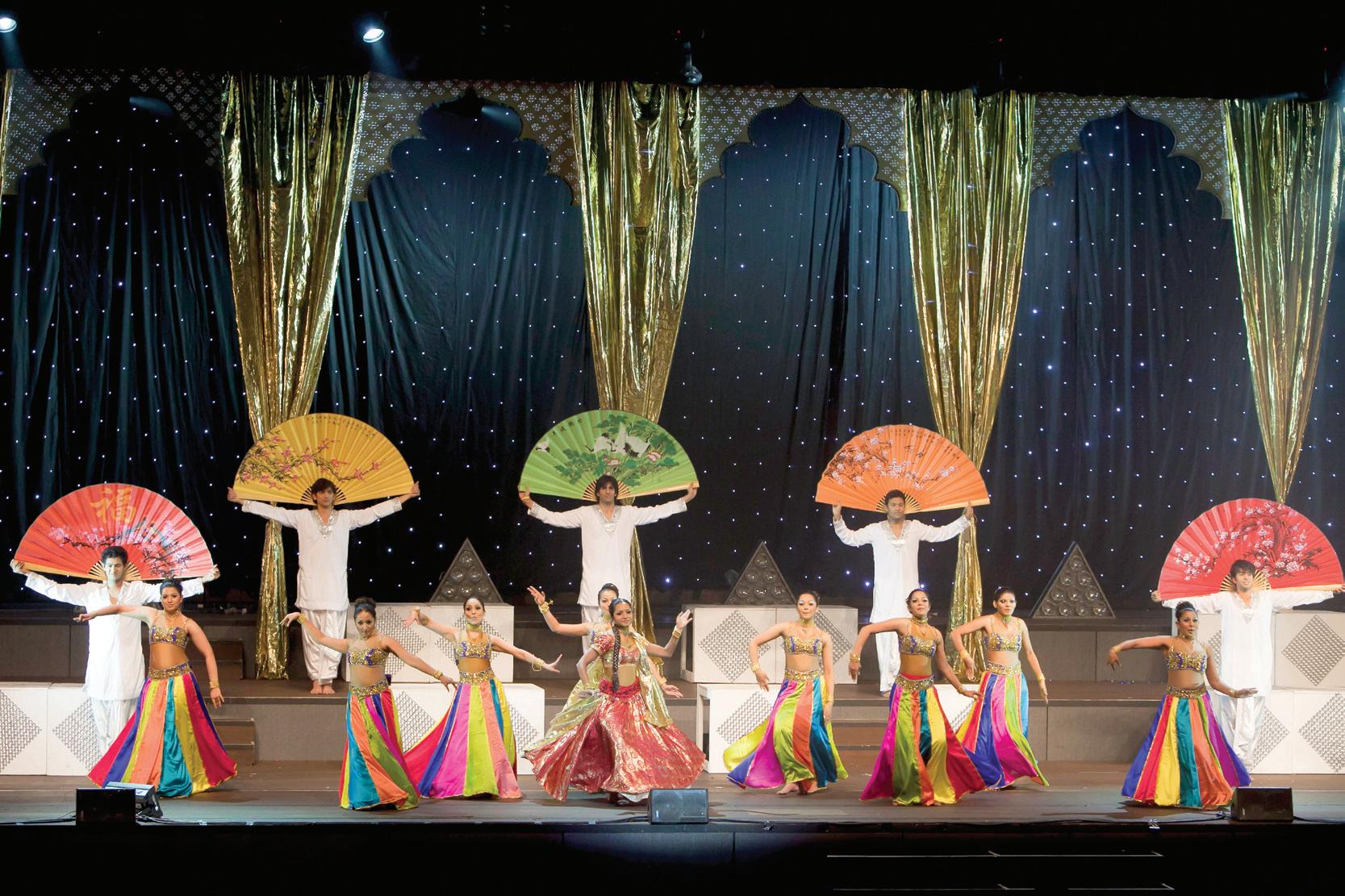
Renowned choreographer Shiamak Davar combined many genres of dance from jazz, cabaret, rock and roll and hip hop, as well as contemporary along with traditional and classical Indian styles to present a constellation of glittery items from Bollywood.
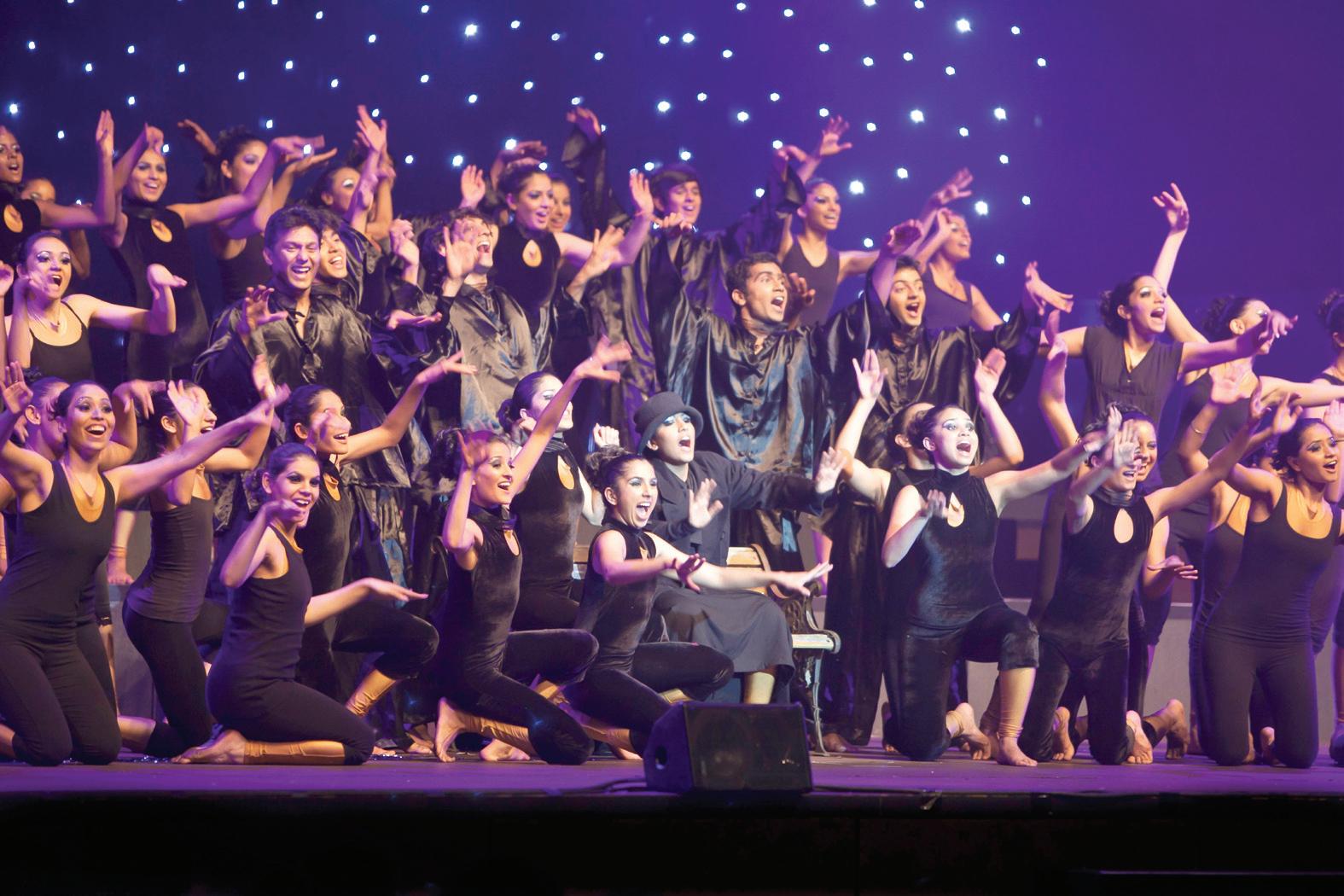
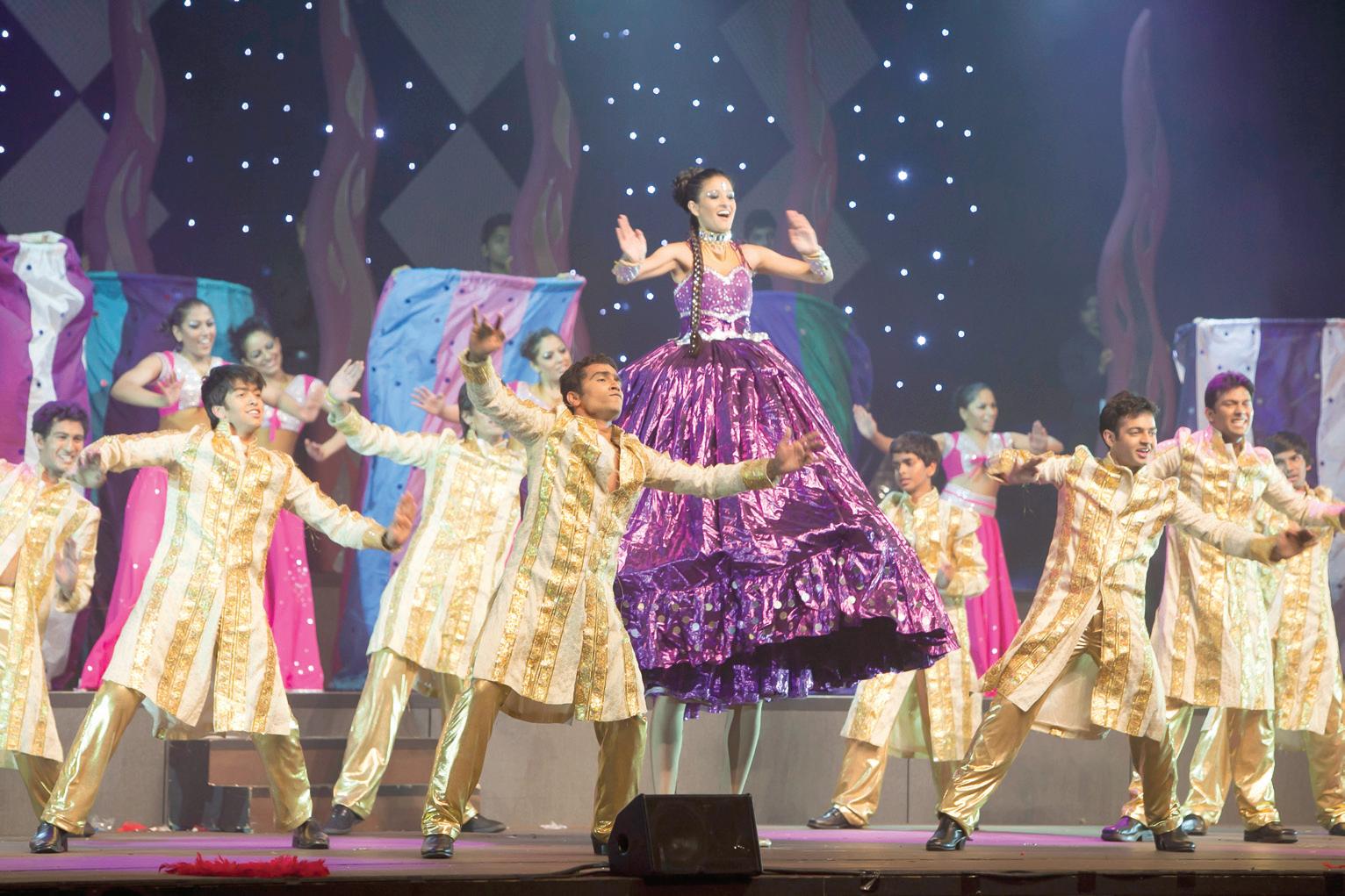
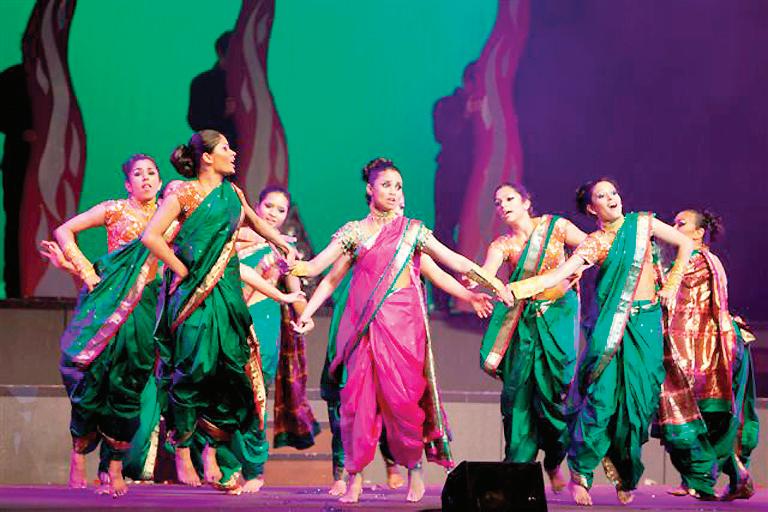
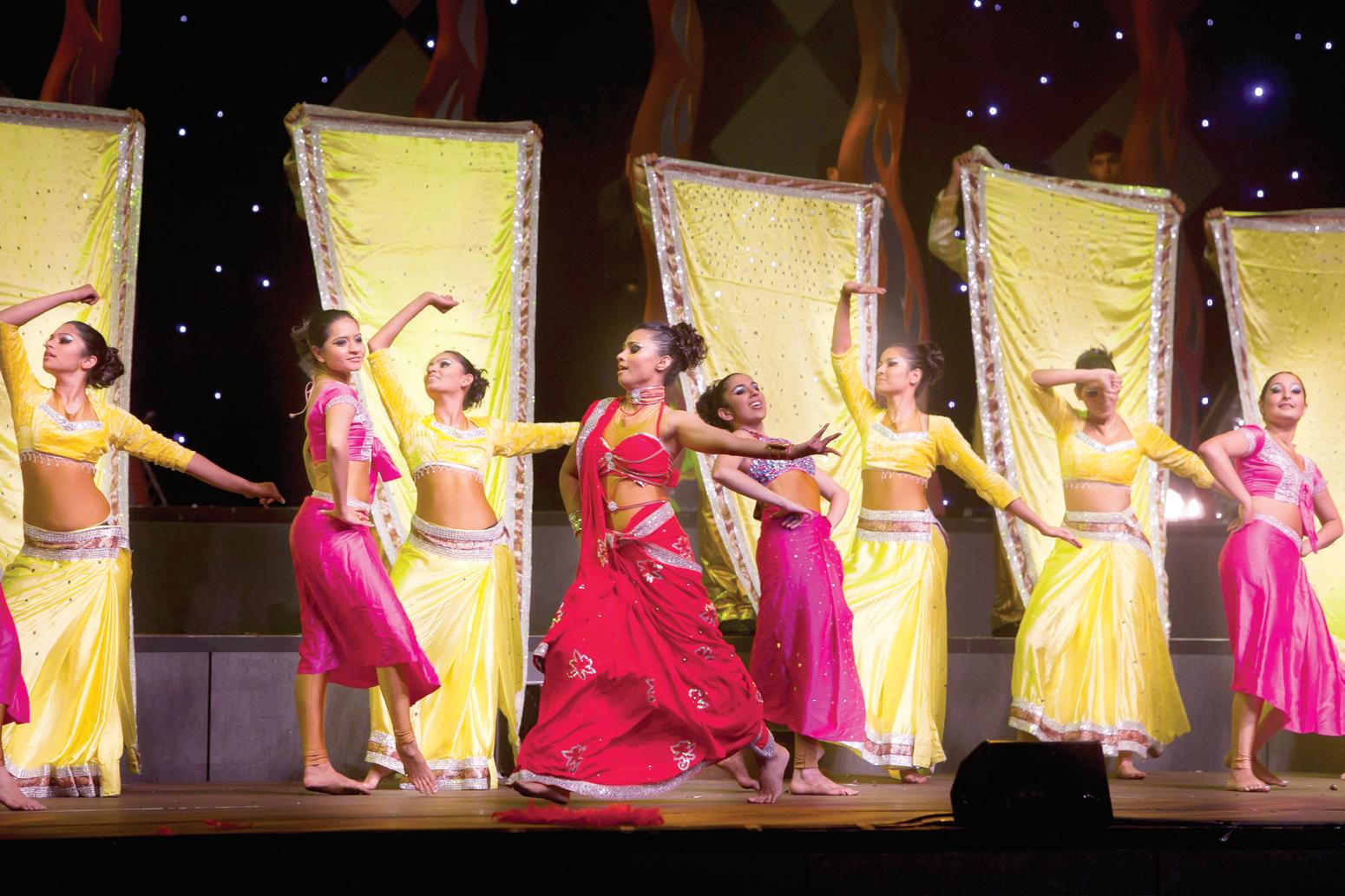
The sound, like the mood, was resolutely upbeat broken only by a pure jazz segment with a touch of Bollywood melodrama from the movie Black . This was the only dark piece in the entire repertoire, and brought some reprieve from the endless riot of colours. Among other highlights, the ‘item number’ medley
based on mega hits like Sheila, Munni, Piya Tu, Bidi etc. scored on mass appeal. So did the creative piece that displayed the vibrant diversity from different regions of India and the jugalbandi between contemporary dance and kathak
In the audience, a three year old forgot to demand attention from his fawning parents as he sat mesmerized by the colours. The Nintendo generation 10 year old was happy to forgo his PSP, as he kept his eyes peeled on the stage. Teeny boppers slipped to the edge of their seats with excitement, the Principal of a high school did not want to miss a second of the action, while moms and dads tapped their feet in unison to the infectious beats. Every dance was heartily cheered as the stars sprinkled their magic on all the dance lovers present in the crowd.
Shiamak’s dance vocabulary remains so distinct and inherently his, that it’s impossible not to recognise his work. Judging from the positive comments received after the show, his acclaim will no longer be confined to an Indian audience. Manisha Chaubel Menon and Ashutosh Kapse from Hoopla Entertainment said later that the show will also travel to various cities in Australia and New Zealand. “I am delighted with how well the show has been received in Melbourne. This is an opportunity for us to showcase our local talent and connect with the Australian community to demonstrate our high energy dance form,” said Manisha.
The adrenalin rush was still evident at the post-show party held at Mod Oz Indian restaurant the following day. The mood was ebullient as the dancers and their parents celebrated the success of an enormously enjoyable show. A video conference with Shiamak Davar who was in Vancouver had the youngsters in near hysteria, especially when he promised to come to watch their show soon. If and when he arrives, he can see for himself how his collage of noise, colour, force and visual spectacle has the audience gawping and wanting more.
6 <> APRIL 2011
COMMUNITYSCENE
Photos: Ravinder Singh Jabbal

APRIL 2011 <> 7 INDIAN LINK
Munni rocks Melbourne!
Indian Film Festival guest and Bollywood dance specialist Malaika Arora Khan leads 1235 Melbournians into the Guinness Book of World Records
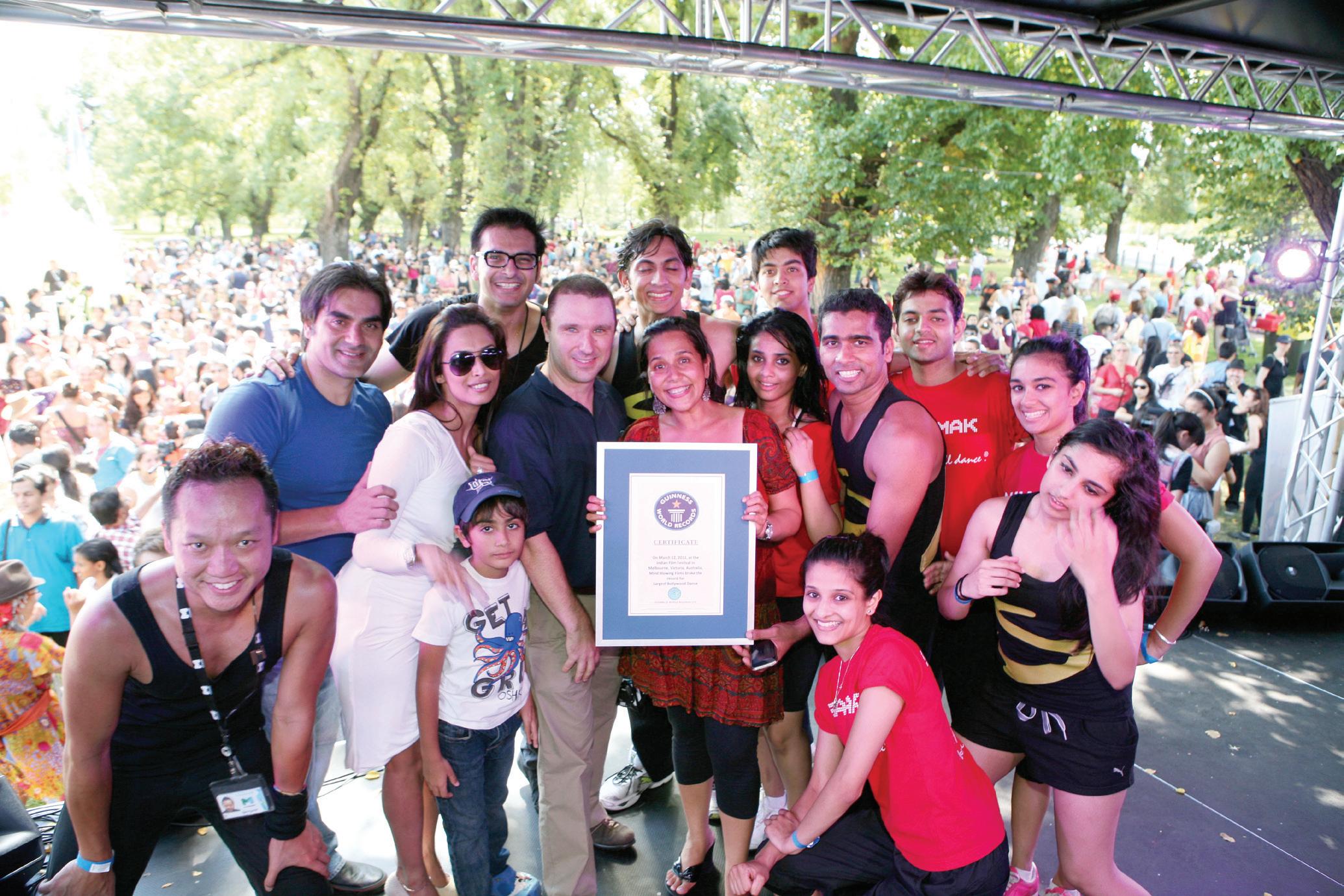
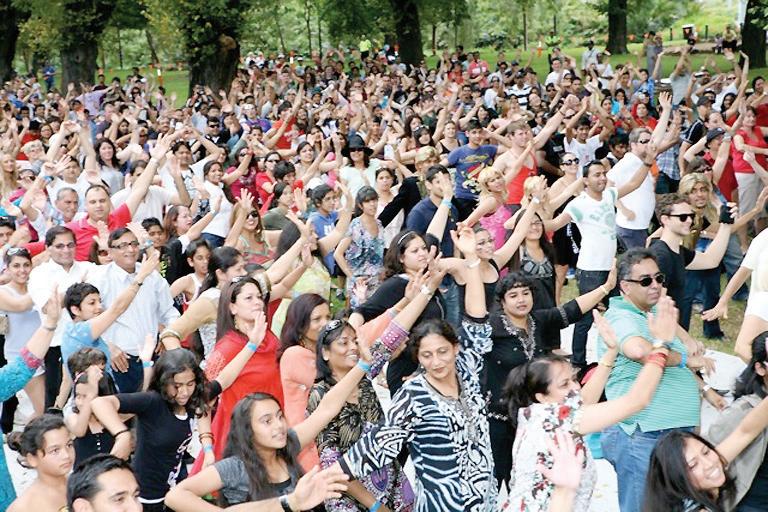 BY PREETI JABBAL
BY PREETI JABBAL

Munni’s notoriety has led to more fame and name. The super-hit song Munni Badnaam Hui this month entered the Guinness Book of World Records for being part of the World’s Largest Bollywood Dance Class.
The glamorous ‘Munni’ Malaika Arora Khan led 1235 Melbourne dancers to record breaking fame with this chart buster song from her home production Dabangg. Her son Arhaan and husband Arbaaz Khan also joined the crowd of hundreds that sang, swayed and danced in Melbourne Park on the banks of the Yarra River. The event was organised by Indian Film Festival 2011- Bollywood and Beyond, supported by Moomba and Shiamak Davar International.
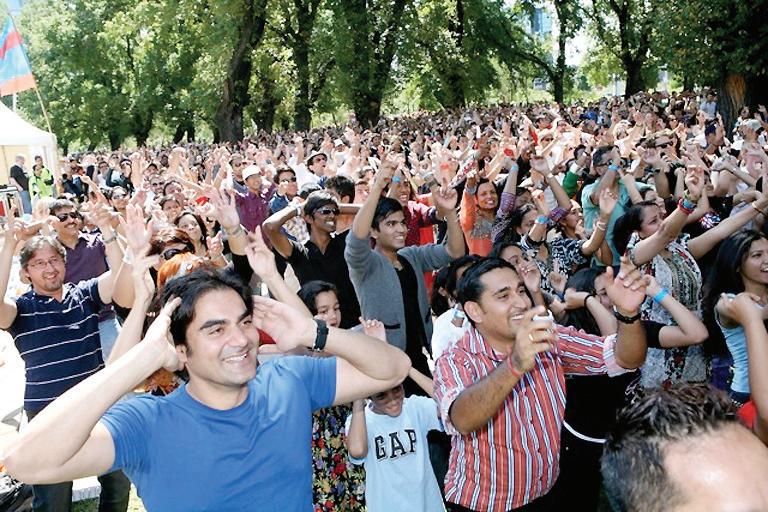
It was an afternoon bathed in glorious sunshine over a long weekend and Melbournians were in the right mood to

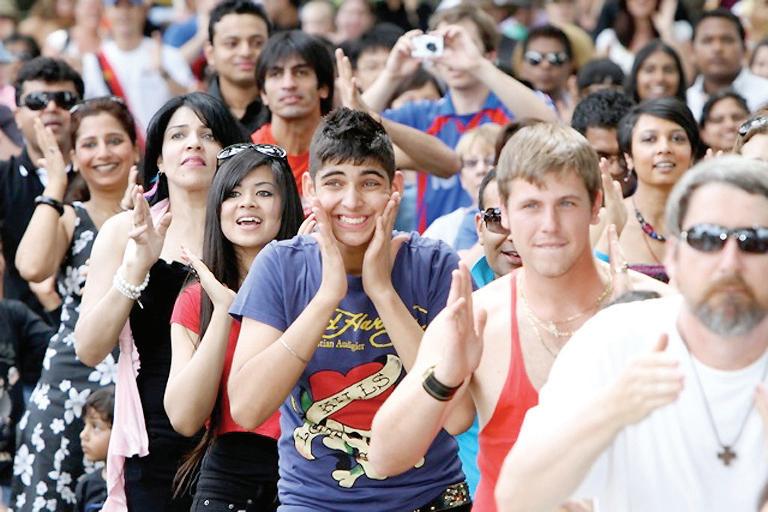
had probably never heard Munni before but no one could go past its infectious beats or not be tempted with the free Bollywood lesson. The Bollywood dance competition that was held prior to this event had already generated enormous interest amongst participants of Moomba festival. They were game to be included in the headcount and dance for 3 continuous minutes to the peppy Bollywood number.
Malaika looked seductive in an ivory dress and her killer heels did not deter her from performing to the racy number that revived her ‘item girl’ career again. Many fans in the crowd would have followed Malaika to the moon and back if required, so their enthusiastic participation was expected. But even more remarkable was the participation of the local visitors to Melbourne Park who hitherto had no exposure to Bollywood. They were people from all walks of life, of all ages and vocations. Their common goal was to be part of record making history.
Prior to the formal attempt the Shiamak Indo Jazz Dance Movement (SIJDM) instructors sorted the crowd into smaller

of the song. While some struggled with the unfamiliar moves, others took to it like duck to water. A few practice sessions later the crowd was ready. The adjudicators from the Guinness Book of World Records were also present. The goal was to beat a similar attempt made in Singapore which had 1080 participants. SIJDM instructors then took to the stage and were joined by Malaika and son Arhaan while Arbaaz chose to dance with the crowd instead.
The excitement was palpable as the Munni song boomed over the audience and everyone attempted to imitate the instructors on stage. It was heartening to see the rows and rows of people joining in to get Australia into the record books. Three minutes of non-stop dancing was a mandatory requirement to be counted and people did not disappoint. The sizzle quotient rose as Munni Malaika Arora fell in step with the instructors. Cheery was an understatement as the crowd positively reveled in the rock concert like atmosphere. As the official from Guinness Book of world records declared later to
records being broken in the last few years but this is the most sensational record I’ve ever seen”.
Festival director Mitu Bhowmick Lange wept with joy and emotion as she thanked the film stars, public, volunteers and festival staff. The celebration continued till later that evening when the film stars attended a gala awards night at BMW Edge in Federation Square. It was an invitation only event where the Shiamak dance group performed again, this time to fully choreographed segments. Dressed in a dazzling cream designer outfit Malaika briefly joined them recreating some of the magic of the afternoon.
Addressing the audience that evening Malaika shared how this whole thing came about. According to her Mitu and she have been friends for many years and when Mitu invited her to Melbourne for the festival together they decided that Munni should Rock Melbourne. And true to her words the combination of Mitu, Munni, Mind- Blowing films, Moomba and Moves from SIJDM, not only created a new record, they generated a whole new crop
INDIAN LINK
SPECIALFEATURE


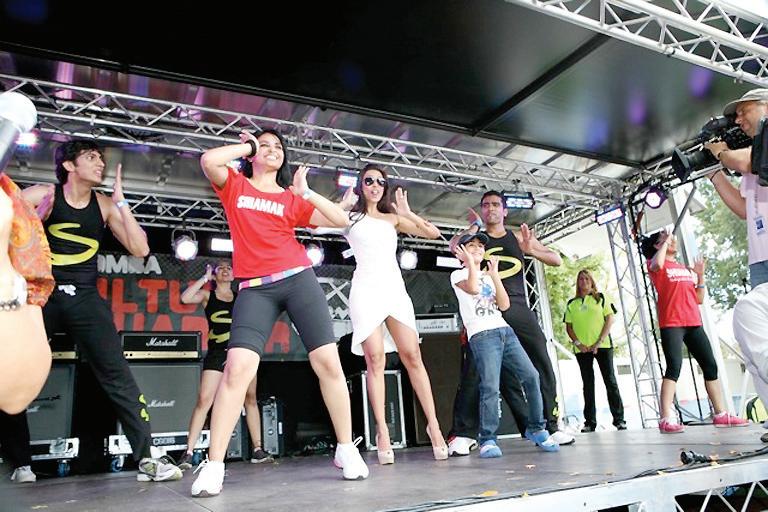
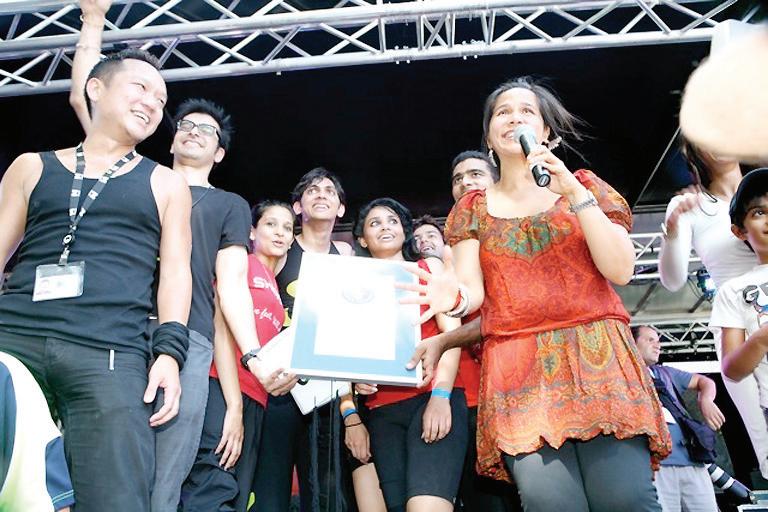
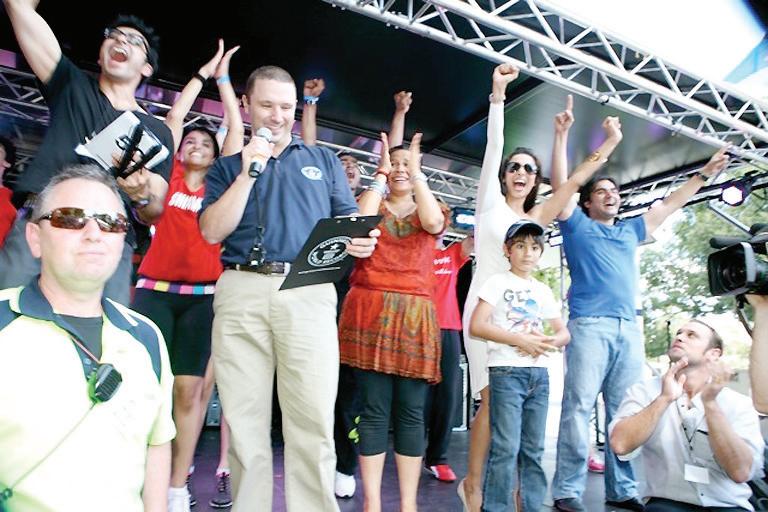
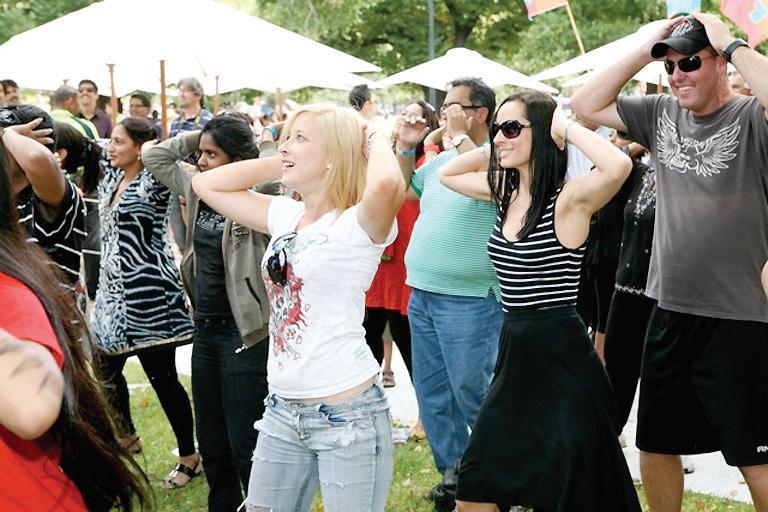

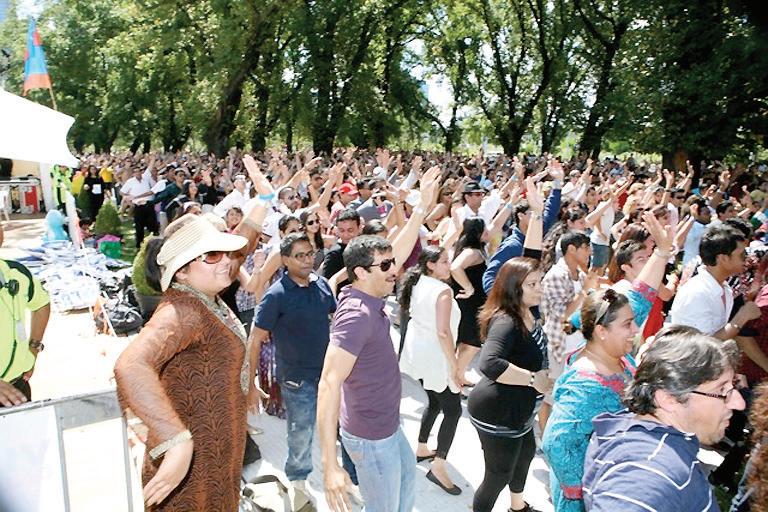




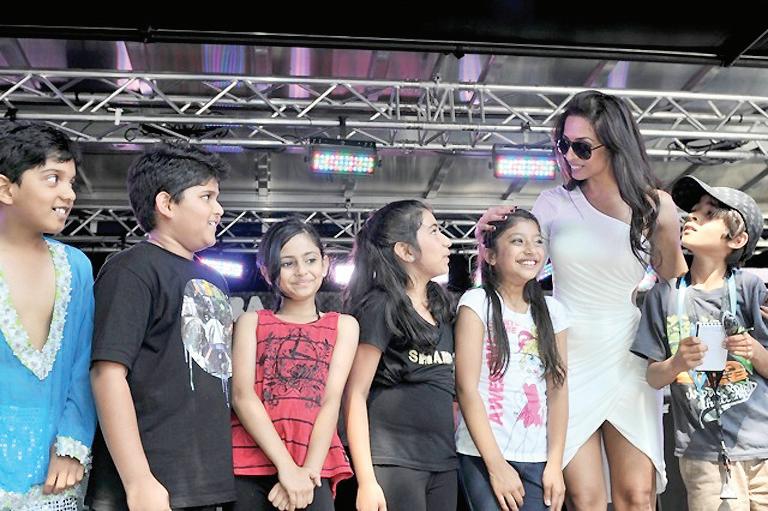 Photos: Ravinder Singh Jabbal; Mind Blowing Films
Photos: Ravinder Singh Jabbal; Mind Blowing Films
Forum reviews the role of women in religion
‘Women’s contribution to the history of faith communities’ is a topic that was discussed recently at the Gurudwara in Blackburn. Many questions regarding women’s engagement with religion and faith emerged in the open discussion hosted jointly by the Sikh Welfare Council of Victoria (SWCV) and the Women Interfaith Network (WIN). The speakers reflected opinions of many women, seeking clarification for themselves and others. The aim was to promote discussion of issues both contemporary and ancient, that deal with this dynamic paradigm.
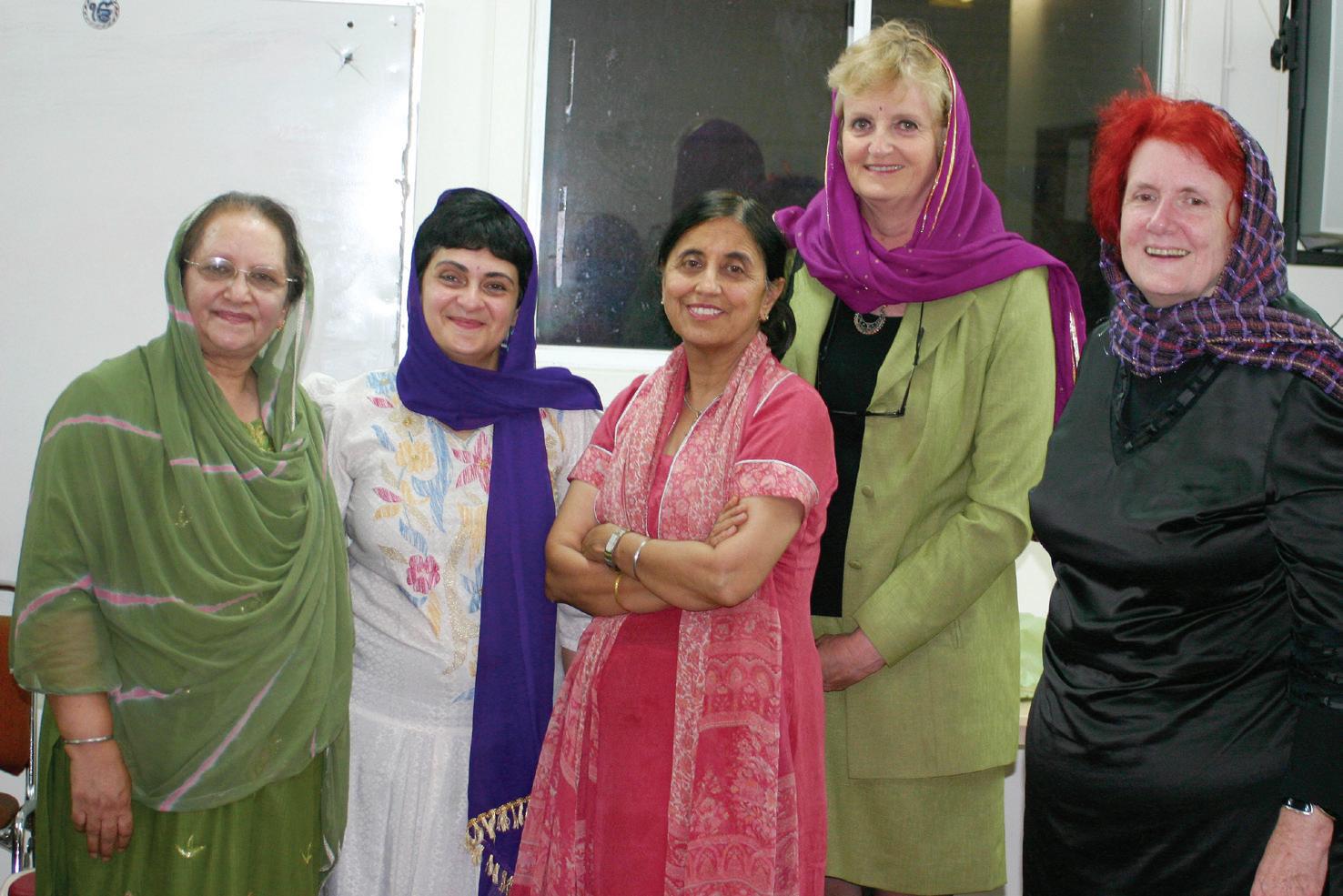
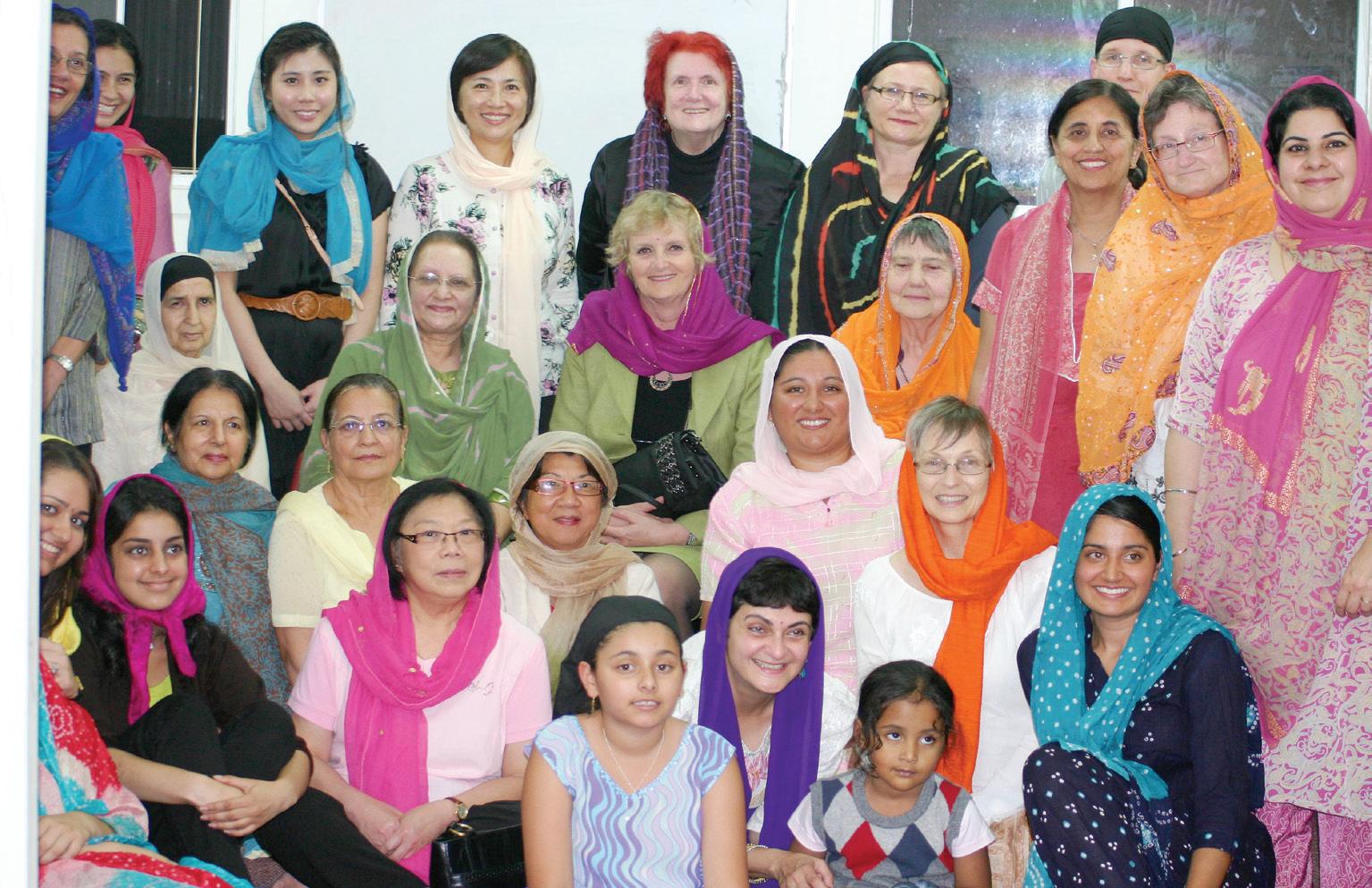
Jamel Kaur from WIN presided over the informal forum along with Mrs. Hardip Madan from SWCV. In her introductory remarks, Jamel explored the role of women in Sikhism. “In Sikhism women have equal status to men,” she said. “Historically Sikh women have never been required to wear a veil or perform sati after the death of their husband. They are not forbidden to attend the congregation at any time including during menstruation,” she continued. According to Jamel, all the Sikh gurus married barring one (who was beheaded at an early age), because Sikhs believe that one does not need to renounce domestic bliss to get closer to God.
According to Jamel, the Sikh religion’s foremost and main premise is that there is one God and the rest of the creation is female. Jamel went on to cite examples of Sikh women like Mata Gujari, Bebe Nanaki, Maata Sahib, Mai Bhago and Maata Jinda Kaur who played a major role in Sikh history. After exploring several chapters within Sikh history and religion that reflected the strength of women, Jamel invited the next speaker Mrs. Jaspreet Kocchar to take the dais. A retired teacher and renowned member of the Sikh community, Mrs. Kocchar drew on the connection between her own life and religion. She spoke about her early days as a new migrant in Australia and the changes that she had experienced over time. “Religion has always been a constant in my life, it provides me comfort, security and peace,” she said. According to her, visiting the Gurudwara and doing langar sewa
inculcates in people a sense of discipline and team work.
Mrs. Kocchar said that modern women are no longer restricting themselves to the kitchen and they have come a long way; however, even today there are very
Women role models continue to inspire
Woman must not accept; she must challenge. She must not be awed by that which has been built up around her; she must reverence that woman in her which struggles for expression.
Margaret Sanger
On March 7, the National Council of Women of Victoria Inc. (NCWV) league of women voters of Victoria organized an event themed “Young People Speak” from the chair of the Legislative Council Victoria. The event, held at Parliament House, was one that definitely made the women of the past proud and inspired the women of tomorrow! In an interactive exchange young women from colleges across Victoria were involved in the presentations, which commemorated women who have served their local communities.
The choice of women were, to my surprise, picked from varied walks of life and ranged from Jessica Mauboy to Susie O’Neill, Elizabeth Kenny to Fiona Wood. I did not expect to see some choices such as Mary Jean Gilmore and Nancy Bird Walton. Samia Ghafari and Samantha Bear spoke on a former principal of Preston Girls’ School named Molly Brennan, who fought for female students in sex-segregated schools to have access to all subjects, and for women teachers to receive the same opportunities as their male colleagues. Next, Kayla Smithers and Fatoum Abou Eid spoke about Joy Wandin Murphy and her contribution to the local Indigenous community and Australians in
few women who reach the top tier of organizations, corporates or professions. She urged women to be inspired by history and utilise the strength of religion to make a rapidly successful journey from kitchen to kingdom.
The next speaker Mrs. Hardip Madan, echoed the sentiments of both Jamel and Mrs. Kocchar. She invited speakers from other communities to share their experiences, especially youngsters in the audience. Issues like the ordaining of female priests and the rights of Muslim women were discussed in a non-confrontational manner. The conversation confirmed that similar to Sikhism, the Buddha taught that men and women have equal potential to achieve enlightenment. The Book of Genesis contains the simple statement of equality of the sexes, made together in God’s image, and Christianity from the earliest times, centered on the universal application of the Gospel. In the Qur’an, God speaks repeatedly of “the faithful men and women”, and the same religious injunctions are valid for both sexes.
Dilnaz Billimoria, a member of the Parsi community expressed her delight at being invited to be a part of this commemoration. She thanked the organizers for a wonderful celebration of International Women’s Day. According to Dilnaz, “The knowledge of the Sikh religion and the roles played by women was amazing, the welcome snacks and langar style meal were delicious, and the darbar congregation ceremony was magnificent.” Dilnaz also said that she found it very inspiring to share experiences across different faiths, cultures and backgrounds and she hoped to continue participating in similar forums with likeminded people.
Women of all faiths are equally keen to uncover the core teaching and original practices of their religions. Through sharing their experiences, the speakers at this forum sought out ethical and egalitarian principles that form an integral part of their respective religions. It was very rewarding to review these proceedings and to have the opportunity of following a group of intelligent, articulate women striving to find a feminine ethos within their various traditions.
general, and her efforts in educating the latter about her Indigenous heritage.
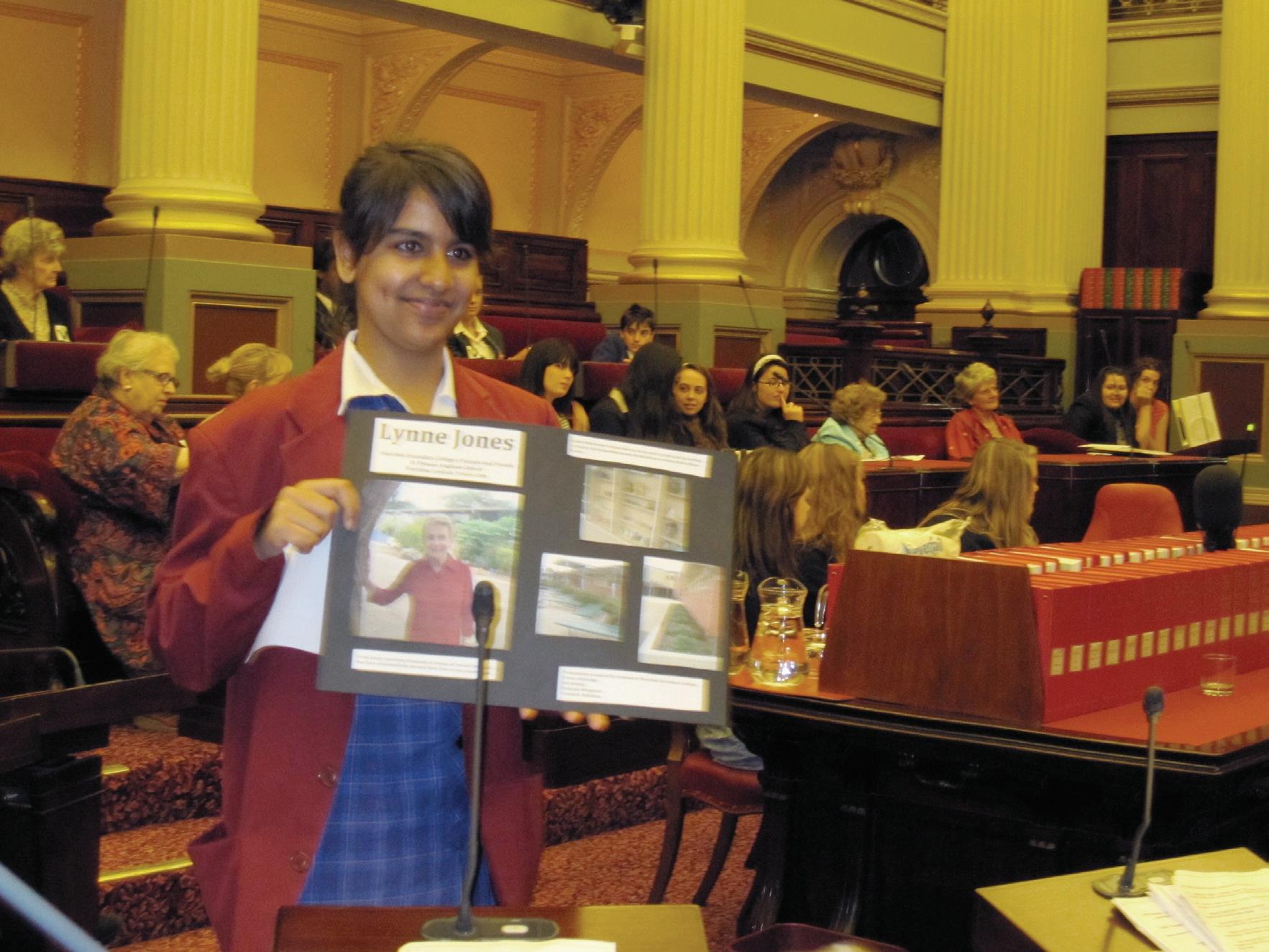
What made me proud was that all these young, confident students, some of Indian origin, demonstrated a clear understanding and relation to these women and their history, without undue concern for their individual environments or cultural backgrounds.
All the students spoke eloquently and confidently, demonstrating that young people can achieve any goal they set, even when speaking before their peers, parliamentary members and powerful women from the Victorian community.
Finally, the students wrote their reflections in the book presented by Elwood Secondary College, to commemorate the day. While this activity was being conducted, Lindita Lerovski powerfully and beautifully sang two songs about what it means to be a ‘woman’. It was an impressive performance and truly appreciated by the audience.
I had walked into the auditorium thinking that this would be a great event to cover, but I walked out with some strong personal takeaways which included reminiscing about the
powerful women in my life, society and community who demonstrate that, no matter what your background, there are obstacles one has to overcome as a woman, but also many opportunities for which to strive and succeed.
As a young woman myself with a fair share of obstacles and challenges, I thank them for representing all women, and hope that as we reflect on their achievements, all my peers will be inspired by them too.
Pinky Bhatia
10 <> APRIL 2011 INDIAN LINK
www.indianlink.com.au WOMEN’S DAY SPECIAL
Preeti Jabbal
Finding a feminine ethos within their various traditions
My hero Lynne Jones
Domestic violence key issue at centenary celebrations
BY PREETI JABBAL

Around this time of the year in 2009, the entire playing group of the North Melbourne Football Club (NMFC) stood together as they made a public apology for a prank sex video that triggered community outrage. The Adventures Of Little Boris was an explicit video that had been produced within the North Melbourne Football Club, which featured a rubber chicken depicting degrading sex acts filmed in the rooms of the North Melbourne Football Club and posted online by one of the side’s young footballers. The community was divided in opinion; however there were many that thought the video’s underlying message of how to treat ‘your bitch’ was offensive to women.
This year at the AISV multi-ethnic Women’s Day event that targeted domestic violence, the NFMC CEO Eugene Arocca began his speech by alluding to the infamous video and subsequent apology. “We apologised collectively at that time not just to condemn the video, but also for choosing not to do anything about it,” he said. “We believe doing nothing is just as bad as being a perpetrator of domestic violence,” he added. According to Eugene, the NFMC is now leading the way for women to feel safe and respected. He claimed that NMFC prides itself in being an inclusive club and is the only football club to have a junior women’s Footy Academy.
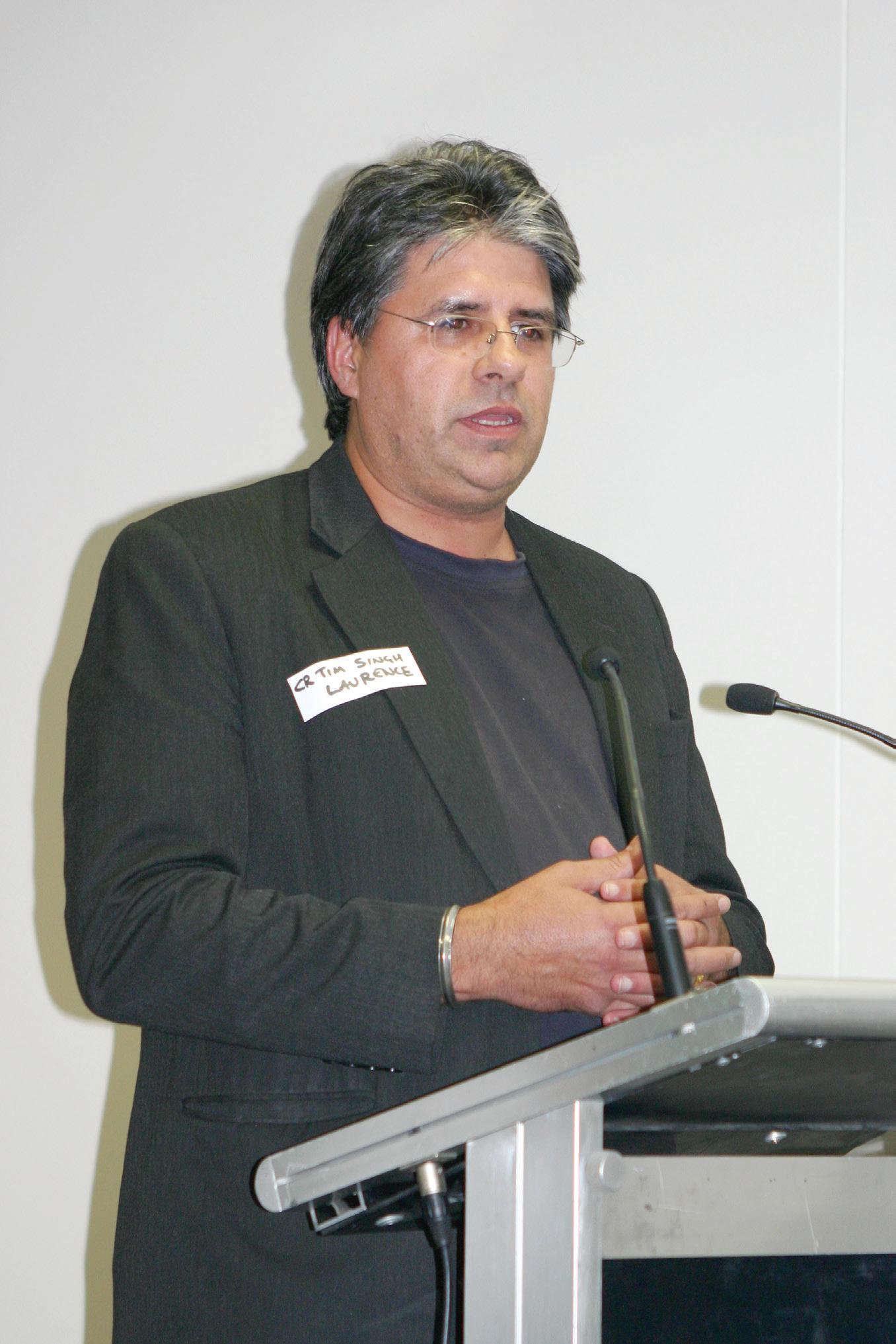
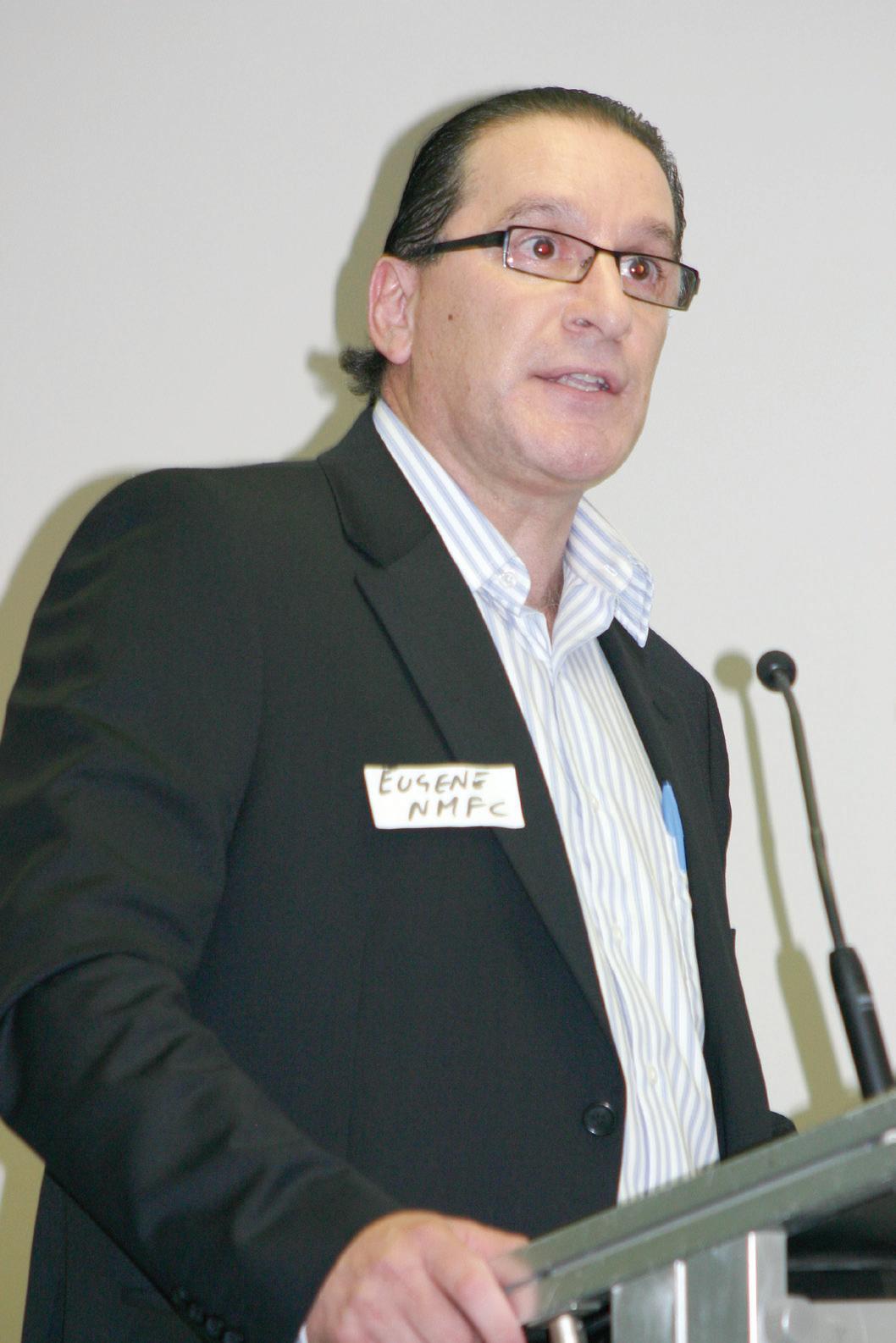
The Australian Indian Society of Victoria (AISV) hosted Eugene Arocca and several other renowned speakers at the new Indian Consulate in St. Kilda to celebrate the 100th International Women’s Day. Dr Manjula
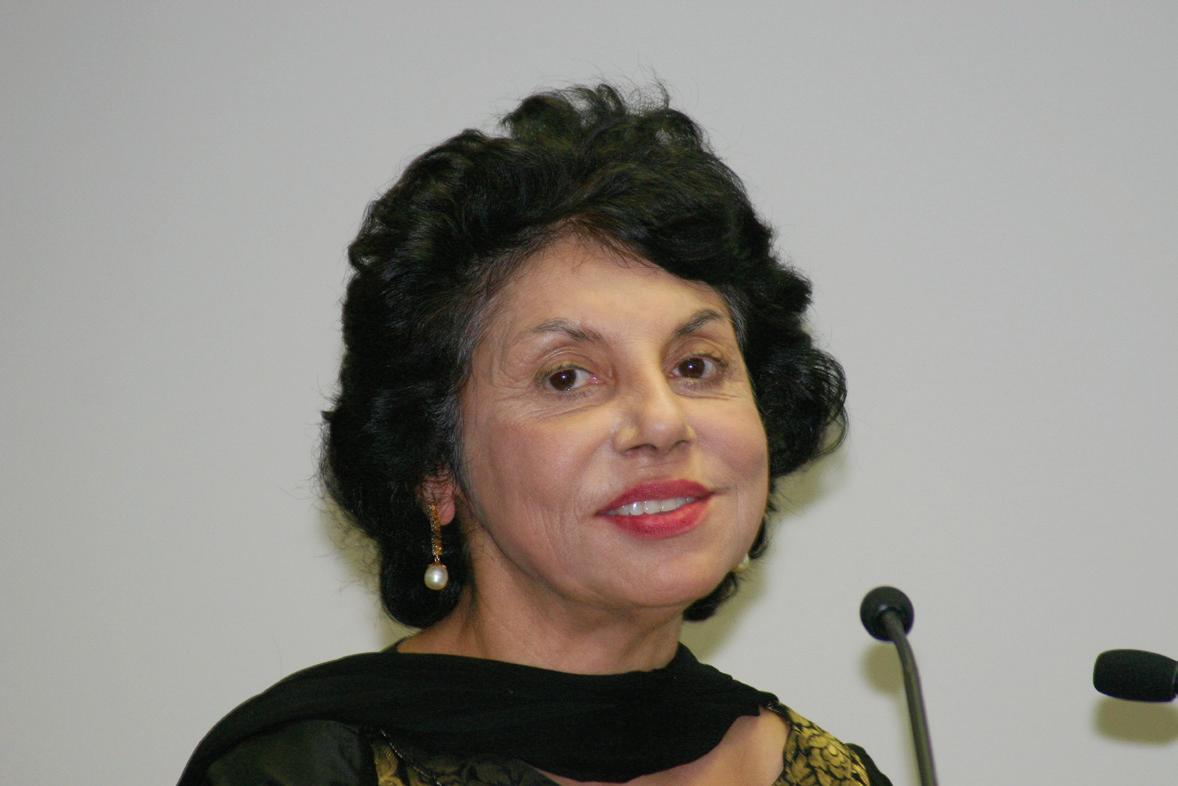
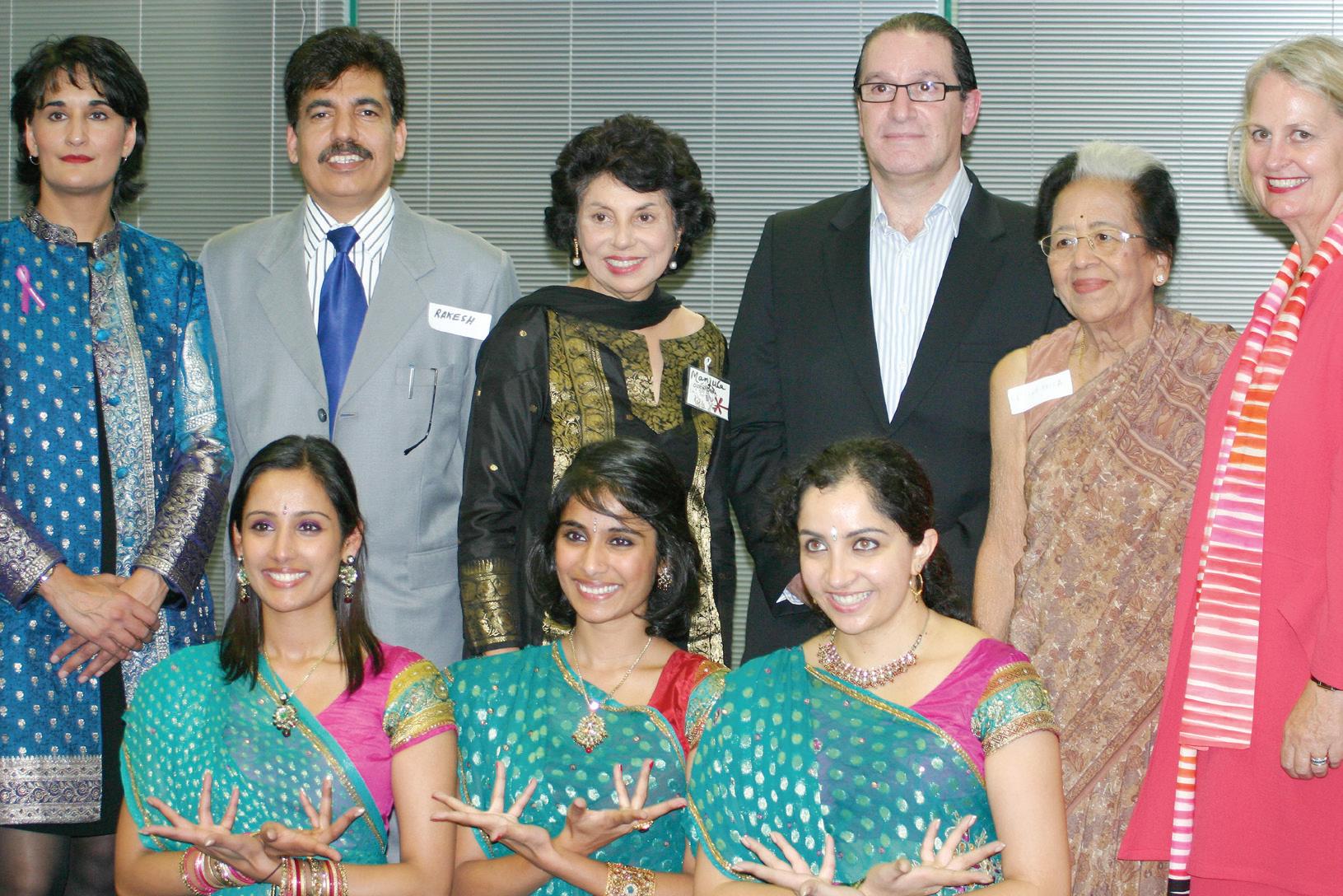
O’Connor, Vice President of AISV who has conducted a study on domestic violence within the Indian community in Melbourne, was mainly instrumental in organizing this event under the banner of AISV’s taskforce against domestic violence. The MC for the afternoon was Sushi Das, senior writer at Age . “There are a lot of women making the most of their lives,” commented Sushi at the beginning of the event. “Our greatest collective achievement as women is that we bear all the world’s children.” Sushi’s introduction was followed by a brief speech by
Anita Nayar, outgoing Consul of India in Melbourne. A Bollywood dance medley by Ayesha Tiwari and a brief comedy piece by Uma Thakar lightened up the mood of an otherwise serious event.
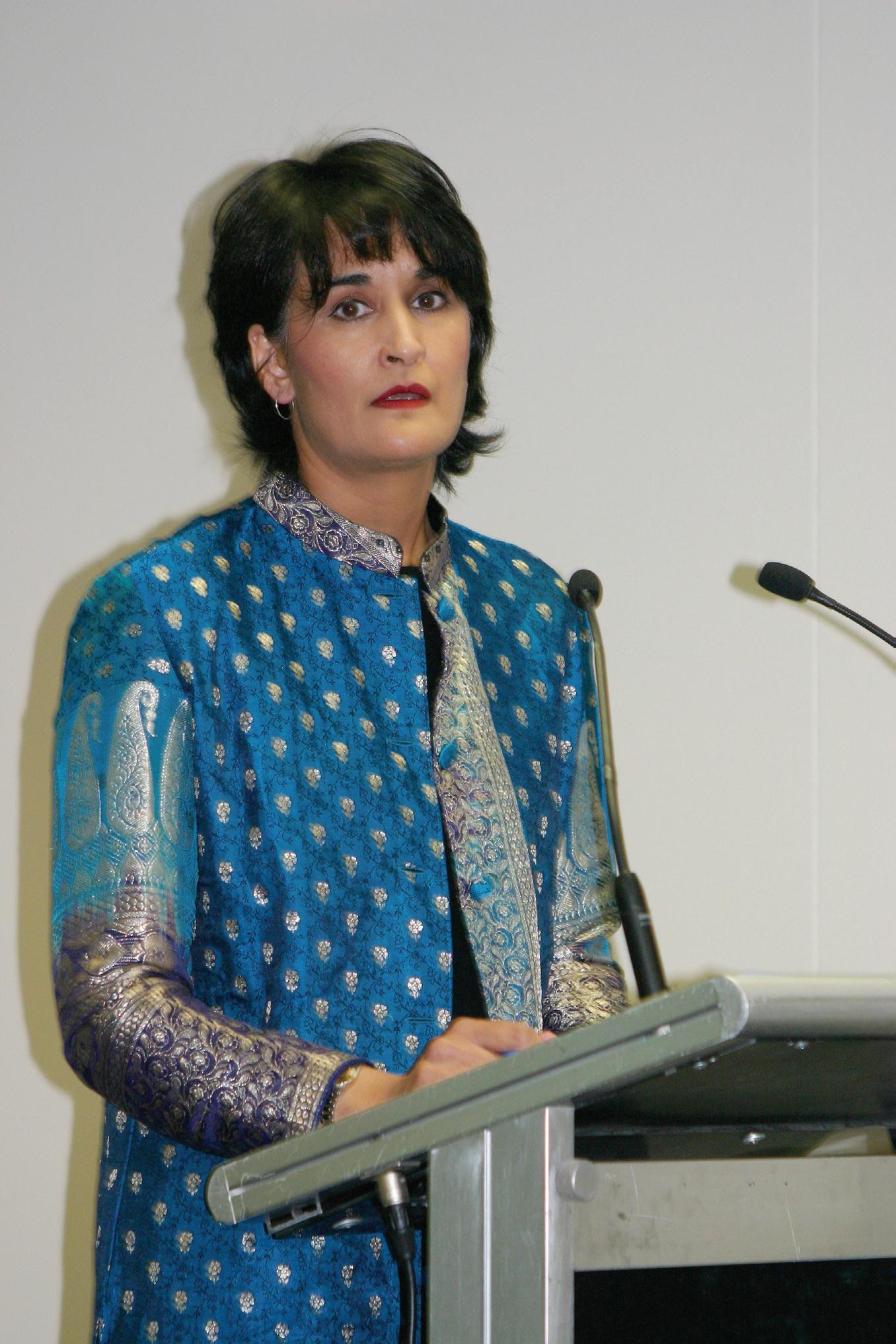
The theme for the afternoon was ‘men and women united to end violence against women and girls’. The audience also heard the views of Andrea Coote, Parliamentary Secretary for Family and Community Services representing Mary Woolridge, Minister for Women’s Affairs, with Premier Ted Baillieu and Magistrate Noreen Toohey from the Sunshine Magistrates Court. The speakers stressed on how domestic violence is still the Achilles heel of our modern society and called for community support to offer time and sensitivity that is required to combat this issue.
“Let us not be violent and more importantly, let us not be silent!” said Councilor Tim Singh Lawrence from Darebin Council.
“It’s important that the people also hear the voice of men, especially within ethnic communities. The White Ribbon Movement is predominantly Anglo- Saxon,” he claimed, referring to an earlier statement made by Eugene Arocca about the White Ribbon ambassadors who are willing to stand up against domestic violence. According to Tim, rejecting silence against domestic violence needs to be discussed, endorsed and adopted by more people from the ethnic community.
Earlier Magistrate Noreen Toohey talked about how domestic violence cases cost the nation a whopping $13.6 billion last year. Cultural practices are often cited as an excuse for domestic violence in many cases, she said, however according to her families are broken not just by divorce and separation; they are also broken if all members do not have equal rights to safety. Andrea Coote, Member for Southern Metropolitan Region also referred to the additional barriers faced by women from CALD (culturally and linguistically diverse) backgrounds. According to her, an effective domestic violence programme works at preventing violence before it occurs. She commended AISV for doing a good job of looking not just at the celebrations of the past, but the challenges of
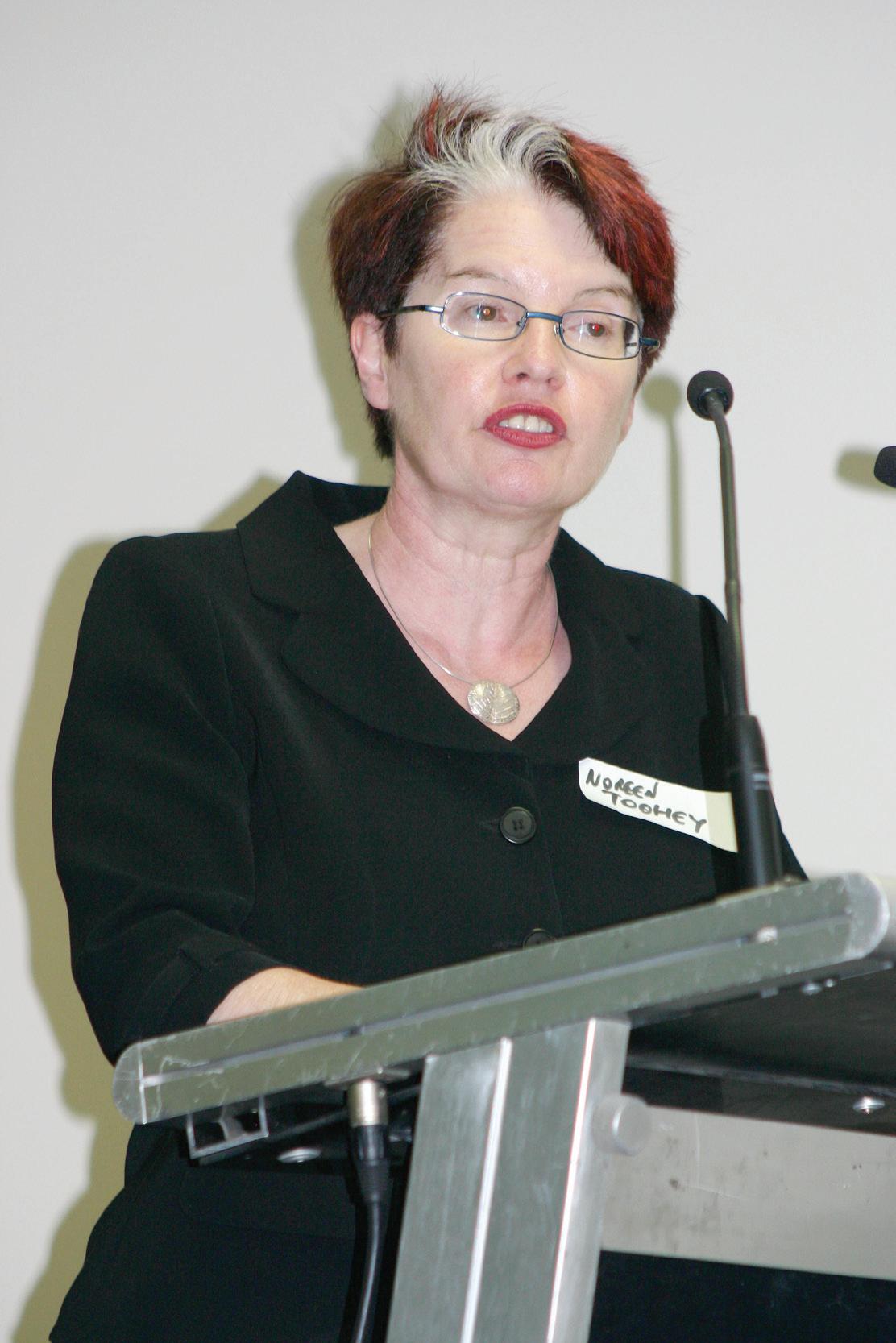
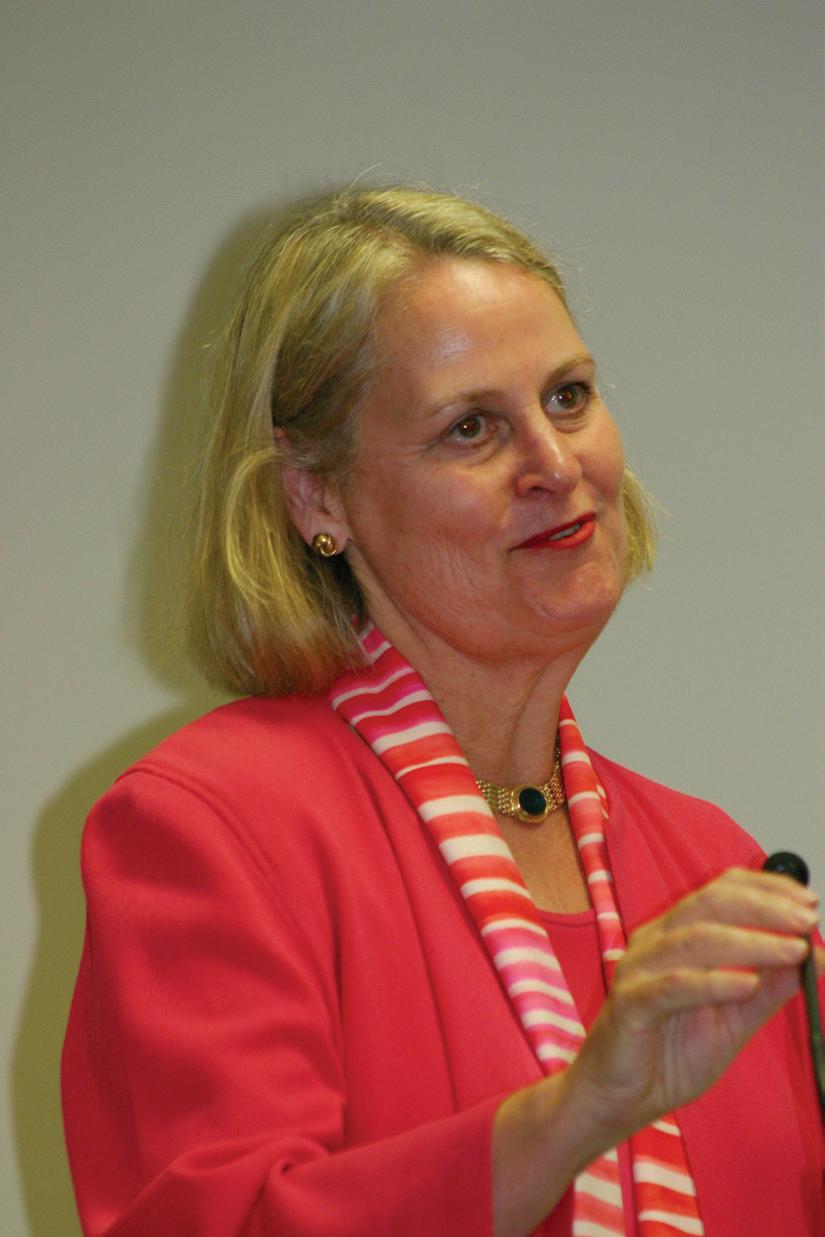
APRIL 2011 <> 11 INDIAN LINK
www.indianlink.com.au WOMEN’S DAY SPECIAL
Attendees at the celebration
Sushi Das
Andrea Coote
Magistrate Noreen Toohey
Dr Manjula O’Connor Tim Singh Lawrence
Eugene Arocca
Dream run at Film Festival
The second annual Indian Film Fest Bollywood and Beyond brought the best of India’s film industry to Australia
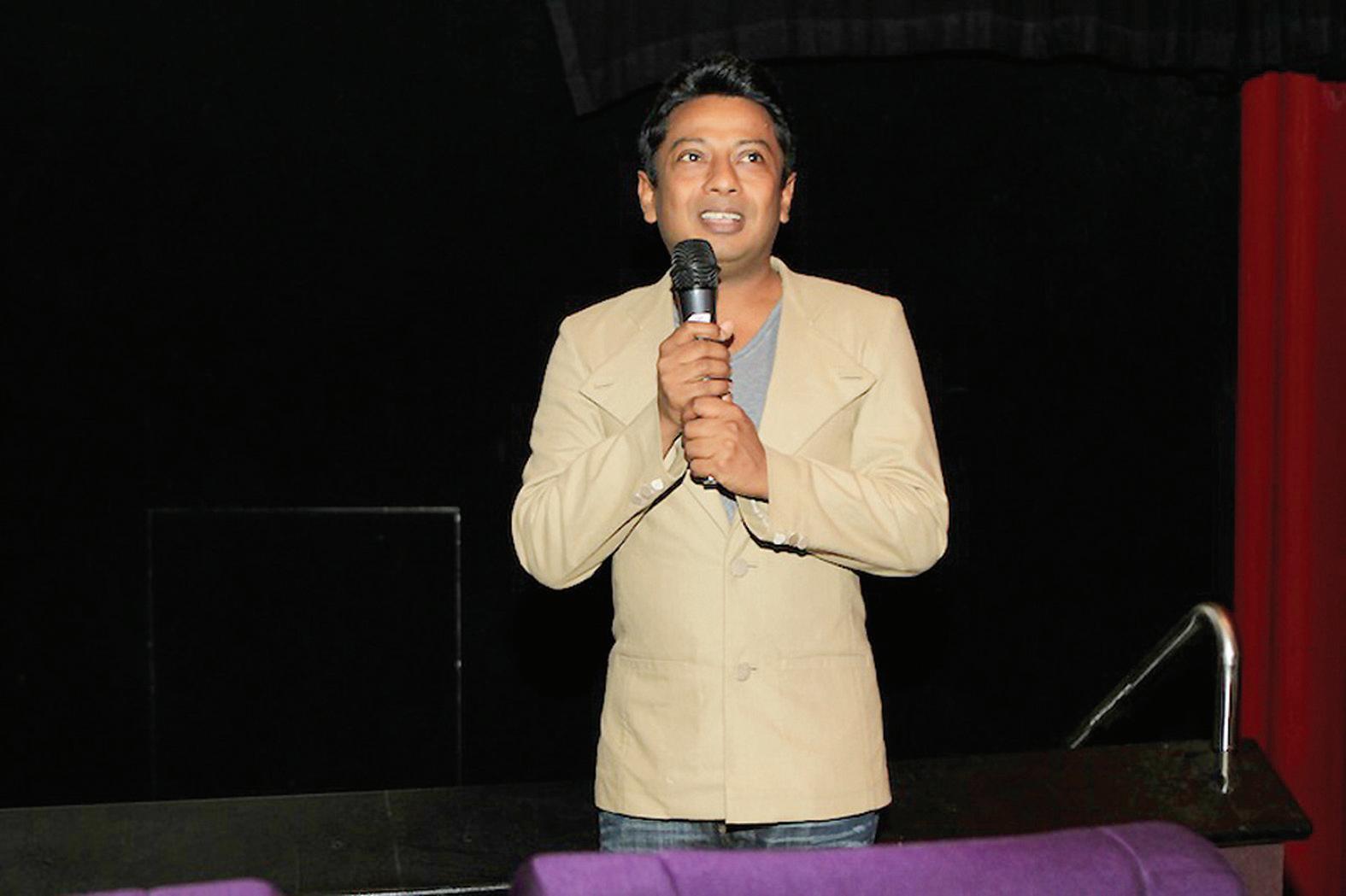
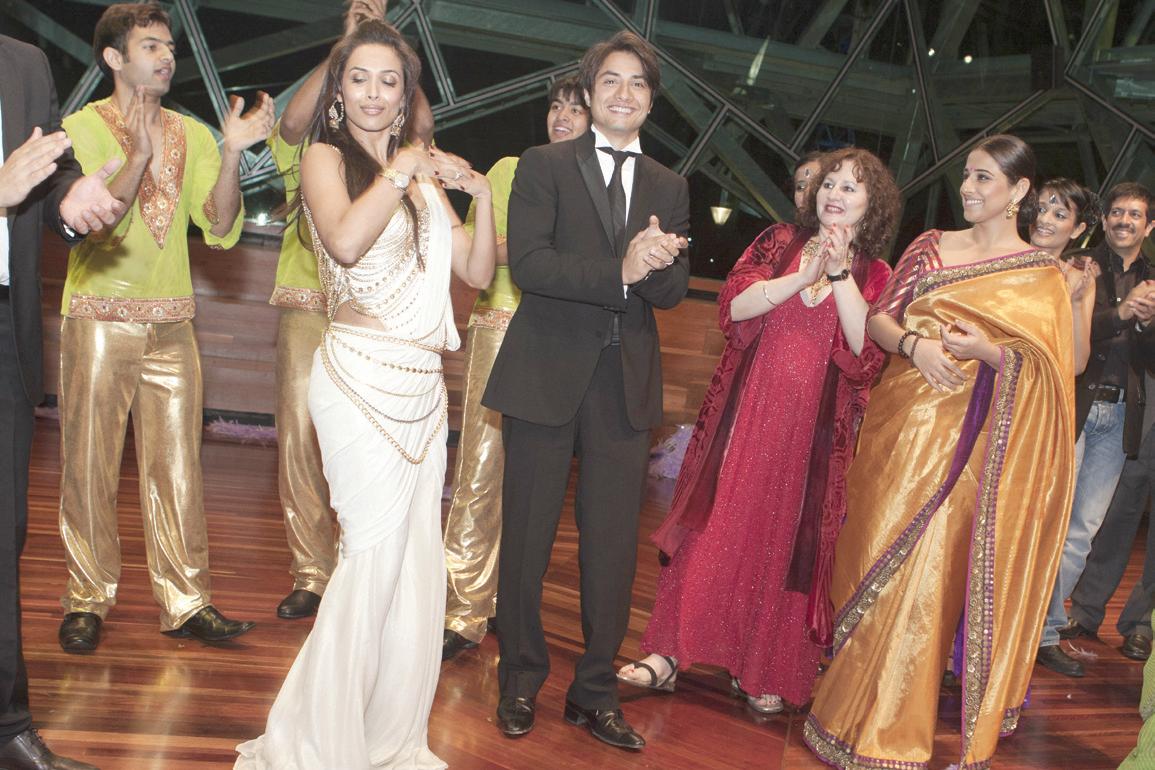 BY PREETI JABBAL
BY PREETI JABBAL
In a nation of billion fantasies there is a star born every minute. In the month of March some of these stars descended among the locals here in Australia and sent a thousand dreams into orbit. The result - a Guinness World Record for the biggest Bollywood dance class ever, a fresh crop of aspiring film makers, and some extremely delighted fans.
The credit for this Bollywood-inspired coup goes to many; however, it was mainly due to the collective efforts of the resourceful team from Mind Blowing Films that Munni rocked Melbourne, Vidya charmed her already smitten fans
and Juhi dazzled with her million wattage smile and talent.
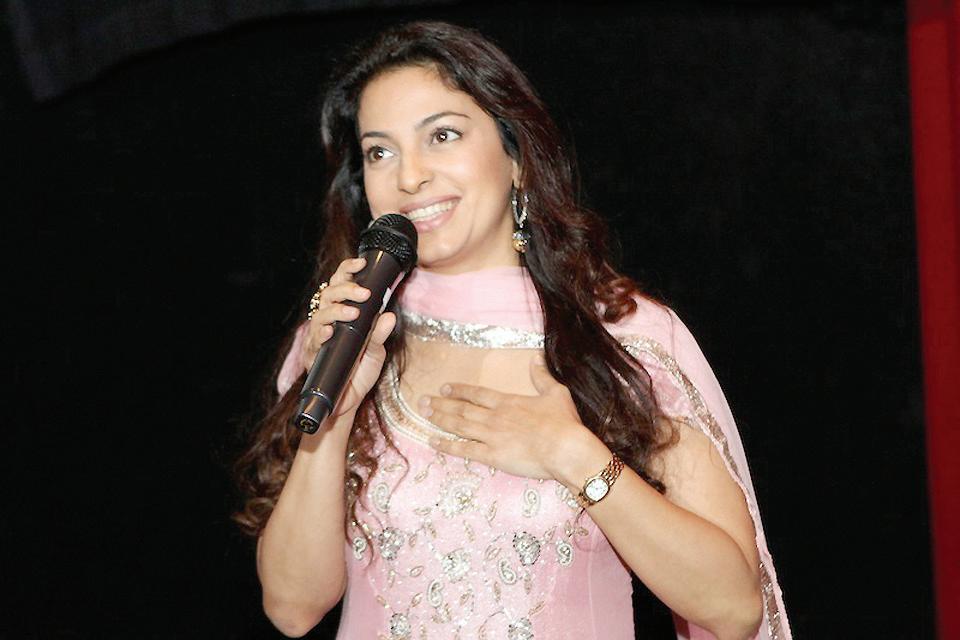
The Indian Film Festival 2011 that was held recently in Sydney, Melbourne, Adelaide and Auckland gave the local viewers here a sizeable chunk of the vibrant Indian film industry and was aptly titled ‘Bollywood and Beyond’. People got a taste of sugar, spice and all things nice with the presence of best actress Vidya Balan, super sizzler Malaika Arora Khan and the chirpy Juhi Chawla. Adding flavour to the tangy tinselville mix were the other festival guests: actor producer Arbaaz Khan of Dabangg fame, prince of pop Ali Zafar from Pakistan, director Raj Kumar Gupta who made No One killed Jessica , Kabir Khan maker of Kabul Express and director Onirban Dhar originally from Bangladesh. Leslee Udwin director of West is West (sequel to East is East ) from
UK provided the international input. Other films screened included the best from recent times, Tere Bin Laden, Lage Raho Munnabhai, Aisha, I Hate Luv Storyes, Tees Maar Khan, Mee Sindhutai Sapkal and the intriguing new film I Am Festival highlights included the opening night Question and Answers session with the stars, a short film competition, a Bollywood dance competition and gala awards night for the short film winners.
The most remarkable feat this year was the successful entry into the Guinness Book of World Records co-presented with the Moomba Festival. The instructors of Shiamak Indo Jazz Dance Movement along with Malaika Arora Khan of ‘Munni’ fame danced their way into the records with a following of 1235 dancers. They beat a similar attempt that was made in Singapore earlier where 1008 people
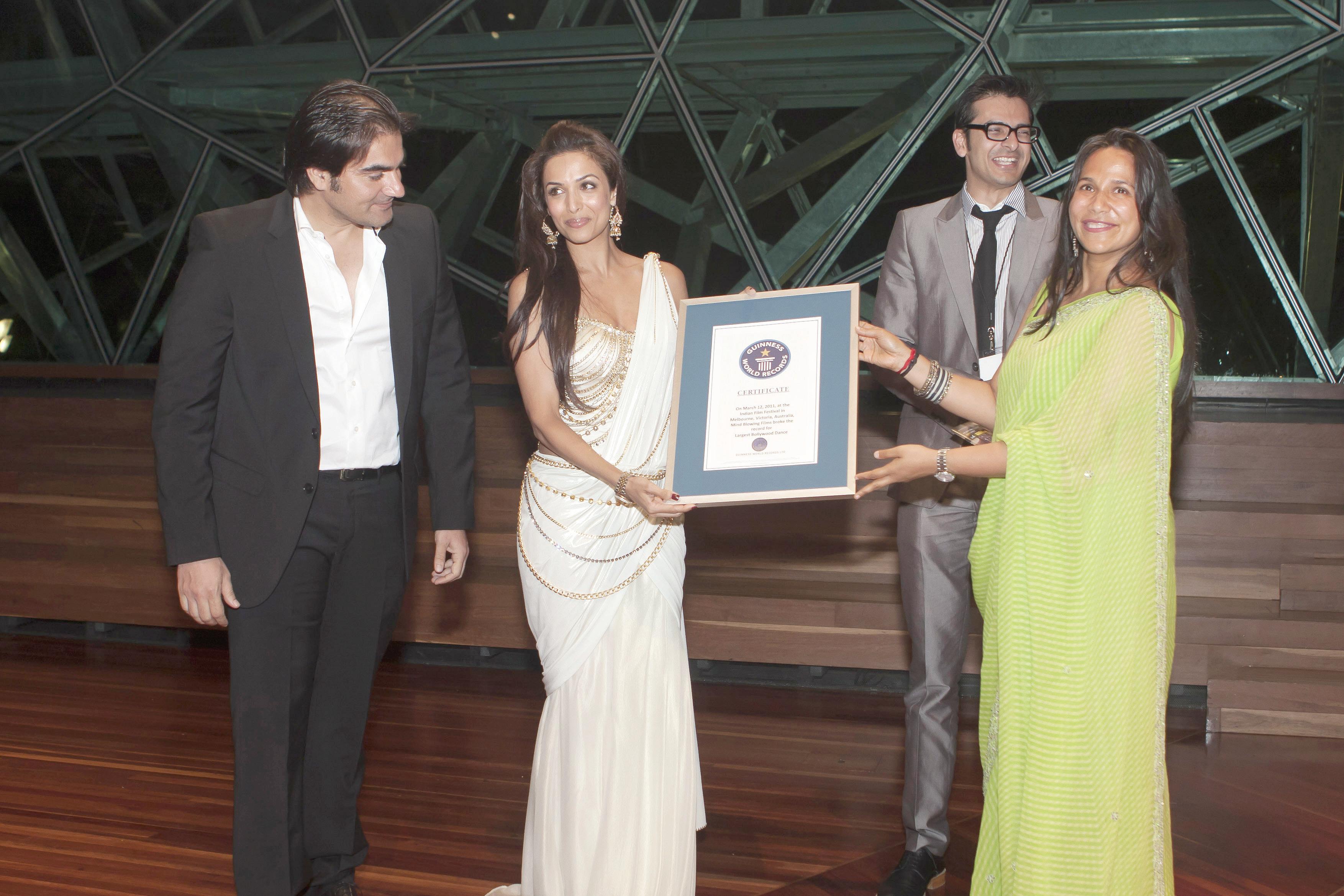
danced publicly to a song. The Melbourne attempt was made on the super hit song Munni Badnaam Hui . And a quote from Arbaaz Khan summed it all up nicely “Only Munni is badnam (infamous) but all of you got a lot of naam (fame),” he said when the adjudicator from the Guinness Book of Records announced the success of the attempt. (More on pages 14-15).
An emotional festival director Mitu Bhowmick Lange cried tears of joy as she thanked all the participants profusely.
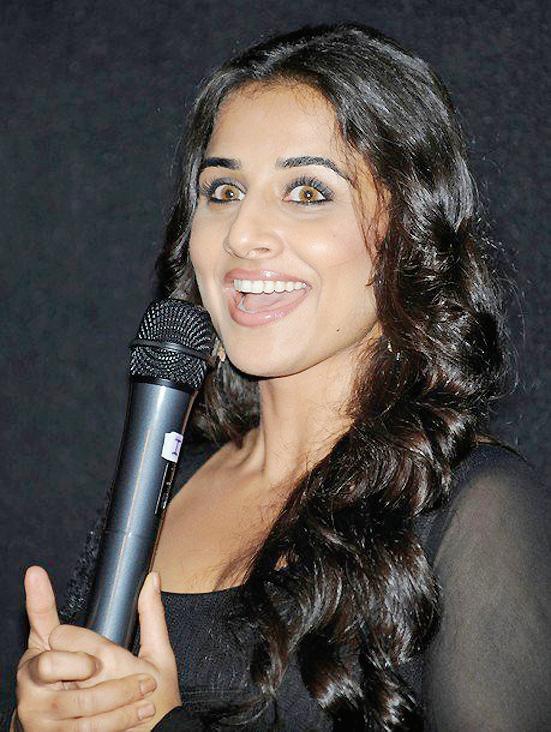
Just as the Sydney and Melbourne segments of the festival concluded, Mitu told Indian Link , “At the half-way point of the entire festival, I’m already feeling like this has been one of the most rewarding experiences of my life. The Munni record particularly, will remain close to my heart for a very long time. It was an indescribable feeling – to see the

FILMFESTIVAL
Malaika Arora Khan, seen here with Festival Director Mitu Bhowmick-Lange, with the Guinness world record established in Melbourne as part of the Indian Film Festival
Malaika, Onir, Juhi and Vidya introduce their films
Photos: Ravinder Singh Jabbal; Mind Blowing Films
hundreds of people from all walks of life, dancing as one. No achievement can top that feeling!”
This is the second Film Festival that is being held with Mitu at the helm and despite her self-confessed sleep deprivation and exhausting schedule she came up trumps again with another successful event. At the gala Awards Night held later that evening in Federation Square, all the speakers and sponsors remarked on Mitu’s tireless efforts and initiative during the festival. The event was supported by Western Union, Lebara Mobile, Singapore Airlines, Latrobe University, Blue Sydney, City of
Melbourne, SBS and Indian Link
With over 30 films that included 15 Australian premieres, the festival incorporated a broad range of films from Bollywood and other regions. In all the razzmatazz of mainstream Indian cinema some art house and regional cinemas were also presented.
The Western Union Short Film competition attracted hundreds of entries from across the globe. The theme of dreams was explored and portrayed beautifully by the winners. They endorsed the view that our dreams reflect our heart’s innermost desires. Whether they are our conscious ambitions or the raw
aspirations of our subconscious, they are what drive, motivate and push us to strive for the extraordinary. And extraordinary it was, judging from the winning entries that were screened at the gala awards night.
Mumbaikar Ganesh by Indian director Collin D’Cunha, Khaatbah by international category winner Ridwan Hassim and Blank Spaces from New Zaland’s Rajneel Singh were equally delightful to watch.
Melbournian Varun Sharma’s Adjust , which tells the story of an Indian student realizing his Australian dream, received an Honorary Mention.
As the festival ended, we got back to real life after all that exposure to reel life.
In today’s age of anytime entertainment, the defining lines between what is real and reel are sometimes blurred. Reality TV, 24/7 news, endless promos, music videos every one of them fuel aspirations, create avenues for dreams but nothing beats the magic of India’s tinsel-town. Nothing comes close to the adulation that meets Indian movie super stars, and those critics who wrote off the influence of our homily laden, often melodramatic, glittery Indian cinema are now forced to rethink their statements. Thanks to festivals like this, Bollywood is here to stay today and forever beyond.
When the stars had stars in their eyes
By all accounts, the stars had as good a time as their fans. At a welcome drink organsied for the visiting stars by Robert Doyle, Lord Mayor of Melbourne, Vidya took a fancy to his mayoral robes and decorations. When the suggestion came along that she could try them on, she gamely agreed, the gold matching her black outfit beautifully and bringing an added glint to her eye.
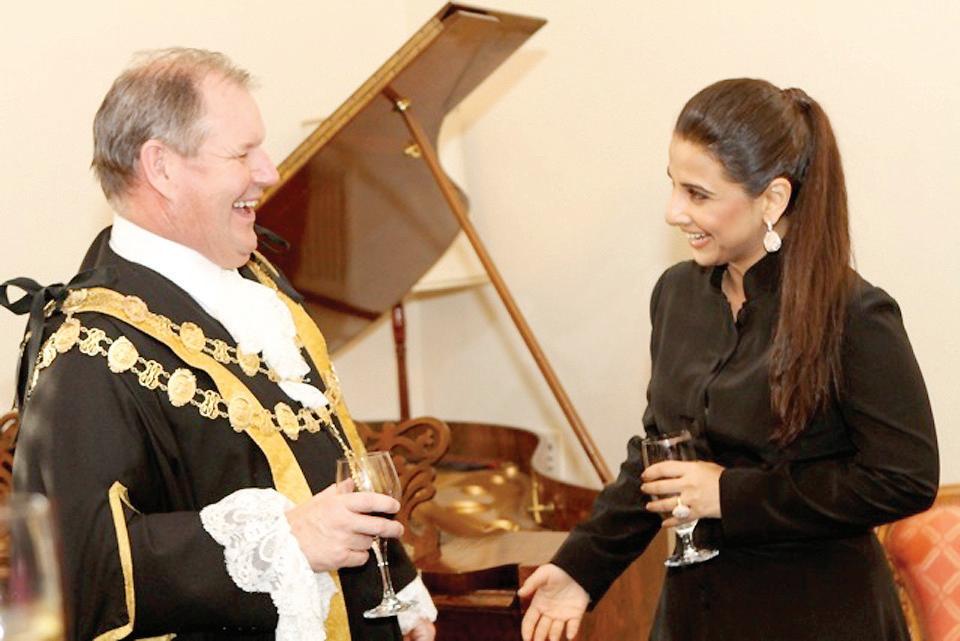
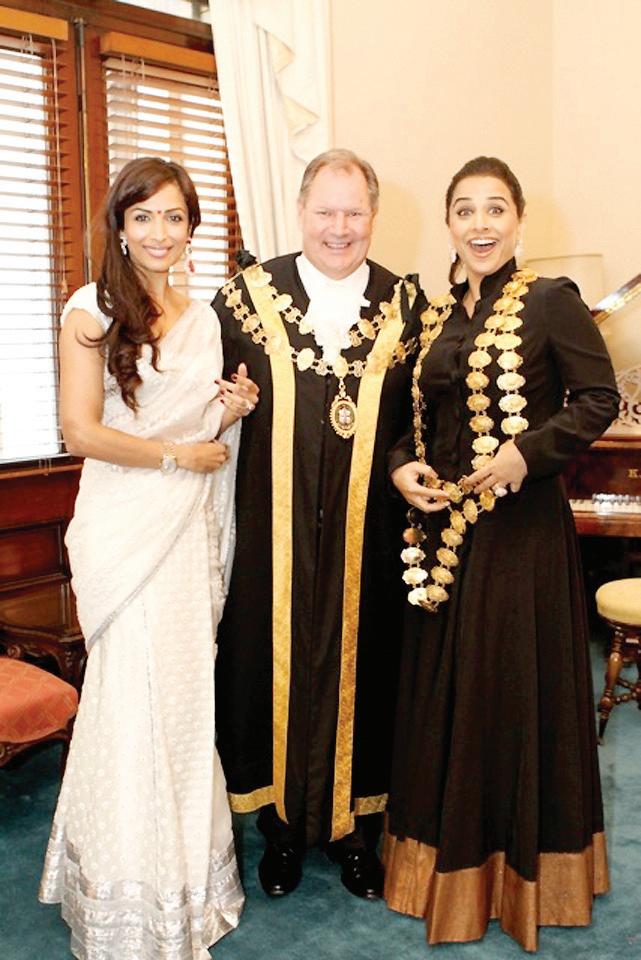
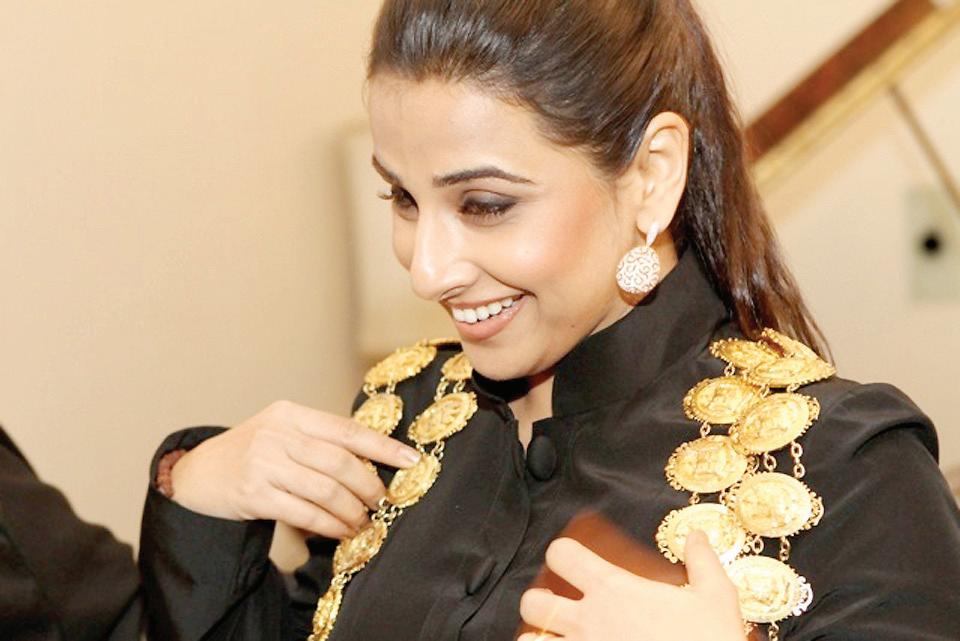
(Yet strangely, other than this meeting, no other representative of the Victoria government made any appearances at the many Festival events in Melbourne).
And which Indian doesn’t love the Melbourne Cricket Ground? Visiting the MCG or the SCG is like a pilgrimage to a temple, most Indian tourists will tell you - even if they are adored stars themselves!
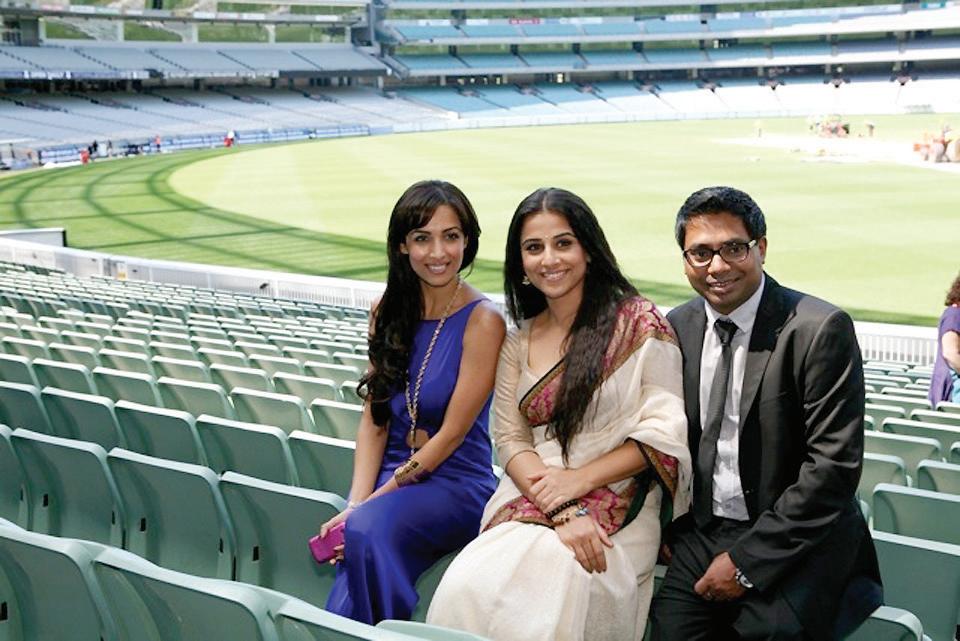
Tourism Victoria organsied such a ‘pilgrimage’ for the Bollywood gang, and the cameras went wild as the two beauties Vidya and Malaika posed serenely on the green and in the stalls.
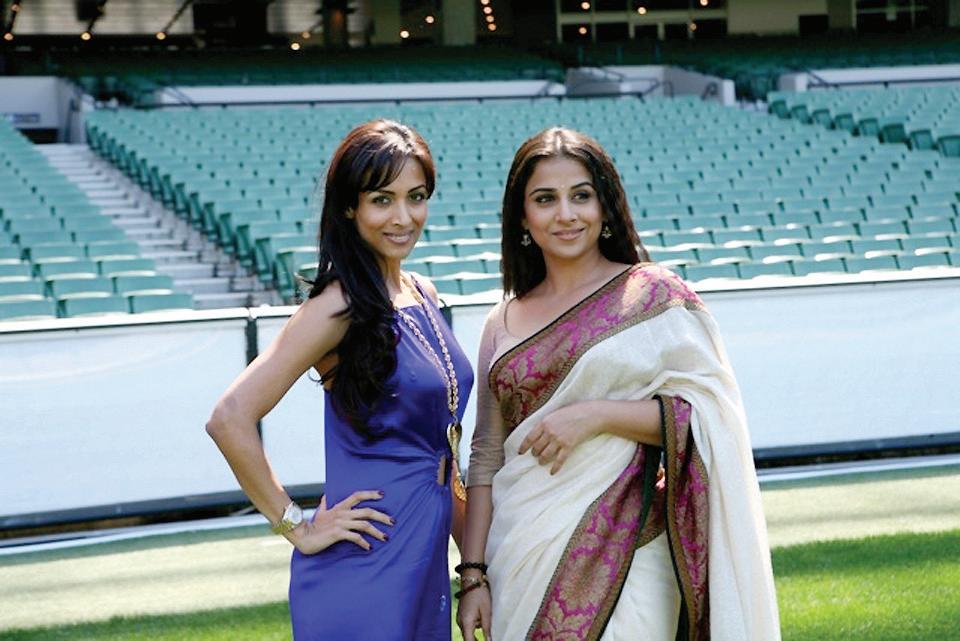
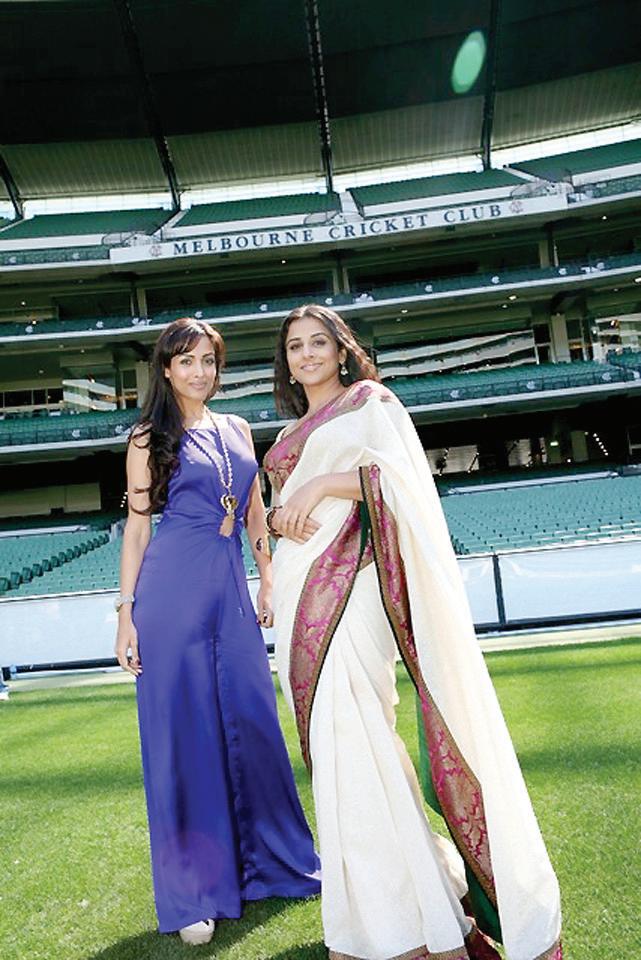
And which Aussie celebrities did they ask to meet while in Oz? Matt Preston, no less. Yes, the cravat-wearing foodie, who is riding the waves of popularity in India these days. His Masterchef Australia is the most watched English show on Indian TV, and both Vidya and Rajkumar Gupta are fans. At a private dinner, Vidya (an avid foodie herself) and Raj talked at length with Preston about cooking techniques and food styles… and hopefully for us, possible collaborations!
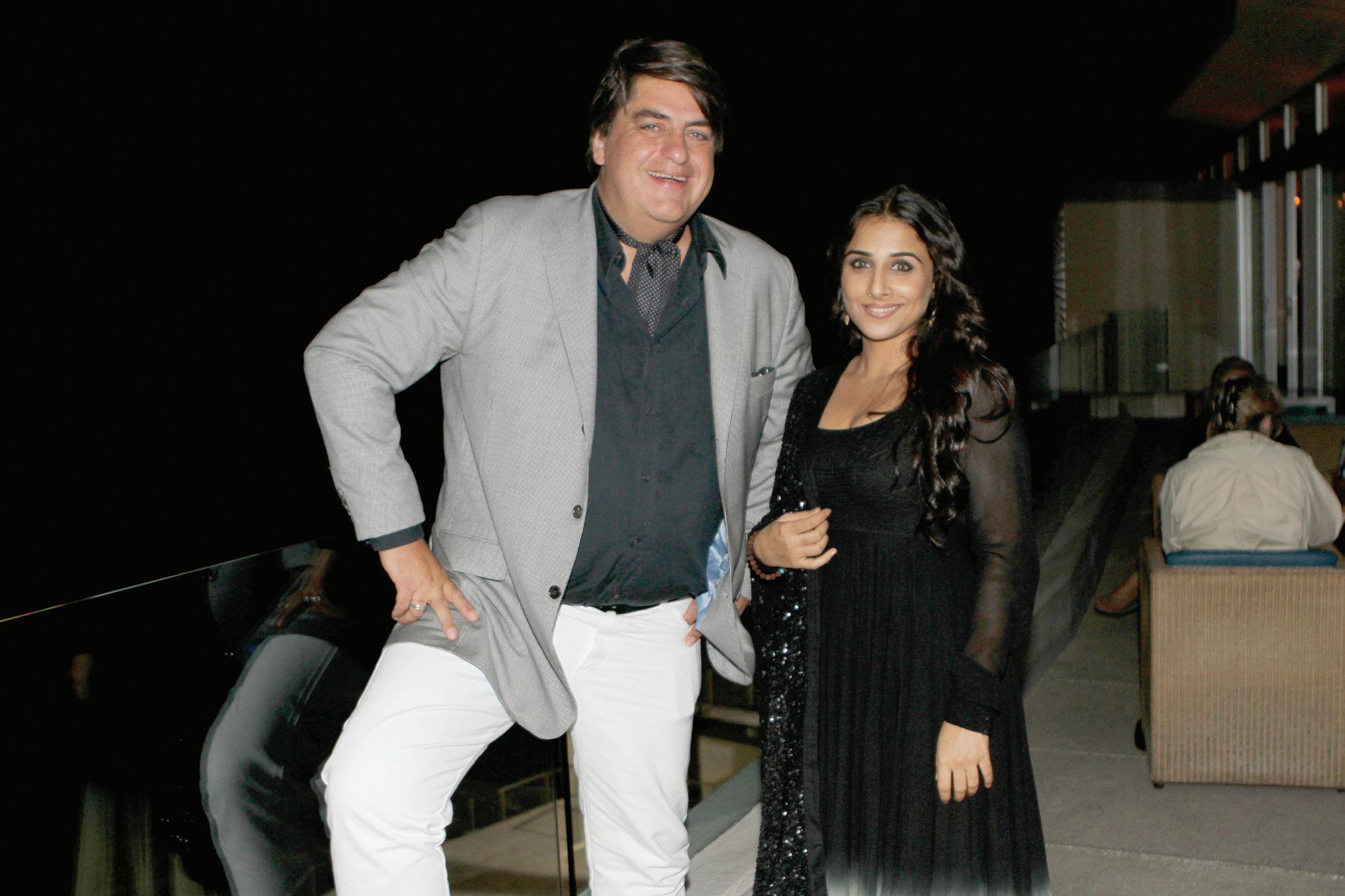
APRIL 2011 <> 13 INDIAN LINK www.indianlink.com.au
A private tour of the MCG for Malaika, Vidya and director Rajkumar Gupta
Melbourne Lord Mayor Robert Doyle hosts the visiting stars
Vidya meets her favourite TV star
A vision beyond Oz
A group of Sydney doctors take their skills to the downtrodden in India
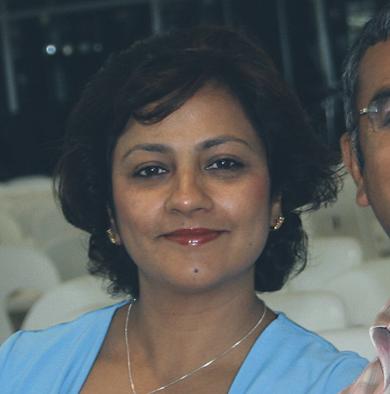 BY RAJNI ANAND LUTHRA
BY RAJNI ANAND LUTHRA
They describe their annual trip to India as “one of the most rewarding experiences” of the year.
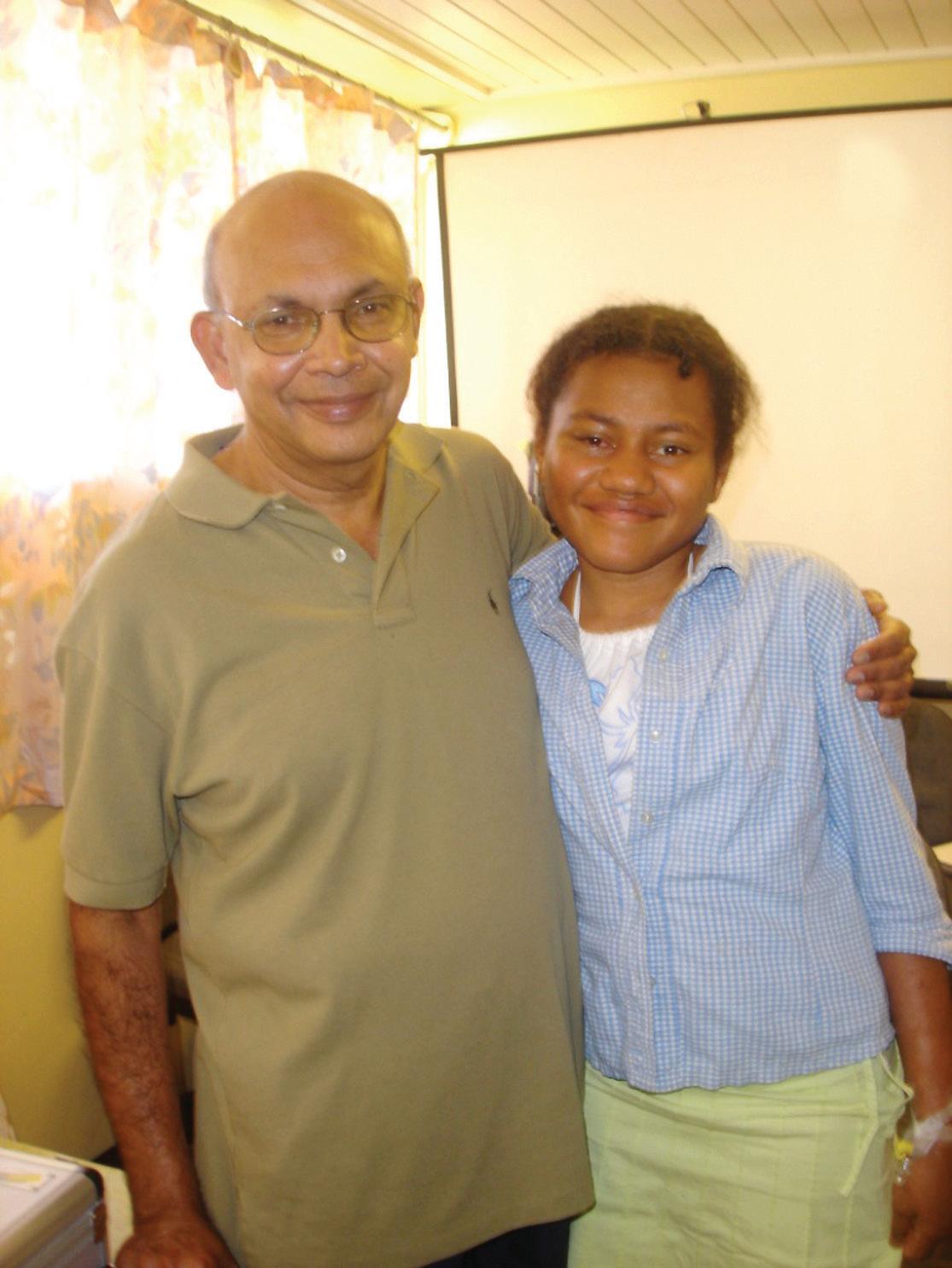
For one group of Sydney-based doctors, the India trip is not exactly a holiday, though. They travel to rural regions to perform cataract surgeries for some very poor people.
The organisation Vision Beyond Oz, set up by Dr Shailaja Chaturvedi and associates in 2002, has been doing sterling work in Uttaranchal, UP and MP states in India.
“There are over 2 million people blinded by cataracts in India and each year an additional 400,000 become blind due to cataract,” Dr Chaturvedi told Indian Link . “The cataract operation is one of the most cost-effective forms of health interventions. Nearly half a million cataract operations are performed in India annually, but this barely covers the urban population”.

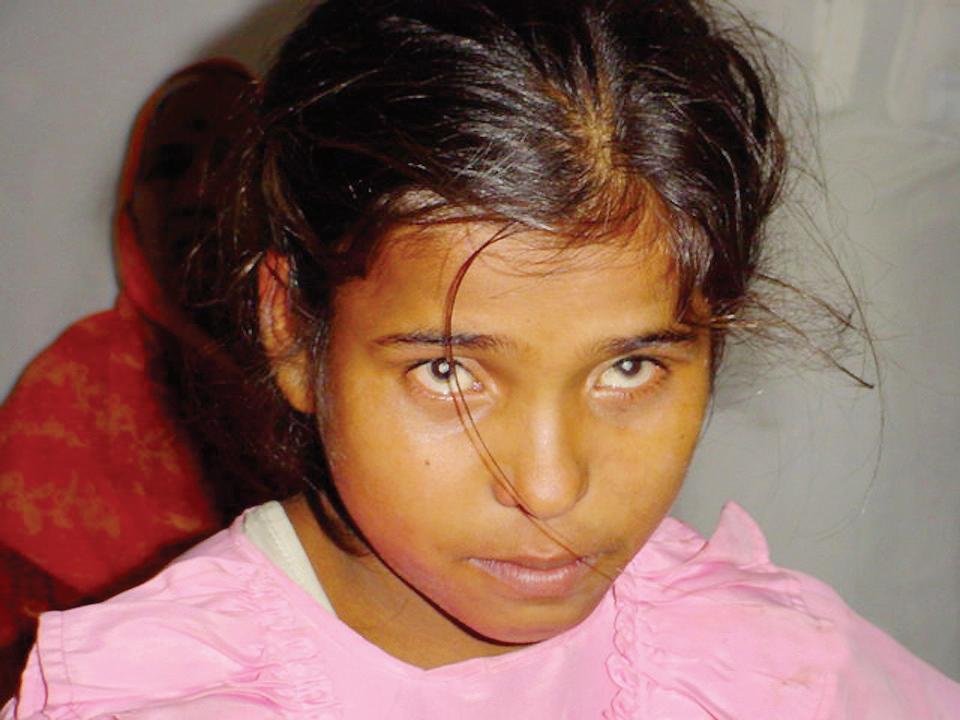
Vision Beyond Oz is helping address this issue in the rural areas with a sustainable model for the highest quality eye-care with modern techniques.
The activities have so far been based at an ashram in Rishikesh run by spiritual leader Swami Chidanand Saraswati, president of the charitable Parmarth Niketan. A defunct operating theatre was provided within a small Ayurvedic hospital in the area in 2002. Over the past eight years, it has been converted into a modern eye surgery unit fitted with the latest in operating equipment.
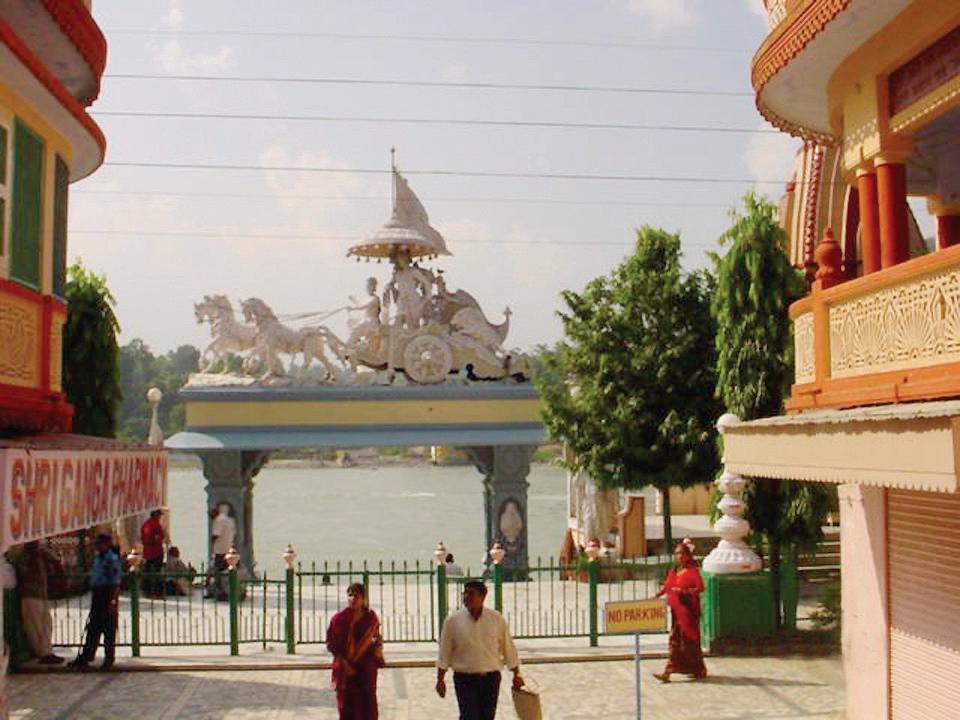
Nearly 1000 patients have been treated annually at eye camps held here. All are from surrounding rural areas, and 90% of them are poor.
“We advertise the camp a month before it actually takes place,” one of the doctors revealed, “and word gets around. Now, the case is that people wait for us each year - Jab Australia ki team aayegi, unse karvaayenge , they say”.
The project is self-funded. The team includes four ophthalmologists, two anaesthetics and a general doctor, all from Westmead Hospital, all of who pay for their own expenses. They employ locally trained paramedics for assistance, to whom the experience is an added attraction.
Outcome studies for the early work at Rishikesh revealed such high success rates that the model has now been taken to Fiji as well. The Uniting Church now funds a Parmarth project at Fiji, although
the ophthalmologists, anaesthetists, orthoptists and specially trained nurses that are involved in this program each donate a week of their time graciously to
“The experience and expertise of the volunteers in both projects are credited for their 100% success rate”, a doctor with the Vision Beyond Oz revealed. (The team requested anonymity for purposes of this article).
Buoyed by the success of their voluntary work in cataract surgery, Vision Beyond Oz decided to expand their services to other forms of interventions as well. Mental health has been another area in which work has begun. Two clinics have been held so far in which Fijian post graduate students in psychiatry have come out to Australia briefly to gain experience.

The team is currently in negotiations to associate themselves with GAPIO (Global Association for Physicians of Indian Origin) which was formed early this year and has already set programs in action including voluntary work, support
at eye camps held here. All are from
in collaborative research and medical education. Such a tie-up will not only see their resources increase, it will also help in dealing with bureaucratic obstacles that are the bane of operations such as these. The Sydney-based doctors revealed that there has not been much help forthcoming from Indian government agencies in helping transport equipment over.

“We’ve now decided to handle the transport issue ourselves,” one doctor revealed, “but we would still like venues where we can conduct our operations, and maybe some basic security at the spot”.
In this regard, private foundations such as Parmarth have helped where government departments have failed.
It is hoped that the lobbying power that GAPIO will bring, will help.
Meanwhile, the work continues for Vision Beyond Oz. The next project is scheduled to be held at Barsana near Bridavan and will commence shortly.
14 <> APRIL 2011 INDIAN LINK
www.indianlink.com.au INDIA-OZ
Nearly 1000 patients have been treated annually
surrounding rural areas, and 90% of them are poor.
1. Dr. Jay Chandra operating
2. Juvenile diabetic with bilateral cataracts
3. Dense, mature brown or white cataracts
4. Congenital cataract
5. Lautoka Hospital, Fiji
1 2 5 3 4 6
6. Parmarth Ashram

APRIL 2011 <> 15 INDIAN LINK
ITA launch amidst Holi festivities
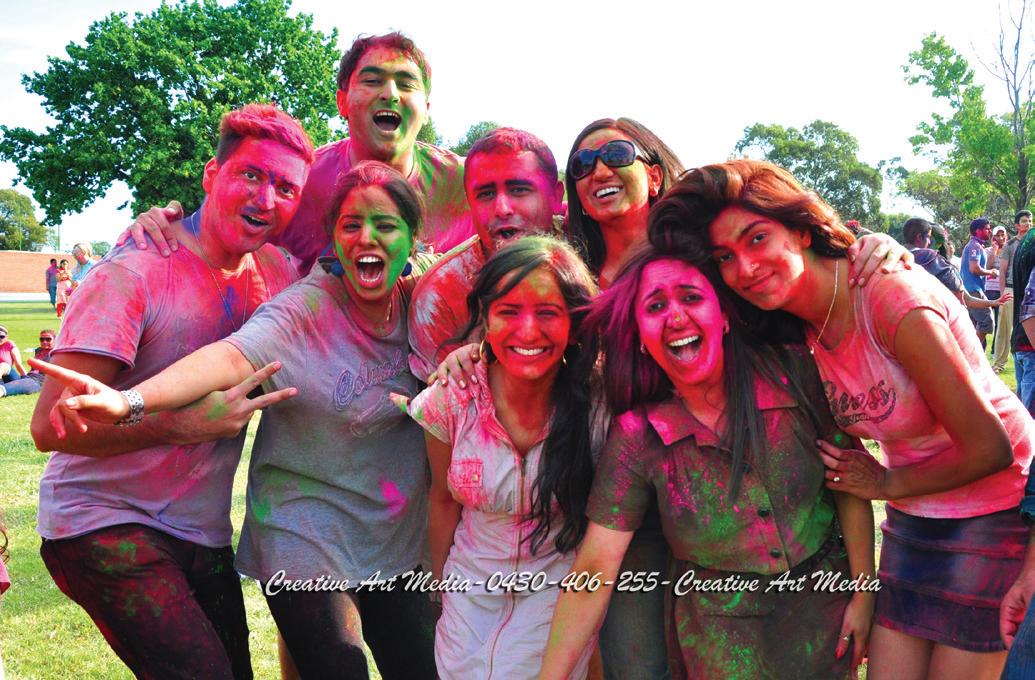
Lately the Sandown racecourse in Melbourne has become a hub for the Indian community and is a favoured location to hold Indian festivals and events. This year again, the spring festival of Holi was celebrated amidst a lot of fanfare at the racecourse, attended by hundreds of people from all parts of Melbourne. While the crowds outside were busy playing with colours, a Holi lunch was organized in the conference room indoors co-sponsored by IPeal and ITA (Vic). The Indian Traders Association (Vic) was officially launched that afternoon by Clem Newton Brown, MP for Prahran and Victorian Leader of Opposition, Daniel Andrews.
ITA (Vic) has been formed to support trades-people by offering professional development through member interaction, to raise cultural awareness of Indian products and culture among the Australian community, to create employment opportunities in Australia through business growth and to
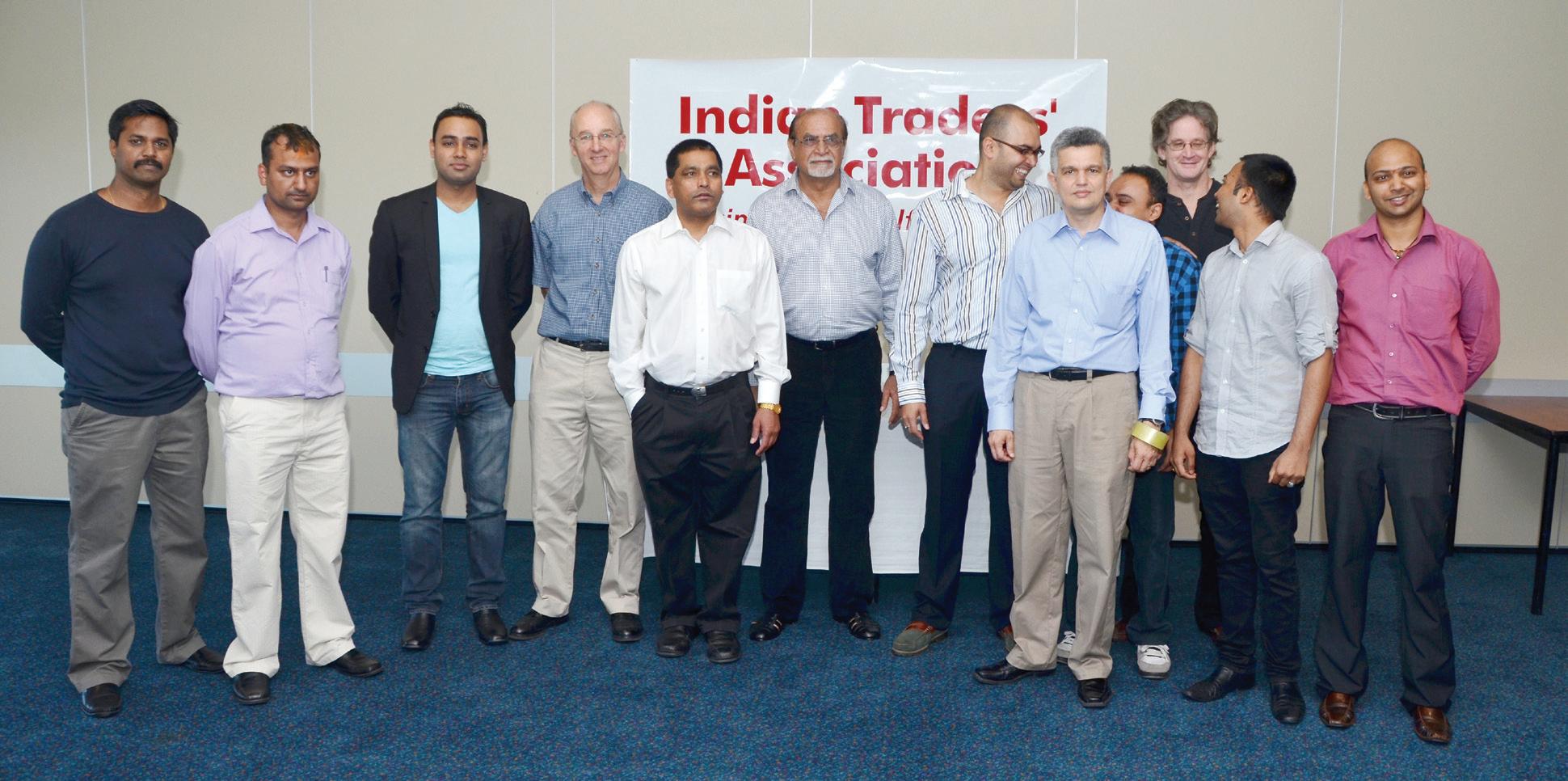
provide training in line with the Australian workforce rules and regulations. The Association is also expected to encourage and support new entrepreneurs and businesses by providing opportunities to network with people from similar fields. The objectives of ITA include community service and political awareness, among other things.
Also present at the launch were Mr Rakesh Kawra Indian Vice Consul, Neil Angus (MP for Forest Hill), Jude Perera (MP from Cranbourne), Nitin Gupta ministerial adviser to Liberal party, Ipeal and AIII executive members and Miss Earth Australia (water) Rima Das. As part of the event, Ipeal also recognized the efforts of a few individuals within the community. Alap and Dhara Patel, Bhavesh Lakhatiya and Priyanka Valand were awarded community service awards for offering help to the 25 international students who suffered considerable loss after their Hawthorn home was destroyed in
a fire. Sujata Kumar was also felicitated for teaching English to new migrants for the last 15 years in Melbourne.
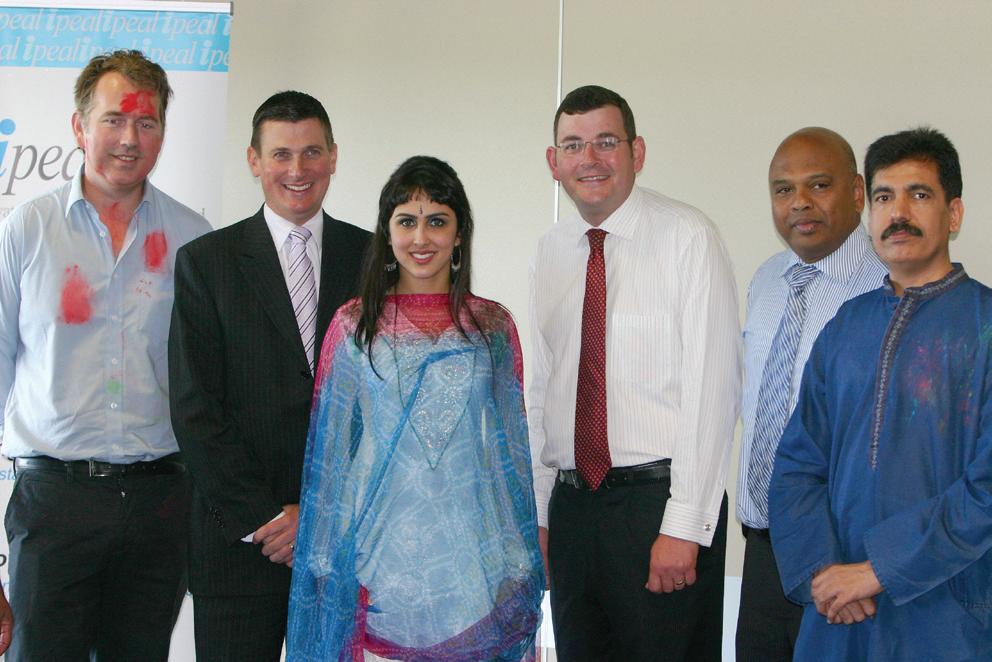
The Holi event in Sandown was organised by the Australian Indian Innovations Inc. (AIII) who also celebrate Diwali on the same premises every year. The popular music that had the crowd on their feet for most of the afternoon was sponsored by Rhythm & Spice and Oorja Nights. The atmosphere was decidedly carnival-like, complete with wonderful weather and tasty treats from multiple stalls that catered for a variety of food. Holi is gaining increasing popularity among other Australian communities and many of them joined in the colour ambushes and dancing to the reverberating bhangra music, with family and friends. This year’s Holi was an exuberant celebration of life filled with boisterous fun and bright colours.
PCV Baisakhi picnic a success
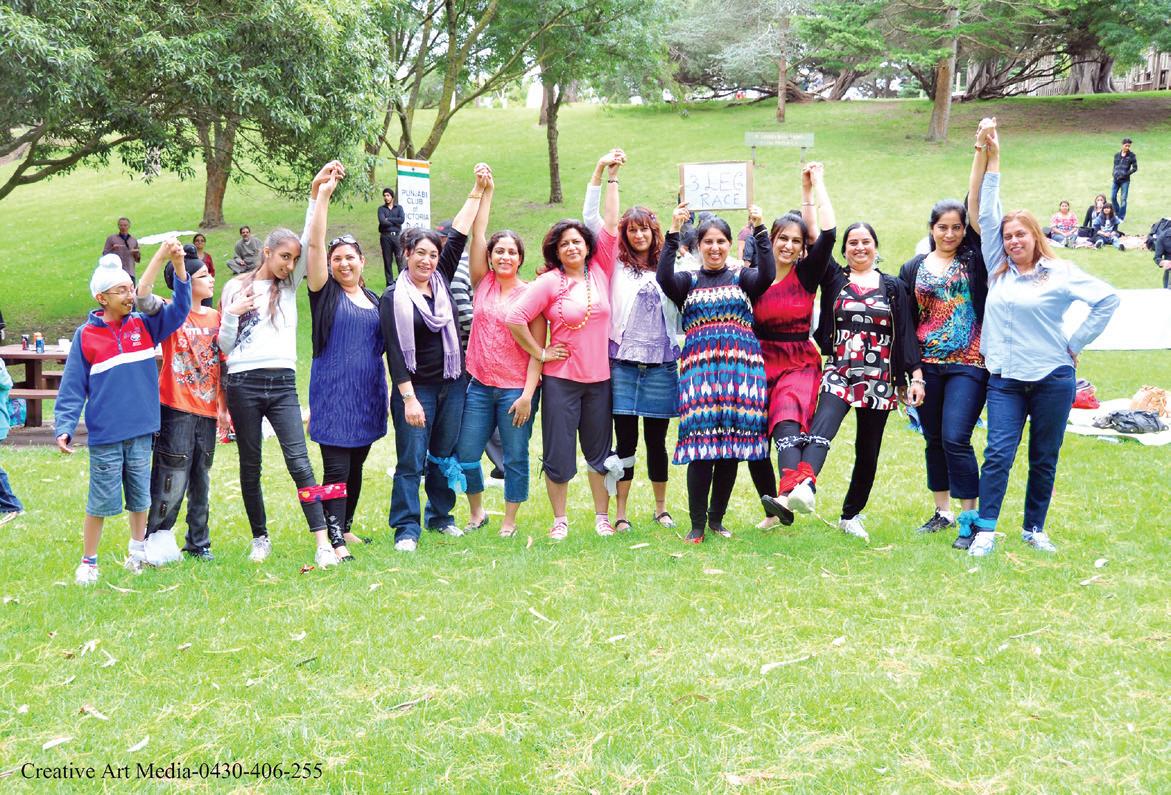
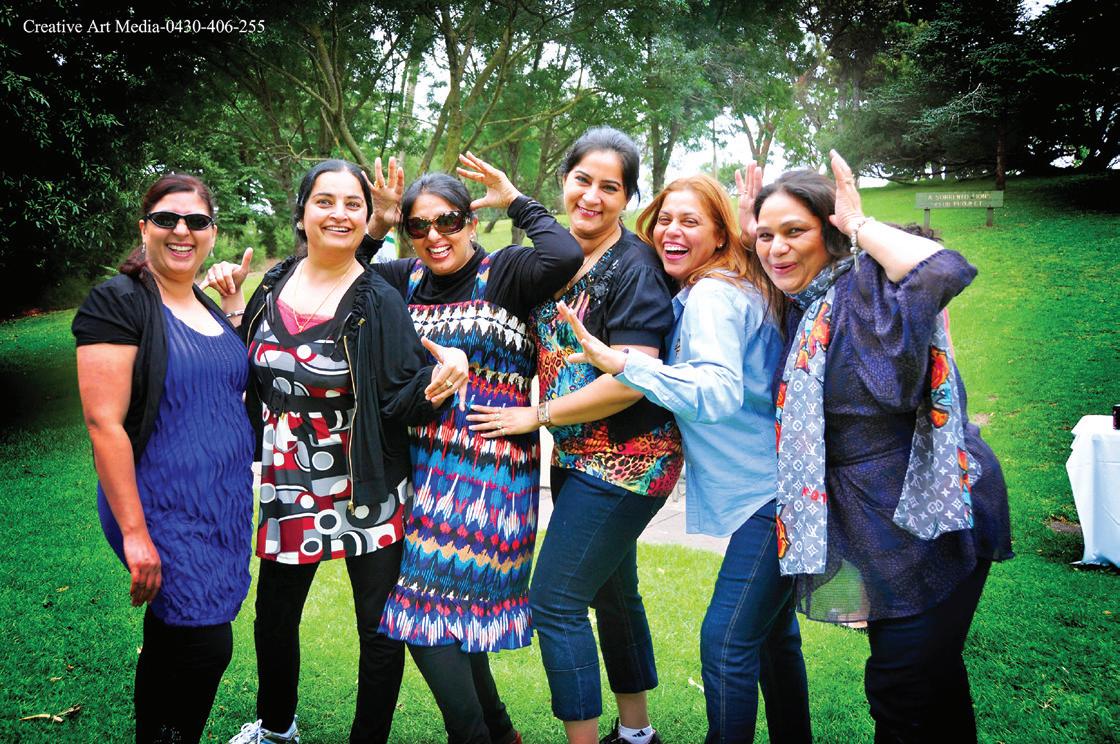
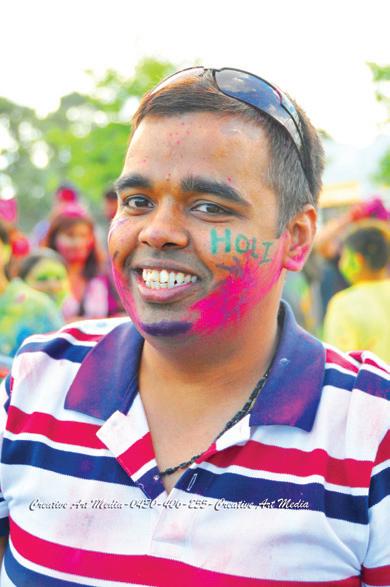
It was a remarkably great effort for the Punjabi Club of Victoria (PCV) to hold an event that brought three generations together to have fun at the Baisakhi picnic in Sorrento Park on March 27. Overnight cloudy weather changed back into a lovely day and 130 guests boarded buses from three different locations, heading towards Sorrento Park. The event was planned very precisely and it took nearly three months of hard work to efficiently organise the picnic.
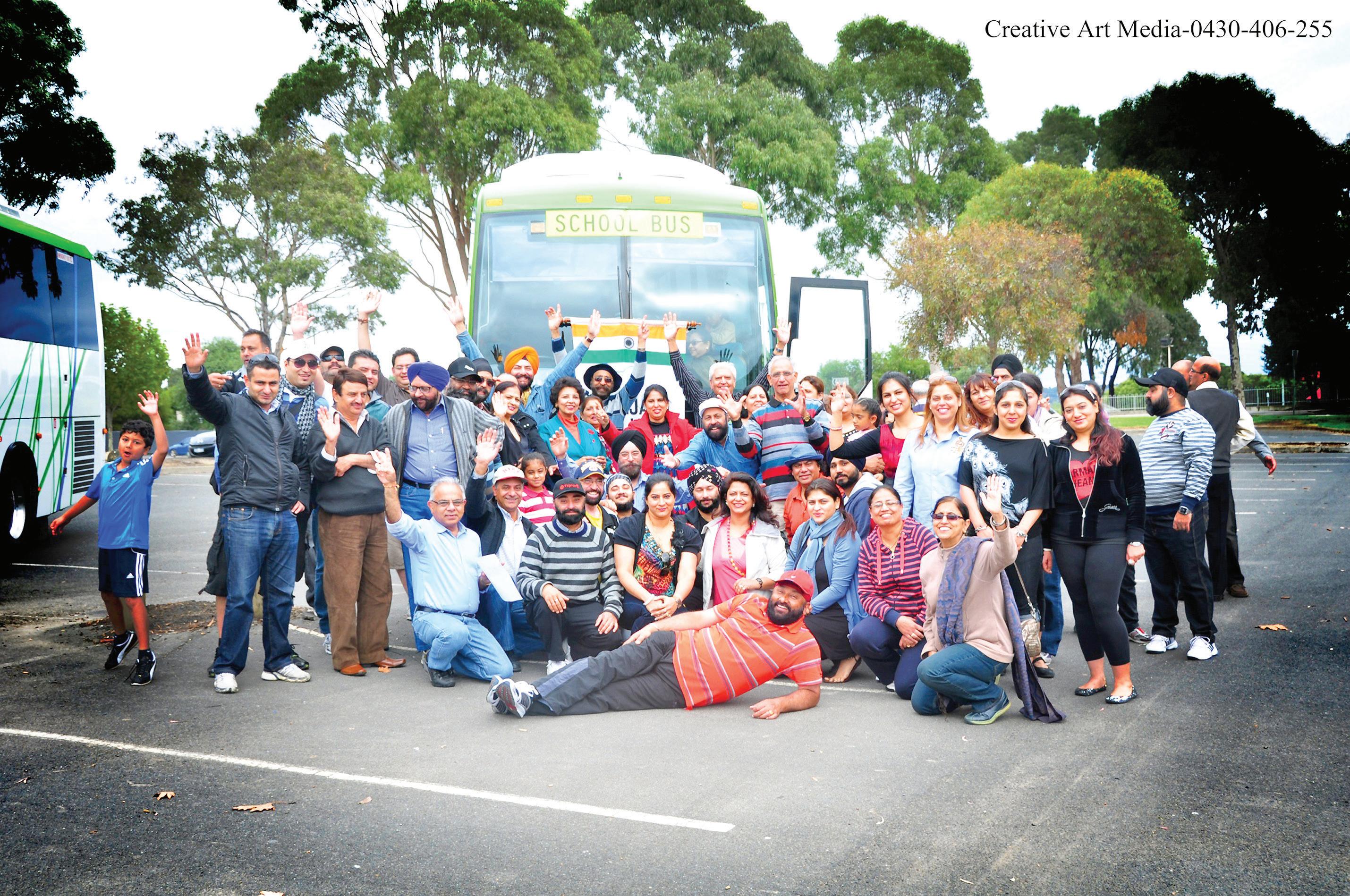
Full credit goes to the PCV committee members who worked day and night to put together everything to make the event a reality, and also to the Secretary for his administrative inputs. The smiles on the faces of guests words of appreciation were a well-deserved reward. Thanks to Tandoori Junction for making the guests happy by providing a range of culinary delights, some items being freshly prepared by TJ staff on the site. Even the nibbles and chaat were a great accompaniment to the drinks.
The guests were entertained by melodious music played on the saxophone by Clinton Fry and traditional games like volley ball, cricket, kho kho , pithu garam and a 3-legged race were also organised. The day was capped off with antakshri conducted by Gurmeet Sahni, and the high quality of participation resulted in an unexpected draw. Overall the picnic was awesome and created new bonds of friendship among the attendees. The president and organising committee of the PCV would like to express their esteemed appreciation towards members who participated and guests for their generous and cooperative behaviour.
16 <> APRIL 2011
www.indianlink.com.au COMMUNITYSCENE
Photos: Guruswamy, Creative Art Media, Preeti Jabbal
Photos: Guruswamy, Creative Art Media
Preeti Jabbal
ITA launch
Arminder Luthra
Clem Newton Brown, Neil Angus, Rima Das, Daniel Andrews, Jude Perera and Rakesh Kawra
Fun scenes from the PCV picnic
Indian student chosen to market Brisbane abroad
Manpreet Kaur, an Indian student studying in Brisbane, is one of the 29 students appointed ‘Brisbane International Student Ambassador’ by the city’s Lord Mayor Campbell Newman recently.
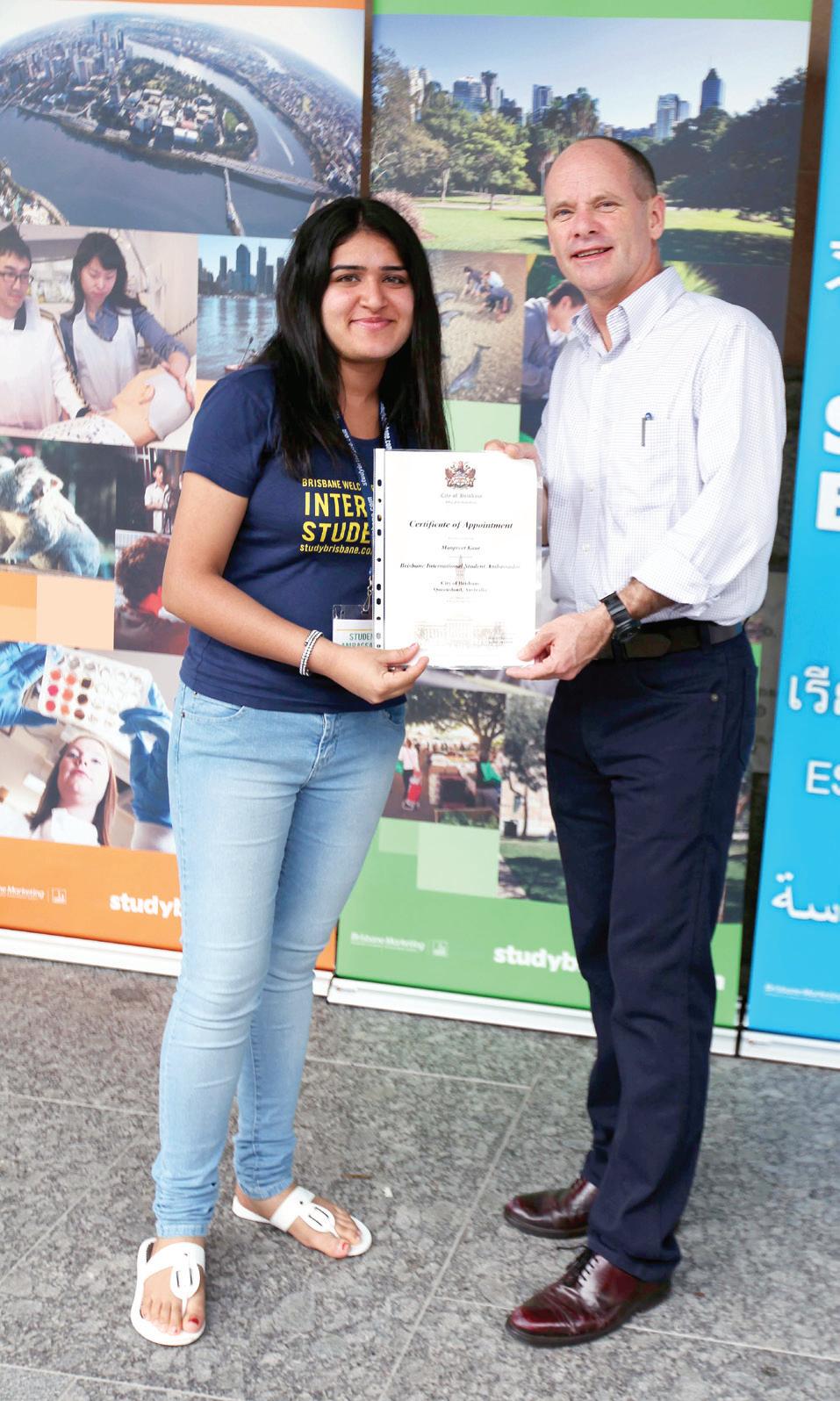
Brisbane Marketing’s Study Brisbane
Program selected the students from 24 countries with an aim to promote the city to international students. “I’ll be making use of social networking websites to talk about my experiences as a student in Brisbane,” Manpreet says, and adds that international students who have had a good experience in Australia are the “best voice” to promote the country as a destination for higher studies to international students.
Traditionally, Sydney and Melbourne have been the preferred destinations for international students coming to Australia to study.
Manpreet has been studying in Brisbane for the last two-and-a-half “fabulous years”, the city’s “great infrastructure, proximity to Gold Coast and Sunshine Coast, warm weather and world-class education” are the reasons that made her choose it over other international and Australian cities. Her Australian education has, she believes, transformed her from a “shy” person to a “confident Brizzie girl” and helped her develop professionally and as a person.
She’s aware that the attacks on Indian students in Australia, highlighted zealously
by the media in India, could impact Australia’s reputation as a safe destination for international students. “I think it’s a challenging role, especially owing to the strained Australia-India relations,” but is quick to add, “Brisbane welcomes everyone who has the potential to grow and contribute to its multicultural society with an open heart.”

The resilience and community spirit of international students was evident in their efforts to mitigate the anxieties of Queensland flood victims despite many being personally affected by the tragedy.
“It was heartbreaking; many students had to evacuate their houses,” she recalls the experience. “We received many calls from anxious friends and relatives. The phone just won’t stop ringing.” Fortunately, the street she lived on escaped the fury of the waters, and her house became a safe haven for other less fortunate students. Through university campaigns and volunteer work international students not only helped fellow students but also the wider community. “The selfless spirit of international students helped Brisbane recover relatively quickly. It also brought the students closer.”
Interestingly, she believes, “homesickness” and “lack of Indian food” would perhaps top the list of problems that Indian students face in Australia – issues
that may seem trivial for those who have availed of huge student loans back in India to pursue their dream of studying in Australia or those concerned about their safety in this country.
“University education in Australia is quite affordable, especially in Brisbane as compared to other cities. For Indian students, Brisbane could be the best destination for studies in terms of expenses as well,” she explains and cites her own example to drive home her point, “I belong to a middle class family and most of my education has been funded by my education loan. I was able to find a part time job, so earning for my living expenses was not hard at all.”
The Brisbane International Student Ambassador program is a part of Brisbane Marketing’s Study Brisbane program. It is dedicated to advancing the development of Brisbane’s international student sector.
“The Ambassador program is all about creating global advocates for City Brisbane. As our Ambassadors return to their home countries, they may become leaders in industry and government who create
strong global connections for Brisbane,” she quotes John Aitken, CEO, Brisbane Marketing.
“While the Ambassadors integrate and interact with their student peers and the Brisbane community they also help to enrich us with cultural diversity that benefits local business and domestic students who may also study overseas.”
APRIL 2011 <> 17 INDIAN LINK PEOPLE
‘The city welcomes everyone who can contribute to its multicultural society’
Gaurav Pandey
www.indianlink.com.au
Manpreet Kaur with Brisbane Lord Mayor Campbell Newman
The classical scene
The long weekend in Melbourne from March 11-13 was packed with events that made it impossible to do justice to every one of them, but it was a veritable feast of classical fare.
The weekend began with back-toback with Carnatic Music Circle’s Local Artiste concert, featuring vocalist Uthra Vijayaraghavan accompanied by Murali Kumar on the violin and Sridhar Chari on the mrudangam. On the same day, the statuesque and accomplished dancer and actress Shobhana gave a bharatanatyam performance.
The next day, March 12 showcased a violin duet by the Lalgudi siblings Vijayalakshmi and Krishnan at the Alexander Theatre. They are the talented children of the legendary virtuoso composer and violinist, Sri Lalgudi Jayaraman. The concert was organised by InConcert Music of Sridhar Chari.
The duo began with a varnam in Kalavati, followed by kritis in Hindolam, Rasikapriya and Madhyamavati, all of which bore the imprimatur of the Lalgudi could actually hear the lyrics oozing out of the duo’s violins. They took up ragam for detailed and in-depth treatment – complete with an elaborate rendition, niraval and kalpana swaras
The ragam-tanam-pallavi classicism – yet the knowledgeable audience appreciated every moment of it. Krishnan explained later that this one they had performed at the Madras Music Academy during the recentlyconcluded music season in Chennai: the most hallowed venue for carnatic musicians where all artistes who perform there give their best. In fact the kind of audience that wants nothing but the best in classicism flock to performances in the MMC, hence producing a kind of synergy that is not often seen elsewhere. For classical music purists, this violin duet performance was a treat for their ears and soul.
The Indian Arts Academy and Sungeertana Music School (led by directors Yogaraja Kandasamy and Srikanti Satgunam respectively) organised the Mummoortigal music festival the long weekend which included a carnatic music concert by young Kashyap Mahesh, a child prodigy who at a tender age is already an accomplished artiste; congregational singing of some of the great Tamil compositions by several music teachers of Melbourne; and a talk by Prema Vinayagam on the music and lyrics of the ‘Tamil Trinity’. The three great Tamil composers pre-date the more revered and better known carnatic composers
Thyagaraja, Dikshitar and Shyama Shastri, so it is fitting that a festival pays homage to the earlier Trinity. They are Muthu Thandavar (16th century), Arunachala Kavi and Marimutha Pillai (18
The highlight of the three-day festival was a dance performance by Padmabhushan repertoire including
varnam –Sami naan undan ’ not once shirking from the teermanams, tattu-mettus or adavus during his three-hour long concert. He began with an Alarippu and a Ganesha vandanam, followed by the varnam; his rendition of Arunachala Kavi’s ‘yaro ivar yaaro’ in bhairavi captivated the audience with his elegant, sensitive, yet majestic portrayal of Rama’s first sighting of Sita in Mithila. The Muththu Thandavar composition ‘Kaalai thookki’, followed by Marimutha Pillai’s kriti in Yadukula Kamboji
The tillana in Simmendra madhyamam – a musical composition of the Professor himself – brought up the finale, and the audience gave this doyen of Indian dance a standing ovation at the conclusion of the
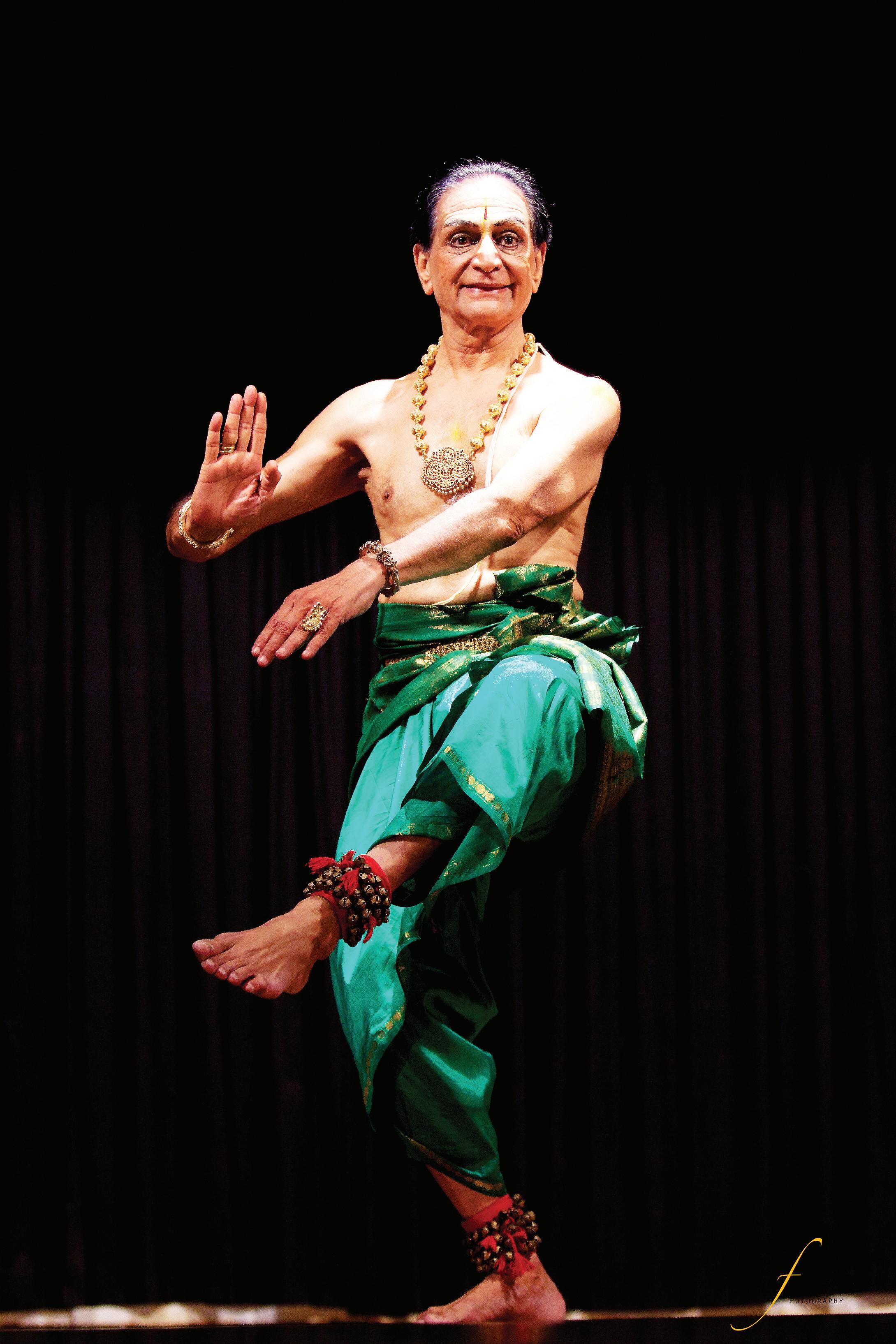
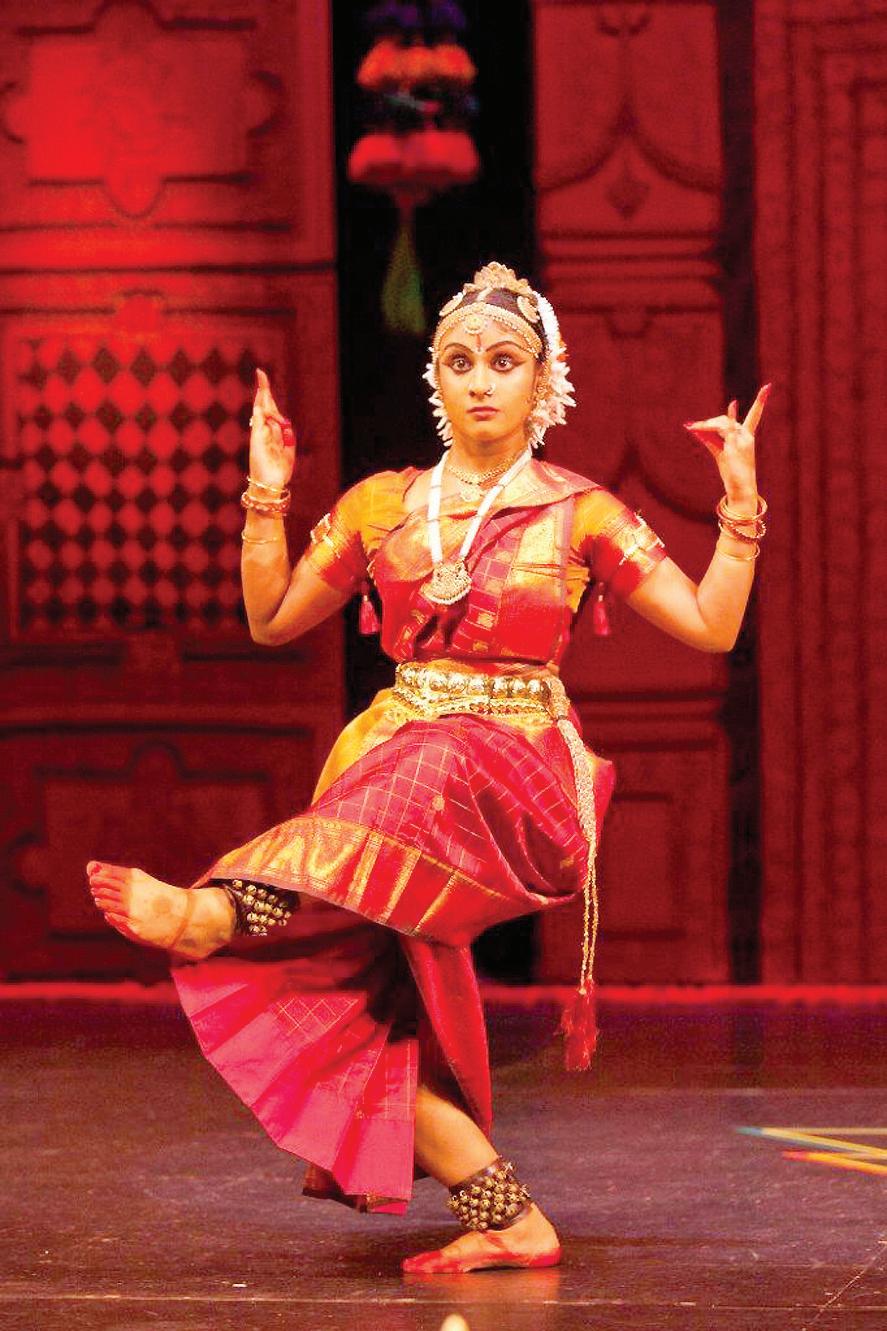
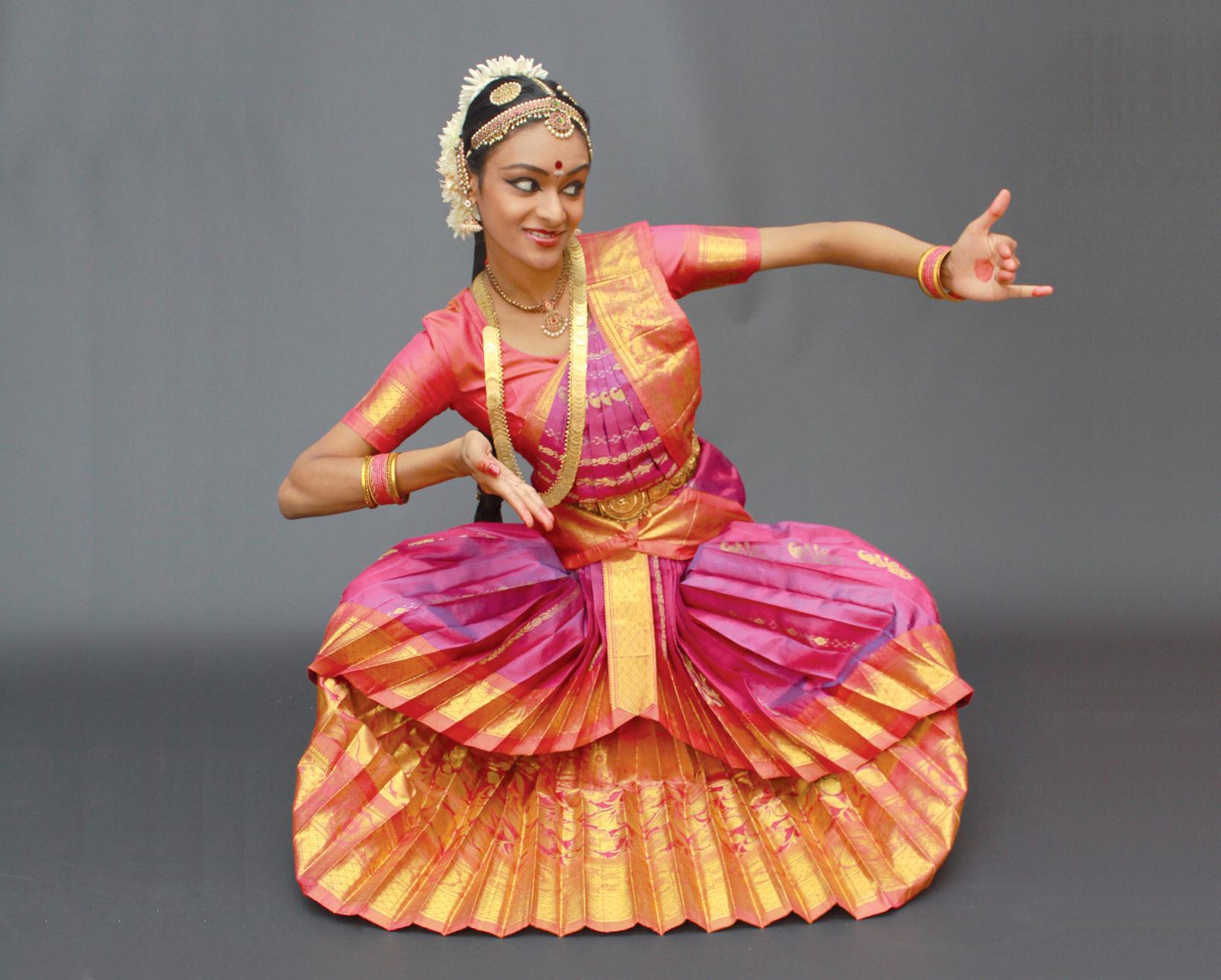
Since most dance schools in Melbourne follow the Kalakshetra bani or style, seeing another noticeably different bani was refreshing.
The varnam, a composition of Muralidharan, was superbly choreographed by Smt Gyanachelvam, and Veena did it complete justice. The stories of Draupadi’s vastraharan and that of Karna’s giving away of his ‘kavacha’ were meticulously portrayed, and could be understood even by the lay audience. Veena’s ability to bring out the dramatic element and tell stories was her greatest strength. Every story she depicted, every sanchari she performed was clear and impeccably done.
The padams in Malayalam, composed by Swati Tirunal, aliveni, in kurinji ragam, and choreographed by the well-known dancer and guru V.P. Dhananjayan, and the ever popular Jagadhodharana by Purandaradasa (Kapi ragam) also gave Veena ample scope to showcase her nritya and natya skills. Whether it was the portrayal of a love-lorn gopika pining for Krishna or Mother Yashodha’s astonishment at her son’s revelation of Himself as the Supreme Being when He opened His mouth, Veena’s natya skills were superlative: all the sancharis she enacted and danced were easily recognisable.
The orchestra consisted of guru Anusha Gnanachelvam on the nattuvangam; excellent music imbued with bhava from Smt Uthra Vijayaraghavan, the vocalist; Ramani Thiagarajan on the flute and Murali Kumar on the violin. Balasri Rasiah and his son rooted the music in strong rhythmic and percussion base with their mrudangams.
Kersherka Sivakumaran’s bharatanatya arangetram was held at the George Wood Performing Arts Centre on March 5. She is Nrithakshetra and Shanthy Rajendran’s 52nd student to present an arangetram.
It was a lively, brisk and energetic performance, with two kavutuvams in the repertoire – both devoted to Lord Shiva. From the opening item – homage to the ‘five murthis’ – to the tillana in parasu ragam, Kersherka covered the stage with her dextrous footwork and impressive adavus. The demanding pushpanjali led on to a dance depicting the dancing Ganesha, and the demanding varnam in raga valaji was about a nayika pining for her beloved Lord Muruga. The well-known Arunachala kavi kriti “En palli kondeer ayya” dedicated to Lord Vishnu reclining on the serpent was gracefully portrayed, with the dancer bringing out different episodes from the epics well.
was held at the Alexander Theatre on February 26. She is the student of Anusha Gyanachelvam, who was an accomplished dancer in Sri Lanka in her youth.
Besides Shanthy Rajendran (nattuvangam), Sivanandan Ahilan was the vocalist, ably supported by Yogan Kandasamy on the mrudangam, Suresh Babu on the violin and N Thiagarajan on the flute.
18 <> APRIL 2011 INDIAN LINK
STAGE
***
Chitra Sudarshan
Veena
Kersherka
Prof. Chandrasekhar
Healing music concert uplifts
Sri Swamiji and his troupe of dhol, tabla, keyboard and violin players encouraged the audience to engage with the music in whichever way they felt appropriate; the hypnotic rhythms sent some to sleep while others nodded to the trance-like tunes. Held a day after horrifying images of the March earthquake and tsunami were flashing around the globe, the guru encouraged the audience to pray for “Japan’s calamity”. This sentiment was echoed by Inga Peulich, State Member for the South Eastern Metropolitan Region, who spoke of the chilling power of nature and its astounding power to regenerate. Four instrumental compositions followed, the last of which was noted for its calming properties on the nervous system. His Holiness mentioned that it is particularly popular with followers outside of India, in western nations such as the United States. VDYC is a not-for-profit organisation established under Sri Swamiji’s instruction just four years ago. Active in the field of healing music and natural therapy, VDYC shares Sri Swamiji’s view that music can be used to “lift the consciousness of man from mundane existence to that of divine bliss”.
His Holiness Sri Sri Ganapati Sachchidananda Swamiji’s recent visit to Australia culminated in a highly spiritual performance on March 12. The free meditation and healing music concert was held at the Robert Blackwood Hall at Monash University in Clayton, south-eastern Melbourne, and attracted an audience of over two hundred devotees and more than just a few curious souls. Supported by the Victorian Datta Yoga Centre (VDYC), the evening was opened by Drs Janardhen Reddy OAM, and Mrs Usha Reddy who presented a garland to the guru. Dr Marc Cohen, Professor of Complementary Medicine at RMIT University, lit the ceremonial lantern, while a souvenir booklet was presented to Sri Swamiji by Srikanth and Soumya. The stage was then set, adorned with candles and dazzling artwork by local artist, Mr Murali.
Swamiji performed on a synthesiser, accompanied on the violin, synthesiser, mrudangam and tabla by a group of able musicians who are members of the Peetham in Mysore. Swamiji played a number of compositions in ragas Abhogi, Visharada, Nagamani (a new raga) etc., and finished the concert with Simmendra madyamam, the raga of choice of several bhajans
His Holiness, the pontiff of the Avadhoota Datta Peetham in Mysore, is a spiritual guru who has been able to demonstrate the therapeutic qualities of music to a worldwide audience. Swamiji has harnessed traditional knowledge about music and its therapeutic qualities, strengthened it with his own research spanning over 30 years, and uses it as a means of calming the mind and as an instrument of healing. Over the years he has shown the effectiveness of music therapy in a wide range of environments: as an auditory stimulus in Intensive Care units; as a means of reducing stress and improving mental health; and in a number of clinical settings.
Initiated into the world of music by his mother, Swamiji has composed, sung and performed a number of and other ‘bandish’ (about 5000), which are popular in several schools, educational institutions and hospitals. His music is based on spirituality and on awakening the energy channels and Shatchakras in us.
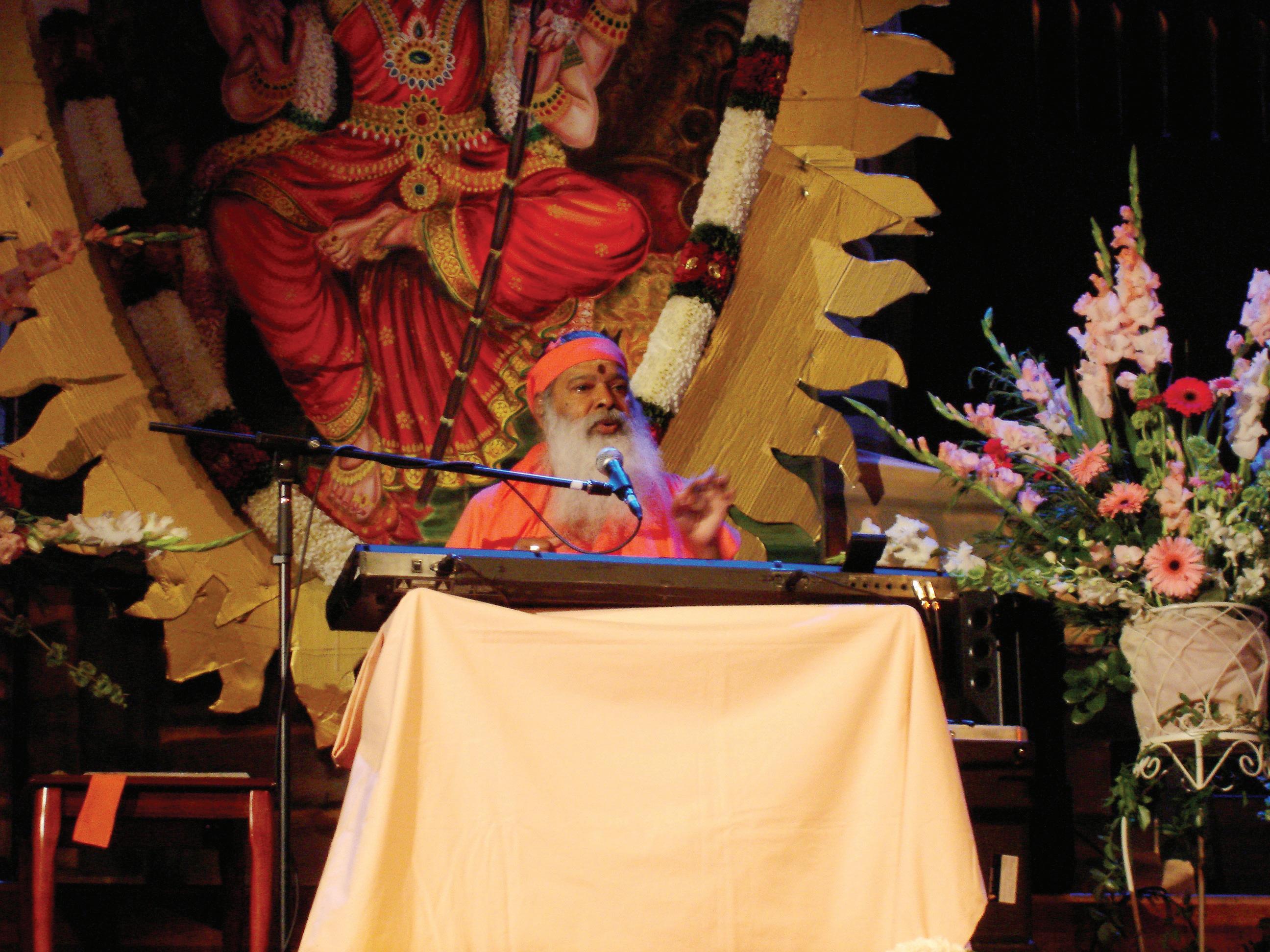
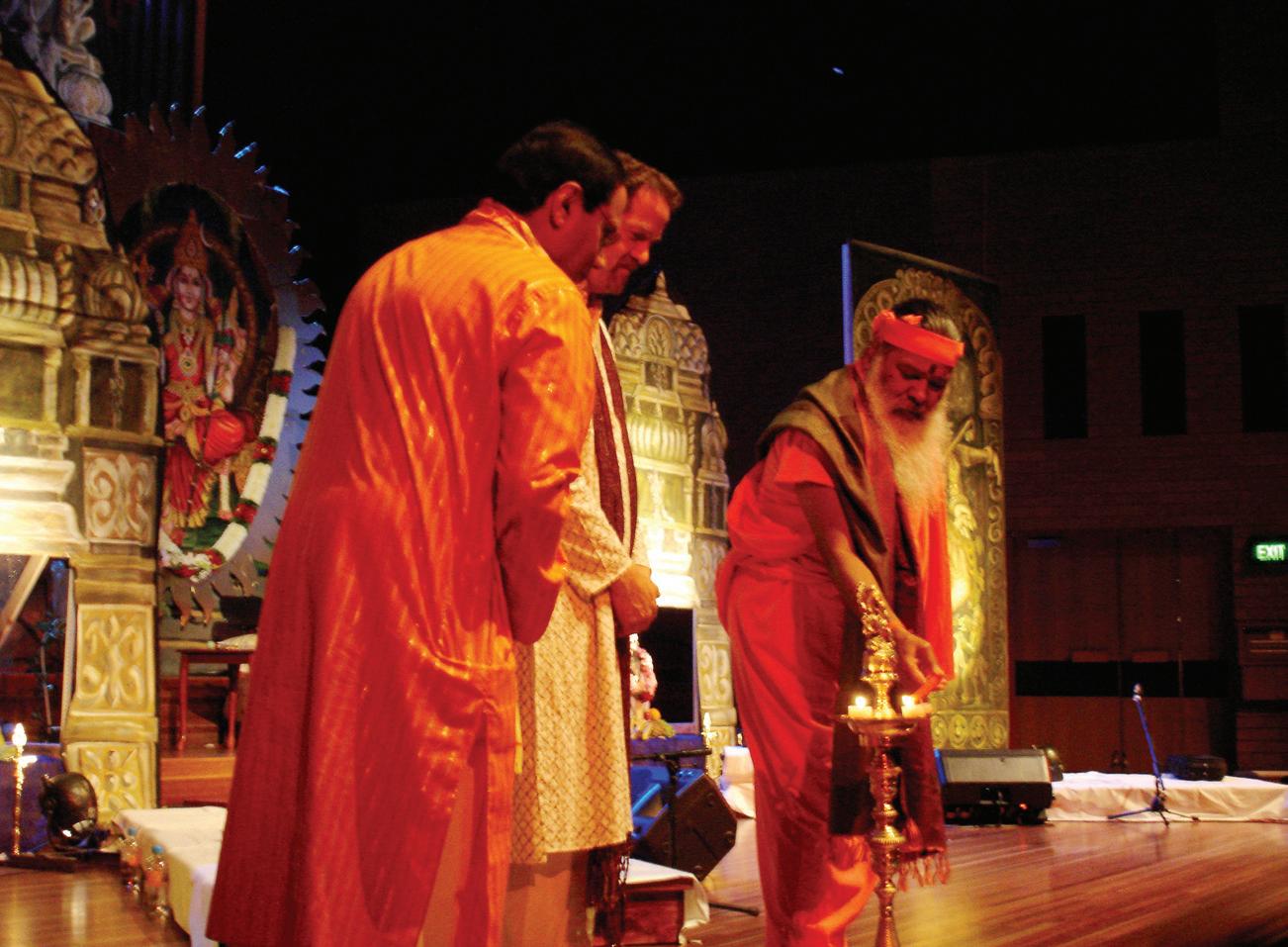
Originally from Mysore, Karnataka, Sri Swamiji is regarded as a spiritual master by his millions of followers. As was
Tabla maestro creates world beats
The Asia Institute and the Australia India Institute recently held an evening of tabla recital performed by world renowned Ustad Tari Khan of India, at the Garillo Gantner Theatre, University of Melbourne. Entry to the event was free for lovers of classical Indian music, with seats required to be reserved in advance. The hall was nearly full when we entered it some thirty minutes before the time stipulated, and found both Ustad Tari Khan and his companion Khalil Gudaz on sitar, already on the stage busily synchronising their instruments to achieve the optimal sur. The hall buzzed with anticipation and excitement, while both maestros briefly absented themselves before returning to the stage.
The Director of the Institute then introduced the artists to the audience. Prof. John Webb’s greetings of Namaste, Sat Sri Akal and Salaam-Alekam, were followed by a brief introduction on the performers and a recommendation that if one needs to learn the art of percussion, one needs to start very, very early in life. “Ustad Tari Khan started when he was six,” he stated, and with that the event commenced.
Khalil Gudaz sahib introduced the sitar (as an Indian/ Afghan instrument with nineteen wires) and aspects of ghazal gayaki (such as various aspects of ishq or love; aashiq, the lover; and maashooq, the beloved, etc). As is commonly accepted on the subcontinent, in ghazals and ghazal-gaeki both, ultra-tender portrayals of love unconditional are necessarily addressed by the aashiqs for their maashooqas.
Khalil sahib won over the audience with his contagious and possibly habitual smile that implied amused-friendliness. His recital of the sweet-sounding Raag Jodh went down
very well - along with playing his sitar, he sang a song in the Persian language that sounded like a Rubai, while peppering the presentation with many explanations that were all ishq-based. A compliant Ustad Tari Khan complemented Khalil saheb’s endeavour with unassuming tabla-beats so not to overpower his companion’s art and also to maintain the mutually professional respect that generally exists between artists. As he concluded Raag Keherwa on the sitar, Khalil sahib bowed with hands folded to acknowledge the audience’s iscernment of his expertise. The applause he received was deafening.
Now came the moment we were all waiting for. To accompanying soft recapitulation of Khalil sahib’s sitar,
mentioned in the opening address by Swamy Manasa Datta, the guru has changed the lives of many through his work with alternative therapy and underprivileged communities. Sri Swamiji’s teachings value all religions and teach that there are many different paths to God; he has composed devotional
Ustad Tari Khan, dressed in a jari-wali shimmering sherwani and Aligarhi pyjama, his hair done in 21st century style, began with his instrument of choice: the tabla. Presenting Taal Rupak, an unusual combination of three beats and four beats, he recited audibly while his fingers emulated rhythmically on the tabla. Aah, what a treat! Playing Raag Keherwa in Taal Keherwa, he elaborated, was like travelling without a ticket. Reciting the Chakr Dhara in triplicate, his fingers worked magic in disciplining the tabla, while his moods alternated from deep contemplation to chuckles of true amusement.
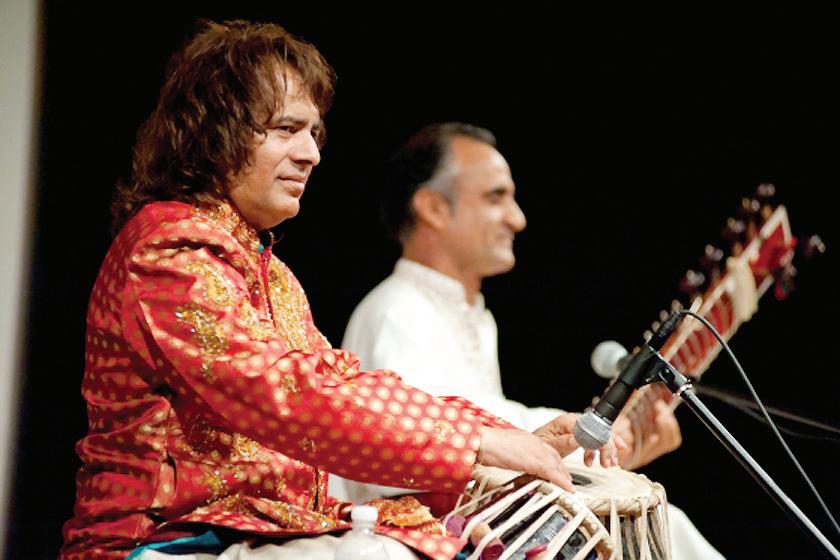
Having worked up a sweat, Ustad Tari Khan undid his sherwani to reveal an equally jhil-mil turquoise kurta, which was as lighthearted as his mood. Deservedly enjoying his performance, he played Raag Keherwa in styles peculiar to world regions, beginning with Punjabi, then the Middle East, Europe, and Africa: close your eyes – and Zulus danced to the tune of unsophisticated drums, sounds created by a tabla of fine pedigree. He even presented an Australian version, to the loud amusement of all, and termed it ‘fast’. Each classification was entirely separate from the regional other. Delightful and magnificent!
Briefly, Ustad Tari Khan explained that he played ten beats amalgamated in seven beats in Gat Ka Tukra and elaborated on it for us on the tabla. Could eight fingers achieve such magic Ustad Tari Khan offered, we wondered! Creating swift and soft sequences of sounds in time, the Ustad pleased the souls of the tabla lovers in the hall. Perhaps the evening shouldn’t have ended so early.
APRIL 2011 <> 19 INDIAN LINK
Marc Cohen lights the ceremonial lantern
HH Sri Swamiji at Melbourne’s Healing through Music concert
Tim Blight and Chitra Sudarshan
Tari Khan and Khalil Gudaz
www.indianlink.com.au
George Thakur
The Cup of
BY RITAM MITRA
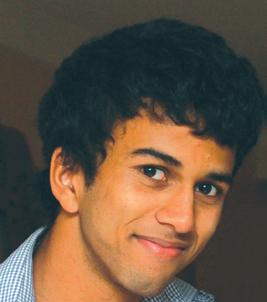
Sportsmen always speak of pressure in finals. Roger Federer plays under incredible pressure in every match as a result of his own impeccable standards, but in a Wimbledon final the pressure is something else altogether. Michael Phelps swims with the weight of expectation on his broad shoulders every time he enters the pool, but in an Olympic 100-metre Butterfly final, the weight is tenfold. No sportsman in the world, however, will ever understand what it means to play cricket for India. It brings with it an altogether different kind of pressure. And in the 2011 ICC World Cup, the Indian side had to carry a burden no one has ever experienced at either a team or an individual level; that of more than a billion hopes, the belief of a nation and the expectation of immortality. India are deserved world champions if there were ever any.
If a tense quarter-final chase against Australia wasn’t enough to break India, then surely the absurdly built-up semi-final against Pakistan would have done that. But India fought tooth-and-nail to survive both matches, and while Sri Lanka definitely played fantastic cricket to reach the final, it would seem natural to assume that India would have traded anything to play against England and New Zealand in the knockout stages like Sri Lanka, and save Pakistan or Australia for the final instead. Except that this is a new India. This India thrives under pressure, and it is most evident in the team’s performances in the last four matches.
Victories over West Indies, Australia, Pakistan and Sri Lanka allowed India to achieve a rare feat – each of these four countries has won the World Cup. Indeed, they are the
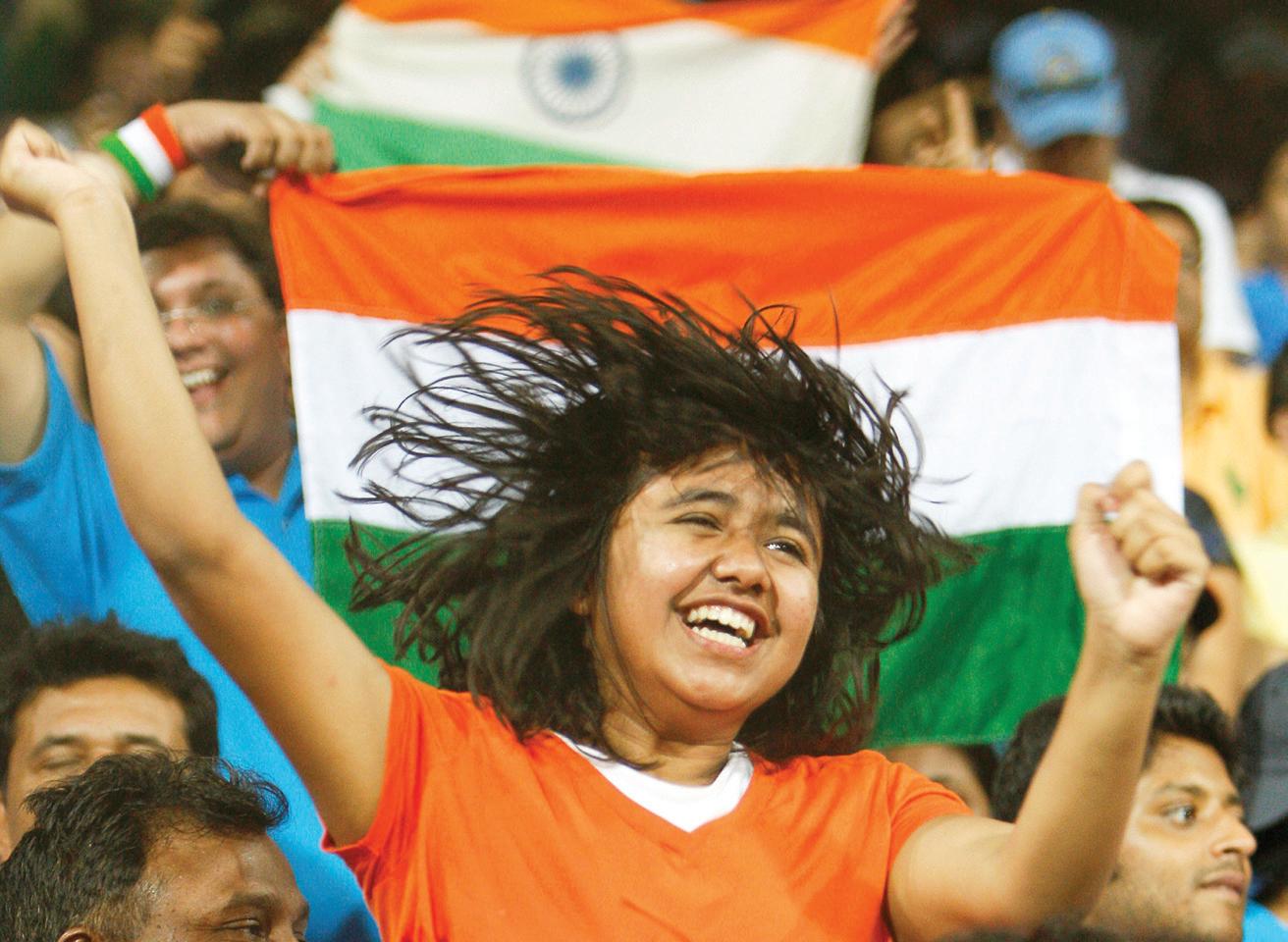
only four champions apart from India herself in 1983. Each of the victories in the knockout stages was like winning a final; if not only for the fact that losing would have resulted in exit, for the reason that each victory was so emotionally charged, so poetically scripted and that with each win came just a little release of pressure. Just a little.
The build-up to each of the knockout matches was deservedly intense, but the lead-up to the final was another story. For the first time ever, India would not be playing the reigning champions in a World Cup final. Sri Lanka is a great side, no doubt; but they carried with them hardly a fraction of the aura that the 1983 West Indian team did, and comparing them to the 2003 Australian team would be a mistake. This resulted in even more expectation. The whole of India, then, came to a standstill for a day and night of pure theatre on April 2nd, 2011.
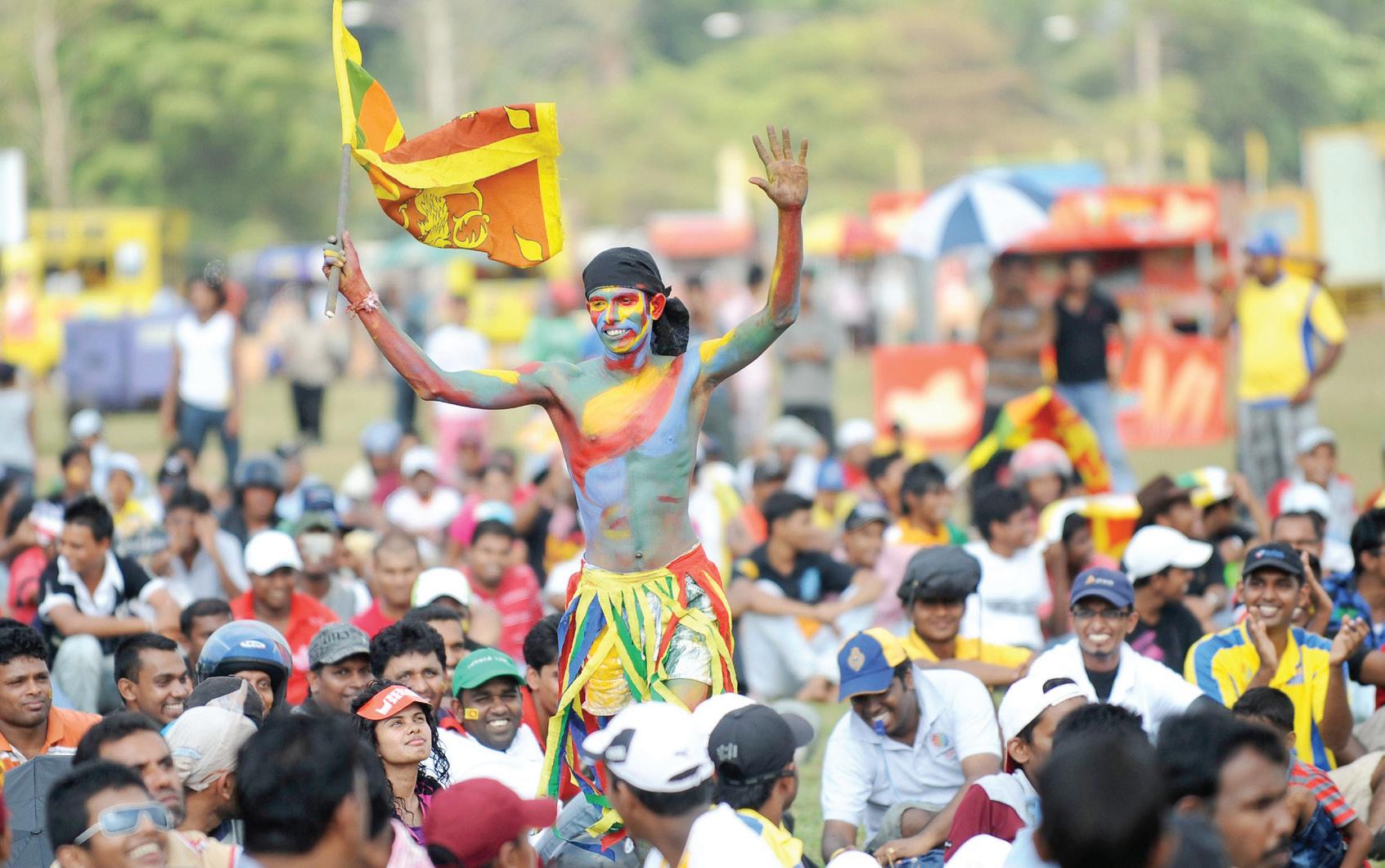
From the outset, India were a team possessed. After losing a toss that in itself was dramatic, they were prowling tigers in the infield, with Suresh Raina and Yuvraj Singh pulling off stunning saves in the off-side ring reminiscent of a 2007 Australian outfit. Against Dilshan and Tharanga, though, the region between backward point to extra cover is especially crucial and India were ruthless, allowing only two boundaries for the first ten overs, picking up the wicket of Tharanga on the way. Zaheer Khan’s figures read 5-3-6-1, and he gave away his first run after over 3 overs. This is not to say the Sri Lankan top order was playing defensively – it was just that India seemed to be playing with extra fielders. The opening passage of play is best exemplified through the image of the 37-years-49-weeks-old Sachin Tendulkar diving full length on
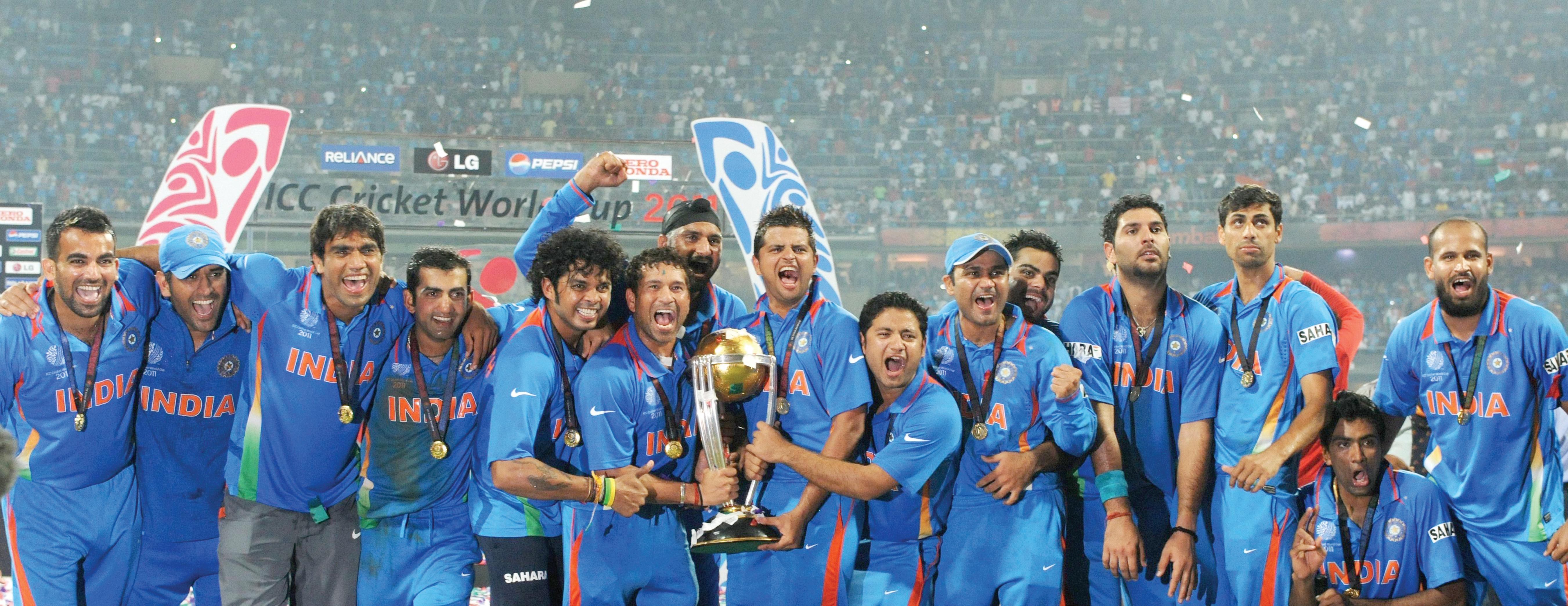
the boundary to save his team just one run.
Sri Lanka, though, did not just make the finals through pure luck. Although wickets kept falling at regular intervals, the support cast to a truly special knock by Mahela Jayawardene was adequate. Jayawardene is one of the classiest batsmen in the game today, and for many, he has the best hands in the game. He works the ball subtly into gaps, picks up the odd boundary with a deft touch here or a graceful stroke straight through the line there, all while playing utterly risk-free cricket. Thisara Perera, a day before his 22nd birthday, closed out the innings superbly with a run for each of his years, at a strike rate of 245. India, who at one stage looked like chasing 250, was set 275 to win a second World Cup. The match was, at this stage, more in favour of the visiting team. If the toss consigned India to, as the pundits say, 35% chances, chasing 275 under lights against a strong bowling attack definitely did not improve the situation.
And then Lasith Malinga delivered two heartbreaking deliveries that, to many, blasted India right out of the contest. Virender Sehwag was seen as the game-breaker for India. His quickfire 38 in the semi-final against Pakistan was the difference between the two sides in the end, and his disregard for Sri Lankan spinners (or spinners of any nationality, for that matter) was seen as another factor in his importance for this match. He watched on in stunned silence with the rest of the crowd as with the second ball of the innings, Malinga delivered a searing straight ball into his pads which was knocking out the middle stump.
Photos: AP
COVERSTORY
life
Sachin Tendulkar meanwhile, looked ominous, as he has throughout the tournament. Lasith Malinga then sent down a wide delivery that just went away a fraction. Sangakkara pouched a low edge, and at 31/2, the dream was shattering.
At this stage, the only way to sum up the situation would be through the reaction of the crowd. Mumbai was shell-shocked. Two of the biggest fish in the Indian batting line up were gone within the first 40 balls. 245 runs remained, and Murali hadn’t even entered the attack yet. Heads lay in hands, while an entire nation barely dared to look on.
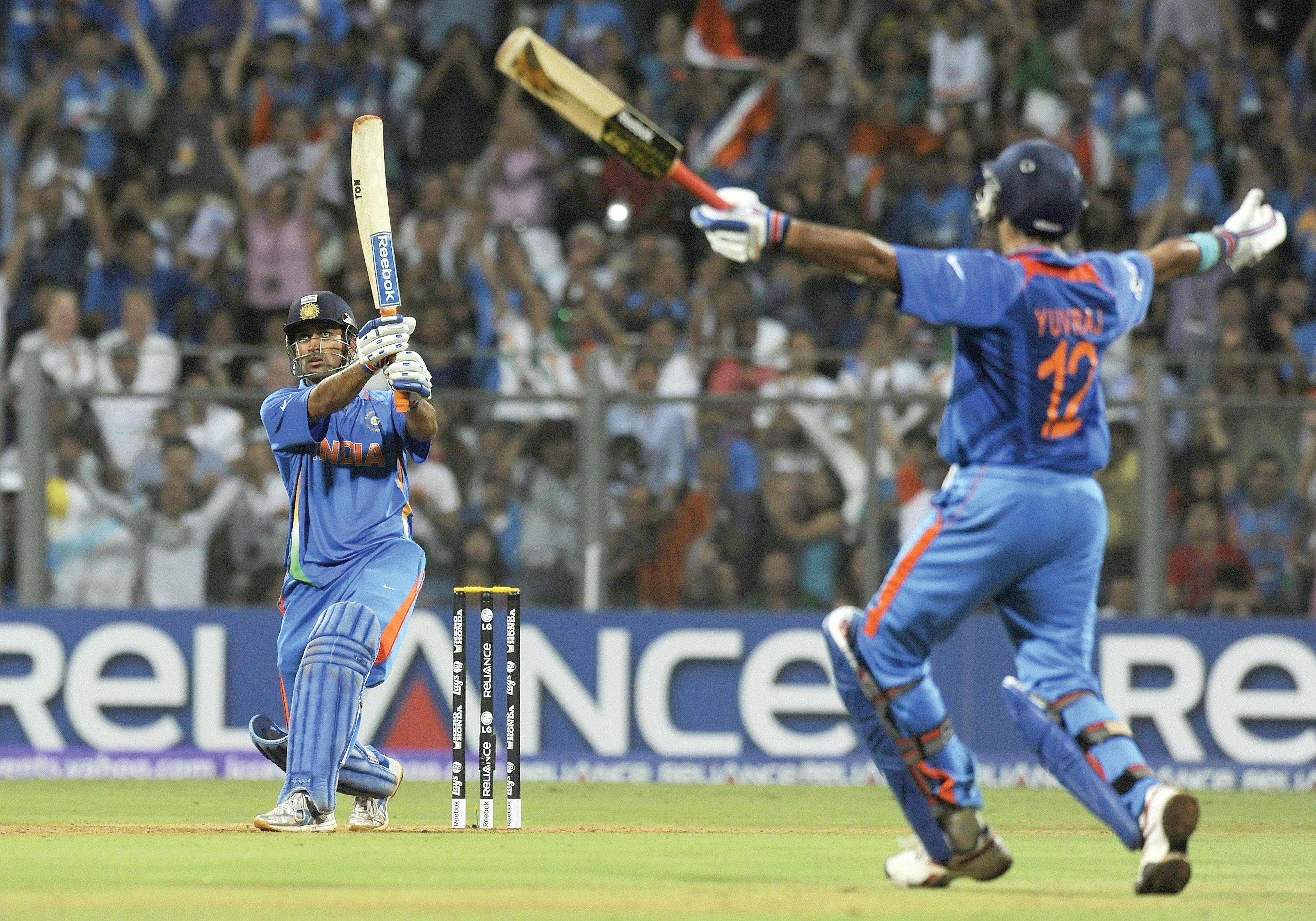


Virat Kohli and Gautam Gambhir, team mates at Delhi, then produced a partnership that has not been mentioned much in the aftermath of this match. The 83-run stand stopped the fall of wickets, established a base for the in-form middle order and most importantly, kept the scoreboard ticking. If not for a freak one-handed caught-and-bowled from Dilshan, to remove Kohli, these two looked well set to take India all the way.
Indian fans awaited Yuvraj Singh, who has been their talisman this tournament and had a crucial part to play in this match. However, instead entered the captain. There was a huge roar, but it was followed by the unmistakeable whispering of thousands of spectators: Why is he here now? He is not in form.
Continued on page 22
The nail-biting night when an entire nation came to a standstill lived up to its surreal build-up
www.indianlink.com.au
Road to semis
India’s ride to World Cup semi-finals was often a nerve-wracking affair, notes RITAM MITRA
India’s journey in the tournament wasn’t an easy one. Playing in the unpredictable Group B, India’s only wins over Test playing nations were against Bangladesh and West Indies – the two lowest ranked ODI teams of the major countries. Questions were raised over fitness, fielding and bowling – but as the road began to twist and turn, so too did India’s mettle grow ever stronger. India’s path to the semi-finals looked like this:
Game One: India 370/4 def.
Bangladesh 283/9
The drama unfolded from the very first ball of the tournament. Virender Sehwag, ever the mercurial opener, blasted the first ball of the World Cup for four (and proceeded to repeat this first-ball murder in India’s next four matches). Sehwag continued to pillage the shell-shocked Bangladeshi attack, compiling 175 violent runs, while Virat Kohli came up with a fantastic ton on World Cup debut. India amassed 370 in a brutal welcome to the tournament for the packed house at Dhaka. A spirited Bangladesh reply no doubt worried Indian fans; but India had already bettered 2007. The journey was underway.
Game Two: India 338 tied with England 338/8
The mother-in-law of all cliffhangers. After a typically serene century by Sachin Tendulkar, India amassed a total few gave England
Continued from page 21
M.S. Dhoni. His walk to the crease in itself was purposeful. Dhoni emanates such strength with each stride, and it is not just physical strength that he exemplifies. His eyes were steely, his movements were precise and his body language was fearsome. Even though the match was well in the balance at this stage, and Dilshan had just celebrated wildly at taking the stunning catch, the mere presence of Dhoni in the middle seemed to belittle everyone else. Sri Lankan heads began to droop.
Dhoni and Gambhir’s 109 run stand was the epitome of composure and intensity. Dhoni, apart from a nervy swipe in his first over, barely played a false stroke. They ran like horses, turning ones into twos even though both were struggling with back problems. Dhoni had just kept for 50 overs while marshalling his troops, while Gambhir had been out in the middle for 20 overs already.
Muralitharan was nurdled and nudged, Randiv was manoeuvred beautifully, and every single bad ball was punished. The pressure was telling on the bowlers as well – Perera, normally known for his consistent length and stump-to-stump line, served up some rubbish short and wide deliveries which Dhoni duly murdered. Sangakkara looked extremely worried, and he had reason to be.
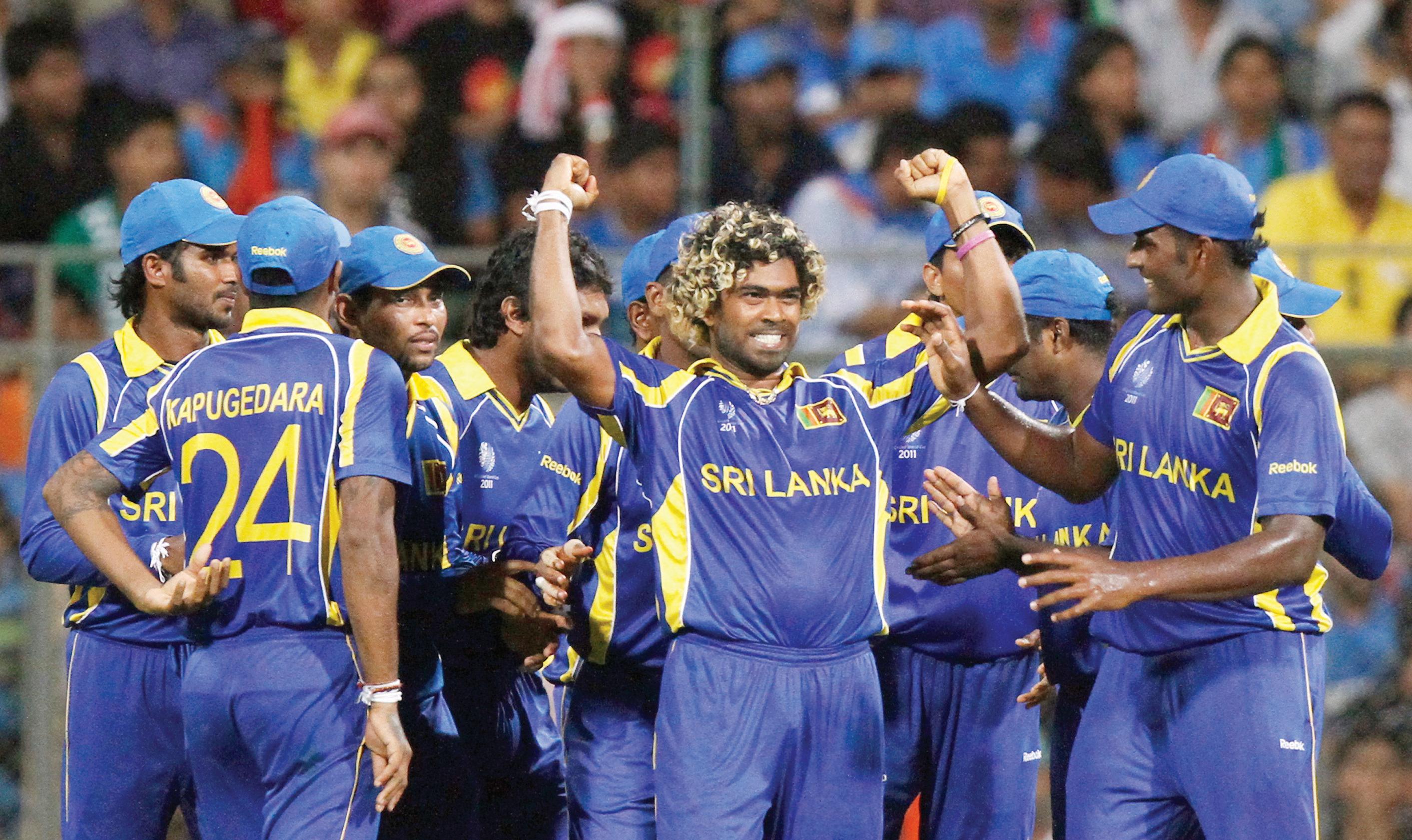
Gambhir played a sublime innings but
any hope of chasing down. Then came one of England’s finest ever one-day innings, a sublime knock from skipper Andrew Strauss, who smashed 18 boundaries and a 6 in his 158, as England raced to 281-2 after 39 overs.
Zaheer Khan entered the attack soon after and promptly made the pitch look like a minefield, taking 3/13 in his last three overs to turn the match well and truly on its head at the 46 over mark. At which point, Swann, Bresnan and Shahzad combined to turn the match England’s way again; each of them hitting a six to help England salvage a tie. Neither side knew whether to be happy or disappointed.
Game Three: India 5/210 def.
Ireland 207
Zaheer Khan continued his impressive form, picking up 3/30 against an Ireland outfit coming off a scarcely believable win against England. It was at this point though, that eventual Player of the Tournament Yuvraj Singh truly stamped his authority on the Cup – picking up 5/31 along with his second consecutive half-century to guide India home from a somewhat sticky situation, Yuvraj more or less carried India home on his own with an unbeaten 50.
Game Four: India 5/191 def. Netherlands 189
India’s second match against an Associate nation resulted in a very similar pattern of play
departed 3 short of a deserved century with the score at 4/223, and although there was still tension, it was purely a product
– India bowled Netherlands out for a paltry total, once again thanks mainly to Zaheer and Yuvraj; Yuvraj bagged 3 half-centuries on the trot, and his second man-of-the-match award, taking India home with an undefeated 51. No one else in the match crossed 40.
Game Five: South Africa 7/300 def. India 296
Another day, another Tendulkar ton, and another defeat snatched from the jaws of victory. India, at 1/267 in the 40th over, looked set for a mammoth total. What followed was a procession of wickets so bizarre that even Steyn looked bemused when he finished up with 5/50 in an Indian collapse of 9/29. The South Africans kept building partnerships, and while Harbhajan and Zaheer were impressive, Nehra leaked 16 runs in the first four balls of the last over to cap off a farcical performance for the hosts. The doubters now had their ammunition.
Game Six: India 268 def. West Indies 188
What looks like a comfortable 80 run victory on paper will be remembered for the struggle it was on the field. Yuvraj Singh hit his first ODI ton in almost two years, as India lumbered to a par 268. It didn’t look like enough when Devon Smith carried his side to 2/154 after 30 overs. But Zaheer Khan once again took centerstage. His performances with the new
into the stands over long on. Ravi Shastri exploded on air. The crowd, who had already begun partying, went into hysterics.
ball have been bettered only by his fantastic control of reverse swing in the late overs, and with a superb slower ball to bowl Smith, he started a mesmeric batting collapse in the 31st over. Suffocated by Ashwin and deceived by Yuvraj, the last seven in the West Indies batting line up managed a grand total of 15 between them. India finished second in the group.
Quarter Final: India 5/261 def. Australia 260/6
A match worthy of a final came much earlier than expected. Australia, as a result of a dramatic loss to Pakistan, finished 3rd in their group and thus were left looking ahead to a match against the heavyweight Indian side. A defiant, spine-tingling century from Ricky Ponting in a gritty “I-told-you-so” fashion saw Australia post a tricky 260, with Ashwin, Yuvraj and Zaheer impressing with the ball. India were given the most explosive of starts by vintage Sachin, but when Yuvraj and Raina came together the match was in the balance. Yuvraj decided that this was a good time to score yet another undefeated half century, in the process picking up his fourth man-of-thematch award from the 5 Indian win so far this tournament, as India pulled off a stunning victory. For the first time in the tournament, India looked like genuine contenders. For the first time in 12 years, we were going to have new world champions. Australia was finally out.
knock. Ponting and Gilchrist may have played blinders in the past two finals, but an out-of-form captain playing an innings of this calibre with the pressure of a chase lends his story with an even more poetic front. Dhoni’s innings beggared belief and redefined courage. The easiest thing to forget is that it was purely Dhoni’s decision to move up the order and shoulder even more responsibility for the
‘powerplay’ to see India to within just one shot of history.

And what a shot it was. Dhoni, who built up a character, a reputation, and a career on his ability to stamp authority on the opposition, saw a length ball from Kulasekera. An absolutely terrifying swing of the bat ensued, and the ball was launched
M.S. Dhoni, who stood alone watching the ball disappear. The dressing room erupted. Sachin Tendulkar came running out with teary eyes and a smile. Hundreds of millions embraced each other. Dhoni stood still, an image that will endure for a lifetime.
Emotions aside, Dhoni’s knock was amazing for what it was – a superb captain’s
But although the nation is celebrating and the party will continue for weeks to come, everyone’s thoughts are with one man. Although everyone will spare a thought for the Dravids, Gangulys and Kumbles who put in years of hard work to send India in the right direction, one man endured six World Cup campaigns, each one ending in disappointment. One man has scored more World Cup runs and centuries than any other batsman in history. As his team mate Virat Kohli put it, “He has carried the burden of the nation for 21 years, it is time we carried him on our shoulders.” Each and every player has dedicated this win to Sachin Tendulkar, but he dedicates it to the nation. His elation was summed up when he said, “This is the proudest moment of my life”. Tendulkar’s tears of joy were shared by the entire country, and it is apt after years of heartbreak that, when he eventually does hang up the gloves, he will have gone out a world champion.
A more perfect script could not have been written.
22 <> APRIL 2011 INDIAN LINK COVERSTORY
Lasith Malinga celebrates the wicket of Sachin Tendulkar
Photo:AP
A potpourri of emotions
In perspective, the India-Pakistan match achieved little more than a win and a loss
BY GAURAV PANDEY
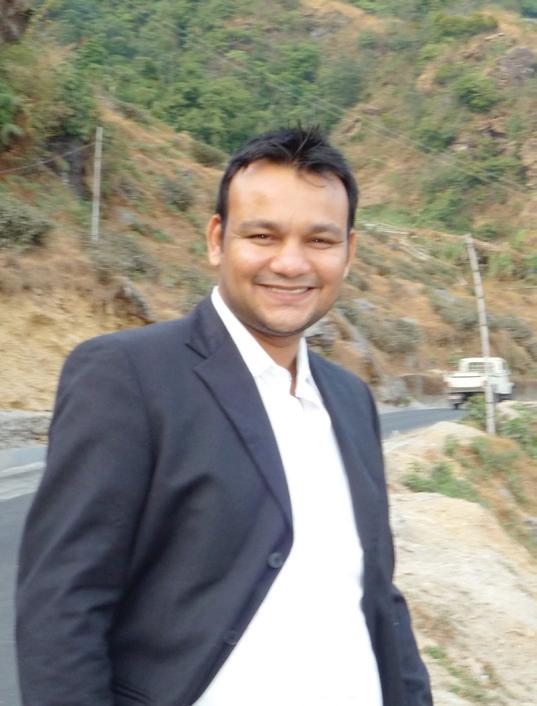
Without a doubt, the greatest – perhaps only – contribution of Saddam Hussein to the world was the phrase, “the mother of all battles.” In the lead up to the India-Pakistan World Cup semi-final clash, the phrase was repeatedly abused in the subcontinent media by tempestuous anchors who seemed to know only one way to communicate: by screaming.
Dubbed almost everything that could imply it was end of the world, in essence, the match was just that – a cricket match. The attempts to make it sound like a panacea for all the problems that ever beset these two nations were – in plain words – unfortunate.
Uncertainty and ignorance are the breeding grounds for madness. Anchors on 24-hour news channels screamed on top of their voices; cleverly clipped old – often unrelated – video clips were shown repeatedly to incite passions; the opinion of experts – mainly journalists and retired cricketers – was sought on every single scenario; numerous rituals were telecast live; and every word uttered by the cricketers was analysed threadbare. There is a fine line between informing a nation and misleading it. In India and Pakistan the media enjoys enough freedom and power to do both, and more often than not, the line between the two is blurred.
The media in both countries grossly –perhaps deliberately – over-estimated the worth of the contest. False hopes were sold on television without a trace of responsibility
to naïve multitudes. The build-up to the match was devoid of any logic and far from objective truth.
Pakistan is a nation grappling with numerous conflicts: it is a country in which one has learnt to shrug off a bomb blast as one would a minor traffic accident; where an abundance of talent is nullified by an abundance of intolerance; a nation burning its blood fighting someone else’s war; a nation fluttering under a mountain of external debt; a nation where feudalism continues to oppress the downtrodden; and a nation where, for many, decline has become a fact of life.
The battered populace deserved some happiness, but sadly the media – in its myopic pursuit of television ratings – falsely raised their hopes to a level from where it could have only gone one way: down. In reaching the semi finals, the Pakistani team, which was till recently confronting painful questions about the debauchery of three of its most promising players and embarrassment from inept officials, had already achieved far more than what was expected of it.
In India, histrionics had reached a crescendo. Not long ago, modern legends such as Kumble, Ganguly, Laxman, Dravid and Sachin played the game with such gravitas that it made one wonder if being ‘sorted’ translated into being prolific on the field. In comparison, we seemed to be in a world many times louder. Most of this ‘golden generation’ has retired or fallen out of favour. The whole nation was on the mission of gifting Sachin the World Cup. A spirit of triumphalism, a do-or-die madness and suffocating vehemence took over, even as the nation continued to grapple with nagging questions on corruption and poverty.
Then, there were the usual suspects: unreasonable fans; a heady influx of glamour and riches; and the media.
To make matters worse, politicians from both sides jumped in to ride the cricket wave and – for a brief while before the game –political posturing and diplomacy seemed to take centrestage. Interesting as it was to see the Indian Prime Minister Manmohan Singh and his Pakistani counterpart Yousuf Raza Gilani together, it was never going to be a pathbreaking meeting, considering the deep-rooted problems between the two countries. It was ironical though, to hear phrases such as “the fourth world war” and “opportunity for peace” used to describe the same match. By then, one should have been expecting such things!
If the match managed to live up to the hype, it was because two nervous teams made for an equal match. The quality of cricket wasn’t first-rate, but the contest was. It is not easy to be a loser when the stakes are so high. India will look back at the match with relief, for essentially the difference between the two teams was a legend who came to the match a bundle of nerves, but wrapped in luck. No team can realistically expect to win after giving Sachin Tendulkar four chances. He made them pay, though it was a knock of outstanding shots as well as awkward misses. On the other end, between two wonderful cameos from Virender Sehwag and Suresh Raina, the wickets fell regularly. Pakistan’s best moments came with the ball. Wahab Riaz, who many before the match wanted to make way for a retiring Shoaib Akhtar, bowled his heart out, taking a five-for in the process. The spin trio of Mohammad Hafeez, Shahid Afridi and Saeed Ajmal for a long time, did a wonderful job of containing
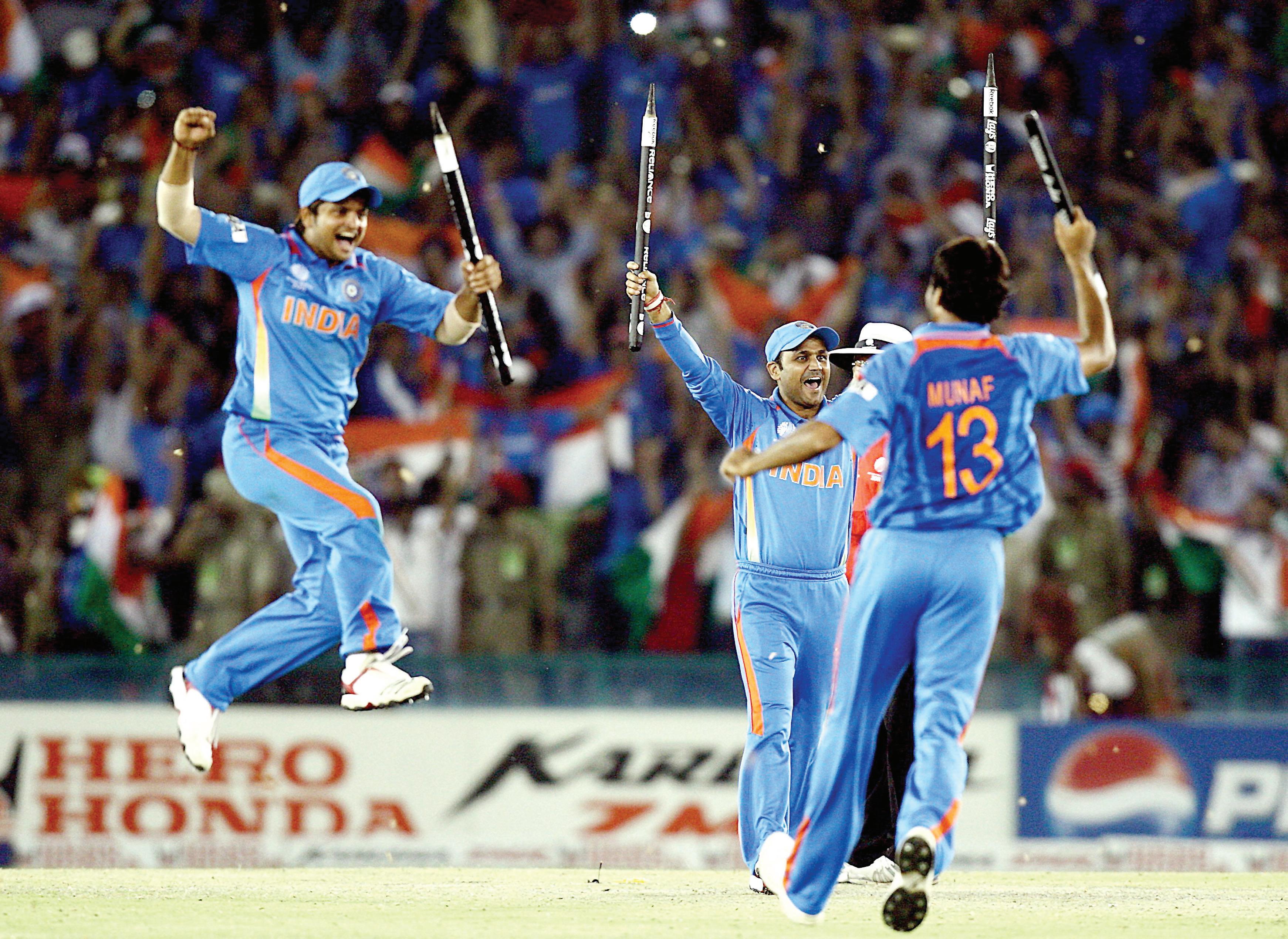
the Indian batting line-up.
Pressure makes one do strange things and 260-odd runs in a World Cup semi final is not an everyday chase, certainly not if it happens to be the most hyped match in the history of the game. Despite a promising start and some resistance from the young breed, Pakistan’s batting ultimately caved in. India panicked, but Pakistan panicked even more. India was the less flawed team on the day, it was the team that managed to keep its nerve. Aided by sharp fielding, stingy bowling and colossal home crowd support, they managed to overcome the Pakistani challenge, despite one of their most bedraggled batting performances in the tournament.
The story of the match cannot be complete without a mention of the fans. Imagine a sea of humanity on steroids in an unending session of wild head-banging, and that was the kind of fervour this match induced, especially as India inched towards victory. The stadium crowd cheered, sang and prayed; at homes, people remained glued to the television. The two countries came to a standstill. Soon after the match, frenzied celebrations engulfed India. Fireworks lit up the Mohali sky. Hoards and hoards of screaming masses swarmed the streets, blowing horns and bursting crackers. The party had only begun.
Elsewhere in Pakistan, the mood was sombre. Cheerful congregations had turned morbid. It was the time for conspiracy theories. Thousands of fans took to the streets in protest, they blamed everything from bad catching to irresponsible shot selection. Their World Cup dream had been so cruelly culled. Sadly, for many, life would be normal soon.
APRIL 2011 <> 23 INDIAN LINK
www.indianlink.com.au
Photo: AP
India still in carnival mode
Be it celebrities like Amitabh Bachchan or IT professionals or common citizens –people all over the country hit the streets following India’s World Cup win with the festivities continuing into the early hours of the next day.
Youngsters were seen holding national flags and singing and dancing away to Vande Mataram , Chak De! India and Sabse aage honge Hindustani
“We went to India Gate and celebrated with all our friends. All over, people were screaming and shouting and dancing to celebrate the historic win. We simply loved the enthusiasm. We also saw bikers performing stunts at India Gate,” said Mohit Verma, who works with a software firm in Delhi.
Every stranger became a friend and class distinctions blurred as just about everyone came out onto the streets, leading to huge traffic snarls.
“The traffic was such that some people who wished to go to India Gate had to park their cars at Pandara Road (about 1 km away) and then walk to India Gate. We had to do the same,” said Radhika Sharma, a media professional. “Even Prithviraj Road (in the heart of the capital), which is usually quiet and relatively traffic-free, was jampacked. There were two cars moving parallel to
each other and people in both the cars were waving the national flag and cheering all along,” she added.
People – their faces painted in national colours – cruised along on their bikes and in their cars while screaming and shouting.
“We went to Centre Stage Mall (in Noida) and people went crazy there. They were blowing trumpets and most of them were wearing India T-shirts and had tattoos. It was so much fun,” said Sucheta Bhatt, an HR professional.
Every stranger became a friend when Indian skipper Mahinder Singh Dhoni ended the match by hitting a spectacular six.
“We hit the streets immediately after the win. We were at a pub and the whole crowd came out on the streets. I knew everyone will be on the roads once India wins because I saw that during the India-Pakistan match,” Shashi Verma, a freelance writer based in Mumbai, said.
“I wanted to be part of the revelry. It was crazy on the streets. So many people were out. Dancing to the beat of dhols I’ve never witnessed anything like this before,” Verma added.
Kinshuk Pal, who works with a production house in Mumbai, said: “I was watching the match at my cousin’s place. We were eight of us and when Dhoni hit that six, all of us were ecstatic and we ran
out on the streets to join others. We went around the roads for almost two hours, screaming loudly with people we didn’t even know. It was a great feeling. It was like a festival.” In Chandigarh and Mysore, too, people couldn’t stop themselves from coming onto the streets to cheer for the Men in Blue.
“Everyone was dancing on the roads. There were firecrackers. It was like we were celebrating Diwali. They were shouting slogans like Humse jo takrayega choor choor ho jayega ,” said Shivani Ganju, a media professional from Chandigarh.
Sidharth Shandilya, an IT professional in Mysore, said: “All my colleagues hit the road as soon as Dhoni hit the sixer. They didn’t know who they were hugging, congratulating or dancing with, but people partied till 4 am. It seemed the whole country was celebrating India’s win. It was a sight to watch.”
On Saturday night Bollywood megastar Amitabh Bachchan, too, joined the jubilant crowds with son Abhishek and daughter-in-law Aishwarya Rai on Mumbai streets.
Fashion buyer Alka Nishar of AZA store was delighted with the way the Indian team dedicated the victory to Sachin Tendulkar.
“Only in India will you see the entire team dedicate their victory to one player. Only in India will you see the players lift their (South African) coach and honour him for their victory! Only in India will you see a Pathan lift Tendulkar to honour him and respect his dedication to cricket. No race, creed, colour, caste will ever separate our unity and integrity. We are Indians and we are one!! Jai Hind! World Champions...,” said Nishar.
Mumbai still soaking in World Cup win
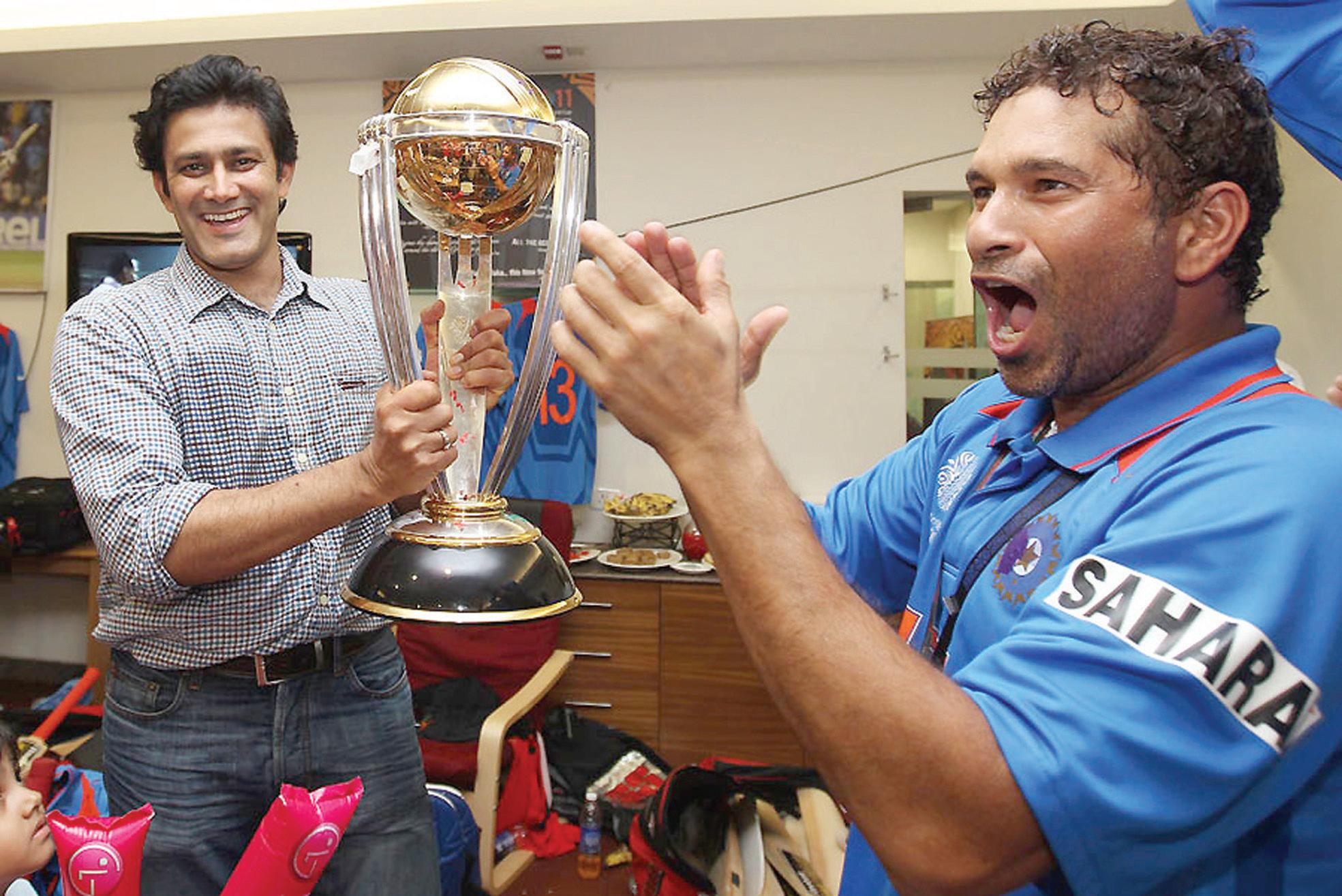
Security forces retreated to their bunkers, and shops and establishments opened to brisk weekend business as Mumbaikars resumed their daily course of life the day after a wild, unforgettable night of celebration.
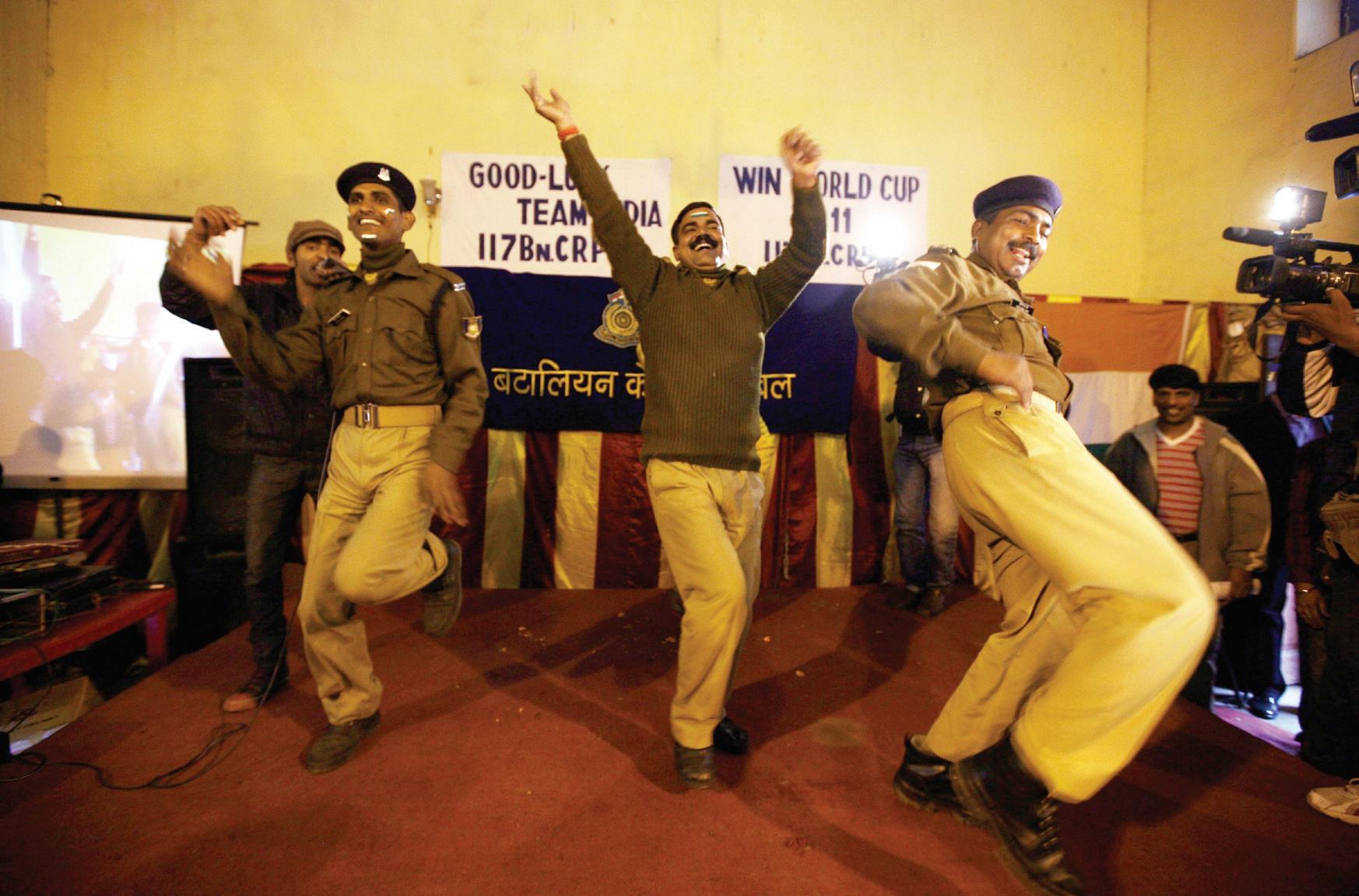
India’s win against Sri Lanka at Wankhede Stadium in south Mumbai made history for the city.
All security measures, barring in some pockets, were withdrawn from south Mumbai. And the next day, the forces went back to their respective camps and
the city came alive with outings, holiday crowds and tourists.
After nearly a week of tight security in south Mumbai, even the police took it easy as the World Cup final ended without a single untoward incident.
Even the suburbs returned to their usual active self. People were seen out on the roads, going about their routine chores with happiness written on their faces.
The crowds prepared to throng shopping malls, cinemas and multiplexes. People were also seen jogging on Marine Drive, Chowpatty, Five Gardens, Juhu Beach, Bandra Bandstand and queues were forming for the boat trip to Elephanta Islands and Mumbai Harbour joy rides.
However, the backbone of Mumbai’s night life – pubs and clubs – came alive only later in the evening after having worked practically till dawn.
Happy ‘next-door-brother’
India has won: Pakistan
It would have been wonderful if Pakistan had won the Cricket World Cup but the Indian team deserved to win, said many Pakistanis who avidly watched the final between India and Sri Lanka and cheered their “next-door-brother.”
Unlike India, there were no firecrackers or euphoric crowd running on the streets of Pakistan’s cultural city, but the people supported the Indian team in their grand victory in Mumbai.
“We would have loved to see Pakistan winning the World Cup, but the Indian team deserved it because they played well. So three cheers to India,” said Saima Mohsin, an architect.
Though in the beginning there were some who cheered for Sri Lankan team, but when it became clear that India was close to victory, everyone started cheering for India and they were happy that India had won the cup. ‘When Pakistan lost to India in the semifinal, I knew I was supporting India because we two countries are very close, like brothers, so I cheered for India, all through the match,” said Ehsan Ul Haq, an IT consultant.
Congratulations for the Indian victory started pouring on social networking site Facebook.
Zahir Rahimtoola, a businessman, wrote: “Congratulations India.....very well crafted victory by Dhoni and his men.”
Shamira Mitha echoed the same sentiment: “The best team did win!!! Well done India....!”
According to designer Huma Adnan, the Indian team was the strong contender to win the World Cup from day one and looking at the way India played, the win was no surprise.
“The Indian team had a strong batting line up, everyone knew that. In the final, they just proved how much they deserved to win this cup. They wouldn’t have won if they were a weak team. Chasing more than 270 runs effortlessly is no joke and Indian team did it wonderfully,” she said.
Bilal Ahmad, a retailer, feels the final match belonged to youngsters of the team who rose to the occasion and kept their cool in the nerve-wracking situation.
“When you lose two early wickets, and that too senior players, there is a lot of pressure on the middle-order batsmen, but Gautam Gambhir and Virat Kohlithe two young lads did a commendable job. It was not at all an easy situation with millions looking at you to win the Cup. The result could gone have either way if they had lost their cool,” said Ahmad.
But there were many people who did not watch the final because Pakistan was
24 <> APRIL 2011 INDIAN LINK
Anil Kumble gets to share the moment
Photo: AP
Indian soldiers, stationed in Srinagar, break into dance Photo: AP
out of the game.
“I know India has won, but I don’t care. When Pakistan lost, I had no plans to support any other country. I love my cricket team and inshaallah ! we will win the next World Cup final, and then you can ask me how I am feeling,” said Mushtaq Hassan, a local.
Another generational change
If the previous edition of World Cup Cricket marked a shift in the way many in this nation kept track of matches, shifting from transistors to FM-radio enabled phones, the tournament this year saw another generational change.
“I could watch the match on the move and caught up with the rest at home,” he said. “Not that it was cheap. But one can always spare a few hundred rupees –anything for cricket.”
Nishant Ugal, an Airtel subscriber, could not help flaunt his mobile TV service and shared his tablet screen with eager onlookers. “The speed was amazing, like television on the move – no strobe effect and a clear picture.”
Rakesh Nagar, a freelance photojournalist using Reliance Communication’s 3G services for the past one-and-a-half months, also believes that as long as the service is good, money does not matter.
“I had an important meeting scheduled with an overseas visitor in the evening –and as you would guess he was not from a cricket-playing country. But I went ahead to fix the meeting since I knew I could always watch the match live on my mobile.”
New generation mobile phone services also offer features such as video-calls, video streaming and applications to access on the i nternet at superfast speeds on a wide variety of both mobile phone and personal computing devices.
But many in this cricket-crazy nation agree – the World Cup was an eyeopener for the dynamics of 3G telephone services in India and the upcoming Indian Premier League will certainly take it to the next level.
Gilani congratulates Manmohan on India’s World Cup win
Prime Minister Yousuf Raza Gilani has congratulated Indian Prime Minister Manmohan Singh on India winning the cricket World Cup final and expressed hope that the sporting link between their two countries will be fully rest ored in the near future.
India had moved into the final after beating Pakistan by 29 runs at Mohali – a match watched by both Gilani and Manmohan. The Mohali meeting between the two leaders was dubbed as cricket diplomacy.
Gilani commended the excellent performance of the Indian team throughout the tournament as well as in the final match, reporte d Associated Press of Pakistan.
He said the World Cup has been successful in bringing the cricketing fraternity even closer and making this sport more popular around the world.
The prime minister noted that the March 30 India-Pakistan match, which generated exceptionally high excitement and interest among the people of both the countries, also provided an opportunity to their leadership to advance the peace process and build bridges o f peace, trust and confidence.
He expressed hope that the sporting link between India and Pakistan will be fully restored in the near future and the
sportsmen of both sides will continue to play their important role for peace, friendship and amity between the two countries.
Average run-rate highest in 2011 World Cup: ICC
The 2011 World Cup was the first in history to have an average run-rate of more than five per over, the International Cricket Council (ICC) said on April 4.
The average run-rate stood at 5.03 per over in the tournament that concluded on April 2, an ICC statement said.
The previous highest was 4.95 runs per over in the 2007 edition in the West Indies. This trend goes on to show how scoring rate has changed since the early editions in 1975, 1979 and 1983, when 60-overs-a-side matches were played.
In contrast to the overall trend of an increasing run rate, the average runs per wicket has remained consistent throughout the history of the competition. This is with the slight exception of 1979, which was played in disappointing weather early in the English summer.
“The statistics are a clear illustration of the exciting cricket that was played during the ICC Cricket World Cup 2011,” said David Richardson, ICC General Manager (Cricket).
World Cup final viewership broke records
Television viewership increased four times when India and Sri Lanka clashed in the World Cup grand finale with 67.6 million viewers with cable and satellite connections watching it for more than four hours, rating agency Audience Measurement and Analytics Ltd. (aMap) estimated recently.

The match on April 2 got ratings of 13.7, which is the highest for any event so far and when the winning moment arrived, the ratings peaked to 21.44.
“(April 2’s) viewership broke all records. Every Indian was glued on to TV to see the big win! Sixty-four percent of homes (cable and satellite) were watching the game…The match was on for an average of four hours in every household,” Jiniti Shah, vice president, aMap said in a statement.
“Viewership increased almost four times yesterday. Until the quarterfinals, India’s matches had an average rating of 3.7,
the quarterfinals saw it increase to 5, the semifinal ratings went up to 11 and April 2’s big win made it 13.6,” Shah added.
The semifinal between India and Pakistan was watched by 67.3 million people with cable and satellite connections.
In a thrilling match, India defeated Sri Lanka by six wickets to win the World Cup for the second time after 28 years. People across the country came out on streets to celebrate the historic win.
Obama hails India’s victory in World Cup: envoy

US President Barack Obama congratulated the Indian cricket team - “Kings of Cricket” - for bringing back the World Cup to the country after 28 years, US Ambassador Timothy Roemer said recently.
“On behalf of the people of America and President Barack Obama, we congratulate heartily the Kings of Cricket and the Kings of the World for bringing the Cup after 28 years,” the US envoy told reporters after meeting Foreign Secretary Nirupama Rao.
Using words like “spectacular” for India’s World Cup victory, Roemer was equally generous in his praise for Indian
cricket captain M.S. Dhoni.
“We want to congratulate the magnificent decision-making of the Indian captain, Dhoni, who was flawless in exercising great judgement,” he said. Roemer said he had plans to visit India Gate in New Delhi area, which was filled with partying people on the night of April 2, but was dissuaded by his security advisors.
The US envoy had a special word for the Indian security forces for having successfully and tirelessly conducted a safe World Cup.
He also turned his focus on IndiaPakistan relations, pointing out the cricket had been playing an important part of the revival of contacts.
“You have three things working at once in these talks. You have cricket diplomacy, you have the real substance and engagement on issues, which is critical, and then you have the people-topeople ties. That is something which the US applauds,” he said.
Indian Prime Minister Manmohan Singh had invited his Pakistani counterpart Yousuf Raza Gilani to watch the semifinal match between the two South Asian neighbours at Mohali.
APRIL 2011 <> 25 INDIAN LINK
IANS
Disappointed Sri Lankan fans after their team’s defeat
Photo: AP
Fans in Johannesburg celebrate the Indian win
Photo: AP
Teaching kids the concept of sewa
Balagokulam kids learn that ‘selfless service’ is deeply embedded in Hindu values and culture
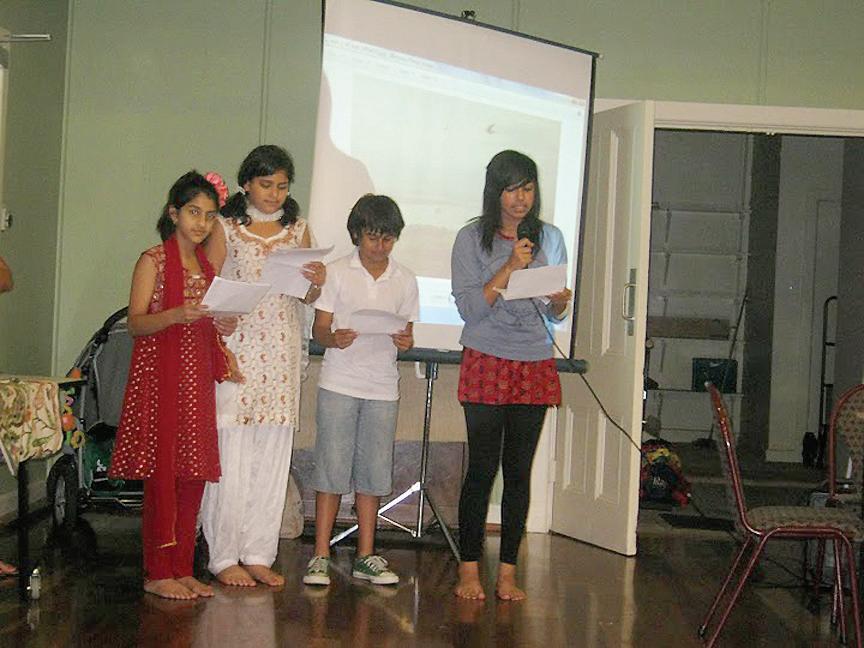
Balagokulam Melbourne’s March session served as a reservoir of knowledge for little children who came to learn skills of life. It was centred around the concept of Sewa, the Sanskrit word meaning ‘selfless service’ or giving back. “Iswarah Sarva Bhutanam Itruddesha Arjuna Tishtati” means that the same God who is present in me is also present in other human beings. Young children have very receptive minds so once they are taught about sewa, what naturally follows is why, how and to whom the concept of serving applies. Children need to learn that serving man and other beings is serving God. Sewa also includes the environment and living in harmony with nature.
In Balagokulam, the theme of sewa was developed more towards caring and sharing among young children, and also towards parents and community. At the beginning of the event, the children were engaged in various activities such as offering flowers and prasad to God, and prayers in Sanskrit for world peace. Besides practicing Surya Namaskar and chanting the Gayatri Mantra, the children were encouraged to participate in sewa activities at home, at school and in the community. The whole idea behind this theme was to teach our children to serve and help others from a young age. Parents can also begin to teach their children to consider the feelings of others by teaching them to share with others.
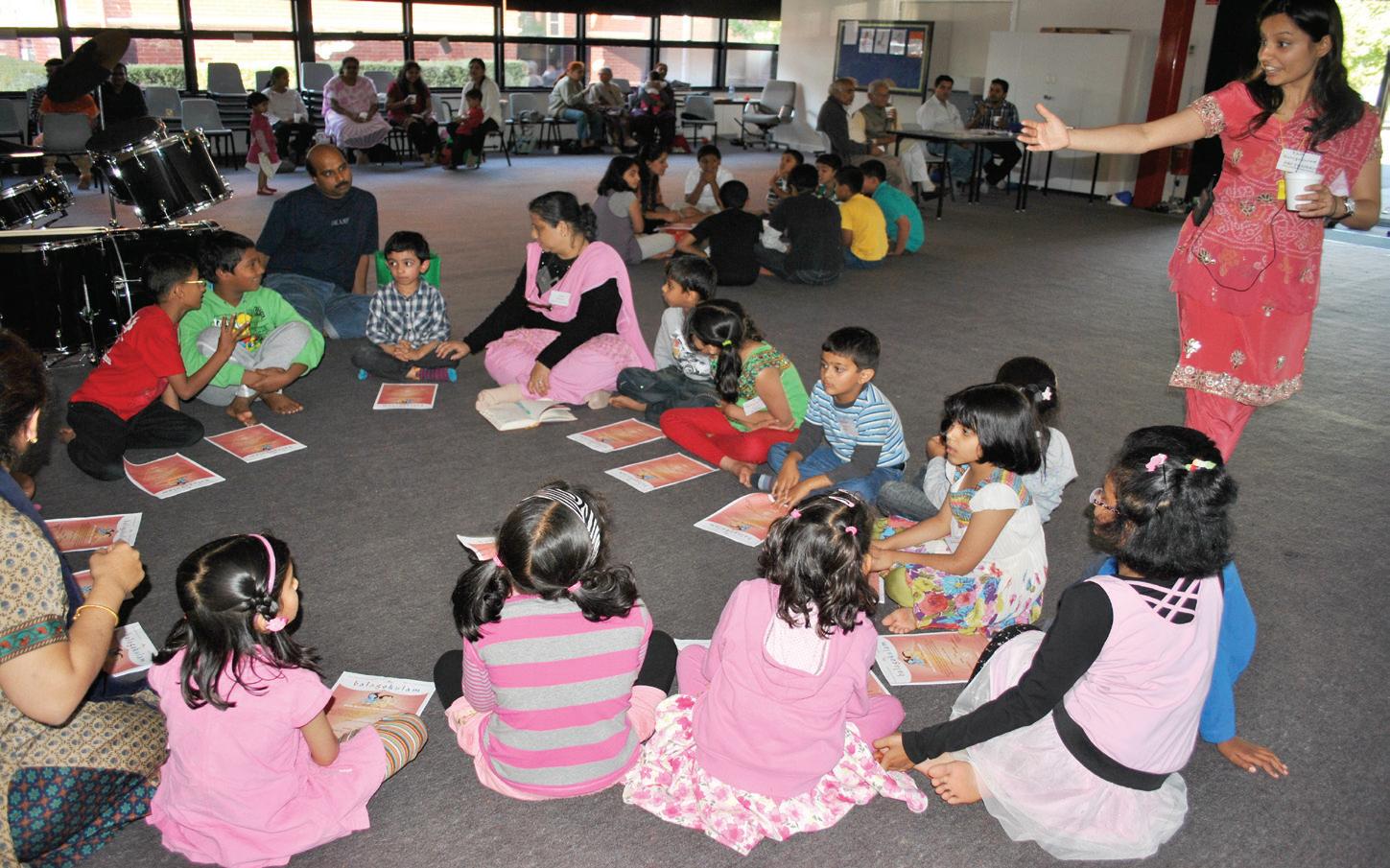
Shikshaks adopted various learning styles and approaches to raise awareness of sewa among children. One of the khels was to answer general knowledge questions based
on cultural knowledge, and for every correct answer the team would receive a letter that would form the sentence ‘Sewa is selfless’. This activity was very successful and enjoyed by the children. Another interactive game related to safety and health issues and how sewa should be done for each other. The children also answered questions based on our daily lives, to learn about the various (simple) approaches for sewa
Balagokulam provided the children a rare opportunity to play other games like ‘Bhai Bhai Kitna Kitna Pani Hey’, ‘Hathi Kee Soond ‘Chor Sipahee’ etc. in an effort to develop healthy friendships and positive engagement among themselves. It is also important to teach the children, through games and sports, to show and express gratitude and love for others. At the interval, the children were served drinks and cakes donated by one of the parents to celebrate the birthday of their child. This generous act of kindness further highlighted the fact that embedded in Hindu values and culture.
The atmosphere during the March Balagokulam was amazing, with young and old together infusing the occasion with a real feeling of community. Balgokulam is no longer only about children; it is now becoming a means for like-minded parents to socialise while participating in activities such as yoga and group discussions ( Furthermore, it was extremely heartening to observe that the children gave their very best during all the activities. Despite being born and brought up in Australia, the kids continued to amaze everyone with their knowledge about Indian culture and heritage. success.
Kashmiri Pandits celebrate Shivratri
Mount Martha included Mr Vasan Srinivasan and Mrs Krishna Arora of the Federation of Indian Associations of Victoria (FIAV), Mr Rakesh Kawra, Vice Consul of the Indian Consulate General, and Sister Margaret Carmel McFaull, OAM – a prominent member of the local community.
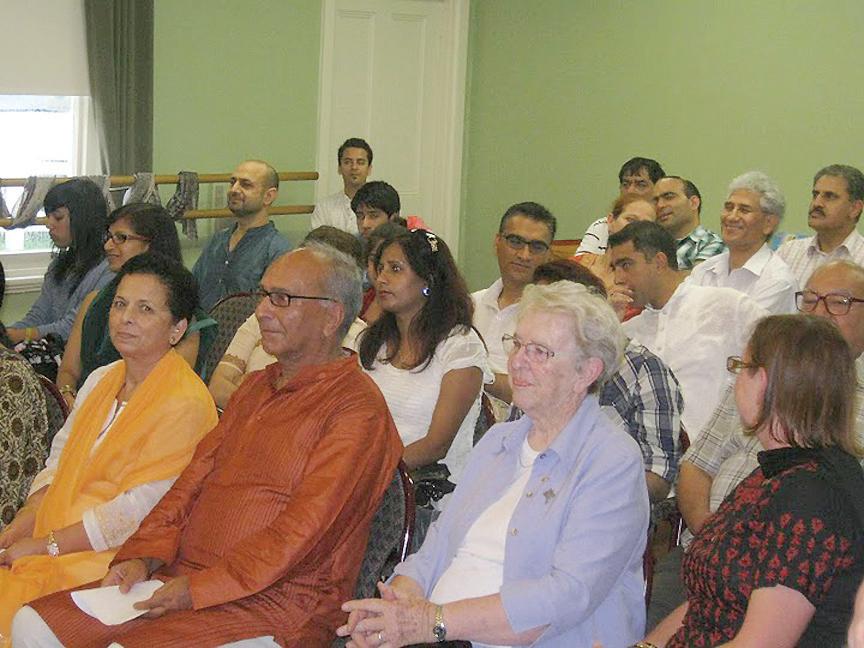
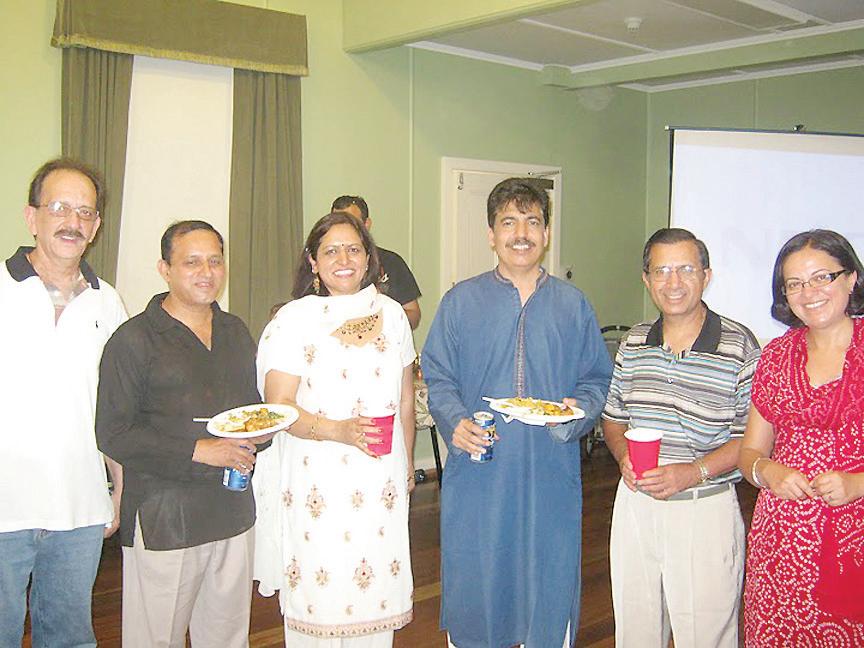
In her welcome address, Anjali Tikoo, President of KPCA said that while those Kashmiri Pandits who had made Melbourne their adopted home had integrated well into the multicultural society to which they now belonged, they had not forgotten how important it was for them to remain connected with their Kashmiri roots.
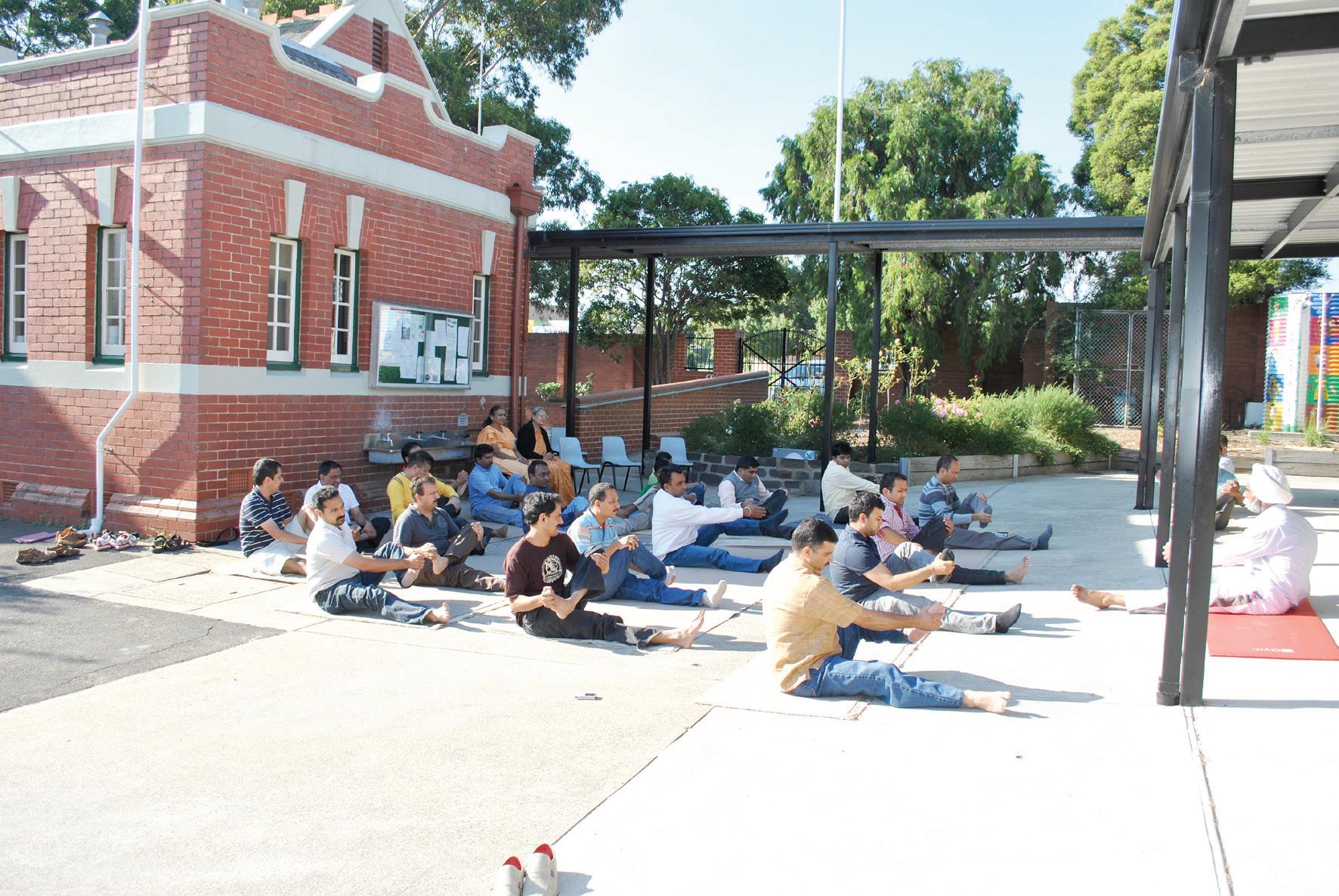
The celebration began with community prayers in praise of Lord Shiva, followed by a sumptuous feast of at least a dozen dishes, all cooked in the traditional Kashmiri style.
There are several legends surrounding the festival of Shivratri and many ways in which it is celebrated. Four beautiful children took turns narrating how the festival was celebrated in Kashmir, highlighting the traditions and rituals which were uniquely Kashmiri. All present were visibly moved by the involvement of children, all of whom were born after the community had been forced out of Kashmir.
This was followed by devotional music, and a “Ruf” dance – the most famous dance form in Kashmir, which is normally a welcoming song for the spring season, but is performed on other happy occasions as well.
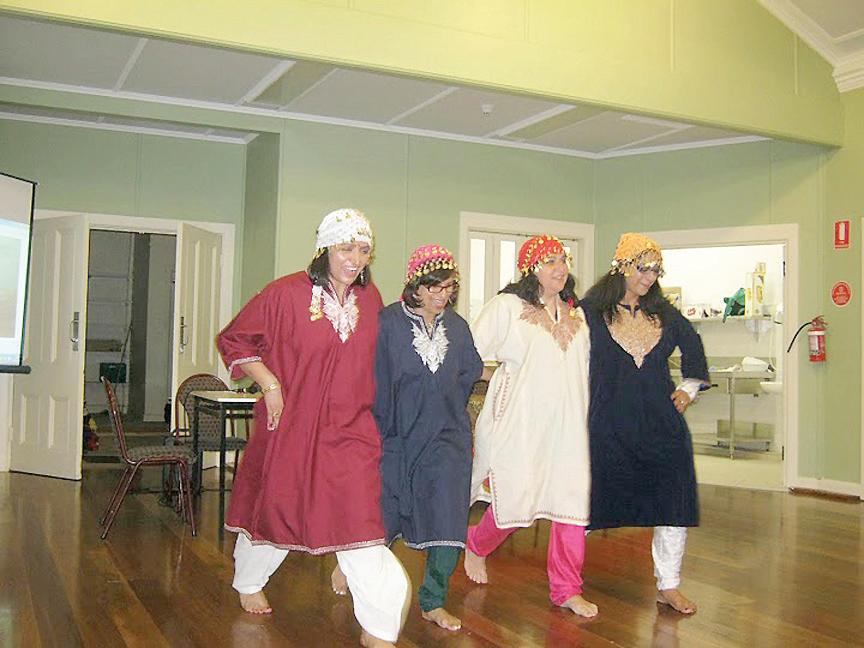
overlooking the bay. Shivratri is an annual festival celebrated by Hindus worldwide, but has a special importance for Kashmiri Pandits because in the Shaivism tradition
followed by most of them, Shiva is regarded as the supreme God among the Grand Trinity of Hindu deities. Those present at the celebrations in
The final and the liveliest part of the programme was a quiz focussing on the history and culture of Kashmir, which was enjoyed by all attendees.
26 <> APRIL 2011 INDIAN LINK
COMMUNITYSCENE
Neeru Thakur
Members of the Kashmiri Pandits Cultural Association (KPCA) celebrated the festival of Shivratri on March 13 at Mount Martha’s Community House – a beautiful venue
Scenes from Shivratri celebrations
Om Khushi
The kids learn aspects of culture while their parents get a yoga lesson
Higher investment in languages proposed
In a bid to clarify speculation around the proposed change to the Victorian Multicultural Commission (VMC) Nicholas Kotsiras, Minister for Multicultural Affairs and Citizenship called a conference with members of the multicultural media recently. The meeting was co-hosted by Education Minister Martin Dixon who answered questions in relation to the Coalition’s expanded languages education plans.
The meeting was held at the Premiere’s media room in Treasury Place, Melbourne and the media was given an opportunity to ask questions about the VMC’s overhaul and the establishment of an advisory council chaired by Mr. Kotsiras, which will include representation from community groups, teachers and principal associations, business, industry, universities and the school sector. An ex-academic, Nicholas Kotsiras will be the first Victorian Government Minister to chair such an advisory council.
The Liberal Party recently announced that the VMC is to be replaced with a new independent public entity. The policy and administrative functions formerly located within the VMC will be transferred into an Office of Multicultural Affairs and Citizenship (OMAC), to be established within the Department of Premier and Cabinet. The new Commission will take on additional powers to research, advise and report to the Minister on any matter relating to its objectives, either initiated by itself or requested by the Minister.
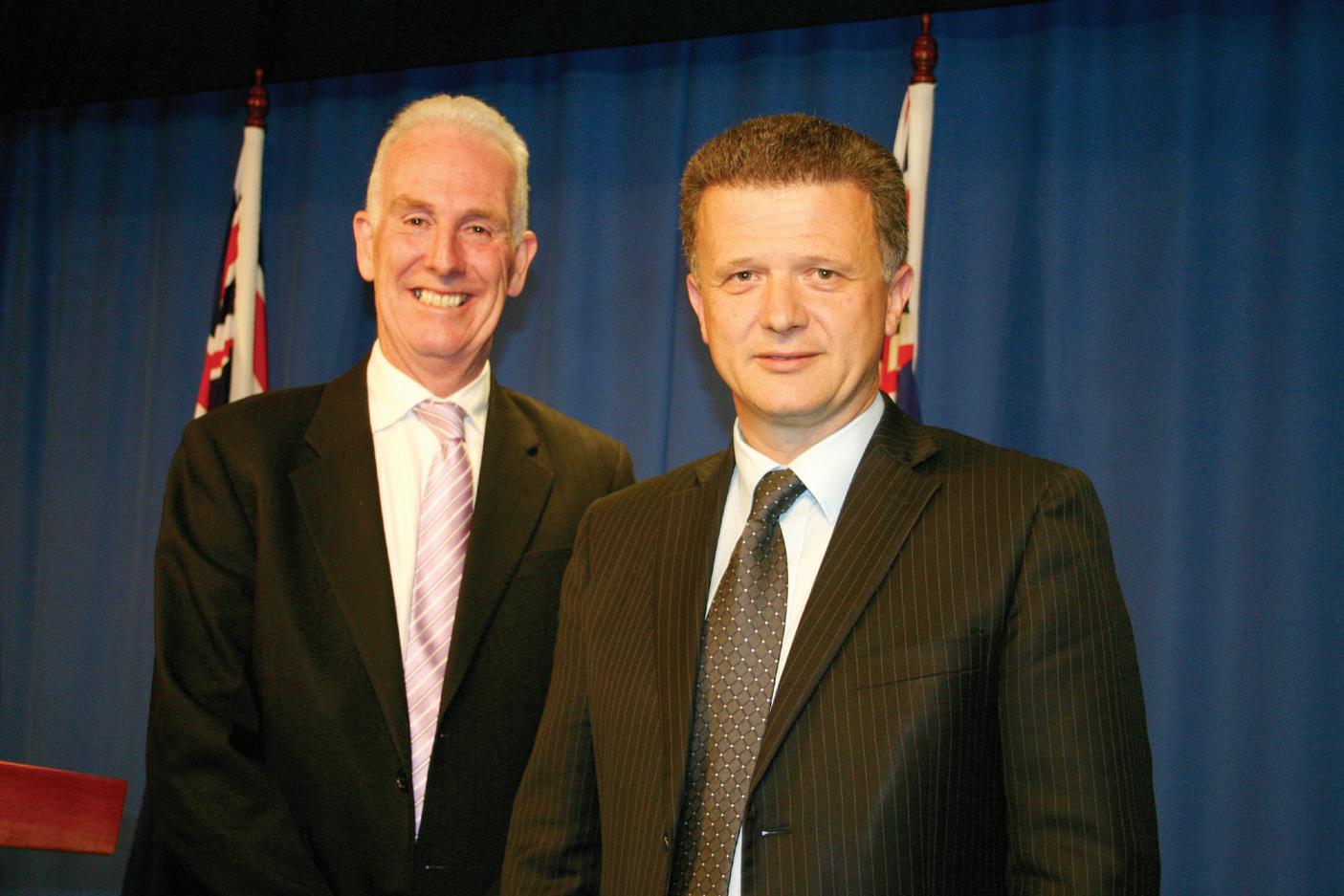
Membership of the Commission, while remaining at 12 members, will include a representative from the youth as well as a peak community organisation. Eight Regional Advisory Councils will also be established to work in partnership with the VMC and local communities. Mr. Kotsiras announced that advertisements for representatives would soon be seen in selected ethnic publications. He asked the media to encourage people from their communities to apply for these roles that will enable them to better serve the multicultural and multilingual community of Victoria.
According to Mr. Martin Dixon, Minister for Education, Victoria is leading the nation in education; however it is lagging behind its international counterparts in relation to languages education, and there are many areas that can be improved. He also said that the four national curriculum areas are expected to be finalized by 2013, however we should not be held back by a national agenda. “It will take the Federal Government time to trial and finetune the curriculum areas, however the Victorian State Government will continue to assist schools in the meantime,” he said.
community language schools, including increasing per capita funding from $120 to $190 per student in tuition fees to help students attending after-hours community language schools; investing $6 million in 210 scholarships for undergraduate and experienced teachers to become trained and qualified LOTE teachers; and investing $1 million in start-up grants for schools to develop LOTE programs. The Coalition Government is also promising to develop a framework agreement for community language schools to negotiate rental costs for accessing government school facilities after hours.
The attending media representatives raised the issue of shrinking numbers of international students from India to which Mr. Kotsiras replied, “In terms of value for money, safety and cultural diversity, there is no better place than Australia. We are committed to promoting this to our overseas market and we are expecting that the number of genuine seekers of education will improve soon.” Mr. Kotsiras ended the conference stating that the Coalition Government understands how languages are a key to the global village for Victorian students and an internationally competitive economy. According to him, the new expanded plans will ensure that Victorians continue to lead the nation in education and in being a progressive multicultural society.
Preeti Jabbal
A marketing marvel
It’s no surprise that most Indians in Australia, probably armed with pakoras and beer, sat glued to their TV screens until the early hours of April 3, watching India make history as they carried away the Cricket World Cup 2011. And it is unlikely that they would have even indulged in a bit of channel-swapping during the commercial breaks, for fear of missing out on even a bit of the excitement.
Which is why it is likely that most of them would have seen the Value World Travel advertisements promising generous airfares to the Indian subcontinent, and other destinations. What makes this advertisement unique is that it was the first and only Indian company advertising on mainstream national and international channels at prime time, trying to reach out to a wider audience. The strategy could not have been more spot-on, the medium could not have been more accurate. The advertisements, showed prominently on Fox Sports and Channel 9, created a stir within the Indian community, who probably didn’t expect to see a local Indian company advertising during the crucial final match.
Gargi Tripathy, Business Director of Value World Travel and her team were the brains behind the strategy, which promised a very high viewership of their target audience, namely, people travelling to the subcontinent. “We wanted to put out a message that was relevant to the community, one that would help them and also show our support to the Indian cricket team,” says Neni Tiwary, Managing Director. “Our aim was to create awareness of our company, which offers very competitive fares to the subcontinent and beyond, and ensure that people realise that we are there to give them not just the best prices, but also
What’s On
Mehfil Night
15 April at 8-10pm at Coburg Library Hall, Cnr: Luisa and Victoria Street, Coburg. A musical event, supported by the Australia India Society of Victoria. Free entry and plentiful parking. For enquiries call Dr. Saratchandran on 9366 5444
Good Friday Appeal Walk
22 April, 9am to 4:30pm from Clayton Station to Telstra Dome, Docklands. (Melway Reference 79 C2 to 2E G5), a distance of 28kms. 13th Annual fundraiser organized by Friends of the Children Foundation. Meeting point will be in front of India at Home/Jaipur Sweets. Will include fun activities at Telstra Dome (Near Ch. 7 Broadcast Centre) at 3 - 4:30pm. Contact Shashi Kochhar on 9564 8228 or 0418 390 423; Suvinder Sawhney on 9809 0254 or 0413 406 101; Ashok Jamini on 9558 1663 or 0431 609 800 Balagokulam April 2011
30 April, 4-6pm (3:45pm registration) at Clayton North Primary School, 1714 Dandenong Road, Clayton North 3168 (Melway ref: 70 D11). Theme: Leadership. Guru dakshina: $2. Refreshments provided. Contact Abhijit Bhide on 0402 081 193 or email: Balagokulam. melbourne@hotmail.com
India Passport & Visa Services Centre (IPVSC) Office Relocation
This is to inform all concerned that the India Passport & Visa Services Centre (IPVSC) will be relocating to Swanston Street from Docklands on 27th April 2011. The existing office at Suite 9.18- 9.19, Level 9, 401 Docklands Drive, Docklands, Victoria 3008 will be closed from 21st April to 26th April 2011, and no applications will be accepted by the IPVSC during that period. The new office will be located at Part 4 Suite, Level 12, 55 Swanston Street, Melbourne 3000. The IPVSC will reopen at its new location in Swanston Street from 27th April 2011 at 8:30 am. The closest train station is Flinders Street. The closest tram station is at the junction of Collins St / Swanston St. Contact phone numbers and email addresses will remain the same.
During the period that the IPVSC will be closed, those who need passport and visa services in an emergency can contact the Consulate directly for the same on 0430020828. Please note that this is only to cover emergencies and only for passports and visas, not for any of the other services being offered by the IPVSC i.e. OCI and PIO cards, driving licence verifications and police clearance certificates.
the best service.”
Gargi and her team were instrumental in every process of the creative process too, from conceptualising to storyboard, and the final shoot. In fact, their solidarity to all things Indian is apparent, as Indians were involved in all stages that led to the creation of the commercial. Value Media Group, a sister concern of the travel agency, was actively involved in the shoot, and it is only the voiceover that is, obviously, Australian. Neni’s son Vedang (pictured above), also featured in the advertisement, with his cute face, enchanting smile and tousled curls - vaguely reminiscent of the legend Sachin Tendulkar himself. It was a massive marketing venture, and one that promises to reap rich dividends in the future.
Neni Tiwary and his family have been in Australia for the past seven years and have been involved in various business ventures. However, their latest brainchild Value World Travel was inaugurated about seven months ago, and has since enjoyed a great deal of success. Neni says that doing business in Australia is easy, as the country is strong on legislation and rules, and once one has a grasp of those, it’s a matter of working within the guidelines. But apart from the hard work that comes with any business venture, Neni also believes in using the best talent available. “We have a think tank of consultants, professionals and advisors, all of whom ensure that whatever we plan is based on sound business practices,” he says. “We discuss, analyse, review and finally come up with a plan.” And it is precisely this kind of thinking that has seen the company grow from strength to strength.
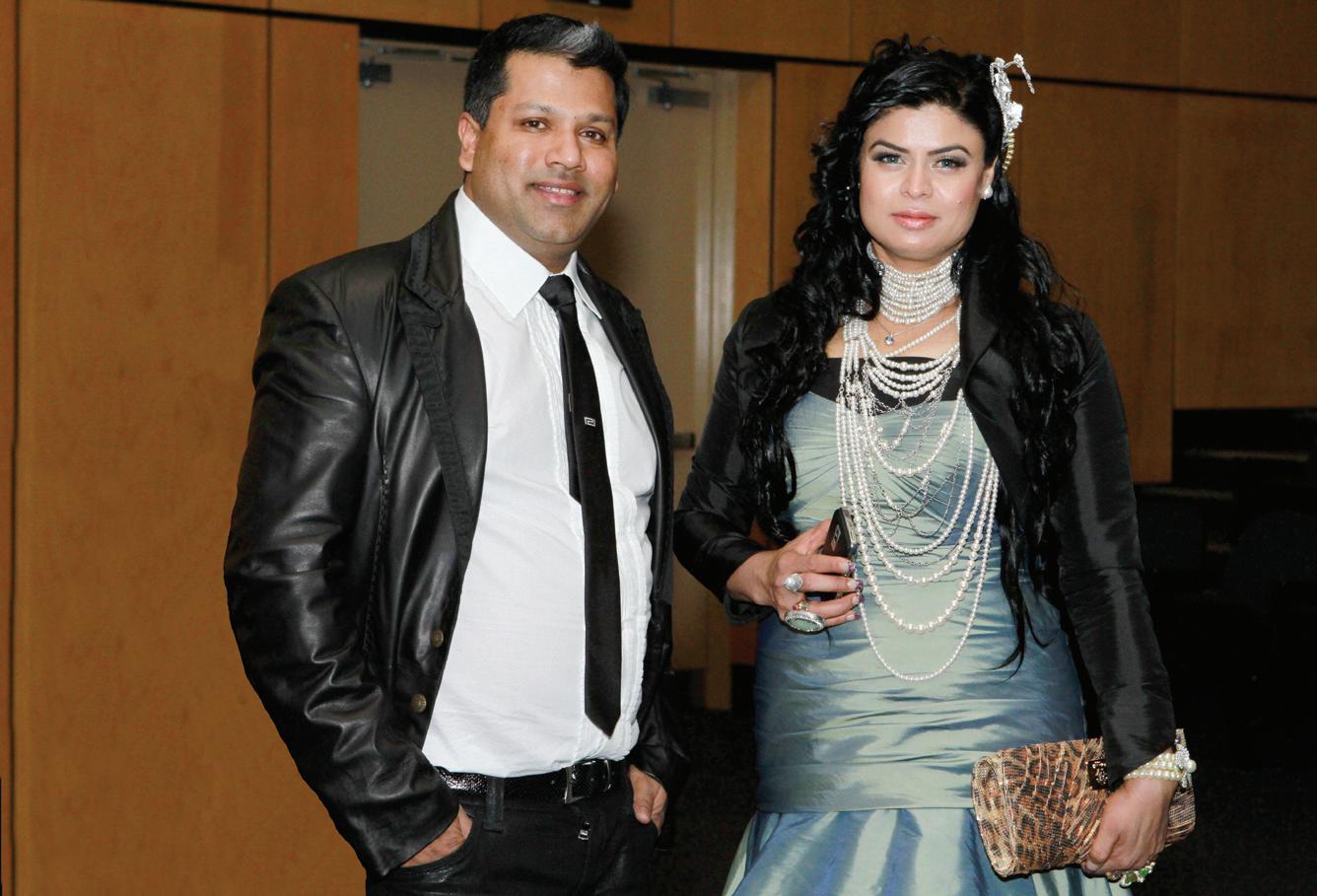
For Neni Tiwary the future seems not just bright, but full
and Gargi Tiwary
of opportunities. He has plans that will, in essence, be of help to the community, but is reluctant to elaborate. He also has positive ideas of how associations can be better organised to ensure that the people who are truly in need, get genuine help.
“We are young, different, full of ideas and we firmly believe in our motto: making it easy. Not just for our customers, but also for the wider subcontinent community and Australia’s mainstream,” says Neni.
APRIL 2011 <> 27 INDIAN LINK
To recognise an opportunity and make the most of it takes a good deal of marketing acumen, and that’s exactly what this innovative Indian company did, writes DEBBIE FERNS
Neni
www.indianlink.com.au
Martin Dixon with Nicholas Kotsiras
Euphoria!
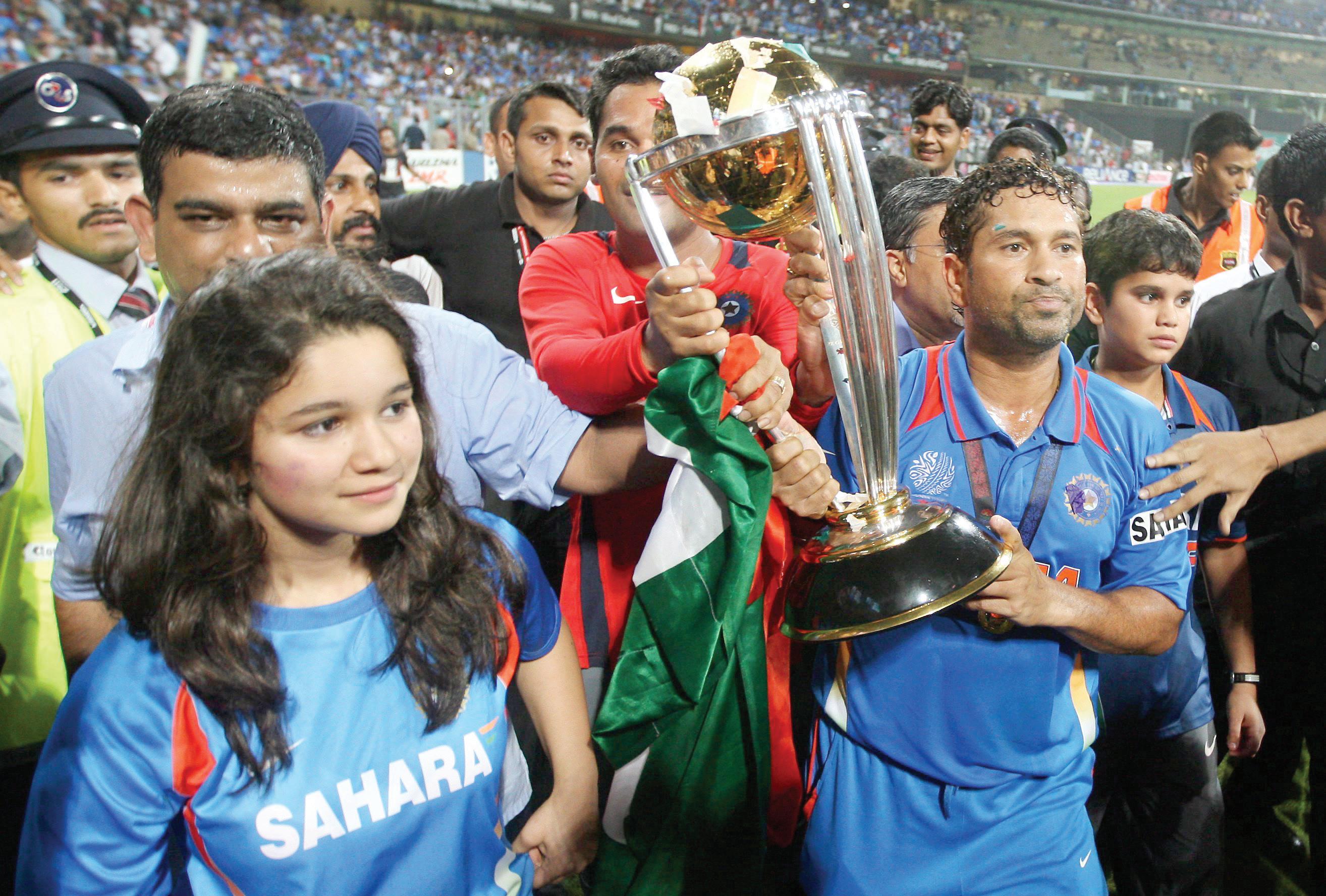
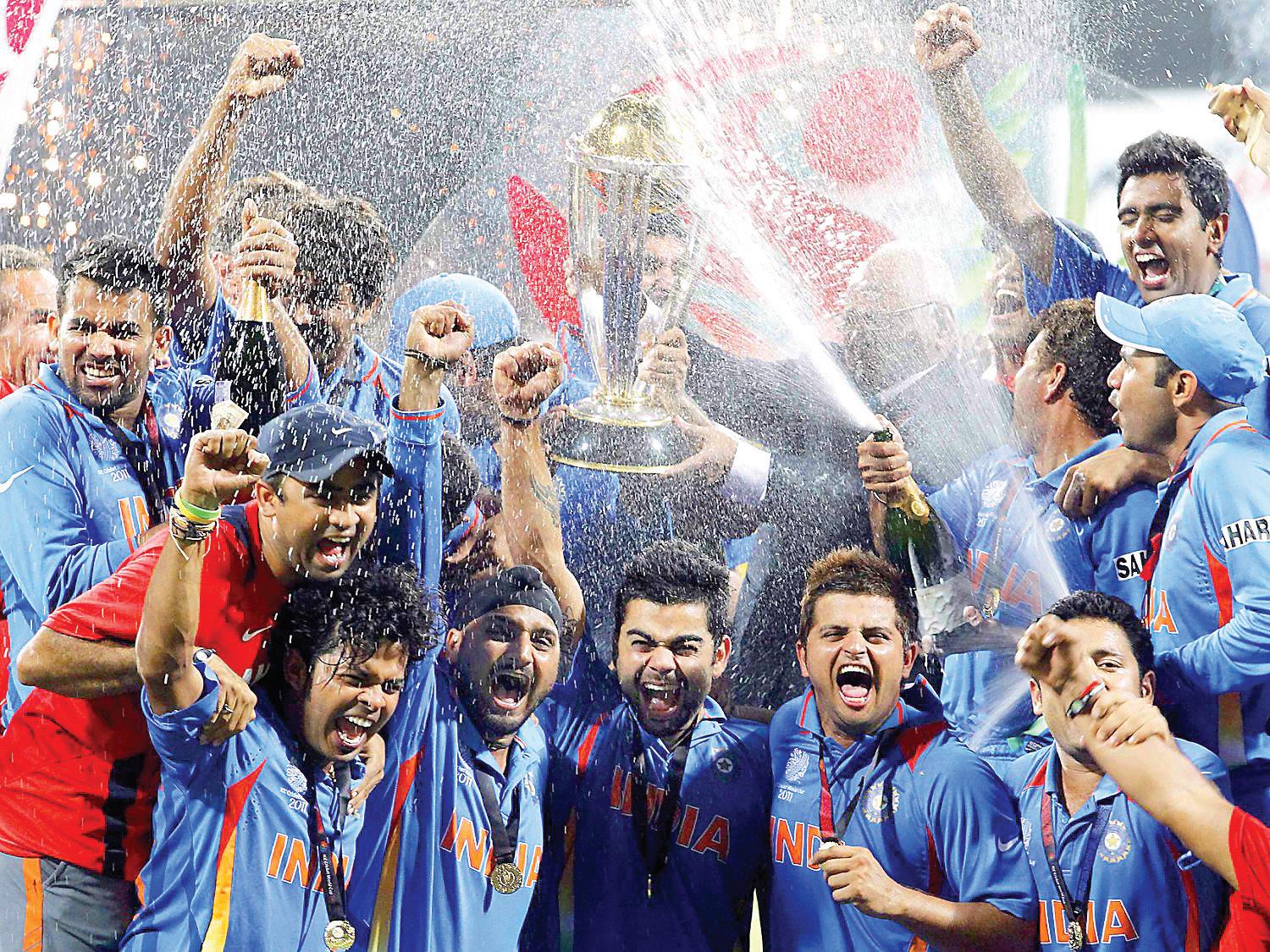
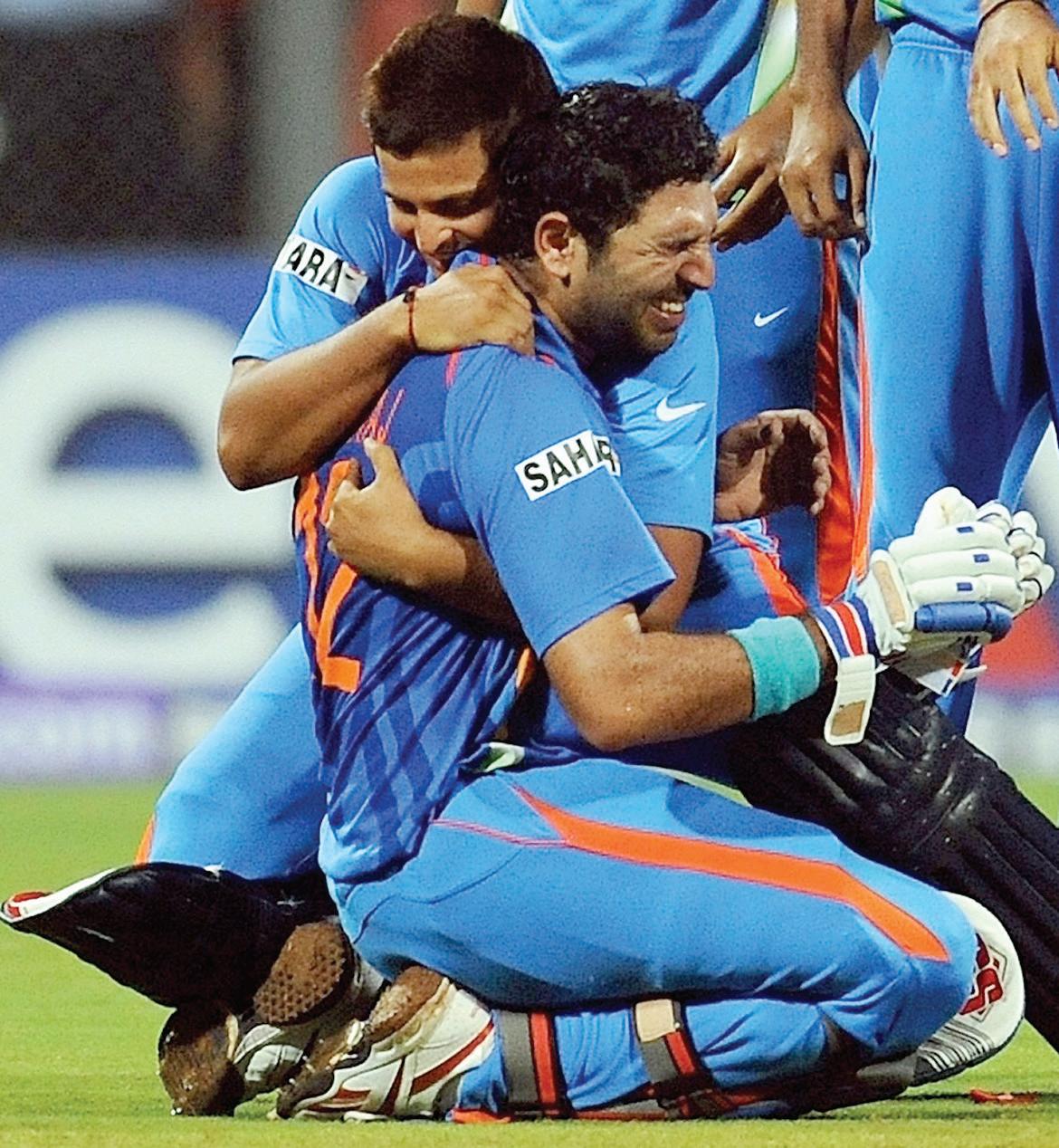
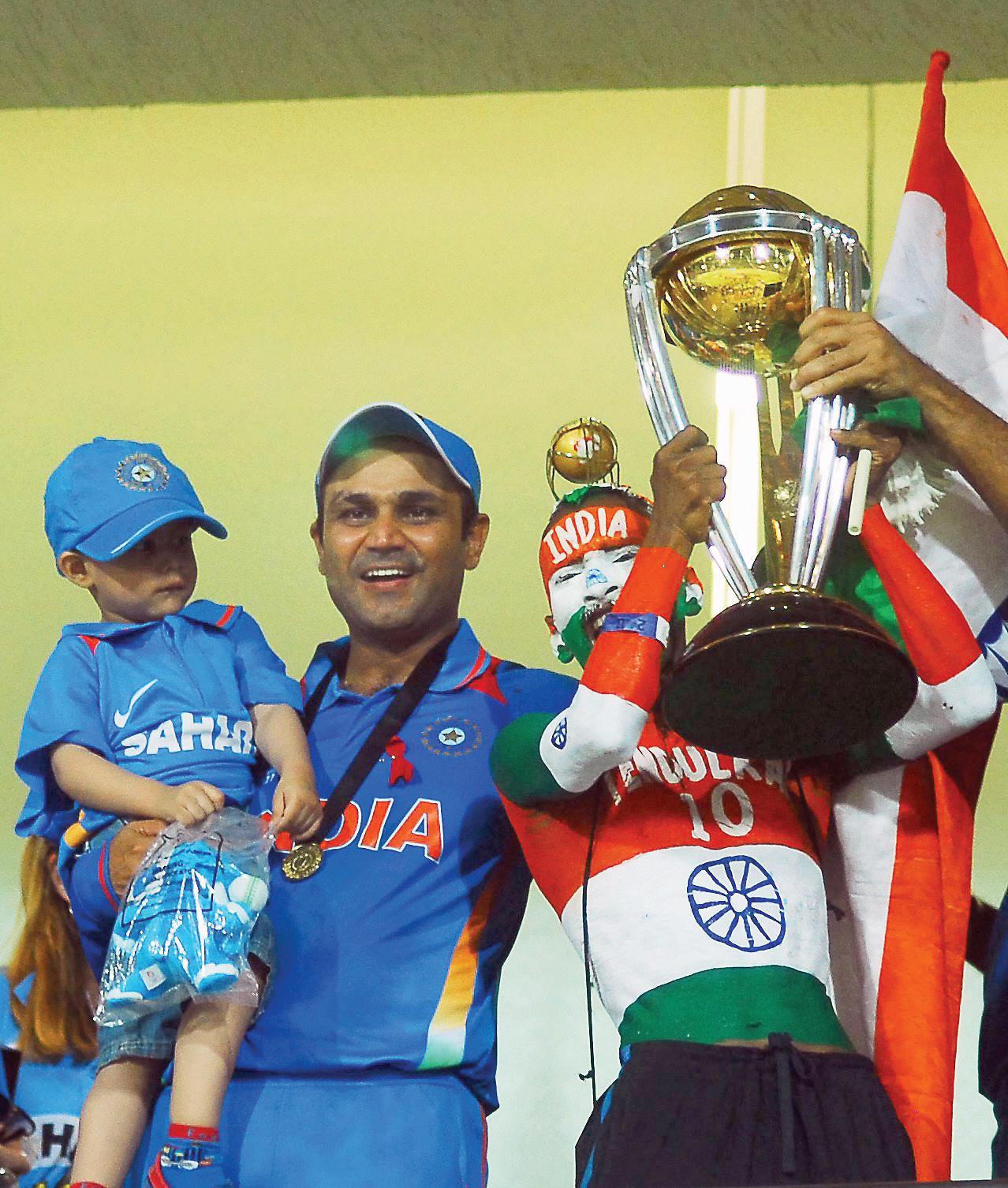
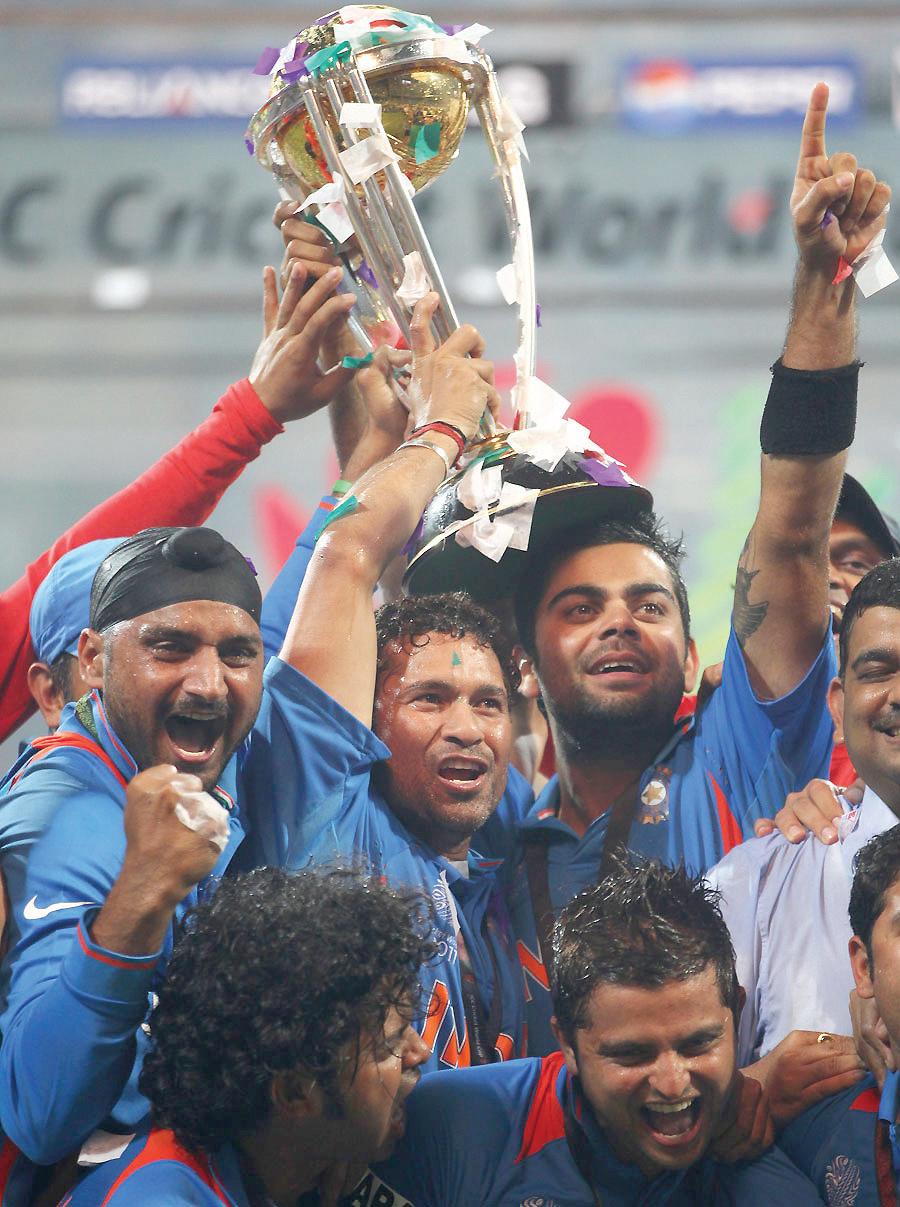
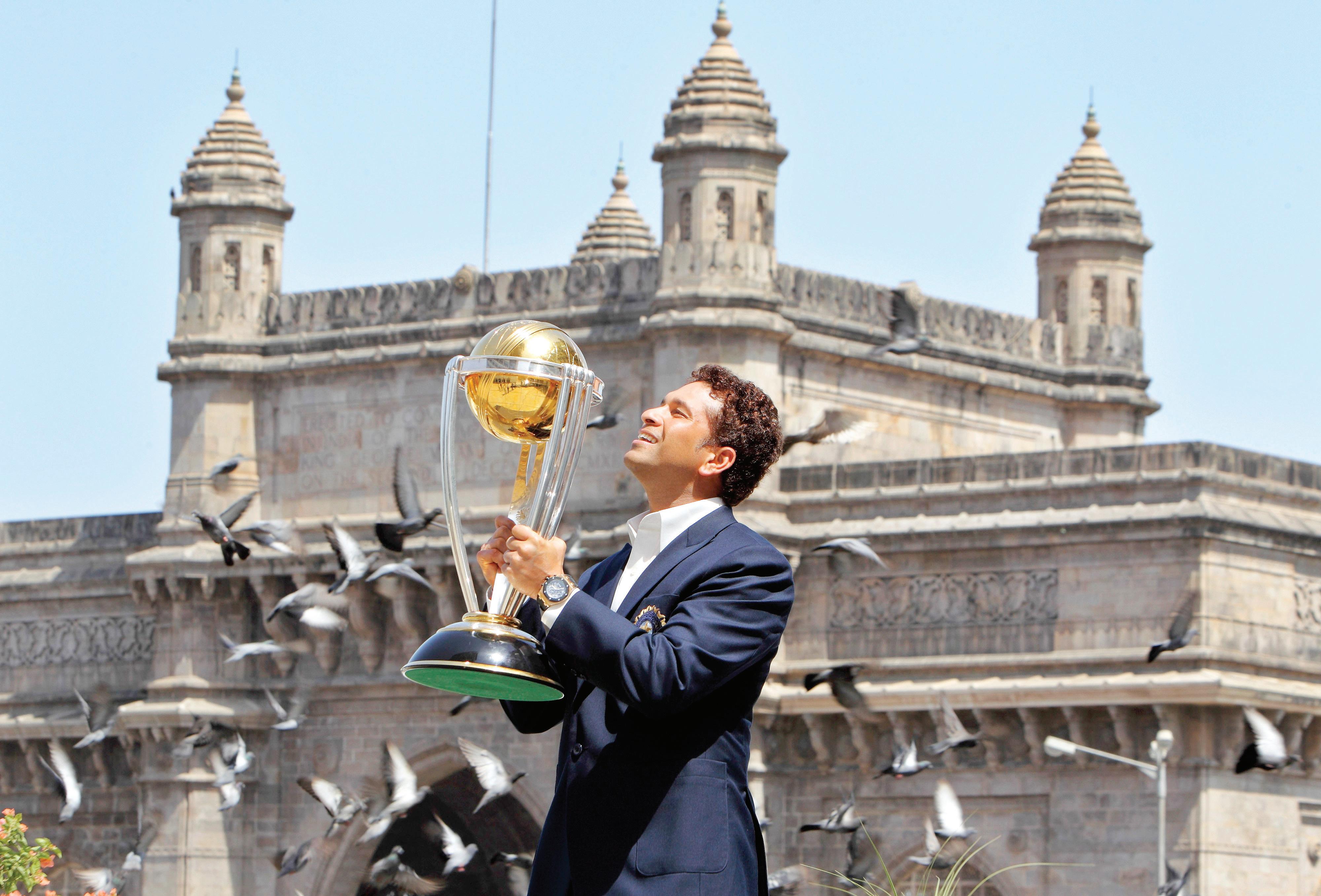
28 <> APRIL 2011 INDIAN LINK COVERSTORY
6 1
Photos: AP, Ritam Mitra

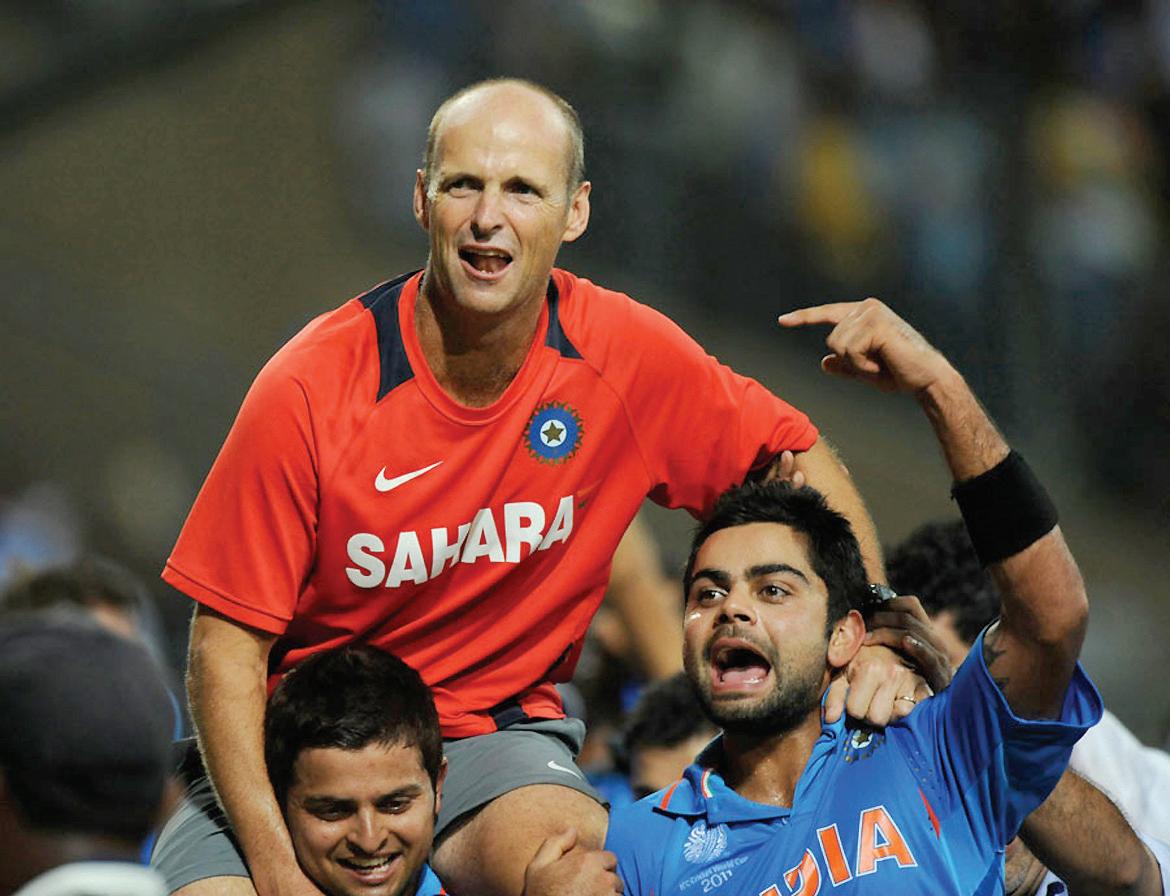
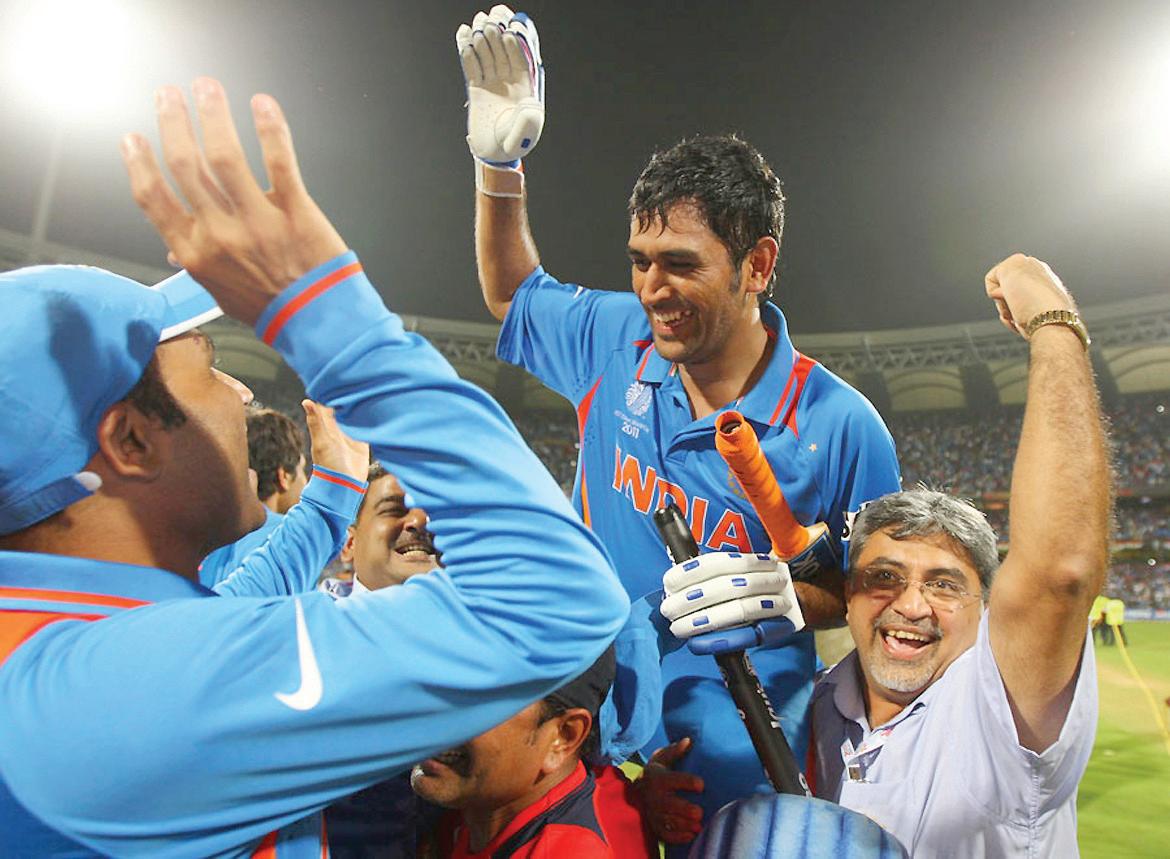

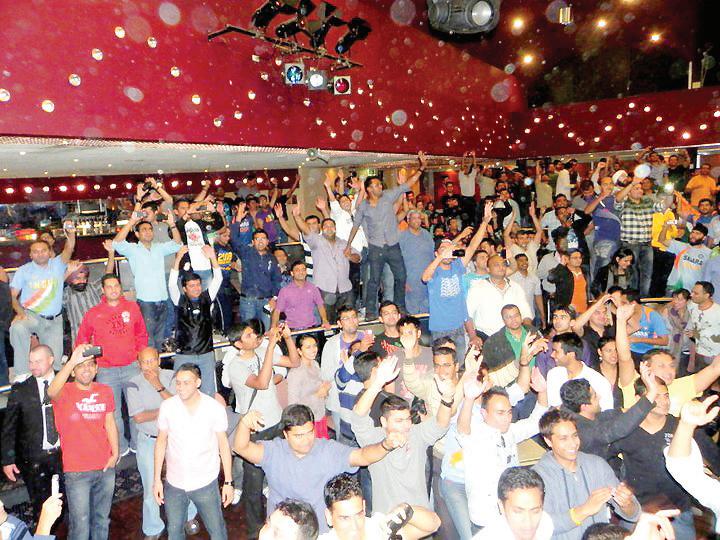



www.indianlink.com.au
1. Moment of glory
2. A childhood dream comes true
3-5. Sydney fans watch the match at the Wentworth Leagues Hotel
6. Sachin Tendulkar with his kids Sara and Arjun
7. Mission accomplished
8. Sehwag makes time for a fan
9. A fitting farewell for Gary Kirsten
10. Tears of joy
11 10 8
2 5 4 3
11. The captain delivers
9
Tales less ordinary
Three novels by subcontinent women take us to the very heart of the region to highlight its pleasures and failings.
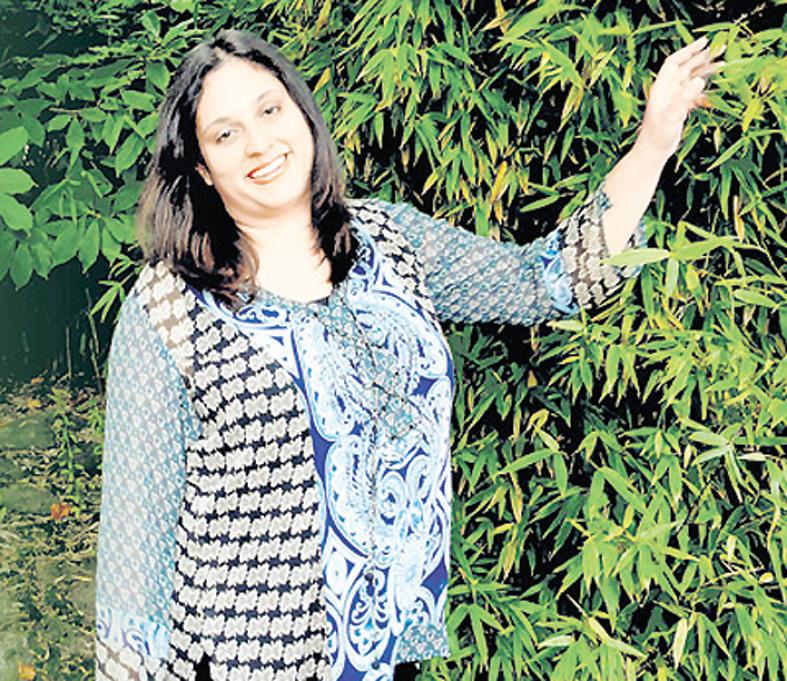 BY CHITRA SUDARSHAN
BY CHITRA SUDARSHAN
Three novels from three women-authors from the subcontinent – one from Pakistan, the other from Bangladesh and the third from India – are the focus of this month’s IWE review. Maha Khan Phillips, a Pakistani-born author now living in London, published her debut novel Beautiful from This Angle in 2010, and Bangladeshi author Shazia Omar’s Like a Diamond in Sky was published by Penguin India a little earlier.
The two novels focus on the affluent in their society and the generation Y, their excesses and their debauchery. The novels’ main protagonists – who are 20 something – rebel in much the same way against Islamic strictures: promiscuity, drugs and alcohol. In Phillips’s novel set in Karachi, wild child Amynah Farooqui is from a dysfunctional family, unapologetic about casual sex, booze and drugs; however, she’s also smart enough to channel
her rebellion through a provocative newspaper gossip column.

Amynah’s two girl friends, Mumtaz and Henna, are the daughters of a drug baron and a leading politician respectively. When Monty Mohsin, a page 3 regular, starts to make money from Pakistan-bashing by producing a reality TV show “Who wants to be a terrorist?”, Mumtaz and her friends decide to cash in as well by making a documentary on violence against women in Pakistan. They find a childhood friend Nilofar from the village, whom they think is a perfect subject for their documentary. Things begin going pear-shaped when their worlds collide in the making of the project, and their friendship is torn asunder from the pressure that it places on them.
Phillips’ novel takes the usual clichés associated with Pakistan: failed State, radical Islam, powerful landlords, the ubiquitous ISI, and subverts them; at the same time, they are also the target of the author’s savage wit, and she gives us a snapshot of a society that is quietly imploding. Nothing happens, but the disquiet is impossible to shake off. Not unlike Melbourne-based author Azhar Abidi,
Phillips brings Karachi alive while, at the same time, painting a quite bleak future. [In Azhar Abidi’s novel, the patriarch of a Mohajir family tells his children to go and watch a music show before the Islamic radicals ban such
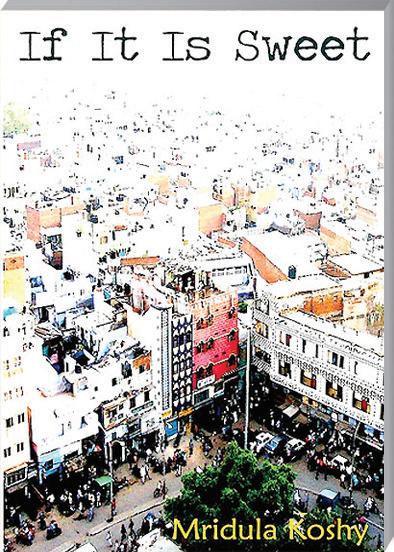
Beautiful From This Angle has its flaws. It’s uneven and could have done with better editing – but ultimately it is a well told story with a wicked sense of humour thrown in for good measure.
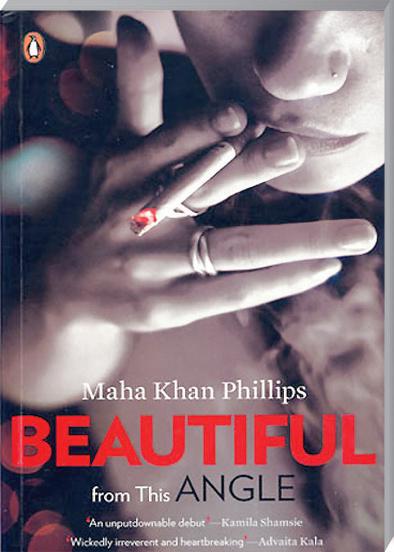
Shazia Omar’s debut novel Like a Diamond In The Sky, published before Beautiful From This Angle, is also about a group of young and affluent people who have lost their sense of direction. Deen is a heroin addict, who repeatedly tries to get his life on track, without much success. There are others such as the macho AJ, who is brave but does not have the courage to love; there is a policeman who is fixated on chasing an ‘immoral’ basti-dwelling woman who sells drugs to rich kids; and several other characters. This novel does not quite make the cut, and lacks the literary aura of a Khan Phillips, Abidi or Mohsin Hamid. It seems to have been influenced by a certain ‘filmi’ quality and ambience, and in the end, is very predictable. Nevertheless, the author must be applauded for telling a story about a part of the world we don’t hear enough about. Monica Ali’s Brick Lane, after all, was essentially about Bangladeshi immigrants in Britain, although it had flashes of their lives back home.
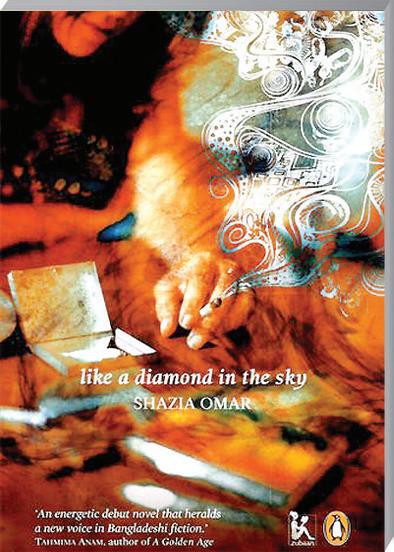
Delhi-based Mridula Susan Koshy’s book of fiction If It Is Sweet published by Tranquebar/Westland, India , is a collection of short stories. She lived in the U.S. for some time before returning to India, and has contributed to literary journals and reviews. Koshy’s stories encompass characters from servants to memsahibs, middle class professionals to labourers. The narrative style is traditional – which is just as well – because that allows her to ask some of the most soul-searching questions in literature and the answers and insights come from all kinds of characters: rich and poor, single and committed. Although the stories are located all over the world, the bulk of them are set in Delhi, and hence it may not be out of place to claim it as an anthology of stories of that city.
Koshy is a gifted writer, and she is able to shine a light on the dark crevices of lives in a city that is unsettling in many ways. Poverty is not necessarily ennobling, nor does affluence lead to degradation: a mother from Manchester who is in India to scatter her son’s ashes, as well as a mother from a basti, both self-analyse their failed motherhoods. This is a thought-provoking book from a talented writer and a book to savour.
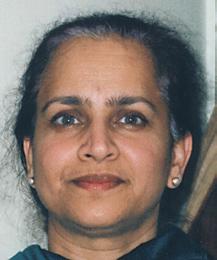
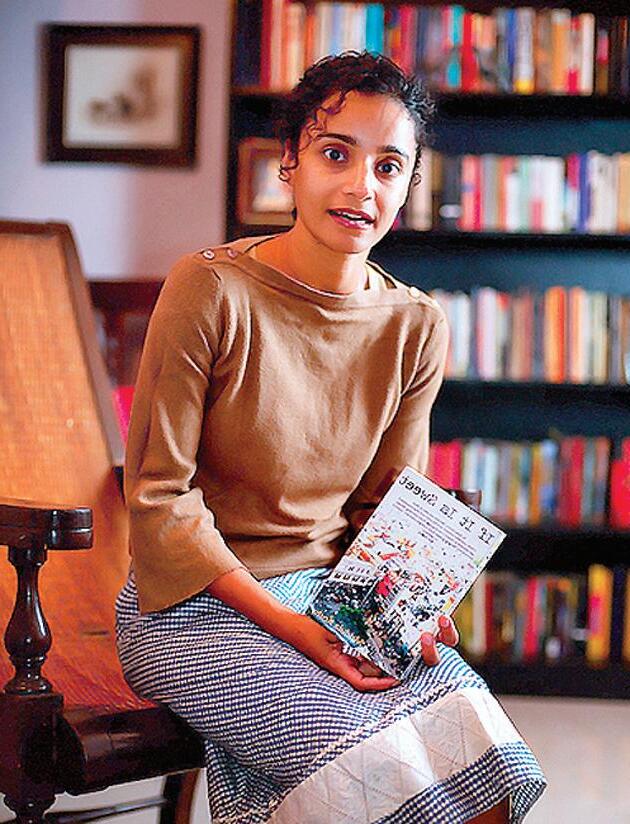
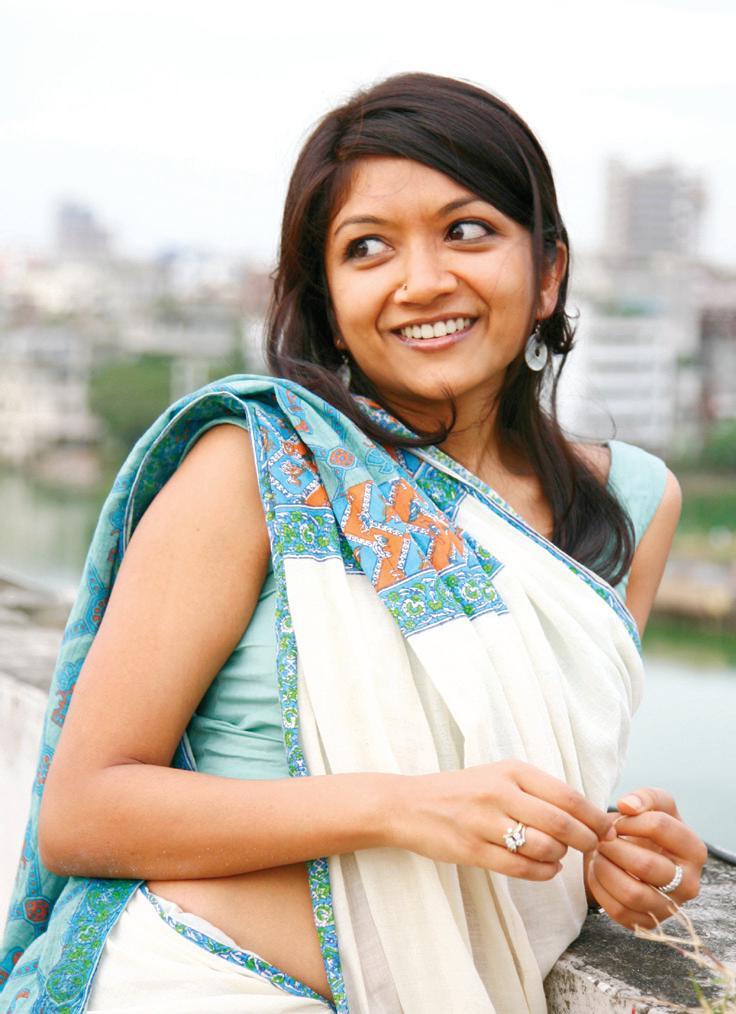
30 <> APRIL 2011 INDIAN LINK
BOOKS
Beautiful from This Angle and Like a Diamond in the Sky focus on the affluent in their society and the generation Y, their excesses and their debauchery.
Delhi-based Mridula Susan Koshy’s book of fiction If It Is Sweet is a collection of short stories.
www.indianlink.com.au Indian Restaurant For Sale Contact: 0422 300 205 Genuine Buyers Only • Indian Restaurant (145.2 sq m, seats 72) in Canberra • Great location on the fringe of CBD • Fully equipped commercial kitchen • Long lease & attractive rent • Well established with huge potential The hard work has been done, just take over and reap the rewards. Opportunity not to be missed.... Indian Link Radio 24/7 Subscribe to Indian Link Radio for $9.95 each month. 24 hours, 7 days Indian Link Radio Minimum 12 months subcription, $50.00 refundable deposit
An unfair world order
On popular uprisings
BY ROY LANGE
Fourteen years ago, newly married, I very proudly showed off Mangere Bridge (in New Zealand) to Mitu, my Indian wife. Her reaction has stayed with me. Expecting glowing praise for the lack of suicidal bus drivers and unpopulated nature strips she solemnly said, “It’s just not fair!” It was the first time in her life she saw, first-hand, the gross inequalities of the world’s resources.
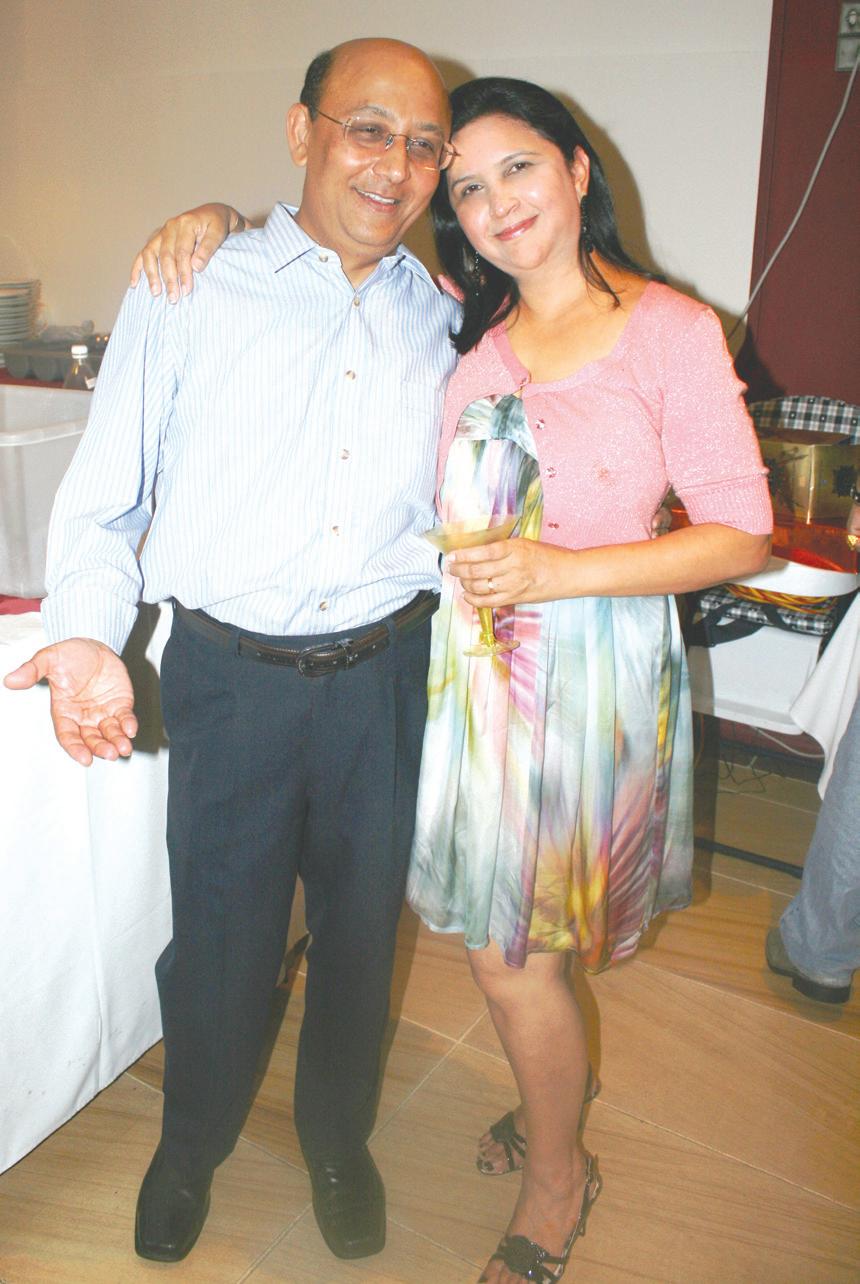
Chandran Nair is the founder of the Global Institute For Tomorrow and author of Consumptionomics. He has insightfully highlighted how that inequality could not only be an injustice, but could bring consumer capitalism to its knees.
Globalisation has been an important driver of the economies of developed nations. Like automobile manufacturing joint ventures in India and Japanese plasma televisions in Liberia. Or literally, mountainsides of Australian and New Zealand coal shipped to Asian steel furnaces.
The West sees gobsmacking potential in markets like India where car ownership is 30 per 1000 citizens, compared to 750 per thousand in the OECD. They feel justified when they see China become the world’s largest car consumer at only 150 cars per 1000.
I greatly enjoy Nair’s take on this startling paradox but what is acutely disappointing is his proposed solution.
He believes that Asia should almost solely bear the responsibility of reducing consumption of its citizens. He advocates strong government intervention with various environment taxes to ensure that Mr. Singh or Mr. Lee don’t aspire to Mr. Smith’s open plan townhouse. To settle for less than the west, for the greater good.

Last year my eyes welled up thinking what a great humanitarian I was. I went with my father-in-law’s servant, affectionately called Hero, to buy him a mobile phone. Being a tightfisted humanitarian, I purchased the cheapest model. I pompously handed it to Hero, who looks like a Somali pirate, waiting for the flow of tears and great touching of feet. He took one look at the phone, screwed his face up like he had taken poison and threw it back across the counter. ‘Touch wallah chahiye !’ (I want the one with the touch screen!).
Hero is illiterate and comes from one of the poorest districts of West Bengal but he would dutifully see advertisements for local rip-offs of the iphone in the India
If China and India were to have a comparable consumption of cars of 750 per 1000 there simply wouldn’t be enough oil to power 1.5 billion cars.
The heart of India is now host to the strongest consumerism. They will not take second best, even if it kills the planet. Why should they? Isn’t it absurd to expect India to punish her citizens if they aspire to their western counterpart’s level of environmental destruction?
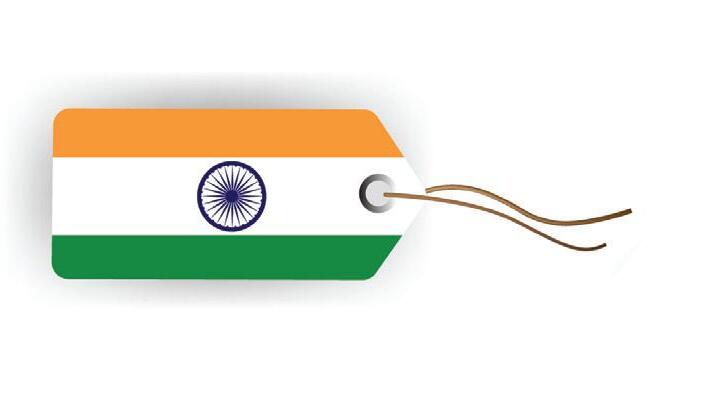
This is Nair’s point. The 20 th century’s watermark of success is indiscriminate consumption. India and China, till now deprived of Lycra cycling shorts and iPads, are making quantum leaps in consumerism. Hungry tigers pouncing about after being freed from the chains of homebred Stalinism. This, Nair believes, has to be vanquished for, if the developing world continues to affectionately adopt this model, the world will perish.
If China and India were to have a comparable consumption of cars of 750 per 1000 there simply wouldn’t be enough oil to power 1.5 billion cars.
Nair makes the unsettling claim that Americans consume 9 billion chickens a year and that Asia consumes 16 billion. But here’s the thing. Asia is 13 times the population of the United States and if they were to consume at American levels, by 2050 they would be impossibly consuming 120 billion birds.
Nair projects this vision of increasing environmental disaster that could, ironically, eventuate with a more equal world.
A draft of this article was shown to friends and I was surprised at the number who insisted that India must further decrease its carbon footprint. Possibly exacerbated by Gillard backtracking on her election promise of not implementing a carbon tax.
Grudgingly, on long careful reflection I feel this has genuine merit. If this planet is to see the next century without its populace choking on Chinese car exhaust and drowning in apocalyptic floods from Russian forest fires, India must equally bear the yoke.
Assuming there are one billion people in the developed world, quick math gives us the equation. If the third world equally shared the burden of nursing our planet back to health they would have to increase their consumption, per capita, by 50fold and the First World would have to consume a 6th of current levels.
The west has molested Mother Nature single handed whilst excluding India from 150 years of industrial progress, and alone must pay penance.
BY DILIP JADEJA
there’s a general discontent in the air about governance. And it’s not just Egypt and Libya we are talking about here. People seem to be tired of almost all forms of governments: autocracies, democracies, socialists, communists, theocracies and neo

People in many parts of the world have their oppressive, inept rulers. And when they finally succeed in overthrowing their governments, the eternal delay in finding viable alternatives frustrates them even
It’s hard for many to believe there is old, plain-vanilla job of a leader – good lead many to seek a quantum of solace in chaos, joining the mobs, killing others to make their own lives better, scouring ships as pirates for a life of loot. When that does not work, they turn to nefarious preachers and take their own lives and that of others, to find a better life after death.
Surprisingly enough, people don’t need a lot to feel better when the chips are so down. Even in havoc-wrecked make-shift camps short of food, water and sanitation, people can still feel happy to find other like-suffering, like-minded people. People prefer these humbler places and humbler people to an eternal life of grind under self-serving politicians.
What has gone wrong with the world and its political systems, the galaxy of popular leaders of the past, and once all-mighty new ideas in politics?
Democracy as a concept may be 2000plus years old, but it seems to have become like a technology whose last improved version was released some 300 years ago in America. While many continue to accept it as the best system of public governance, the American democratic dream stands well and truly shattered for many others.
Democracy seems to have failed in two regards. Firstly, from Clinton to Bush and Howard to Gillard, seemingly trustworthy leaders make promises to people only to break them later for their political
advantage, in the name of global good. Secondly, the two-party dominated system of government means that someone only has to appear to be better than others, but no one needs to be good enough to govern, in order to hold the reins of governments. Repeatedly exploited, these two political ideas became weapons of mass trust destruction.
It will be a mistake to think that people are against just Mubarak or Gaddafi, Saleh or Mugabe. People are as much against the seemingly-nice-and-lovely Kristina and Julia. Blair to Howard, Manmohan to Zardari, Naotao Kan to Hu Jintao - many other leaders have not lived up to their expectations. Many say Blair, Howard and Bush lied about nuclear weapons of Saddam; Manmohan allowed the best part of a trillion dollars to remain piled up in Swiss banks, and King Abdullah built ‘Taj Mahal’ style homes “in the face” of their poor. ‘Kings’ and ‘Queens’ continue to get a public cheque for their wealthy lifestyles while the homeless poor from Britain to Belgium cannot get their daily bread and soup. Governments donate billions overseas, but ignore the homeless poor on their streets! Masses in Sicily and Sao Paulo now live off mobsters. From Afghanistan to Yemen, Al Qaida lights up the dream of happier lives –or death. And yet, the message has not sunk in.
Western politicians still think good governance is about good economic headlines. Neither Bill Gates nor Warren Buffett would subscribe to such a simplistic idea.
So whether you are Tony or Julia, Barak or David – you must know that good governance is about providing people freedom from corruption; freedom from irreversible poverty; cheaper access to food, home and transport; freedom to speak, and freedom to question government about decisions that affect their lives.

People are not against taxation, as long as governments tax properly and more equally - don’t go looking to tax every element in the periodic table. Remember, more cars need more roads, more cities need more trains. Technology is capable of dramatic improvements to people’s lives. Making technology more affordable by enabling healthy markets with real competition and honest businesses, will have a positive impact on society.
Let the good overwhelm the world, or the bad surely will.
APRIL 2011 <> 31 INDIAN LINK
Should India and China take the rap for the West’s rampant past consumerism simply because they’re now emerging superpowers?
It ain’t the economy, stupid. Good governance is actually about improving peoples’ lives
OPINION
www.indianlink.com.au
Democracy as a concept may be 2000plus years old, but it seems to have become like a technology whose last improved version was released some 300 years ago in America.
We arethe people
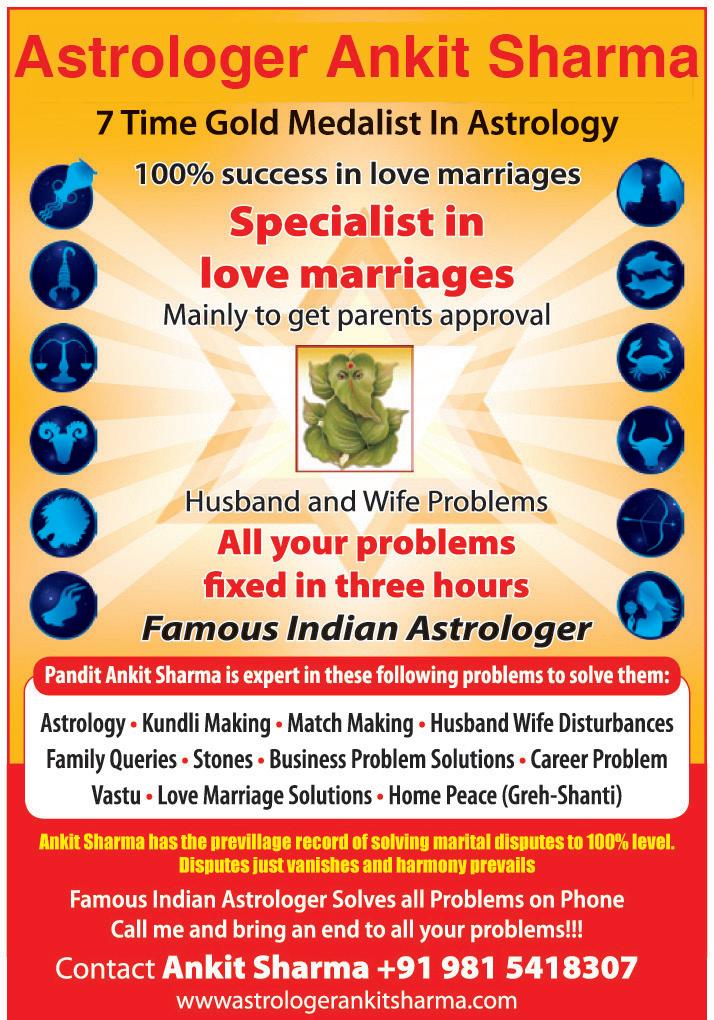
Like little drops of water and tiny grains of sand make a mighty ocean and a pleasant land, every individual in this world makes it what it is. Each one of us counts, and every action we do makes a change or a difference somewhere. When we see an atrocity or an injustice, we are moved, angry, even horrified. Then we reconcile by saying, “I am just one person, what can I do?” But this “I” can do a number of things. And what comes to mind are the wordings of a song by Empire of the Sun: “We are the people that rule the world, A force running in every boy and girl...
We are the people”.
Of course, we are the people. We make this world; we mend it and destroy it too. Look around you, most of us are happy in our own little world that we have built for ourselves, we feel safe here and very much in control. We are comfortable when we are in control. We like to comment on issues, discuss and argue about them at meetings, gatherings and parties, but when these are over, we go back into our safe haven and forget about them, until something else comes up to shock us out of our wits.
We hear stories of bravery, goodwill, selflessness

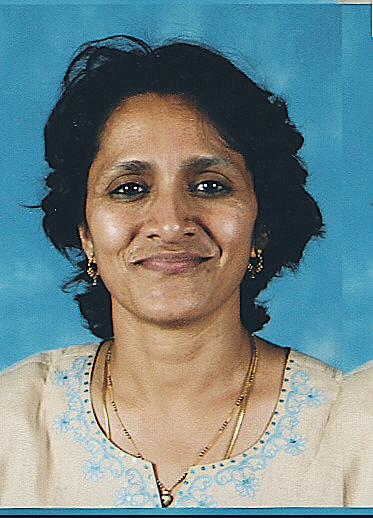 BY NIMA MENON
BY NIMA MENON
and wonder. In times of need and adversity, ordinary people rise to extraordinary heights, move out of their comfort zone to help some stranger, hoping for nothing in return. It is these ordinary people that make this world a better and humane place. There is death, murder, killing and horrifying cruelty imposed by man upon man for reasons best known to no one but him. Countries have been at war with each other for decades; what the fathers started, the sons and daughters continue, many of them not even knowing why! Innocents are killed, the breath of life ripped out in the prime of life and often no one knows why! ‘Good fences make good neighbours’, but what if you are fighting over the
us pleasant? We cannot stop big wars, but we can definitely stop little ones from erupting. There may be people in our immediate lives and our extended lives whom we cannot tolerate, and some we may even abhor. We can start by making a truce with them and stopping the war within from raging every time we see them or think about them. We are the people, and we can make the difference.
fence? A piece of land causes so much bloodshed, but when there is an earthquake or a flood, that same land that you killed for, buries you. We are the people. “We have the right to all our dreams and plans, living in the present, learning from the past, headed for the future, hoping it will last”. As the future is not ours too see, why not make our present and that of the people who co-inhabit this world with
We are all in such a hurry, that we often do not take time to step back and look at what we are doing with our lives. The devastating floods in Queensland and NSW reiterated once again how fragile this life is. Here today, gone tomorrow. We work all our lives to accumulate material wealth that we think brings so much happiness, but in the bargain we often miss out on valuable time with our loved ones. Birthdays, anniversaries or even a quiet evening together is worth so much, and these are the memories that stay with you, while your material wealth is being swept away in a storm or a flood. During such times, we understand the value of human life, for our first thought always is to get out with our family, not with the antique chest, Louis Vuitton bag or that expensive painting which was our pride and joy. We are the people, and it is indeed the people that matter the most. Strangers become our buddies, our guardian angels and sometimes, our only ray of hope.
We are the people: together and individually we can make a difference. Each one of us matters. I matter, you matter and we matter. Well, how about that? Awesome!

32 <> APRIL 2011 INDIAN LINK REFLECTIONS
We work all our lives to accumulate material wealth that we think brings so much happiness, but in the bargain we often miss out on valuable time with our loved ones.
www.indianlink.com.au
It takes all kinds to make a world, but with a bit of kindness and understanding, we can make this earth a better and happier place
Ankit Sharma has the previllage record of solving marital disputes to 100% level. Disputes just vanishes and harmony prevails
The Indian link to Convict Australia
BY ANUSHA MENON
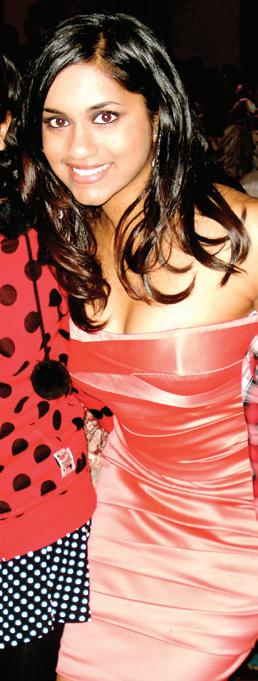
At first glance, it is hard to see an Indian connection in Australia’s convict history. However, it only takes a closer look to realise that India indeed played a pivotal role in shaping what constitutes Australia today, primarily through the numerous Indianbuilt ships that facilitated the transportation of the surplus ‘rotten apples’ of European society to Australia.
Miserable journeys
One of the most important phases of Australian history was the many arduous sea voyages of convicts and other migrants, over a period of 80 years, to ‘temporarily’ settle in penal colonies established across the country. From 1788 to 1868, Australia not only served as a dumping-ground for the undesirable petty criminals of England and Ireland, but also accommodated prisoners from a variety of other ethnic backgrounds, including Chinese, Africans and Indians.
The prisoners came to this country crammed into ships, forced to endure a journey of many months of immense hardship on vessels lacking adequate space. As a result of overcrowding, diseases such as scurvy, dysentery, typhoid fever and
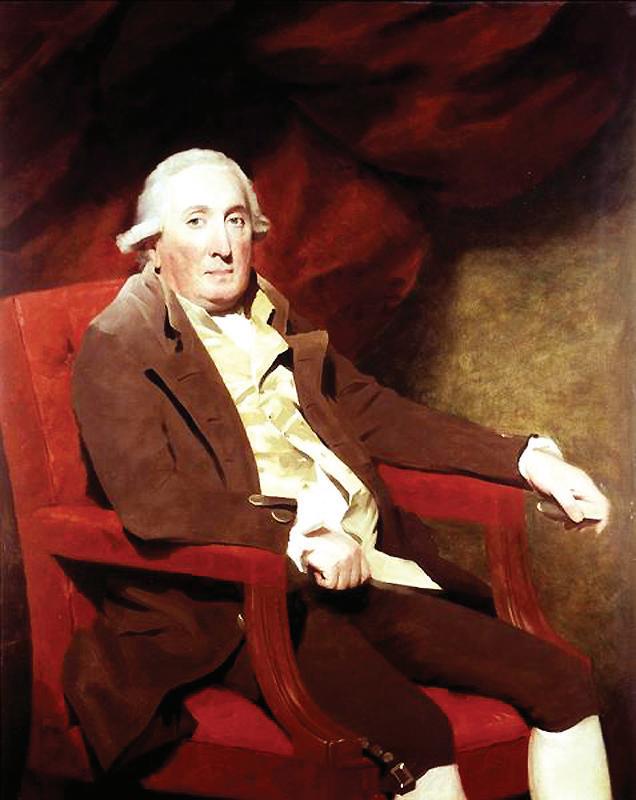
smallpox were rampant and claimed the lives of many on these ships.
Most of the ships used for transporting these prisoners were built in India. They were ordinary, old ships not equipped to carry the number of passengers that they did and virtually all of them had performed years of useful service between Indian ports and on voyages to China before they set sail for Australia.
However, after 1843, an increasing number of vessels newly built in India, were chartered to carry prisoners. Most of these had been built in Calcutta, which despite its dependence upon imported timber, was one of the flourishing centres of Indian shipbuilding. The list also included Cochin, Bombay and some other ports across the Indian Subcontinent.
Made to last
In many respects, the Indian-built ships made ideal convict transports. They were considerably larger than their British counterparts and were built to survive years of heavy use. These vessels simply refused to wear out and if they were ever scrapped, it was often because they simply went out of fashion.
The ships exemplified incredible durability, as highlighted through two of the ships: the Cornwall, weighing 827 tons, and the smaller Fairlie, weighing 756 tons. Both these ships were made in Calcutta and were 40 years old when they arrived
with prisoners at Hobart in 1851 and 1852 respectively. They were also capable of making outstanding passages of 107 and 114 days from England to Hobart.
The Fairlie, built on the Hooghly River in Calcutta, was named after William Fairlie, a successful English merchant who lived in India. Fairlie established an agency house in Calcutta, which had one of the largest ship fleets of the early 19th century. The Fairlie was one of the many Indian-built ships the agency house owned.
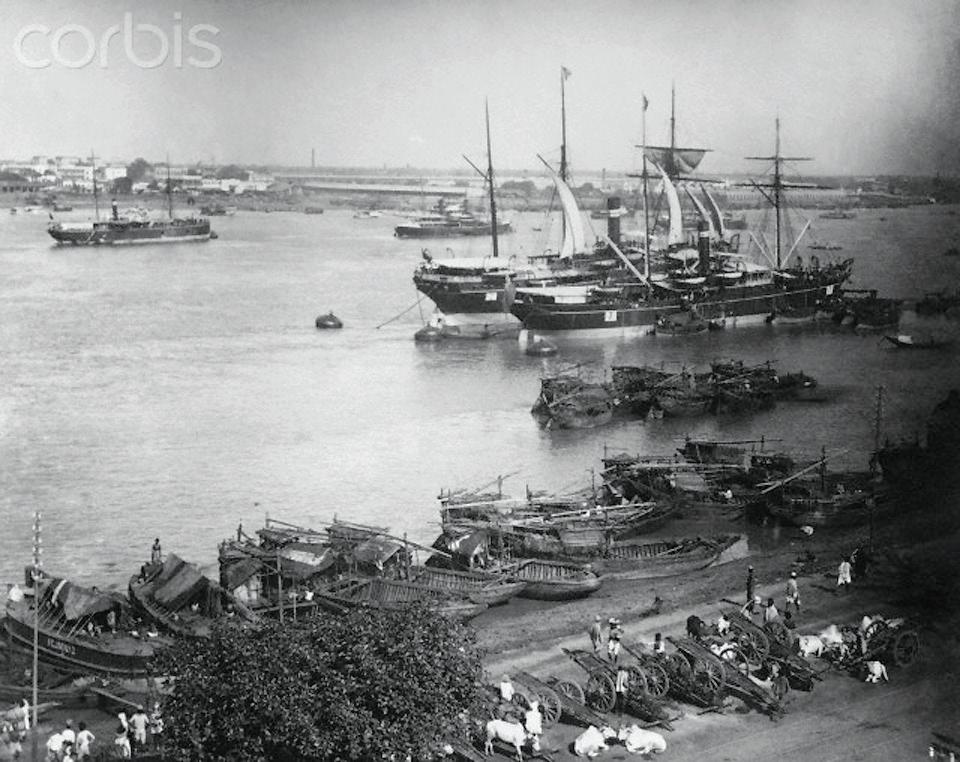
The Cochin-built Navarino was launched in 1808. It was 33 years old when it made its first voyage as a convict ship in 1841. The Maitland and Neptune III, both products of Calcutta shipyards, were each 36 years old when they made their last voyages as convict ships in 1846 and 1850 respectively. Perhaps one of the most famed ships utilised for the transportation of convicts to Australia was the Lady Kennaway. Although Calcutta relied heavily on imported timber to build ships, it did manufacture its own timber and teak, which was the product of a tropical hardwood tree native to Southeast Asia. Teak was used to build the bulk of Lady Kennaway in Calcutta in 1817.
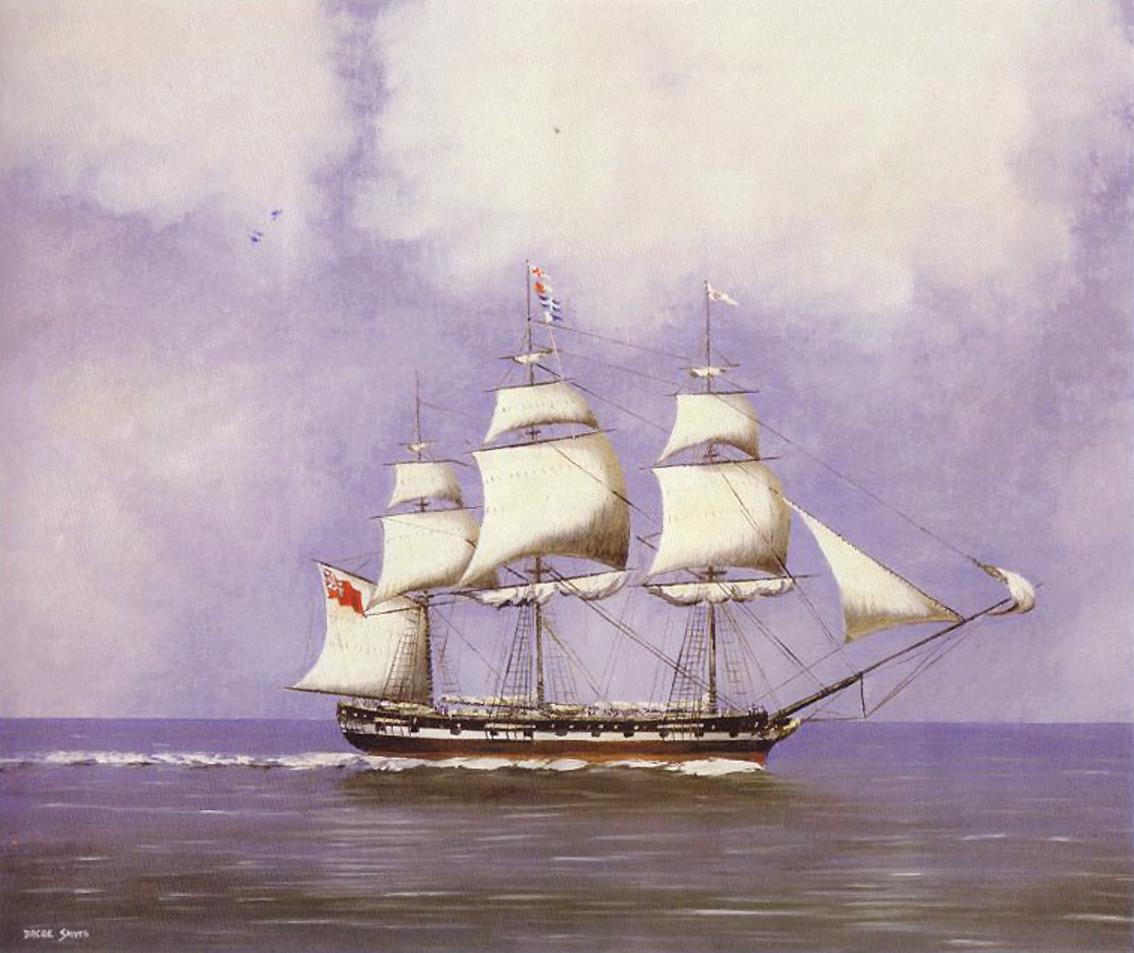
In 1851, it performed a passage from Portsmouth, England to Hobart in 112 days - an incredibly efficient journey at the time. Lady Kennaway was employed to carry immigrants to Australia on at least four occasions, although it was perhaps more recognised in Australian history as a convict transport ship during the 1830s. The ship
carried over 850 convicts and hundreds more immigrants to Australia and achieved an overall lifespan of over forty years. After an unforgettable time of valuable service, the Lady Kennaway eventually began to founder. The teak that was used to build it was salvaged from the hull of the ship by the local East London merchants and utilised in the construction of many of their houses on the West Bank.
They were ordinary, old ships not equipped to carry the number of passengers that they did and virtually all of them had performed years of useful service between Indian ports and on voyages to China before they set sail for Australia.
The convict ships to Australia were stopped in 1868, by which time they had brought more than 160,000 people to the land down under - people who eventually made this country their home. A large number of these Indian-built ships continued to bring to Australia immigrants from all over the world for years to come.
APRIL 2011 <> 33 INDIAN LINK
1 3 2
Many of the early ships that came to
www.indianlink.com.au
1. LR Lady Kennaway 2. Portrait of William Fairlie of Calcutta 3. Hooghly River
Ready, Set, Goa!
Although this state is renowned for its leisurely attitude towards life, its historical and cultural roots go back centuries
BY THOMAS E KING
Nature has been exceptionally kind to Goa. Its fertile and flowering land is covered with verdant forest; coconut, cashew, jackfruit and mango groves interspersed with jade green paddy fields; enchanting estuaries; beguiling bays and picturesque coastal hamlets dotted with palm protected villas built in traditional Portuguese style. Likened to a painter’s palette extraordinaire, the exquisite beauty of Goa has been known through the ages. Ancient sages called it Aparanta in Sanskrit meaning a place beyond the end while in Vedic literature Goa was referred to as Gomantak or fertile land
Goa has indeed had a long and chequered history. Once part of the Mauryan Empire, early Hindu dynasties ruled over this beautiful land until they were superseded by a succession of Muslim sultans from the Deccan. In 1380, the Bahamanis were ousted by the Vijayanagar kings who annexed the area to their expansive Hindu empire. Goa remained Hindu for almost a century until 1472 when Muslims once again took control. This religious seesaw came to an abrupt end in December 1510. Ismail Adil Shah, the Muslim ruler at the time, was engaged in a crucial project: the construction of a fort designed to be the centrepiece of his new capital.
Trade flourished as Goa became an important bridge between Europe and the Orient, and with the arrival of scholars from Spain and Portugal, Goa became a centre of culture and learning as well.

The Sultan of Bijapur – and the soon-to-be last Muslim ruler of Goa - must have been dumbfounded when he saw a flotilla of 25 ships commanded by Alfonso de Albuquerque sailing up the Mandovi River. The Portuguese explorer aided by 12,000 men stormed the fort, defeated Adil Shah in a fierce battle and took control of the bastion. de Albuquerque subsequently rebuilt the fort and transformed it into the colonial capital and headquarters for Portugal’s far flung overseas empire.
The place that the adventuring admiral and his forces landed was christened Goa Duorada, or Golden Goa. The little territory soon became the epicentre for a flourishing trade in silks and spices and porcelain and pearls. As Viceroy of Portuguese India, de Albuquerque is credited with starting the economic transformation of Goa. Under following viceroys Goa grew rapidly in both size and statue to eventually rival Lisbon. Trade flourished as Goa became an important bridge between Europe and the Orient. And with the arrival of scholars from Spain and Portugal, Goa became a centre of culture and learning as well.
The Portuguese stayed in Goa for 451 years during which time they built dozens of splendid architectural
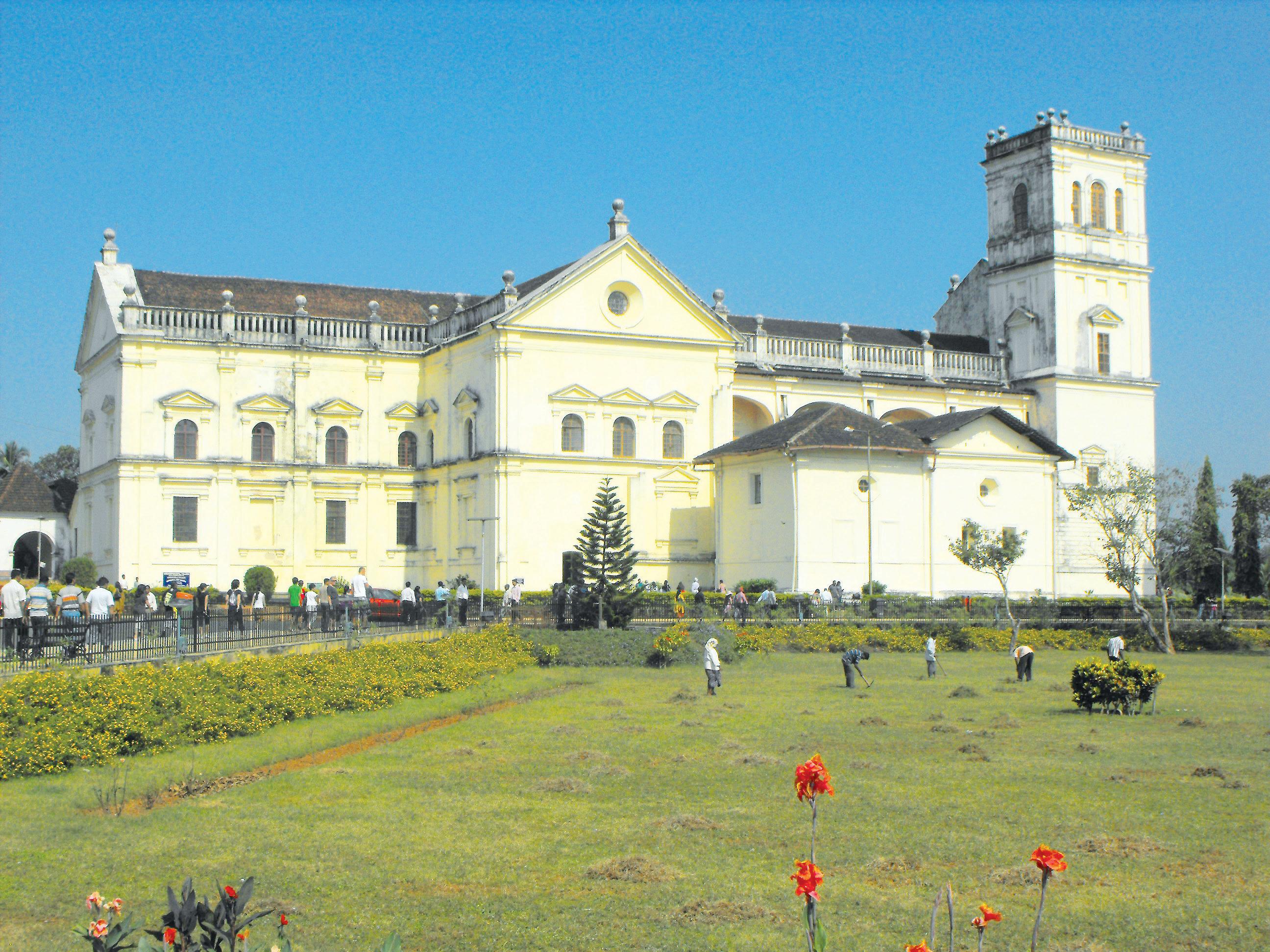
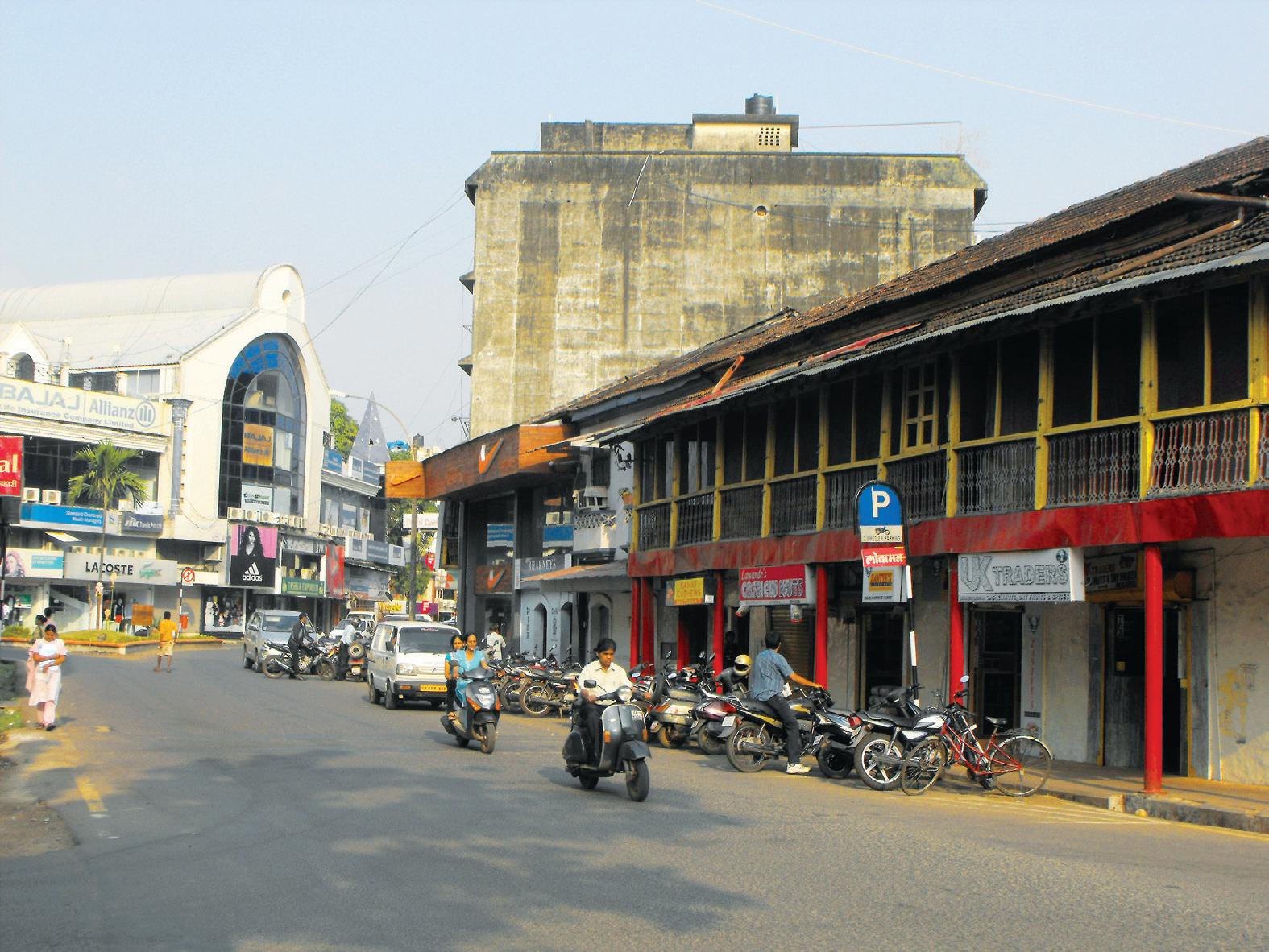
wonders. Today little is left of Old Goa, the original capital of the Portuguese, apart from a small but still well preserved collection of cathedrals, churches and chapels. I stood before Se Cathedral, the grandest of these, admiring a massive sanctuary which is considered by many to be the largest church in Asia.
Intended to be the greatest church in Portugal’s string of Asian colonies – which included Malacca and Macau – Se Cathedral was under construction for nearly three quarters of a century. On the outside, the cathedral’s Portuguese – Gothic styling is highly impressive. Inside is a magnificent gilded altarpiece which dominates the cathedral’s massive interior. My footsteps echoed off the distant but decorated walls and barrel vaulted ceiling as I
walked past rows and rows of seats set out for the few parishioners but many visitors who come to be
Goa’s old world churches and cathedrals remain a major drawcard but this 3700 sq. km tropical haven offers more. Most tourists enjoy their glimpse of European architecture in an Indian setting but they thoroughly love the state’s long stretch of beaches. And there’s plenty to choose from with more than two dozen crescents of soft sand sweeping southwards along Goa’s 105 km coastline. Some like Candaliim, Calangute and Baga are almost household names while sleepy beaches in the far north and deep south are lesser known.
The closest beach to the state capital of Panaji is an arc of Casuarina back dropped sand called

34 <> APRIL 2011 INDIAN LINK
TRAVEL
1 2 3
Miramar. In one direction this popular beach is only minutes from the secluded and seductive Goa Marriott where we based ourselves for a week. The stylish river fronting hotel is only a few km from central Panaji in the other direction so it was easy to leisurely stroll into the quaint city for a memorable meal or to see its historical sites.
The capital admittedly is not awash in attractions. Panaji’s attractiveness for many visitors is simply its ambience. Portuguese Baroque style buildings, whitewashed villas with wrought iron balconies, avenues lined with gulmohar and acacia trees, palm-lined squares and an overall unhurried character where people take time for afternoon siestas are some of the enticing elements that ensures the Goan capital has a completely different
Travel notebook
Thai Airways International has 46 flights a week linking Sydney, Melbourne, Brisbane and Perth to Bangkok. From the Thai capital there is a daily onward service to Chennai and 11 flights a week on to Mumbai, convenient gateways to Goa. Contact your travel agent for the latest airfare specials and promotions or THAI reservations on 1 300 651 960. See www.thaiairways.com.au
Goa is located around 600 km south of Mumbai. Over the years I’ve bridged the distance by air and rail many times, but still have fond memories of the overnight steamer service (no longer in operation) back in the early 1980s.
A customised tour of India can be organised that begins with a flight to Mumbai and then proceeds by road south through Maharashtra to Goa before continuing on by road, rail or air to Chennai for the return journey to Australia. Boutique travel specialist Beacon Holidays can design customised ‘airport to airport’ tours of Goa and all other parts of India with English speaking drivers, a/c cars and choice hotels. Discuss your travel interests with
as the city’s elegant focal point with dandies and damsels arriving by carriages for lavish evenings of wining and dining. This was the Goa of centuries ago and to many it’s just a chapter out of history.
Maendra Alvares thinks otherwise. The local artist and sculptor is a staunch advocate of preserving the history, traditions, art and culture of old Goa. In an personal crusade to showcase the state’s unique attributes, Alvares has recreated them on a 9 ha. site in rural Goa.
During my update of Goa late last year I visited Ancestral Goa near Margoa, the state’s commercial capital. Set over a quiet landscaped plot, the unique attraction details life in the state from Portuguese times until the early 20th century. I found the open air cultural museum to be much like a life size history book filled with models of traders who undertook
1. The majestic Se Cathedral was intended to be the greatest church in all of Portugal’s Asian colonies

2. Old Portuguese buildings and modern shopping centres line the quaint streets of peaceful Panaji
3. Orange, mauve and indigo combine their hues to produce another unforgettable Goan sunset over the Arabian Sea

4. Tucked away in rural splendour, Ancestral Goa shows a tableau of life as it existed up until 100 years ago
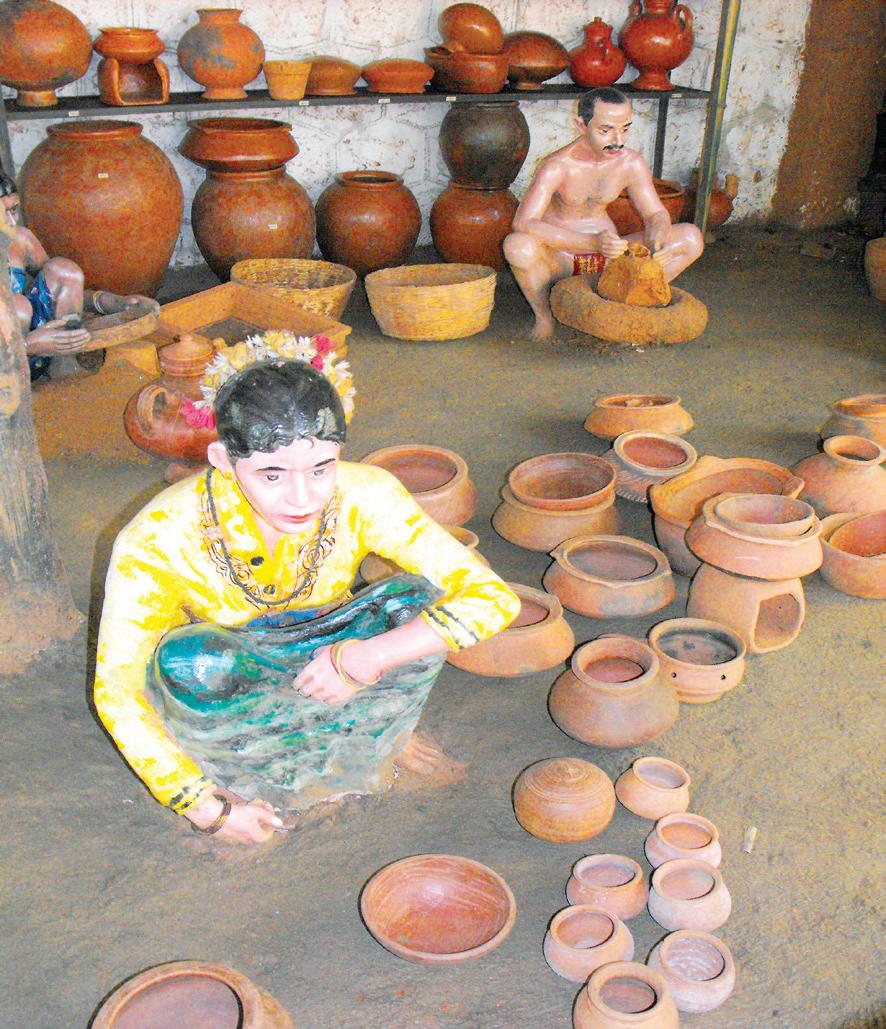
5. Sited opposite the Secretariat Building is a statue showing one way to change the work habits of an Indian bureaucrat!
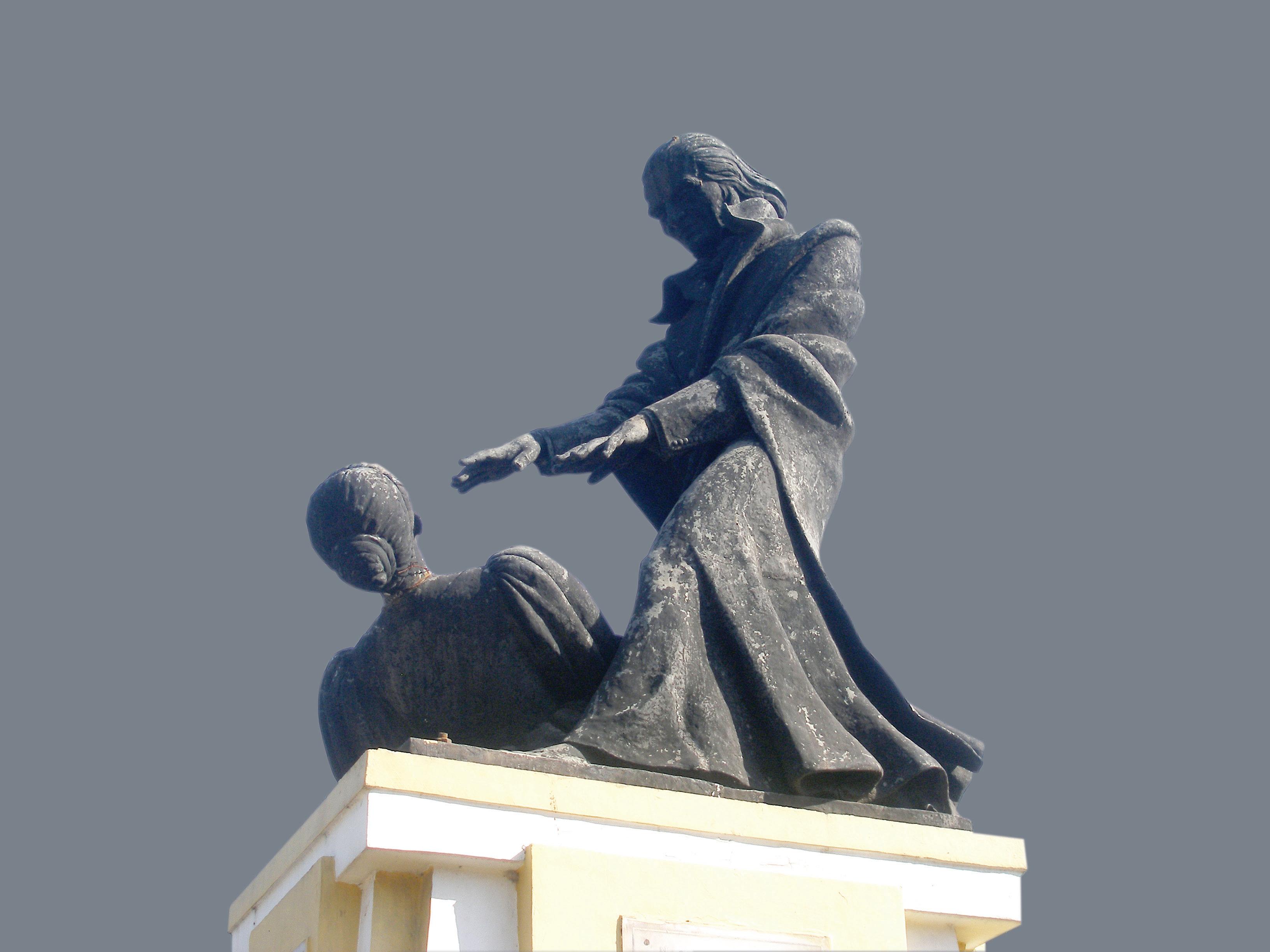
Photos: Thomas E KIng
specialists at Beacon Holidays on 1 800 667 791 or e-mail mytrip@beaconholidays.com.au See www. beaconholidays.com.au
ACCOMMODATION Set next to the popular Miramar Beach and providing a sweeping panorama over the Mandovi River, the 170 room Goa Marriott & Spa is a showcase resort offering a large riverside-sited swimming pool, expansive buffet breakfast, swish casino and stylish accommodation in a garden-accented oasis of tranquillity. The hotel is 3 km from Panaji’s colourful Central Market and even closer to a stretch of restaurants and a mini mart where all the ingredients for a pleasant picnic can be purchased.
INFORMATION Contact India Tourism Sydney for general information on Goa by phone (02) 9221 9555 or e-mail: info@indiatourism.com. au See www.incredibleindia.com There’s an efficient info-stocked India Tourism Office in the heritage Communidade Building in Panaji’s Church Square. Lonely Planet’s India with its detailed chapter on Goa remains the definitive guide. See www.lonelyplanet.com
or been substantially modernised. Among the ‘community’ there are fish sellers, cobblers, barbers and farmers tending their livestock.
Alvares has also succeeded in showcasing the environmentally friendly aspects of daily life in earlier times: the change in building materials from palm leaves to brick and concrete and the replacement of clay with copper and later aluminium for use in cooking utensils. The village is further enhanced with a spice and herb garden which adds fragrance to the humid air, tree shaded homes, a characteristic tavern and churches. I stood before a replicated sanctuary fronted by the statue of a viceroy and gazed over a tranquil treeshaded vista not unlike those which inspired the Portuguese to declare Goa as the Perola do Oriente, the Pearl of the Orient
now the Passport Office - which has been both a Muslim palace and a Portuguese fort. This latter usage came about, I learned, when Old Goa was abandoned because the nearby port silted up and the Portuguese moved their territorial headquarters to Panaji. The building now painted a pale yellow and the oldest colonial structure in the city was the regal residence for a series of Portuguese viceroys. Today it houses dusty government archives and a lethargic bureaucracy. It’s easy, though, to imagine this still stately building with its sloping tiled roof, carved stone coats of arms and wooden verandas
INDIAN LINK
www.indianlink.com.au
4 5
Chocolate, Strawberry and Vanilla ice cream in layers.
What do ghosts like as dessert topping? Whipped scream

PEARL OF WISDOM: I will not scream for
Meltdown!!
ICE CREAM
ISDOM: Ice cream is happiness condensed




Bizzarre!!
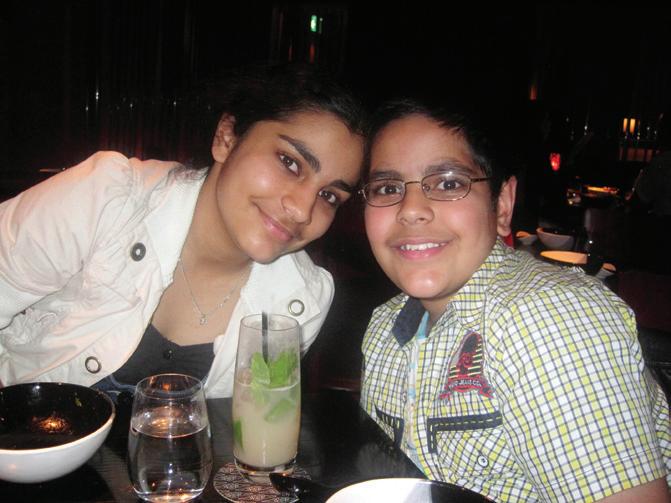
Ice cream flavours
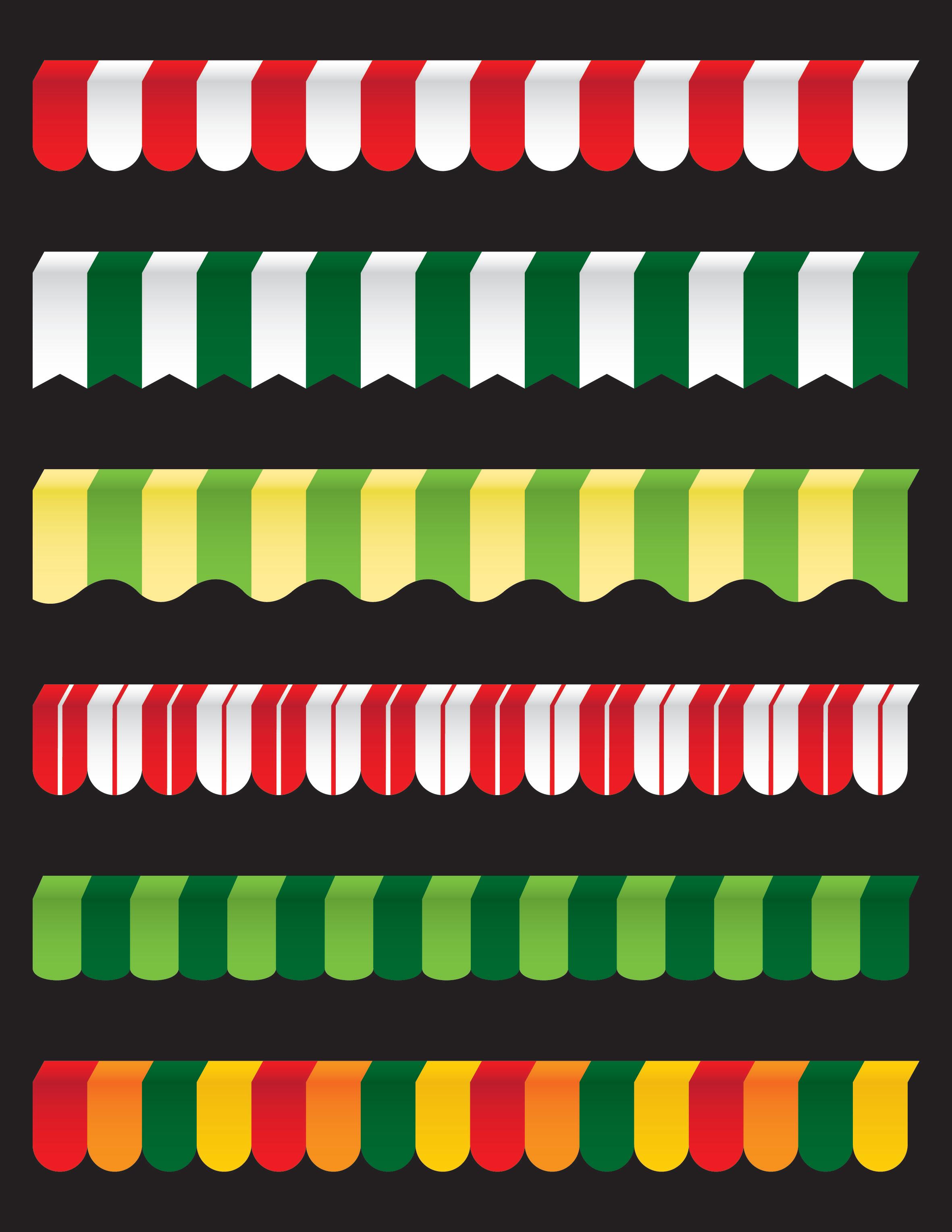

My favourite ice-cream flavour is cookies and cream. But there are others I would like to try, like chocolate chip cookie dough, rocky road and strawberry cheesecake. Some are weird, like rice krispies and coca cola flavour, but might be worth a try, even grape flavour, or tomato, or kiwi fruit. I might even have a lick of peanut butter flavour, or black licorice, or green tea, or ginger ice cream. But please don’t give me vegetable flavours like sweet potato, pumpkin, corn, avocado, eggplant, spinach, potato, mushroom, carrot (or yuck!) garlic or wasabi ice cream, or other bizarre ones like oatmeal and tulip. I won’t even LOOK at sweet red bean ice cream, or chilli flavour, or bacon, or red wine ice cream. And beware, I will DEFINITELY throw up at fish, octopus, squid, crab and eel-flavoured ice creams!!
All flavours mentioned here are real, many of them coming from Korea, Japan and Taiwan
Jessi Lane Adams
ML DL DL
ingle and ready to mingle!
Versatile actress Vidya Balan, in Sydney for the annual Indian Film Festival, talks about her life, career and future plans
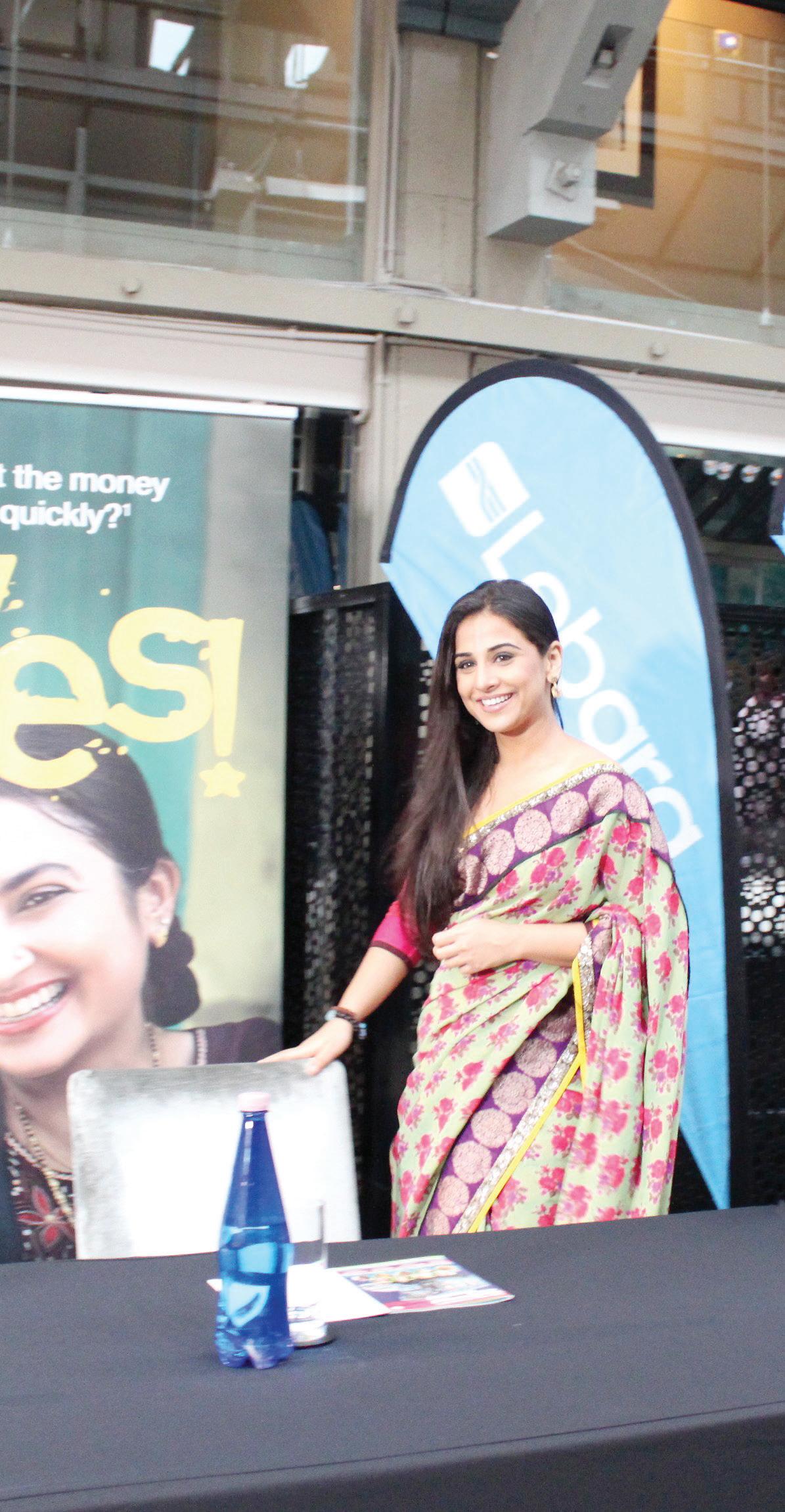
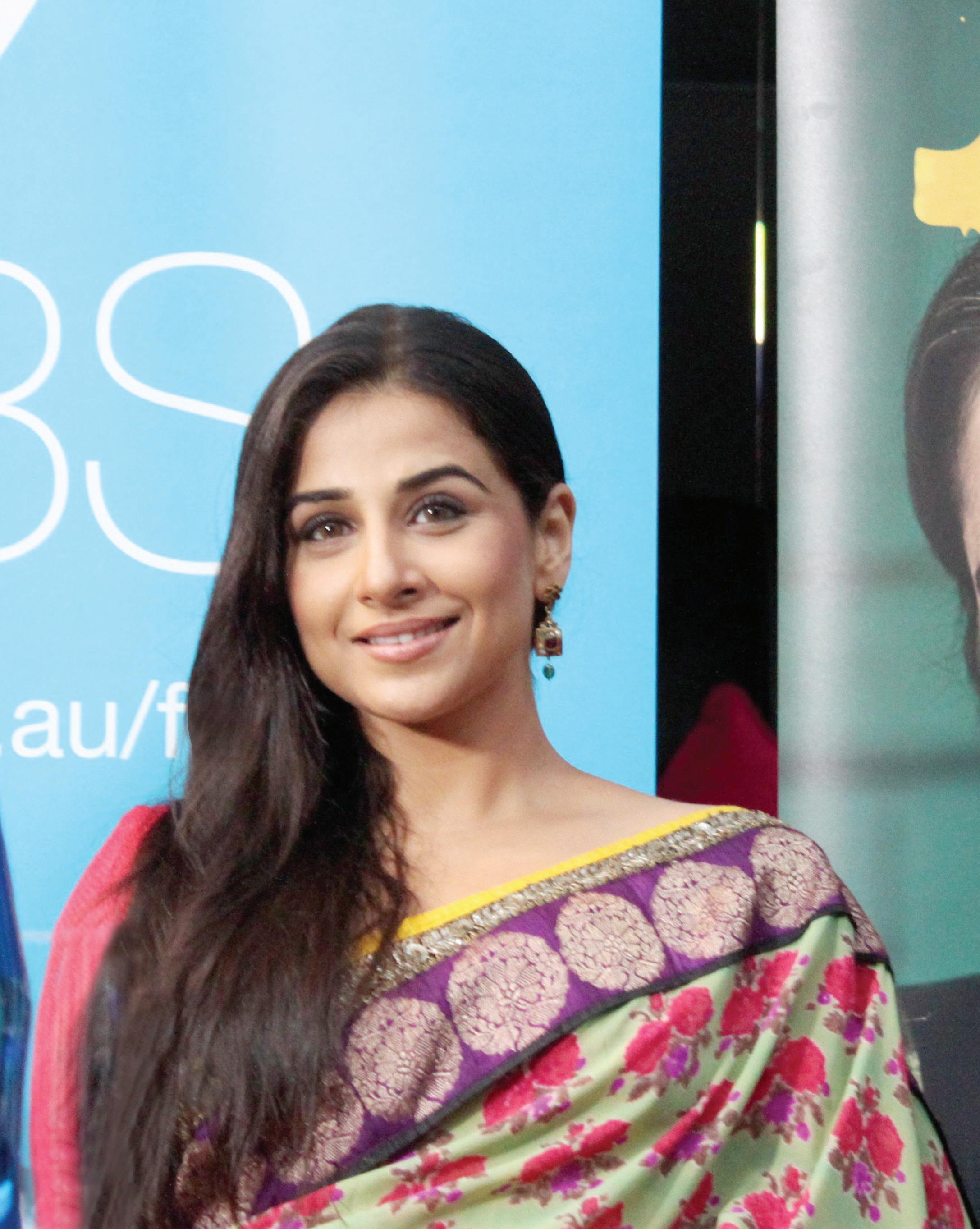
The last time I interviewed her in Mumbai was in 2010, just before the release of Ishqiya. The memory is still fresh – Vidya Balan draped in a simple printed yellow saree in ‘ co-star Arshad Warsi. The two looked the part even in the studio. And with no starry airs and no diva tantrums, Vidya Balan certainly came as a welcome relief from the oh-so-pretentious nature of stardom. But as they say, some things are too good to be true, and I was still sceptical if the person I interacted with was the character Krishna of Vidya Balan the star or Vidya the person.
Cut to 2011, and I am waiting along with a host of other media to meet the star once again. We wait in a hotel lobby in Woolloomooloo, a posh suburb in Sydney where one could expect to bump into the likes of Russell Crowe, Nicole Kidman and Steve Waugh…
But today the spotlight was on - Vidya Balan!
Though she’s had her fair share of Sydney’s sun while shooting for , this time it’s the Indian Film Festival, that brings the actress back to Australia. With a retrospective dedicated to Vidya Balan, her fans are up for a treat ranging from . Vidya was here to introduce the opening film of the festival, Draped in a Sabyasachi sari, Vidya sets the shutterbugs flashing. I am familiar with the smile, the polite demeanor and the warmth. To our mutual surprise, she greets me familiarly from the swarm of media, and after some girly talk we settle down for the job at hand –
Ms. Balan isn’t speaking to just anyone on the day. a couple of selected mainstream media are the only ones with access to a short chat with her, so I make the most of my time with Vidya, asking her a few pertinent questions about her life, career and future
Priyanka Tater: Let’s begin from where we left off in 2010. The Filmfare Critics award for best performance in year before that, the Filmfare award for best actress for (God willing), it feels great when one’s work is appreciated. I am thankful to those who’ve offered me such varied roles and given me the opportunity to work in their films. All I
PT: So you’re certainly having the last laugh, after a career that began with music videos, TV commercials and Radhika Mathur
It has been an extremely fulfilling journey and a happy one. I have grown through my work. I was a baby when I did Hum Paanch, but I’ve learnt on the job. God has been very kind. I didn’t have any backing or a ‘filmy’ background. It’s the belief in oneself that is derived from my faith in the Almighty and the unconditional support from my family, which is the reason I’m sitting here and being interviewed by you. A lot of people are talented, but I have been very, very fortunate and blessed.
PT: A sign of a mature actor is playing different roles, like young Parineeta and mother to the Big B in Paa; or Krishna Ishqiya and Sabrina Lall No One Killed Jessica. Do you now feel that you’re being typecast into more mature roles, and would prefer to play younger characters? Thank you for calling me a ‘mature’ actor. I am happy with my mature performances in certain roles, they bring out the best in me. With Parineeta, I came into

VB: Luckily for me, I did not impersonate the real life Sabrina. The Sabrina in No One Killed Jessica is the one from eleven years ago when the incident happened. One really does not have access to her except one’s imagination. The director Rajkumar and I based our interpretation and characterization on the fact that she was just like any of us who was suddenly faced with this tragedy and how she fell back on her inner strength, keeping up the fight for 11 long years and truly emerging as a real life hero. We are happy that Sabrina Lall endorsed our movie.
PT: So what’s next, Hollywood?
VB: I am looking at good cinema, wherever that takes me. Iranian, Israeli, Hollywood, Australian… I am open to good roles and good films.
PT: And what about your personal plans? I heard that you would prefer to marry a Bengali?
VB (laughing): Vidya Balan does not want to marry for a long time! (pausing) but we shall see. Bengali, non-Bengali, Indian, Australian (with a giggle); I am single and ready to mingle!
It was hard to ignore the honesty and passion with which Vidya conducted herself during the interview. There’s no doubt that the star’s got her head firmly on her shoulders. And I have to admit that my initial scepticism disappeared as I finally met the real Vidya Balan - the endearing person with charm and charisma who remains as genuine and warm in Sydney, as she was in Mumbai a year ago.
APRIL 2011 <> 37 INDIAN LINK
PRIYANKA TATER
“ “ S
I am now playing extremely varied characters and if that means I can’t play teenage characters or younger roles, I am okay with that, because I didn’t come into the industry as a teenager
STAR-GAZING www.indianlink.com.au
Photos: Drishya Sharma
I Am Juhi
Juhi Chawla attended

new
the
Bollywood and Beyond Film Festival to promote her
movie, I Am, and talked to Indian Link about her career and personal life
BY PREETI JABBAL
Smiles and easy laughter were an integral part of my interview with Juhi Chawla as she discussed her life and times with trademark Juhi chirpiness, with only occasional lapses into seriousness as she pondered on some of the questions. A frown of concentration would briefly appear on her beautiful face before she would give in to another bout of giggles. Surprisingly, I found that endearing rather than annoying, especially as her replies were peppered with self-deprecating humour.
When asked how she manages the three Ms - movies, marriage and motherhood, she asked me to add another ‘M’ to that list. “I Mismanage everything!” she said with a grin.

“Life just happens when you are busy making plans on how to live it,” she added, with a touch of seriousness. “I have very clear priorities. My family, kids and work come first, and then everything else. I make time for important things and excuses for the rest, that includes saying no to parties and events especially if they take me away from my family.”
“Currently a large chunk of my time is spent on learning music, I am a wannabe in the music department. If I get any chance I love to sing,” said Juhi laughingly. “I find that learning music ‘centres’ me and gives me a balance.”
Juhi’s impressive filmography includes a combination of commercially successful hits like Qayamat Se Qayamat Tak, Darr, Yes Boss and also sensitive films like My Brother Nikhil, Bas Ek Pal and the recent, I am. Her production company Dreamz Unlimited runs in partnership with actor Sharukh Khan and director Aziz Mirza, and she is a co-owner of IPL team Kolkata Knight Riders along with her husband Jai Mehta and Shah Rukh Khan. Juhi has also acted in several Punjabi films and appeared in popular ads on TV.
How do her two children Jhanavi (10) and Arjun (8) react when they watch her on screen, I ask. “They see me more on television, as we do not watch many movies as a rule; we prefer doing other activities together. My children have not seen much of my work, and the only movie we watched was Bhootnath, where I play the role of a mom. One child did not like the movie at all and the other did not like me playing someone else’s mom!” she disclosed.
Would she encourage them to join the film industry?
“They are only little now, but if they want to join films when they grow up, that would be lovely. I often wonder about this when I see other stars and their children who follow in their footsteps. Personally I would encourage my children to do whatever they want to do, and would never force my ideas on them. Like any normal parent I want my kids to shine in whatever field they choose,” she replied.
Juhi entered the film industry by chance, rather than choice. She was offered a role in Sultanat after winning the Miss India contest in 1984, followed by the stupendously
generally stuck to safe roles that suited my personality. I was happy to act in roles that required humour and fun, and did not mind some tear-jerkers or breaking into a dance but in all honesty, I never took up anything that would pose a real challenge or get me too far away from my comfort zone”.
Despite her self-confessed restrictions, Juhi has an impressive list of hits to her name, among Bollywood’s actresses. She has worked opposite the top male leads, including her dear friend Shahrukh Khan. She has now started appearing more in art house movies, lamenting that there aren’t many good roles for her in commercial cinemas anymore.
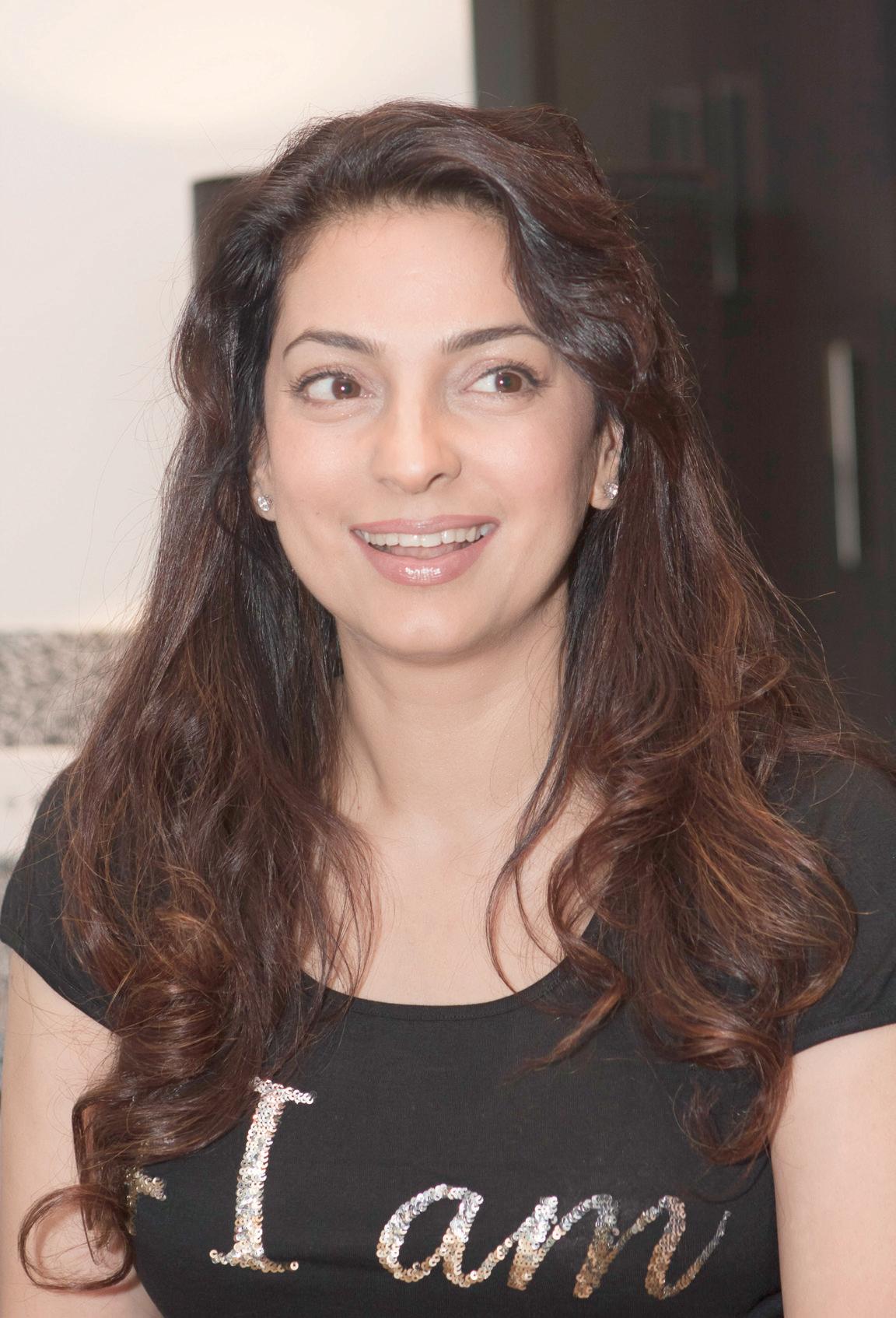
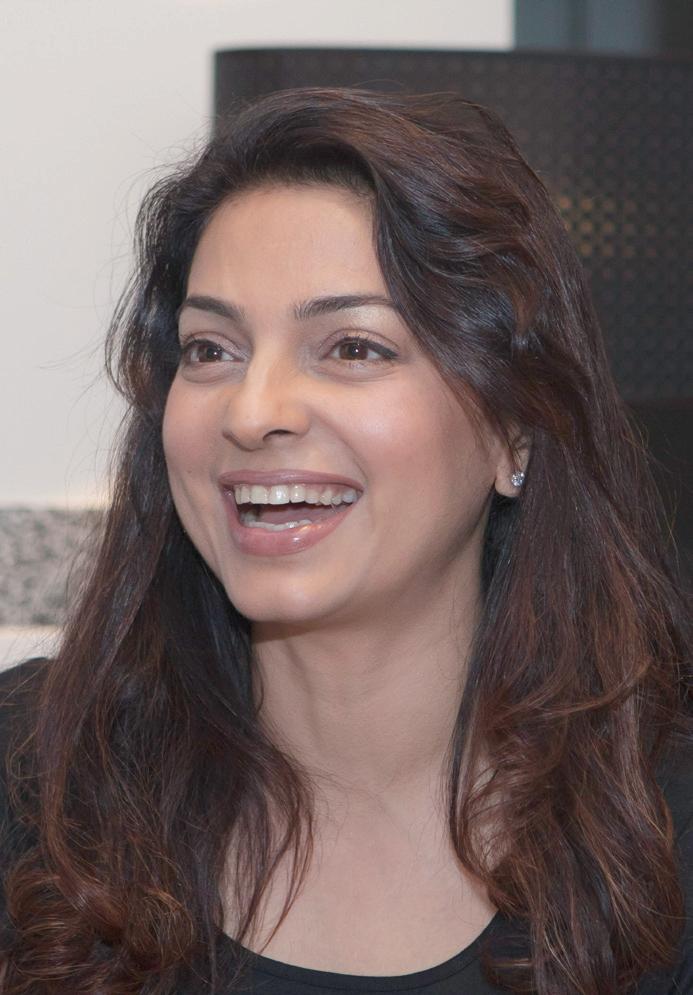
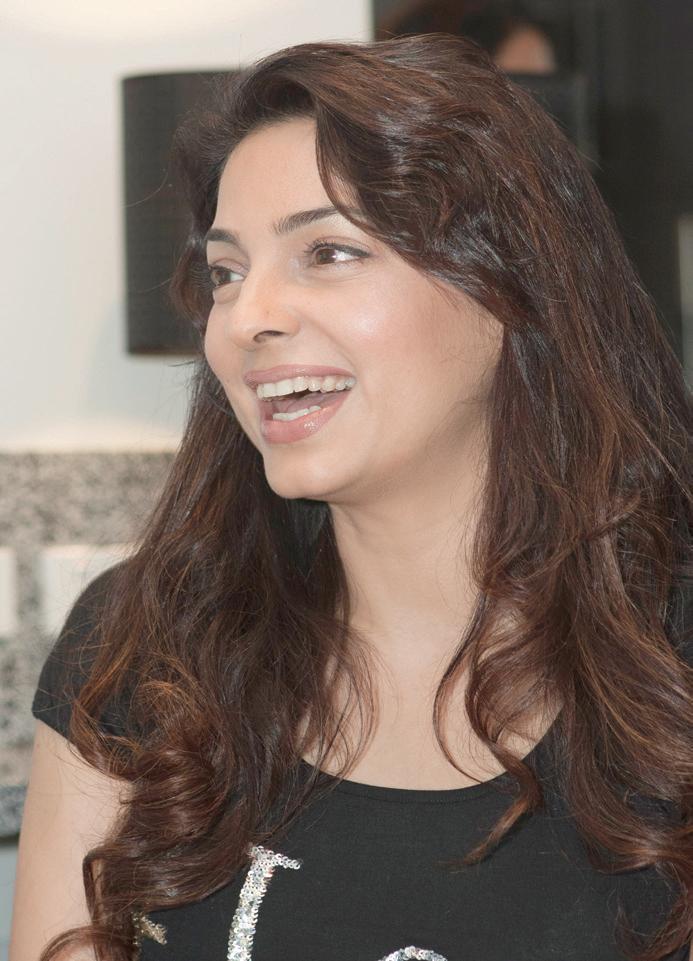
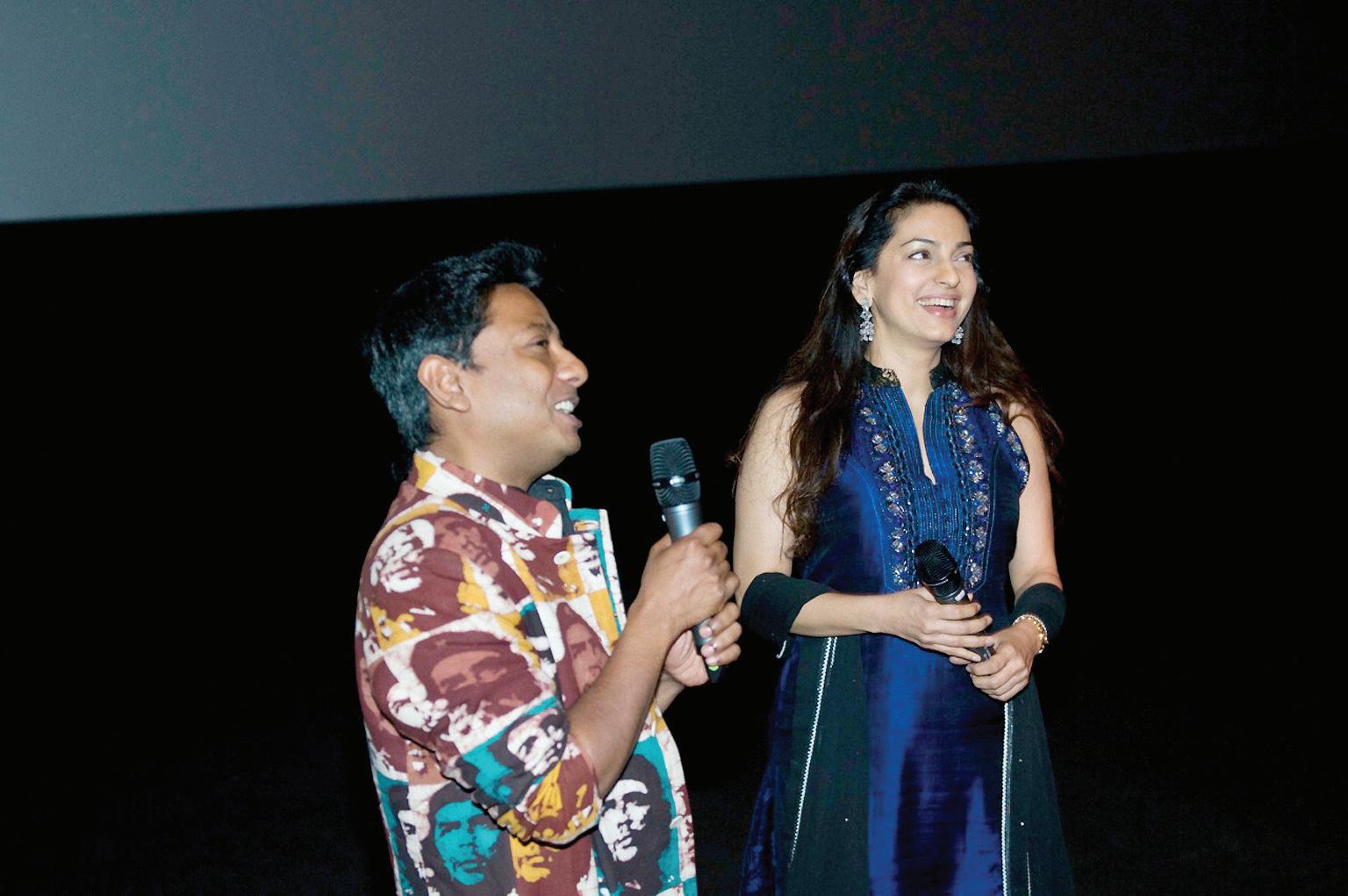
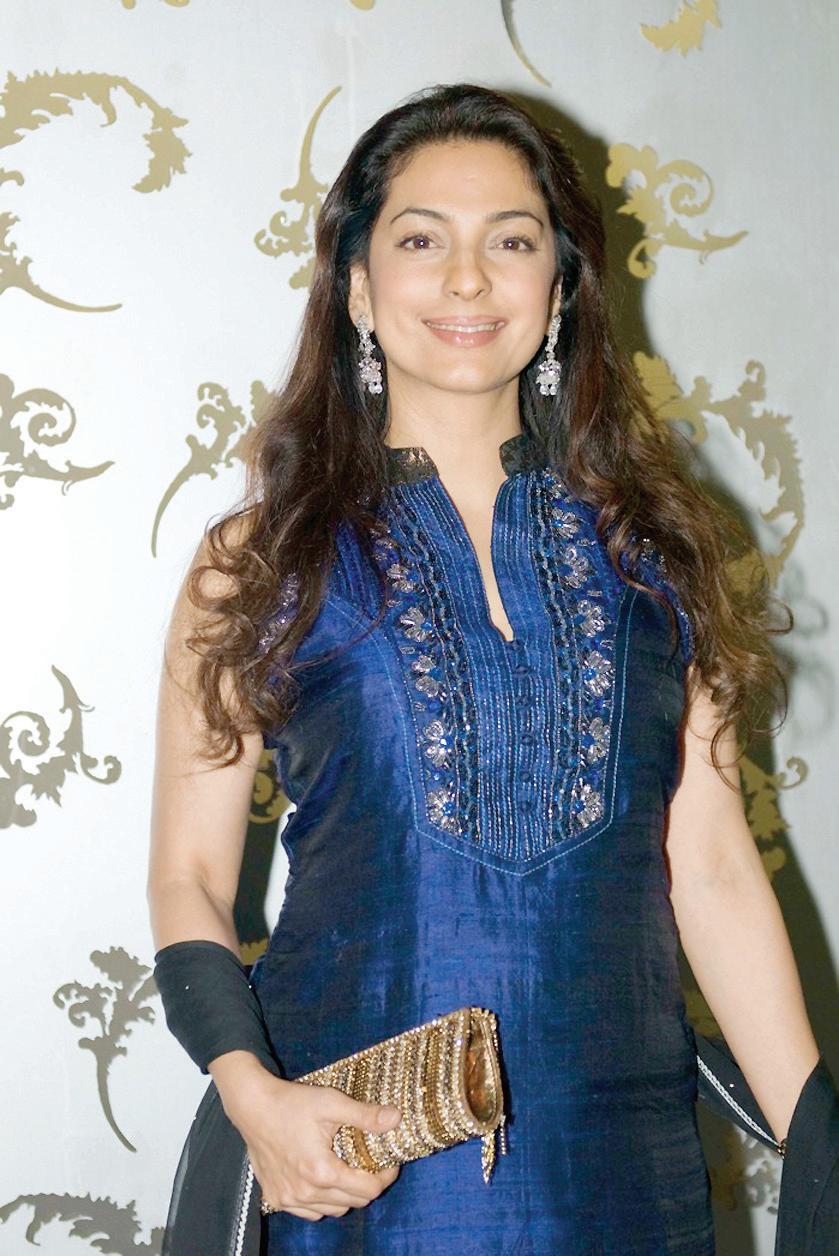
So what’s the upside of currently being at an ‘inbetween stage’ - no longer the nubile nymph, nor ready to retire yet? “The positives are that I have a lot of experience under my belt, I am very comfortable in front of the camera and I have a lot more confidence and self assurance. I am not very busy so I get to spend time doing other things like endorsements, and being with my family and kids. On the flip side I don’t do much film work, so I am not totally in the loop. Quite often nowadays I get some inane offers or am asked to act as a mother of an 18-year-old. I am a mother of young kids and prepared to act in age-appropriate roles, but certainly not as a mother of an 18-20 something,” she said indignantly. At this, I ask Juhi for her thoughts on gender inequality in the industry, where most actresses past a certain age get written off while their male co-stars keep appearing with younger actresses.
“This is a constant within the industry that has been around for 60 years, and is not about to change!” she said, laughing again.
Have you done anything about it, I asked.
“Nothing really, I have other priorities now and I am not trying to fit into the shoes that I wore ten years ago, so frankly, it doesn’t bother me too much,” said Juhi with a shrug.
And what does she think of the fresh crop of actresses, and who are her favourites? “I haven’t watched many films but from what I have seen, I think Katrina Kaif and Deepika Padukone are very glamourous,” replied Juhi.
“Anoushka Sharma did very well in Band Baja Baraat and I think Vidya Balan is also good. She is exploring beyond the heroine range and spreading her wings quite well”.
The actress’s new movie I am, directed by Onirban Dhar is a tale of four stories woven together that takes the audience through issues and dilemmas that bruise modern Indian society. Juhi plays ‘I am Megha’, a Kashmiri pandit forced to flee her home. She returns to the valley after almost two decades, livid and cynical, only to find that her Muslim friend is no better off.
In a whirlwind trip down under, Juhi travelled with Onir to Sydney, Melbourne and Auckland to promote the movie. They appeared together for a Q&A session on the closing night of the Bollywood and Beyond Film Festival hosted by Mind Blowing Films. Fans who flocked to the cinemas were also able to ask some questions and see their favourite heroine in person. And although time was short, I managed to get in a few quotable quotes that throw light on Juhi’s cheerful and easygoing personality.
Up close and personal
Her mantra for looking so gorgeous: “I don’t have enough time to look after myself, but I like yoga and my music keeps me centered and calm. The mantra is to do something that you are passionate about.” The meaning of success: “A smile on my face when I wake up each morning.”
Art house or commercial: “Haila! It’s hard to say, as I have been in commercial movies all my life and now I do some art house as well. Ok, I choose ‘commercial’. Why not? Bring on the naach gaana!” What she would change about Indian cinema: “One thing I wouldn’t change is how good always triumphs over evil. It’s a nice message and I hope we don’t get too influenced by the West and steer away from that homily.”
Politics? “No! A definite no!”
Can’t live without: “My kids!”
Sharing the spiritual: “I believe there is a divine presence and there is no coincidence. You become what you think, and that is why it is important to find balance.”
In the pipeline: “An animation called Mein Krishna Hoon directed by Rajiv S. Ruia, also starring Hritik Roshan and Katrina Kaif.”
STAR-GAZING
Juhi with Onir at the Melbourne premiere of I Am
Photos: Ravinder Singh Jabbal
I Am Onir
He is a film-maker with the nerve to explore still-taboo topics in Indian society, and with the talent to enrapture the audience
BY GAURAV PANDEY

Onir belongs to a small group of Indian filmmakers whose films have departed from the time-tested, formula-based model that remains a get-to guide for many others. The director was in Melbourne recently to promote , which brings together four different stories dealing with culturally and morally sensitive issues.

Since making his debut in 2005 with My Brother Nikhil, Onir has already earned a name for himself among those who cherish sincere cinema. The movie made the audience sit up and take notice of this new director who believed in telling sensitive stories in an honest way – a philosophy he has followed in his subsequent movies too.
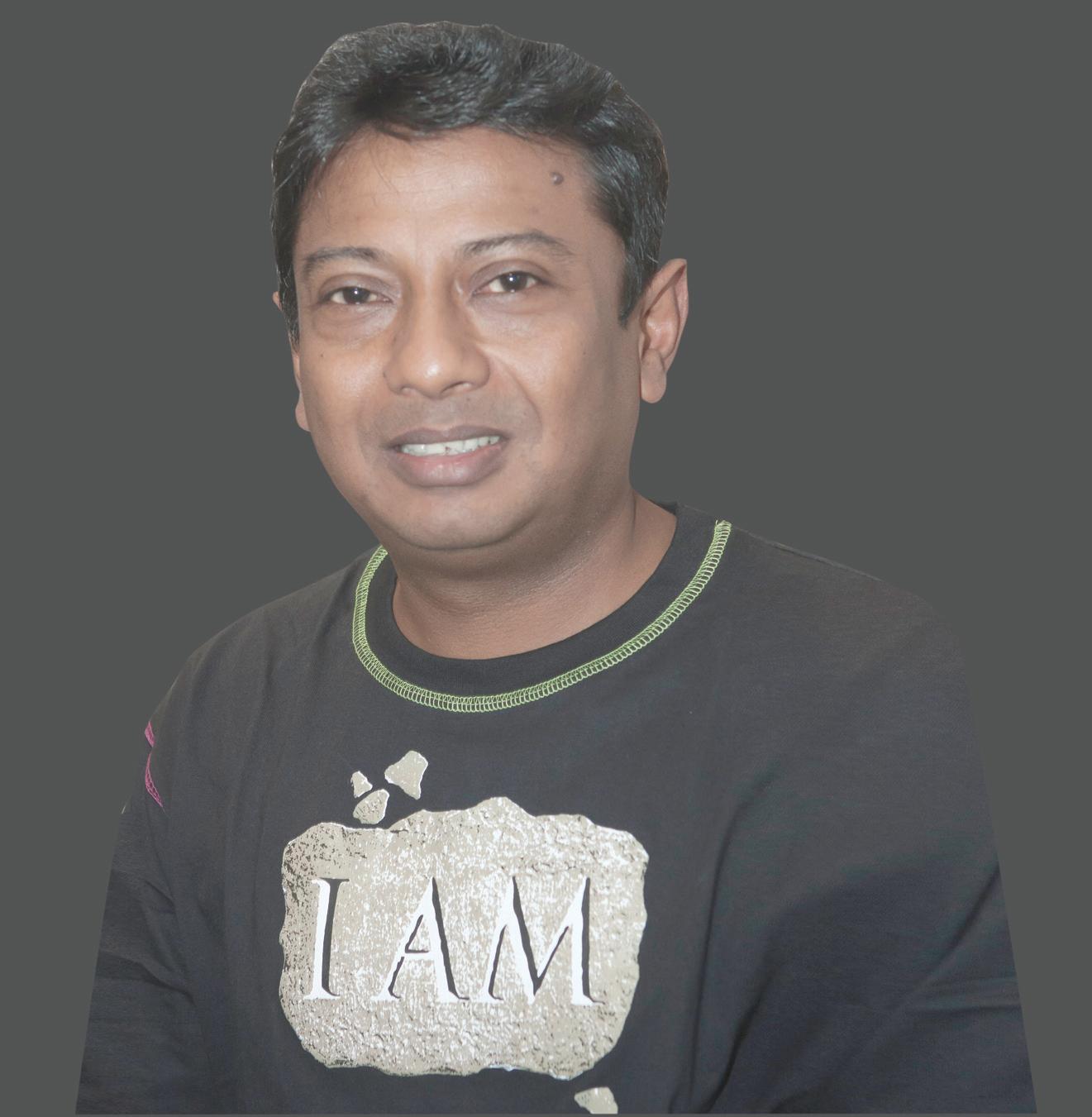
“My Brother Nikhil was essentially a sensitive, dramatic film that, I hoped, would appeal to people,” he says. “The fact that it was so well received surprised even me.”
For a film that was inspired by a true story and dealt with subjects still considered touchy in many cultures, My Brother Nikhil received widespread praise for the extraordinary effort put in by all involved. He has since made three other movies - Bas Ek Pal, Sorry Bhai and I Am -each an effort to stay off the beaten track.
That some of the most talented actors in the industry have worked, often repeatedly, with Onir speaks volumes about the faith they have in his ability to tell a story well.
“I’ve been fortunate that my films have always had some of the best actors in the industry. We believe in sensitive cinema and it is great to see so many talented actors come together for something they all believe in. Ultimately, the actor transforms the filmmaker’s dream into reality. It becomes important to have respectable actors in your team, especially when dealing with ‘taboo’ subjects, because they add to the credibility of your story,” he explains. “Most of the actors in my films work for free.”
It seems the satisfaction derived out of a good effort alone drives him. “The box office does not decide how good or bad your film will be. It is a matter of perspective, and a learning process for the filmmaker,” Oni avers.
Good filmmaking is as much about choosing the right story to tell as it is about choosing how to tell that story. “The script is the backbone of a film,” Onir says. “If you look at the winners at the recent Oscar Awards, for instance The Black Swan or The King’s Speech, they are essentially simple scripts devoid of unnecessary glamour and extravagance.”

However, for many in the Indian film industry, unusual scripts remain too radical a departure from the norm. “There are some
very capable writers in the Indian film industry who are coming up with interesting scripts. The problem is that Indian financers do not like to take chances with new scripts. They are very comfortable in what they have been doing over the years,” explains Onir.
The lack of funding from conventional sources, it seems, has not led to pessimism among filmmakers determined to succeed. Common sense and innovation have come to the director’s rescue, perhaps yet again, with fans on Facebook and Twitter responding in an impressive way to his request for financial support for his new film.
“I Am deals with the dilemmas and conflicts of modern Indian society. It is about looking for a life of dignity and living a life without fear. The film, at the end of it, celebrates the desire of freedom, of personal identity,” Onir says. The filmmaker found it hard to convince financers that the script is “commercial enough”; yet convincing the average fan seemed much easier.
The contributors – many of them appreciative of the previous works of the director and his desire to portray unique and sensitive stories – did not hold back when it came to funding. Almost all the money for I
Melbourne girl who now calls Mumbai home
This young lady of many talents is slowly creating a niche for herself in the world of showbiz
BY RAJNI ANAND LUTHRA
She’s done the hard yards in Mumbai’s film industry, and all the toil seems to be paying off.
Melbourne girl Pallavi Sharda, who is currently working on her third Hindi film Love, Break-Ups, Zindagi with Zayed Khan, is quite pleased with her new career.
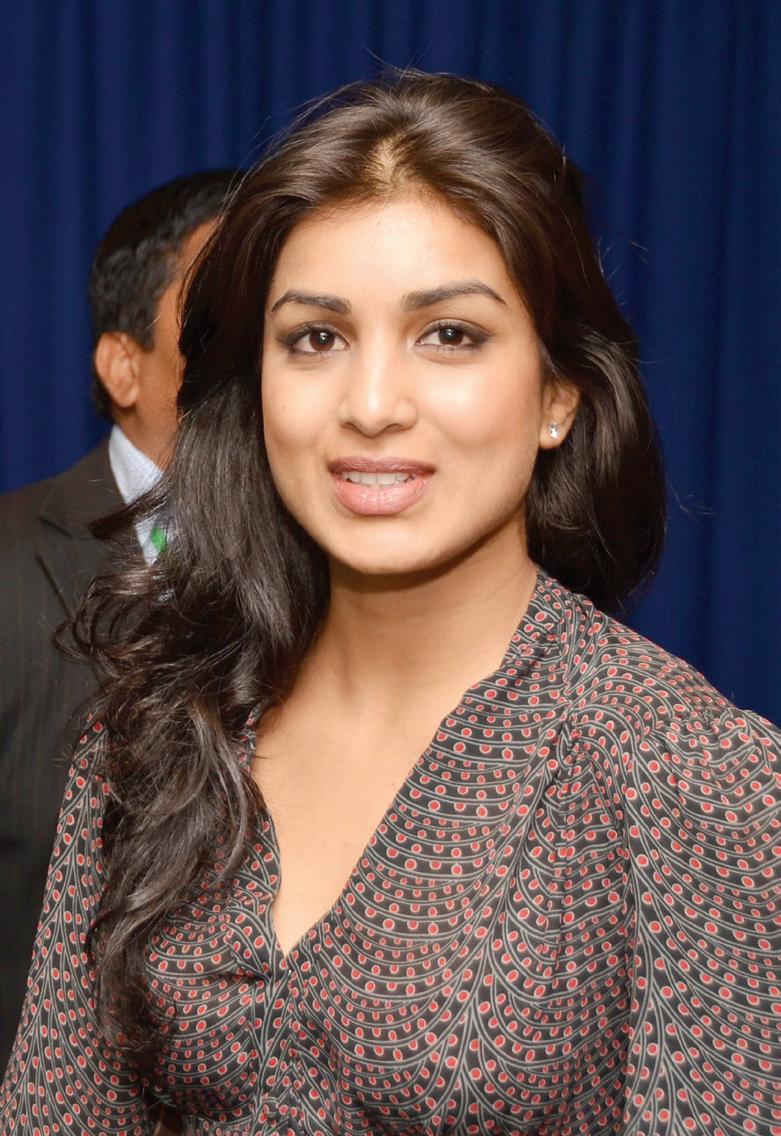
“I’m no longer in the ‘have-to-break-in’ mode,” the articulate and self-assured Pallavi states cheerfully. “I’ve laid my foundations, and found the kind of people I want to work with”.
When she won the Miss India-Australia contest last year, Pallavi was already two films old. Her debut came with none other than Karan Johar, when the star director offered her a cameo in the SRK-starer My Name is Khan.
Even before the film was released, Pallavi had landed the lead role in the art-house film Dus Tola, starring the industry’s ‘thinking’ actor Manoj Bajpai. She won rave reviews for her portrayal of a silent but strong and
independent village woman.
In her new film, she is taking the strong and independent woman out of the rural scene and putting her in the cut-throat corporate world of Mumbai.
“I play a no-nonsense, career-oriented girl in this film which also stars Dia Mirza and Zayed Khan. It is directed by Sahil Sangha”.
Is it true that Sangha spotted her as she auditioned for another role, and was immediately struck by her poised, headfirmly-on-her-shoulders kind of look?
Pallavi laughs, “That could be right – after all, I’ve worked in a Melbourne law firm! And I’ve been brought up as a modern woman…”
A multi-faceted personality, Pallavi is putting to full use her combined degrees in law and media and communications. She is equally at home at a panel discussion on leadership strategies for the next era of Asia’s growth, as she is facing the camera with Shah Rukh Khan beside her. Alongside her film career in Mumbai, Pallavi also works as a consultant with Tata in the area of corporate communications, a role which took her to Africa recently, to conduct workshops.
Yet an amalgam of both careers is her ultimate aim. “Having always had a social justice focus, my vision is to use my artistic talent for human interest over anything else,
Pallavi reveals.
Her short-term goal – to make it in Bollywood – is now near fruition. The new film releases in August this year and Pallavi is already reading more scripts.
“I think I’ve made inroads into the right kind of production houses in Mumbai,” Pallavi reflects. “I’ve steered clear of the ‘old school’ philosophy, and am happy to say all my relationships are with the fresh breed of professionals that Bollywood is becoming known for”.
Last year also saw the release of her short independent film Walkway, which was made in the U.S. Before that, she was in the theatre production 1 888 Dial India, a play about call-centres and the ‘new Indian dream’ which toured the country. In between, she has featured in many print and TV commercials, and innumerable dance shows.
A keen dancer who has trained in the Bharatanatyam style but experiments with fusion, Pallavi is a bit disappointed that Love, Break-Ups, Zindagi has no songs and dances, but she lets slip, “There are a few surprises, I can tell you!”
“It’s been a lot of hard work,” Pallavi reflects. “I landed in Mumbai less than three years ago, with no contacts whatsoever,
Am came in the form of small contributions from fans who wanted to own a part of the film. What started as an experiment turned into a partnership of mutual respect between the audience and the filmmaker – something that is more than likely to go beyond a single film.
“For me, I Am is made by the audience. The trust people had in me as a filmmaker was humbling. I would like to make enough money from it so that I am able to return people’s money and, perhaps, give them back a little extra for believing in the movie,” claims Onir.
“A lot of people who came to watch I Am told me that they were impressed by my previous films,” he says. “You relish that as a filmmaker; it makes you work extra hard to redeem their faith in you.”
and began doing the rounds of production houses and agents… and now, I have created a home and a life for myself. Lots of girls come to Mumbai with the exact same dreams, and don’t get half the exposure I have. I’ve done major roles already, so overall, I can’t complain, really”.
Now all Pallavi is waiting for is for the audiences to appreciate her work.
Meanwhile, she’s also writing a film script, working with Melbourne comedian Ben Price. “It’s a story set in Indian and Australian cultures,” is all she will reveal for now.
APRIL 2011 <> 39 INDIAN LINK
www.indianlink.com.au
Pallavi Sharda
Photos: Ravinder Singh Jabbal
Photos: Ravinder Singh Jabbal
Celebrating Navroz
Ancient traditions and celebrations come alive during the Persian New Year, as
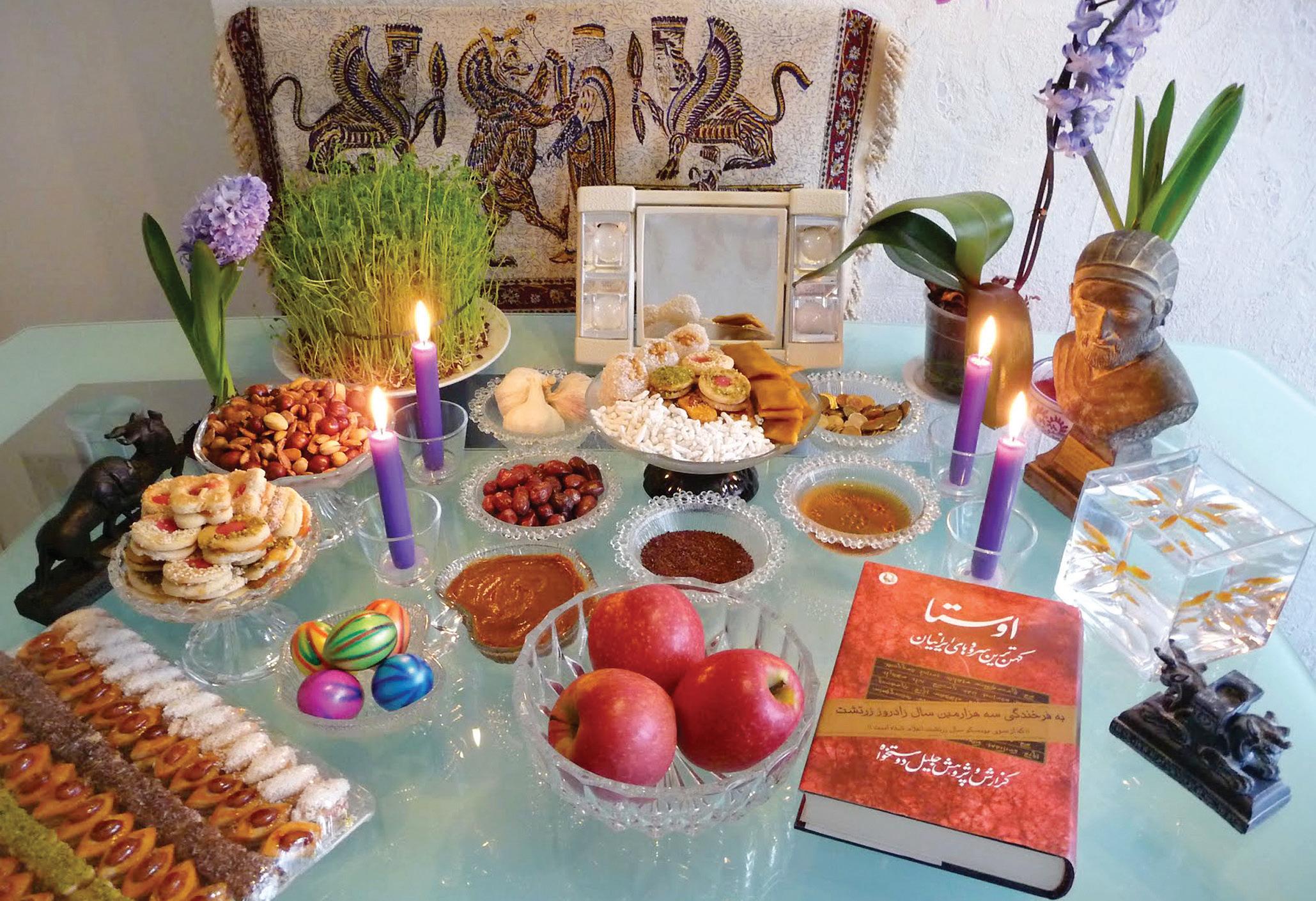
the arrival of 1390 is heralded
BY TIM BLIGHT
or the Persian New Year was celebrated among Zoroastrian and Iranian communities around the world on March 20 - 21. Tables were set, feasts were eaten, the past year was reflected upon and the New Year anticipated, as Australia’s 3,000-strong Zoroastrian community rang in the year 1390 with their cousins on the subcontinent. While the traditional bonfires are not as common at Navroz in Australia, haft sin tables, picnics and dancing are still central to the occasion. While the Zoroastrian community is comparatively small on the subcontinent, large numbers are centered around Mumbai and Karachi.
Bahar Wadia of Mumbai, explained how her family would traditionally mark the New Year. “We would go to the fire temple in the morning dressed in our new clothes, and light a special divo (oil lamp).” In Iran, bonfires are lit, danced around and jumped over into the early morning, symbolically carrying the sun through to the dawn of the New Year. “Also, much like the Chinese calendar, each year an animal and their colour are identified for the new year. For example, this is the year of the
white rabbit – although I’m still not sure of their significance!” laughs Bahar.
Persian New Year is celebrated at the northern hemisphere’s spring equinox, heralding the beginning of a new season of harvest and light. Zoroastrians customarily set a haft sin table in the lead up to Navroz; haft is Persian for seven, while sin is the name of the Persian letter ‘s’. Typically, a table would be set with seven symbolic items, all of them beginning with the letter ‘s’; saffron, sumac, seer (garlic), sabzi (vegetables) and sib (apples) serkeh (vinegar) and a pudding called samanu Zoroastrians in India have slightly different traditions, but with similar meaning. “As the celebration of spring, a table is set with most things symbolizing the season - lots of greens, lots of wheat, rice, dry fruits, falooda (yum!), and fruit - especially pomegranates. Again a divo is lit on the table. You invite family and friends to join you and your immediate family for a good lunch!” says Ms Wadia.
Zoroastrianism, Iran’s ancient religion, came to the subcontinent during the tenth century with the immigration of ‘Parsi’ communities. Later migration brought the ‘Irani’ community; a different generation of the same religion. Despite their small size, the two communities are prominent in Indian society with various names such as Tata Motors and Godrej being Parsi
Matrimonials
SEEKING BRIDES
Looking for a match for my brother, smart, intellectual and hardworking. Prefer a family-oriented girl, either PR or on Student Visa. As myself and my sister are both Australian citizen, we will be sponsoring my brother and his spouse for permanent residency. Please contact +61 4 3306 5610
Match required for an Australian citizen Sydney resident north Indian boy, 26 years old, 5’7”, slim, handsome and very fair engineer boy from Kayastha family. Looking for a suitable welleducated Indian girl with family values. Caste no bar. Please send details to akhilsns@gmail.com or contact 0412 487 801.
Saini Sikh boy, 1970-born, 5’10”, welleducated, divorced, looking for a girl in Australia on any visa. Caste, religion or region no bars. Simple and early marriage in Australia. Ph. 0401 532 487 (Australia), 98 8864 0204 (India), email: kulvinder102@yahoo.com
Australian Citizen, Hindu, Saiva Pillai Tamil 39, M.Tech, Project Officer, clean habits seeks girl, strictly should be housewife after marriage. Strictly vegetarian. Caste no bar. Apply with BHP to soulpartersearch@gmail.com.
enterprises. Model and Bollywood heartthrob
John Abraham identifies as Zoroastrian, as did the late Freddie Mercury, lead singer of British rock-band Queen. World renowned composer Zubin Mehta, late physician and pioneer of India’s nuclear programme Homi Jehangir Bhabha and author Rohinton Mistry are all prominent Parsis.
Inevitably, the Indian Zoroastrian community’s culture has evolved in isolation to Iran’s Zoroastrian community. Norooz became translated as Navroz in the
subcontinent. With a majority of Parsis settling in the regions of Gujarat and Sindh, Gujarati, and to a lesser extent Sindhi became defacto languages of the Indian Zoroastrian community. While Iranian food is traditionally mild, Parsis and Iranis enthusiastically adopted the spicy mélange of flavours in Gujarati food to create a unique hybrid cuisine. Following the solar calendar, the next traditional Zoroastrian festival is the midspring feast.
31-year-old
male, Fijian-Indian background, 5’8”, fair, handsome, Australian citizen vegetarian and nonsmoker, living in Sydney, seeks suitable match of honest girl with good family values, age 25-30. Caste and education no bar. Please reply with photo and details HI.WATSUP@hotmail.com or call 0449 109 620
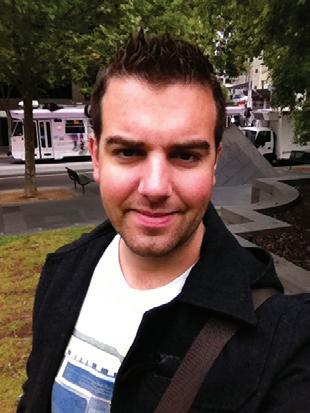
Fiji Hindu, 52, dual Australian / New Zealand citizenship, living in Liverpool, Sydney, seeks Hindu wife from India or Fiji, age 30-45. Please email details / pics to ron_87singh@hotmail. com
Seeking an alliance for Valmiki boy, 36, 5’8”, very well educated, LLB, MIB (AUS) government employee, Australian citizen. Parents are seeking a well educated, homely girl with traditional values. Caste no bar. Respond with photo and complete bio at valmikiboy@hotmail.com or call 0431 159 221.
SEEKING GROOMS
Punjabi Hindu Khatri girl, goodlooking, smart homely, never married, 34, 5‘11”, looks very young, seeks tall Indian boy settled in Australia, caste no bar. Two brothers well settled in Sydney. Contact with photo and details on 0425 910 007 or ricky.bhalla@gmail.com
Seeking match for Sikh girl, 30 years old, 5’2”, very beautiful, born and raised in New Delhi with Indian values. Belongs to an established family in India, father working as Director of Engg. Institute, eldest sister married and well settled in Sydney. Highly qualified with couple of masters’ degrees, completed CA from ICWAI and experienced in working with a top prestigious firm. Seeking professional, well-educated match with good family background. Early Marriage. Caste no bar. Contact: 0403 421 720 or email: kitty.80@ live.com
Seeking a professional, well settled, handsome, Sikh boy for an intelligent Jat Sikh girl, dentist, 29, 5’2” working in NSW and belonging to a family of professionals. Email ozdent123@gmail. com
Seeking match for Hindu, 32, 5’4”, Arora girl (divorced), PR, permanent job in NSW and studying accounting. Family settled in India (Punjab). Caste no bar. Please send photo and details to ompar@y7mail.com
Seeking professionally qualified and well settled teetotaller match for 1977-born Punjabi Khatri girl, 5’5”, MBA, diploma in HR, IAF lady officer, never married. Caste no bar. Sister in Sydney. Email details at preetiynr@rediffmail.com or riyasayal@ hotmail.com
Seeking suitable match for Punjabi Aggarwal girl M.A, B.Ed, Diploma in Community Welfare (Sydney), good looking and fair, divorcee, 5’3”, 42 years. Prefer qualified Indian-origin Hindu boy between 42-45 years. Send biodata with recent photo to janakraj.aggarwal@yahoo. com
Family seeking a suitable match for a beautiful and accomplished, 23 year old, 5’ 2’’ tall, slim built, North Indian girl with strong family and personal values. She is highly intelligent, has a degree in Commerce/Law and is a tax consultant at a high profile firm in Sydney. The preference is for a suitably educated and employed boy (age: 25-28) who has been brought up in Australia, USA or England. Please send your details (including a recent photograph) to OZ7654@gmail.com.
Dr. G. L Gupta settled in Australia since 1970, seeks match for granddaughter. Meenakshi Gupta DOB 7th Nov 1986, ht. 5’ 4” fair, with sharp features, from Hyderabad, India. Graduate in Commerce, PG Diploma in Banking and Finance from IFBI and worked in ICICI Bank. Coming to Sydney. Seeking Hindu (preferably Agarwa)l professional match. Contact 0401 448 186 / 0404 833 750. E mail giri32@yahoo.com.au
40 <> APRIL 2011 INDIAN LINK TRADITIONS
www.indianlink.com.au
A Haft-Sim table


APRIL 2011 <> 41 INDIAN LINK
Retracing Ram’s footsteps
BY SANDIP HOR
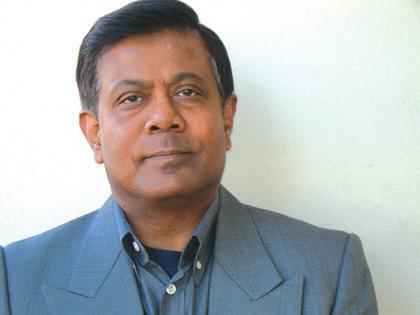
“This sleepy town of Ayodhya throbs with thousands of pilgrims on Ramnavami day,” says my guide, as we meander through “Ram Janmabhoomi”, the birthplace of Ram.
The seventh manifestation of Lord Vishnu, Ram has been for centuries, a symbol of manhood, heroism and the epitome of virtue, for Hindus.
Ram is the central personality of the great epic Ramayana, the stories of which have enthralled Indians for ages. Godly characters like Ram, Lakshman, Sita and Hanuman are a part of every Indian household, with the ten-faced Raavan being distanced with the mark of evil. Like many other Indians I grew up listening to and reading tales from this mythical epic that gave rise to the desire early in my life to make a pilgrimage to Ayodhya, to touch the grounds of this holy place where the Ramayana is believed to have come to life.
So when I was in Lucknow recently, I wasted no time in making a day-trip to this legendary quarter located only 130 kms away from the capital of Uttar Pradesh.
A destination of pilgrimage, its vast religious and historic significance is not just confined to the Hindus, but spread across Buddhists, Jains and Muslims as well.
A destination of pilgrimage, its vast religious and historic significance is not just confined to the Hindus, but spread across Buddhists, Jains and Muslims as well.
During the pre-historic period, Ayodhya was called Kosaldesa (the land of the Kosalas) and was the hub of the Kosala kingdom which peaked to its glory during the reign of King Dasharatha, the illustrious father of Ram. Then a largely populated and fortified place, it earned respect as the most venerated settlement in India, legend claiming it was built by God and made as prosperous as paradise itself.
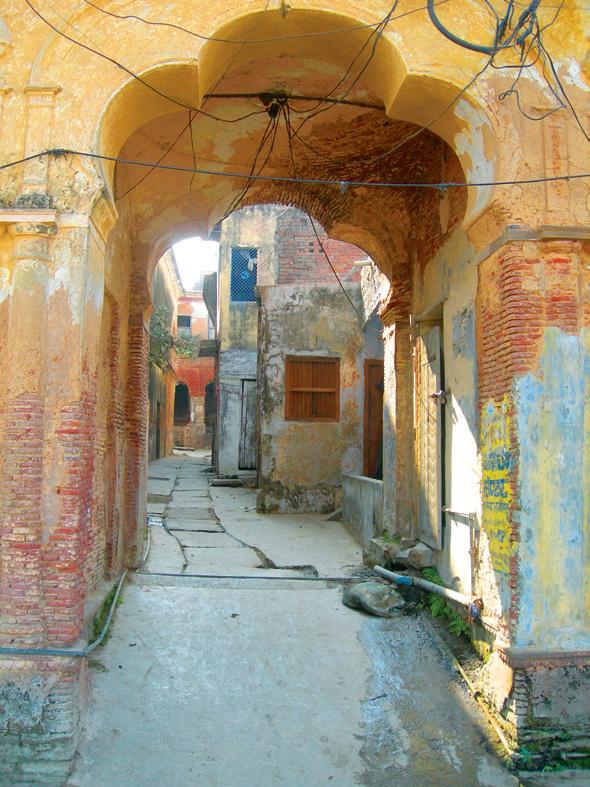
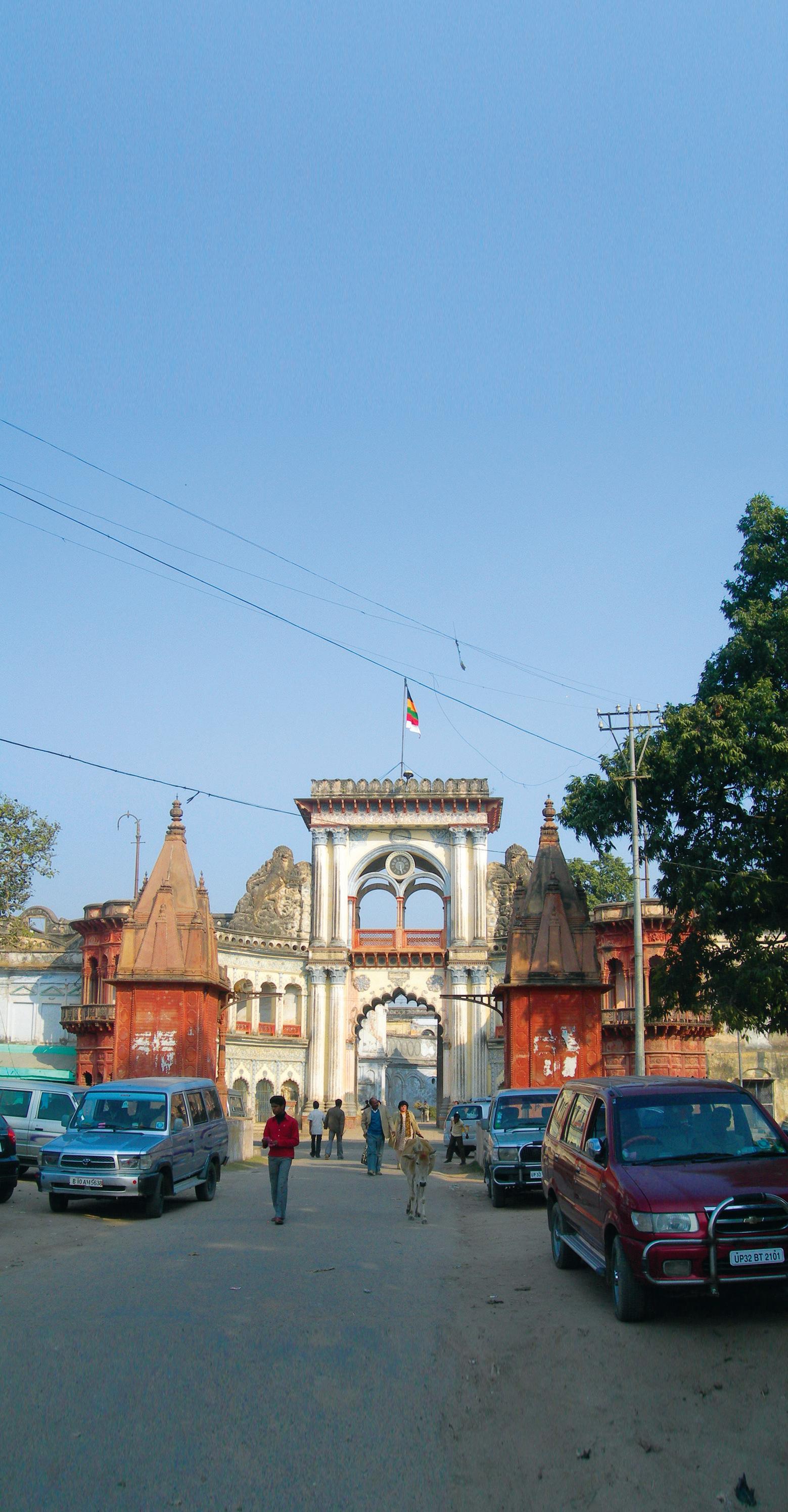
During a later period of time, other religions blossomed on its landscape as well.
Legend says that Lord Buddha once lived there and according to the notes of 5th century Chinese monk Faxian, the locale was crowned with over 100 Buddhist monasteries. For Jains, the land is no less significant.
Rishabh Dev, the father of their religion was born there and their holy text stands testimony to the visit of Mahavira, Jainism’s
42 <> APRIL 2011 INDIAN LINK
As Hindus gear up to celebrate Ramnavami, we embark upon a journey into the history of Ayodhya
INDIADIARY
1 2
last Tirthankar to this city. Bhagwan Swaminarayan, founder of the Swaminarayan cult of Hinduism, is said to have started his sevenyear journey across India as a ‘Neelkanth’ from Ayodhya.
Unfortunately you see nothing from that glorious period other than the River Sarju on the banks of which the Ayodhya grew, flourished, survived and continues to do so. However my guide tells me that outside the townscape are several mounds under which perhaps, are hidden ruins from that period, yet to be adequately explored by archaeologists.
With the arrival of the Mughals in the 16th century, Ayodhya lost its influence to Delhi and later to Lucknow, and never regained it.
The first Mughal Emperor Babar built a large Tughlaq-style mosque with three imposing domes in the early 16th century at a location that is believed by Hindus to be the birthplace of Ram. Because of its significance to both Hindus and Muslims, the site became a matter of contention and hit newspaper headlines in December 1992, when it was demolished by a mob of Hindu activists. Several hundreds died in the rioting that swept through India following the mosque’s destruction. Since then the situation has remained pretty tense in this pious land.
So the first thing that struck me after entering Ayodhya was the presence of large police and paramilitary forces at every corner of the shanty town. “It’s surely not to scare visitors, but to ensure the safety of all,” comments my guide as we walk through narrow alleyways. We are flanked on both sides with decrepit houses, many still with ornamentally decorated doors, shops displaying local handicrafts and photos of countless Hindu gods and goddesses, and eateries selling hot samosas, jelabis and masala chai.
We end up standing in a queue with several others to have a glimpse of the disputed site. Security is very tight, all bags searched thoroughly and you are
not allowed to take in your mobile phone and camera. However, disappointment grips me when I find there is nothing much to see at the spot today, though I feel a chill of deep ecclesiastic feeling down my spine as I think that I stand on the site where one day, perhaps God became flesh. It’s a similar kind of emotion I experienced earlier when visiting the birthplace of Jesus at Bethlehem.
Ayodhya town, very rustic in character with limited facilities for international tourists, is rife with temples and religious sites and hopping from one to the other takes up most of any visitor’s time.


Standing on elevated ground in the western part of the city is Ramkot, the central place of worship in Ayodhya. The place marks the site of Ram’s fort that once existed. It’s from here that he bid farewell to his kingdom and left for a 14-year exile in the forest with his three brothers and wife Sita. Quiet and carefree on any ordinary day, the domain comes alive during Ramnavami, when thousands of worshippers arrive to celebrate the birthday of Ram with pomp and grandeur.
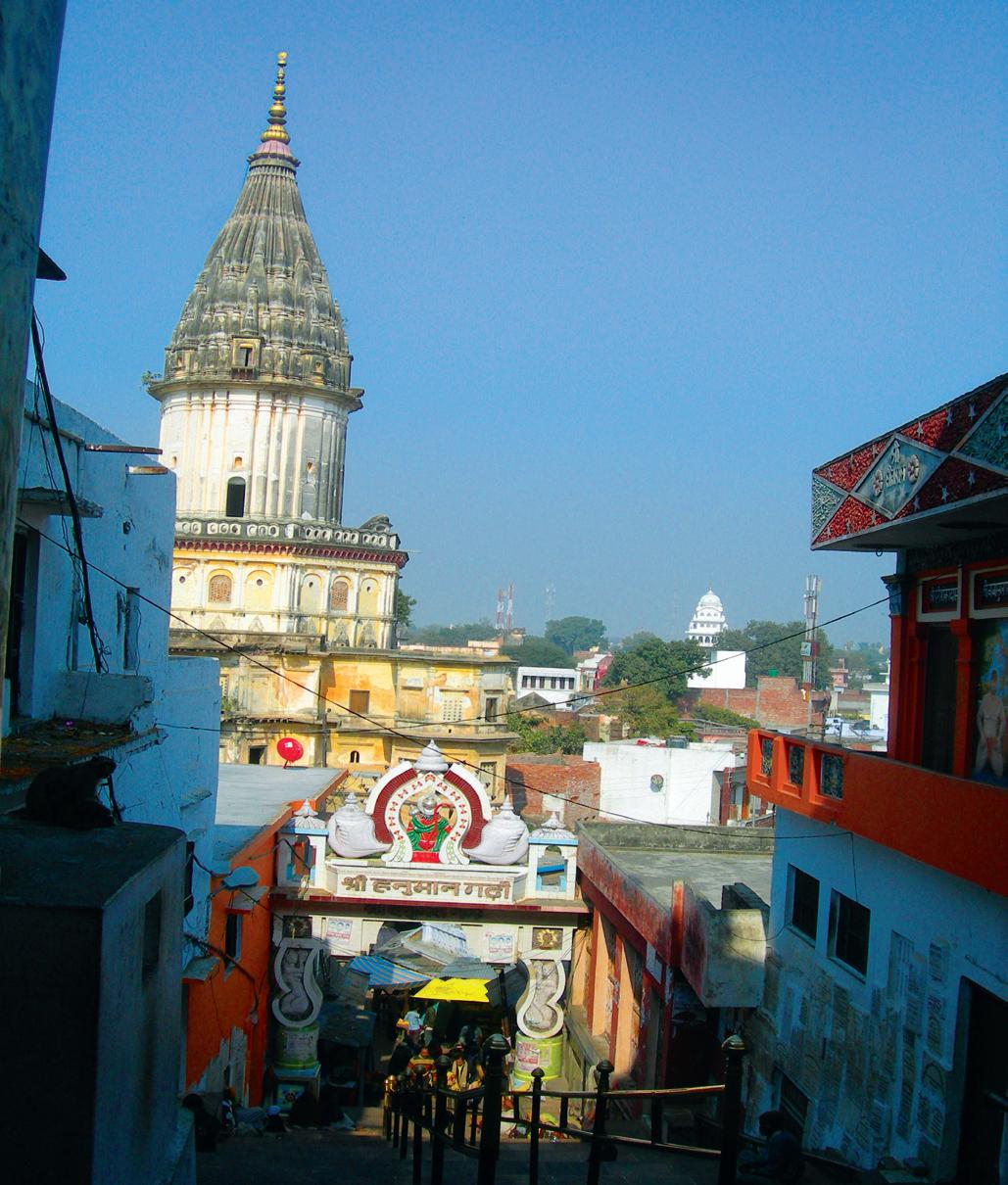
Hanuman Garhi where the God Hanuman is said to have lived during Ram’s time; Kanak Bhawan, said to have been originally built by Queen Kaikai for Sita; the ghats of River Sarju, as revered as the ghats of River Ganges in Varanasi, are the other sites that draw a visitor’s attention.
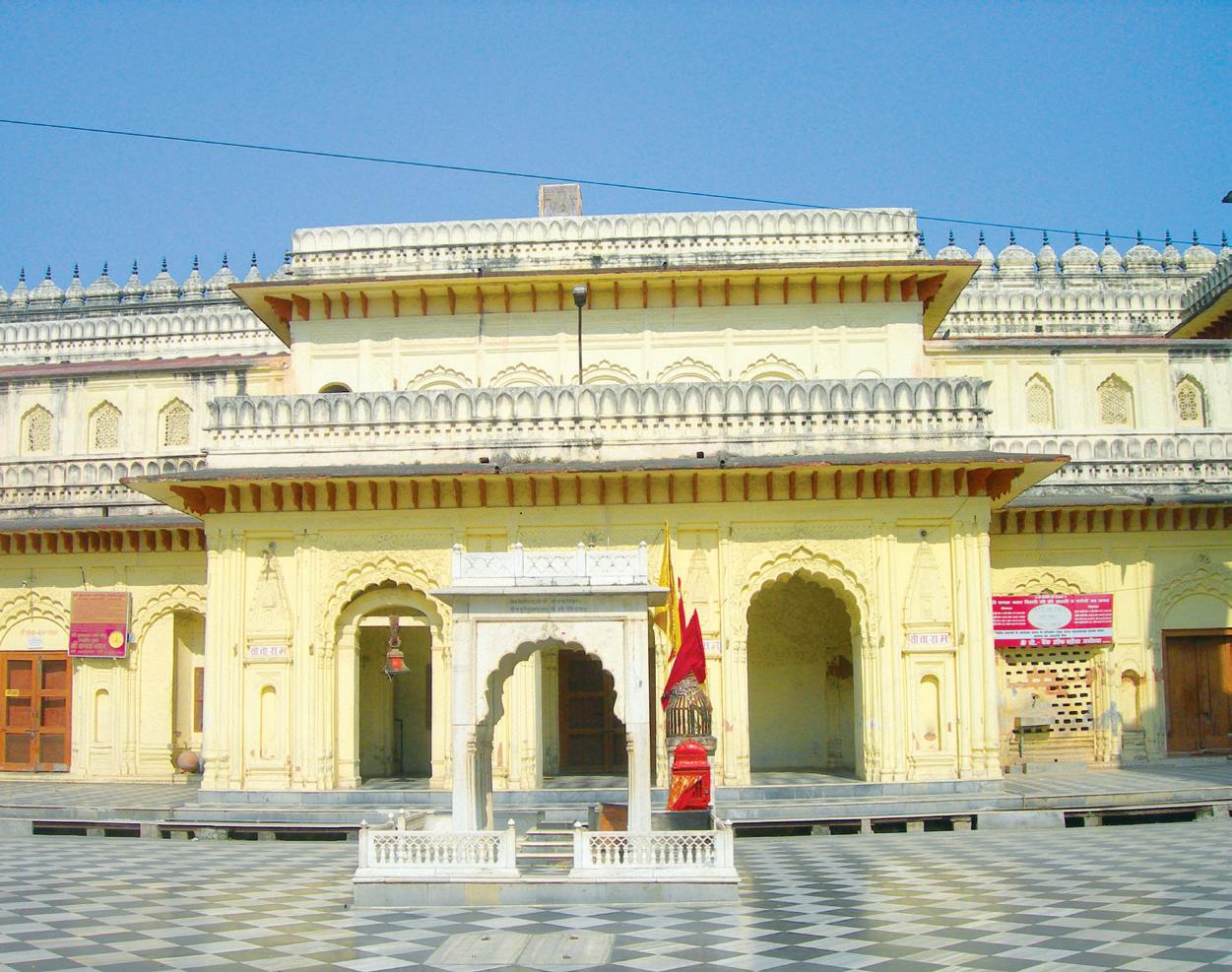
When entering Hanuman Garhi with a hundred other people, I see the security personnel stopping a man with a thick beard covering his face. They ask for his identity, suspecting he could be a threat of some kind. Obviously embarrassment shadows him, particularly as he is the only one picked from the lot entering. He probably wonders if a beard changes someone’s religious identity, as I do too while walking up a flight of 76 steps to the loud calls of “ Jai Ramji Ki ”, “ Jai Hanuman Ji Ki ” and other slogans from ardent followers.
Travel notebook AYODHYA
GETTING THERE
Ayodhya is only 3 hours by road from Lucknow which is connected by rail and air to all major Indian cities. The closest international airport is in Delhi where Thai Airways (www.thaiairways.com) have regular flights from Australia via Bangkok.
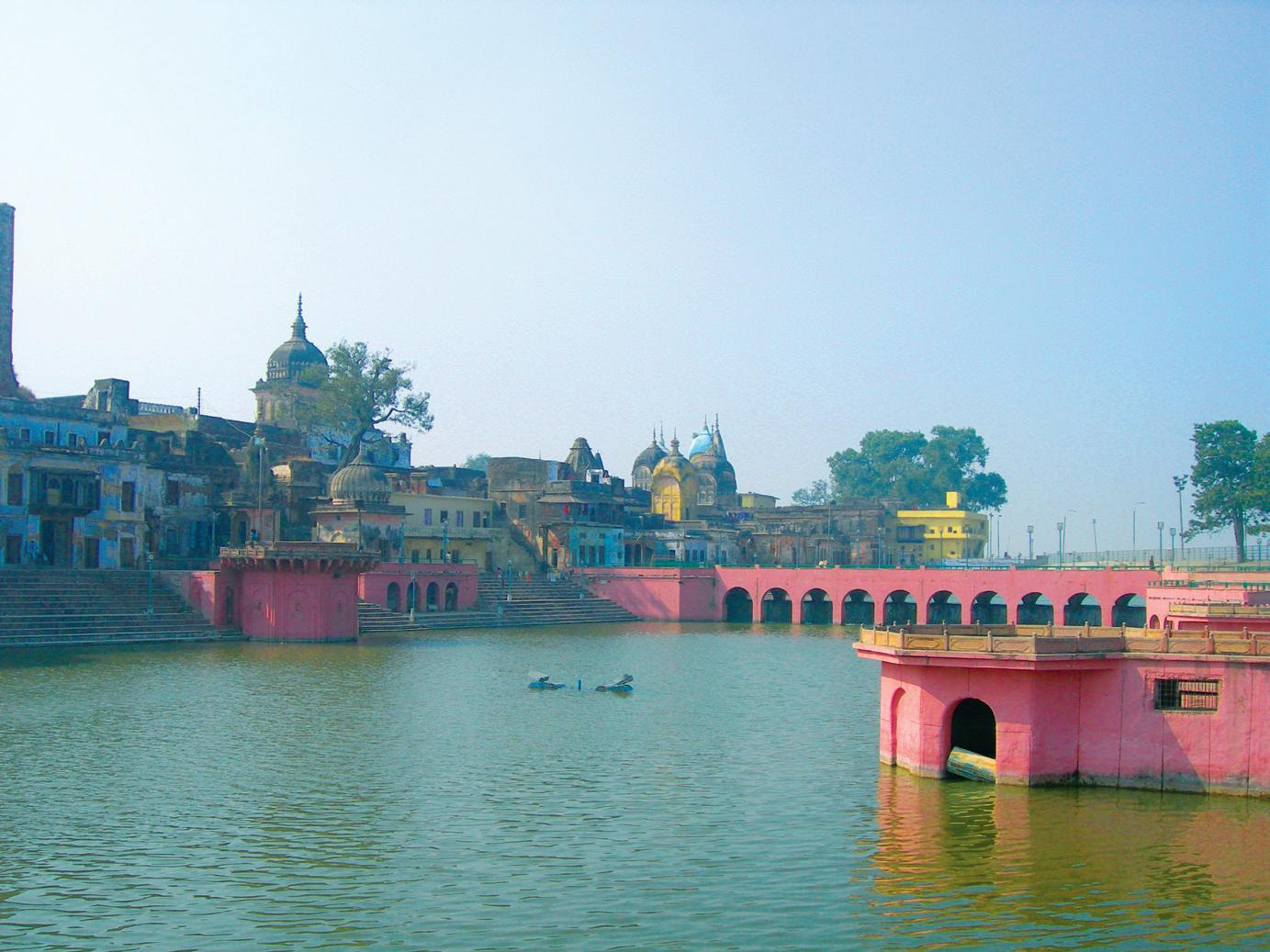
ACCOMMODATION
Other than the Uttar Pradesh Government Tourist Lodge, there is no suitable place
to spend the night, so it’s best to make a day-trip from Lucknow where hotels and guest houses are available to suit every budget. La Place Sarovar Portico Hotel (www. sarovarhotels.com) in the city centre is a good option.
MORE INFORMATION
Check out the India Tourism website (www. incredibleindia.org) or call their office on 02 92219555
APRIL 2011 <> 43 INDIAN LINK
www.indianlink.com.au
1. Ayodhya alleyway
2. Ayodhya palace gate
3. Hanuman Garhi tower
4. Inside Hanuman Garhi
5. Sarju river
6. Kanak Bhawan
6 5 4 3
Since time immemorial there has been a fervent quest for elixirs to make us look youthful. Maybe there is something in the human psyche that drives us to feel more confident and upbeat when we glance in the mirror and see someone who looks younger than the biological truth on our birth certificates. In contrast, we experience lows
Forever young
your skin to age and then try out some natural remedies and take preventative measures.

The major cause of saggy skin is sun exposure. UV rays in the sun damage skin which renders it more prone to wrinkles in the long run. So be sun smart!
Another common culprit is erratic dieting techniques, also known as yo-yo diets, where you lose weight quickly and return to your original size even quicker. This yo-yoing between the two extremes puts a lot of stress on the skin which expands and contracts to keep up with your diets. In the process it loses a lot of elasticity leaving you with wrinkles. To avoid this aftereffect, it is best to lose weight consistently over a period of time to allow the skin to adjust to your new dimensions.
Now here are some remedies to keep your skin healthy and young.
Water
around the lips, lower part of the nose and forehead. It reduces premature facial lines, blemishes, minor scars and spots. It can be used to heal chapped lips as well.
Oatmeal and buttermilk mask
For a simple skin-firming mask combine half a cup of cooked oatmeal with quarter of a cup of buttermilk. Apply on the face and let it dry completely before rinsing off with lukewarm water. This treatment moisturizes while tightening up the pores, and the lactic acid in buttermilk makes the skin look fresh.
Cucumber and yoghurt mask
Olive oil massage
A regular massage is very important to get the blood circulation going in the areas where the skin is sagging. Olive oil is a natural moisturizer and skin firming oil. Massage the skin on your face and body with olive oil for a few minutes before a shower for a firmer, softer skin.
and our confidence takes a battering when we don’t look our best (or in other words when we seem to look our actual age!). And this feeling is no longer a copyrighted property of the fairer sex. Metro males are just as conscious of their physical appearance as their wives or girlfriends. Hence the meteorological rise of cosmetic conglomerates that are coming up with products, or should we say ‘magical potions’ in bottles and jars that promise to make your skin firmer, melt those wrinkles into nothingness, vanish age spots and blemishes, and lighten your hip pocket. Many of these miraculous concoctions are laden with chemicals that sometimes do more harm than good. So if you’re ‘really’ interested in firming up your sagging skin and minimizing the appearance of wrinkles, than it is important to understand what is causing
The first thing to combat wrinkles has to be water. Your skin is like a flower that will wilt without water. Similarly, dehydrated skin starts to sag and wrinkle. Drink plenty of water to address this problem.
Exercise
Inactivity can make your skin look dull and saggy. A lack of exercise causes the muscles to deflate, making the skin hang loose. Exercise regularly to pump up the muscles; this will leave you feeling healthy, restore your skin’s firmness and bring a glow to your complexion.
Shea Butter
It is hardly a secret any more that shea butter is an effective moisturizer known for its skin-firming properties. Massage a little shea butter on your face daily, stressing on the areas
This is one of the best natural treatments for sagging skin. Grate half a cucumber and mix with two tablespoons of yoghurt. Smear on the face and leave for ten minutes before rinsing off. Add a few mashed or grated strawberries for the additional benefit of vitamin E which firms up the skin and is found in many skin-firming products in stores.
Banana mask
Simply mash a banana, spread over the face, leave for 15 minutes and rinse off with tepid water, for an effective skin-firming mask.
Egg white and coffee mask
Used coffee grinds make an invigorating facial mask that works to firm up and tone the skin. Mix ¼ cup used coffee grinds with one egg white and apply evenly on the face. Allow to dry, than rinse off with tepid water. When massaged into wet skin, coffee grounds are known to reduce cellulite and boost blood circulation in the skin.
Egg whites have astringent properties and can give the skin a lift. Whisk one egg white and dab over face and neck. Leave for 15 minutes before rinsing off.
Exercise regularly to pump up the muscles, this will leave you feeling healthy, restore your skin’s firmness and bring a glow to your complexion.
Green tea
Used green tea leaves contain antioxidants and other natural chemicals that can exfoliate skin for a glowing complexion.
Clay mask
Clay absorbs toxins and rids the skin of dead cells. Mix 2 tablespoons of clay powder with water or green tea to make a paste. Apply on face and neck. Wait for it to dry, then rinse off with warm water. For sensitive skin, add milk instead of water.
Steam
Steam works quickly to eliminate the toxins from the skin to leave it looking visibly firm. Try steaming your face for 10 minutes for an invigorating effect.
44 <> APRIL 2011 INDIAN
LINK
As we grow older, the urge to look youthful increases; but a few simple steps can help us keep the signs of age at bay, notes
FARZANA SHAKIR
WELLNESS
Maybe there is something in the human psyche that drives us to feel more confident and upbeat when we glance in the mirror and see someone who looks younger than the biological truth on our birth certificates
1 2 3 4
The right kind of skincare is essential to keep the largest organ of our body performing to its maximum capacity
Everyone craves for healthy, glowing, and youthful skin. Well, skin is our largest organ performing several functions. It primarily protects us against the invasion of foreign substances and serves as the transfer point for the release of toxins from our bodies. This is why our skin is truly worthy of our protection and care. Though it is impossible to stop the process of ageing, we can delay it with a good, healthy diet. We tend to spend money and time on beauty aids and cosmetics, but more importantly, beauty comes from within. So if you nourish your body from the inside, you will make a difference to the way your skin looks - and ages. It is often said that the secret to a healthy
Blackberries, blueberries, strawberries and plums
BY GEETA KHURANA
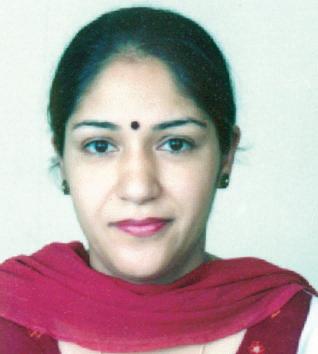
foods for glowing skin 8
complexion is less about what we put on our skin and more about what we put on our plate.
Here are a few foods that will help keep your skin youthful, clear, and the envy of all. But remember that in addition to all these, water is often said to be the simplest, most effective natural and free treatment for clear and supple skin. It prevents dehydration that can produce sebum or oil from the sebaceous glands. Your skin needs water to function at its best; it is recommended that a daily intake of between 6 to 8 glasses of water per day is highly essential and required.
Green Tea
Lemon, lime and oranges
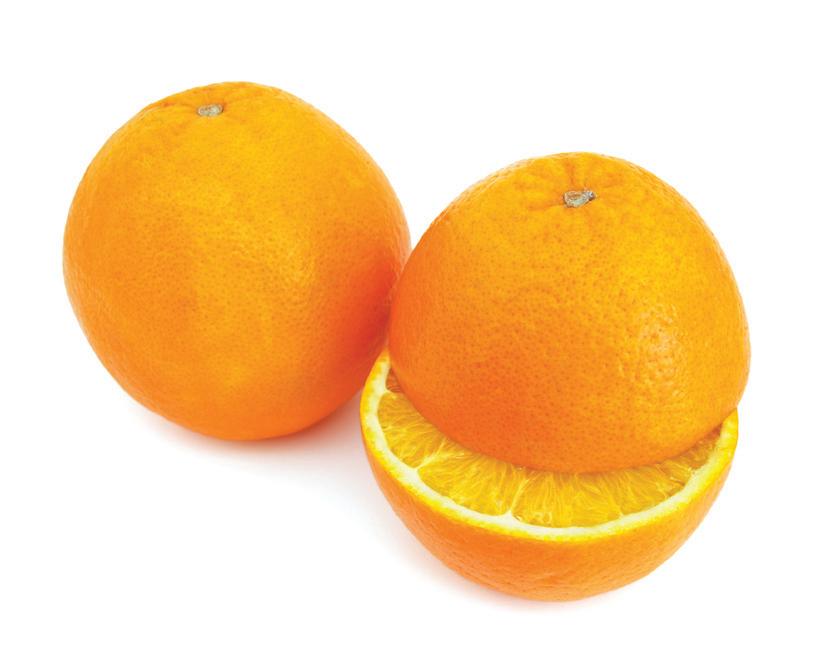
The Vitamin C in these foods promotes healing, helps build collagen and provides skin with elasticity and firmness, helping reduce wrinkles and fine lines. Other foods rich in Vitamin C are broccoli, avocado and tomato. Orange juice is also packed with Vitamin C.
Essential Oils

Essential fatty acids are responsible for healthy cell membranes that not only act as a barrier to harmful things, but also as a passageway for nutrients and waste products to enter and exit the cell. The best-known essential fatty acids are Omega 3 and Omega 6, which must be in balance for good health (and good skin). These good fats help clear blemishes and reduce wrinkles. Though we all seem to get enough Omega 6, most people lack Omega 3 in their diets, which can be remedied by the inclusion of olives and olive oil, salmon, walnuts, and avocado.
Wholegrains

The mineral selenium present in wholegrains is very important for healthy skin as it plays a key role in the health of skin cells. Even skin damaged by the sun may suffer fewer consequences if selenium levels are high, and research proves that skin cells are less likely to suffer the kind of oxidative damage that can increase the risk of cancer. Brazil nuts are also a very good source of selenium. Wholegrains are a good source of Vitamin E that helps protect cell membranes and guards your skin against damage from the sun’s UV radiation.
5 7 8
The common link between these four foods is their high antioxidant content. They are weighed in with the highest total antioxidant capacity of any food and they offer plentiful benefits. Free radicals, say of the kind formed from sun exposure, damage the membrane of skin cells, thus potentially damaging the DNA of that cell. Antioxidants and other phyto chemicals in these fruits can protect the cell, so there is less chance of damage and disintegration. This also guards against premature aging. These fruits may well help keep your skin looking younger for a longer time. 6

The positive properties of green tea for the skin just can’t be beaten. It has anti-inflammatory properties and is protective to the cell membrane. It may even help prevent or reduce the risk of damage from ultraviolet light (such as the burning rays of the sun), and thus reduce the risk of skin cancer. The polyphenols in green tea have anti-inflammatory properties that may also be beneficial to overall skin health.

Avocados
Avocados are high in fat, but most of it is monounsaturated, and is thus considered a healthy fat. Avocado is a good food for skin because, as is the case with Omega-3 fatty acids, it keeps the skin plump, younglooking and helps prevent drying. Avocados contain both, Vitamin C and E, which act well together as a powerful anti-aging combination.
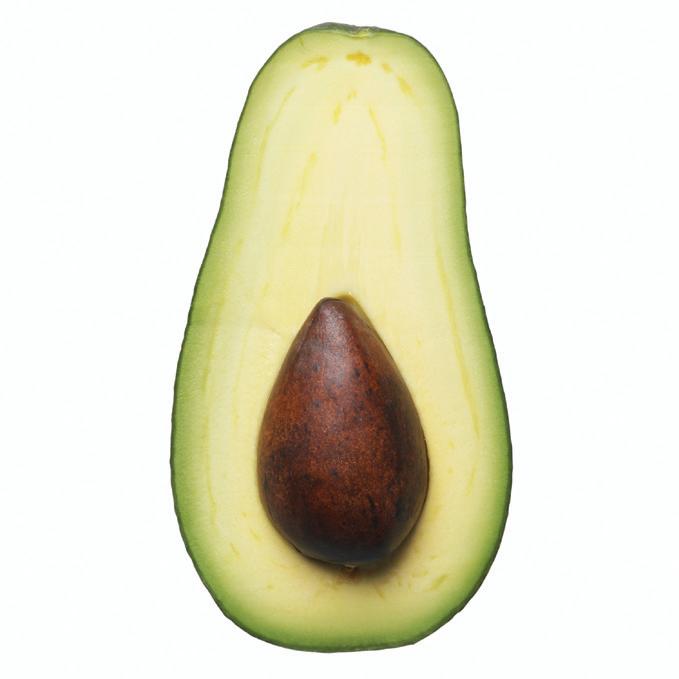
Almonds
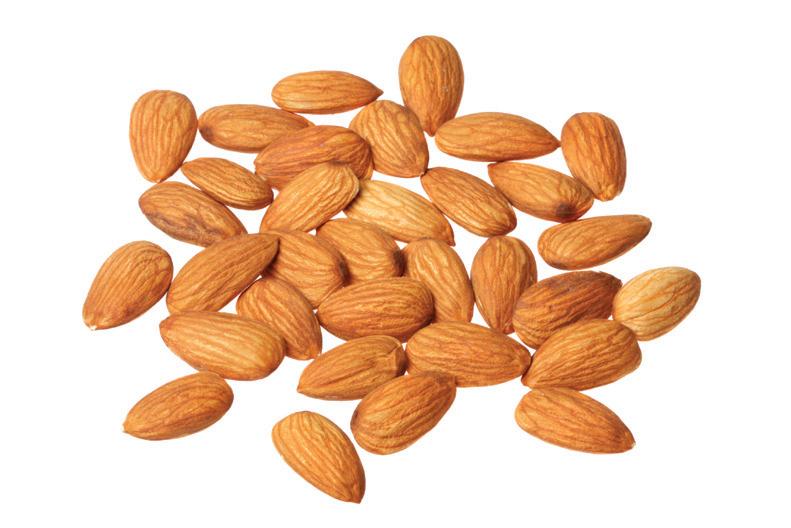
Grab a handful of almonds for an extra boost of Vitamin E, an antioxidant that helps protect skin cells from damage caused by ultraviolet light. Vitamin E helps protect skin muscles and tissues from premature ageing, as well as a protection from dryness. Only a handful of these high-calorie nuts will suffice, as they are high in calories. Sprinkle a few almonds on cereal or desserts. Other good sources of Vitamin E are sunflower seeds, hazel nuts, wheat germ and peanuts.
Cocoa
The cocoa bean found in chocolate is packed with antioxidants like flavonoids, procyanidin and resveratol. The flavonoid present in cocoa increases blood flow to the skin, boosting nutrient and oxygen supply - both factors essential for keeping the skin healthy. It also absorbs UV light that might otherwise react with and damage skin cells. But don’t rush off to buy a box of just any chocolate, it is important to pick up only dark chocolates with more than 70% cocoa. And that too, restrict yourself to only a small piece.

APRIL 2011 <> 45 INDIAN LINK
www.indianlink.com.au
ARIES March 21 - April 19
Tarot
Tarot predictions for February 2010 Tarot ‘n’ You Tarot ‘n’ You
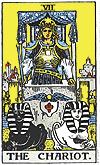

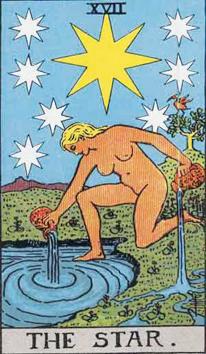
Tarot predictions for April 2011


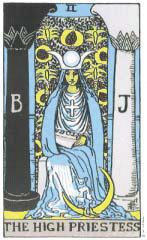

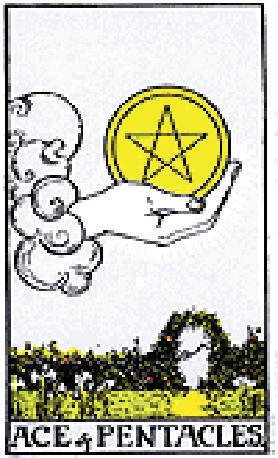
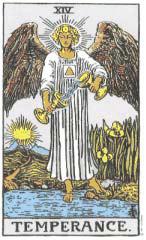
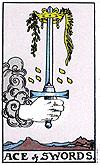



LIBRA September 23 - October 22
The new moon on the 3rd is in Aries, so this month is all about new beginnings for you. You will be making a lot of changes and may even be looking at a new line of work, change in appearance and/or change of residence. The cards also show you will have a real energy boost this month, and increased vitality. It is going to be a very exciting time, but remember to take time out to relax too.
TAURUS April 20 - May 20
There will be an increase of opportunities with love and money for you this month, Taurus. The cards are indicating that you have especially good social skills at the moment and will be making new friends. You will be like a magnet this month. You may well attract new love and other opportunities. It is also indicated that this is a super time for enjoying the finer things in life. Do not however, ignore a lower back ailment.
GEMINI
May
21 - June 20
The effect of the new moon on the 3rd is fully energizing and very creative. You are all-powerful at this point in time, Gemini – and you will be able to achieve everything you want. Self confidence and energy levels are particularly high. Not only are promotions well aspected in the cards, but relationships will also be favourable. Do not worry about opposition from people around you: you are oozing appeal and magnetism, so make the most of it!
CANCER June 21 - July 22
The new moon may bring challenges with people such as superiors, older family members and colleagues. The cards are showing a testing time for you, Cancer: you need to remain very focused and strong and believe that you will get through this. Be careful of feeling under pressure from others which may result in arguments. Your ego may get in the way. You will be planning a break away to clear your head and re-charge your batteries.
LEO July 23 - August
22
The new moon on 3rd will being harmony to your relationships, Leo, as you will be feeling very balanced and calmer. The cards are showing that your plans are working out well. Goals that you have set for yourself seem attainable and are in clear sight now. You have little resistance from others. This is a very good time to enjoy yourself and relax. A holiday to re write goals and decide on your next steps is a good idea.
VIRGO August 23 - September 22
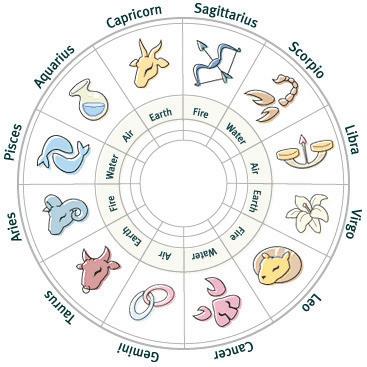
For the first few weeks of April, Venus is opposite for your sign and the cards suggest that this will increase activity in your love and relationships area. You will not feel like working this month so be careful if you are employed. Relationships seem to be the main thing on your mind and there may be some problems in that area if you do not draw the line with someone. Be careful of overspending this month and a lack of discipline.
You need to balance your emotions this month as you may feel anger and frustration. Is someone opposing your views, or are you not being able to be yourself and act the way you wish? There is a need for you to retreat briefly and think about what you want to do and say to others. You have a tendency to speak without thinking and this may hurt some people’s feelings. You may be planning to surprise someone as a peace offering!
SCORPIO October 23 - November 21
Early April will be a very peaceful time for you. The cards suggest that life will be easy and you do not feel any obstacles in your way. You are also very loving and caring towards people and that is coming back to you now. There is lots of kindness and affection this month and social activities are very well favoured. You may feel keen to start a relationship with someone who you have your eye on. What are you waiting for?
SAGITTARIUS November 22 - December 21
This month sees a real surge in your energy levels, self confidence and your desires towards the opposite sex, Sagittarius. Your relationships with people will feel more balanced this month and you will feel better as you may decide to reestablish contact with someone that you fell out with. Great time also to start that exercise regime! Your professional relationships and progress are well aspected too this month, and you will feel a sense of achievement in many areas of your life.
CAPRICORN December 22 - January 19
There will be an increase in opportunities in love and money this month, Capricorn. You will feel very energetic about expressing love and affection. You will be making new friends this month as social skills seem on a high, and the cards are also suggesting that this is a great time for enjoying the finer things in life, so party on! There will also be plans to invest in foreign lands. Take advice before you make any steps and plan carefully.
AQUARIUS January 20 - February 18
It is a wonderful time to push plans to do with business or work to climb the ladder. Your luck aspect is well favoured this month and you will see progress in many areas of your life. Relationships are also well favoured. There is a possibility of a new romance entering your life. If you are not single be careful of flirtatious behaviour around your work place or social events. There is a new purchase being planned by you or someone around you.

PISCES February 19 - March 20
This month you will feel your creativity flowing, Pisces. You will radiate love and positive energy and this will bring some interesting people into your life. A great time to socialize - you will spend time with loved ones this month and plan some special events. The cards also show that you will plan to do some work on your own. There is a need to branch out and work solo which will give you good results.
KNOW THYSELF AS SOUL
Sant Mat is a practical spiritual path based on meditation, ethical living, service to others & love for all creation. Its goal is to enable the soul to return & merge into its source; the purpose of human life described by mystics of all traditions. Discipline & dedication are essential, as is the help of a competent living master. Entry is via a preparation program. There is no charge at any stage.
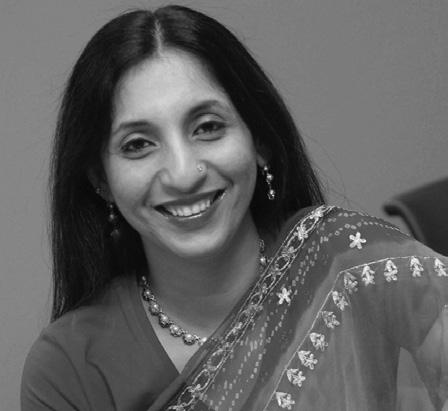
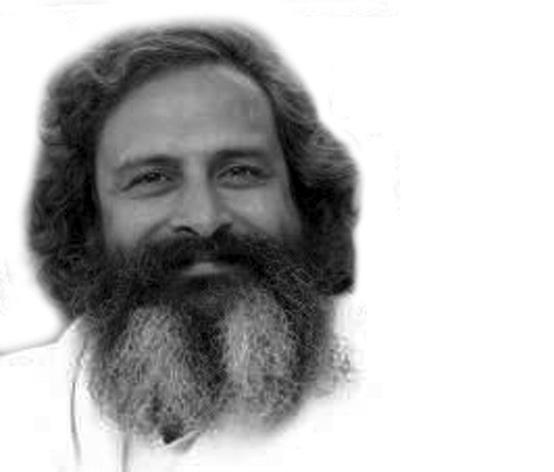
46 <> APRIL 2011 INDIAN LINK
more information...
Vikas
918 646
Thyself As Soul Foundation is a not for proft association incorporated in NSW
For
Contact
0430
www.santmat.net.au Know
STARSFORETELL
By NANCY SOOD www.nancysood.com
www.indianlink.com.au
Wrapp ng it up!
Nice and easy, quick and tasty is the way to go with fancy sandwiches for any occasion, from a simple snack to party food


cucumber, add the dressing and mix gently. Serve cold in a wrap of your choice.
1/3 cup avocado, cut into small cubes
1/3 cup baby spinach leaves, chopped fine
BY SHERYL DIXIT
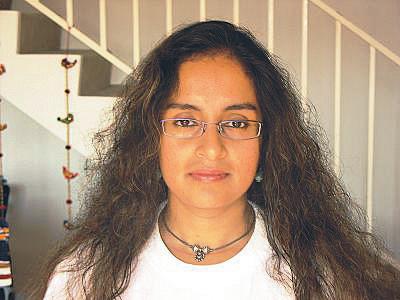
They’re fast and simple to prepare, and incredibly tasty. They’re just the right kind of cuisine for when you’re too tired to cook, bored of the same old lunchbox options, or simply looking for an exotic change. Fillings come in various tastes and types, are open to a whole range of ingredients and can help exercise your creative culinary talents to the limit.
Nowadays, any supermarket will offer you an array of choices when it comes to wraps. Pitas, khubus, chappatis, rotis, tortillas, naan are all readily available, and in choices of white, wholemeal, multigrain and a host of other options. And if you like, experiment with baguettes, bread rolls, dinner rolls, Panini or croissants. Perhaps try an open sandwich on gourmet bread in soy, rye, sourdough or cottage white. No matter what the choice, a mix-n-match of ingredients can make for a delicious meal. And remember that lightly baking or grilling a wrap could add another dimension of flavour to an already tasty meal.
But what about the fillings? The range and variety are absolutely staggering, but here are some easy and appetizing favourites that will tickle your tastebuds.
Don’t forget that a lot of these fillings can also be used as dips or cracker toppers for the party you’re planning for the loooong weekend!
Corn and dill sandwich spread
A quick ‘n’ easy treat
1 cup corn kernels (tinned)
½ cup creamed corn (tinned)
¾ cup shredded tasty cheese
½ cup chopped fresh dill leaves
Salt and pepper to taste
Pinch sugar
Mix all ingredients and use as sandwich spread (or as a dip with crackers).
Roast chicken ragout
Great to create with leftover roast chicken
300 gms boneless roast chicken
1 medium onion
1 medium tomato
3 leaves cos lettuce
1 tbsp lemon mayonnaise
Cut the roast chicken into small shreds of medium thickness. Flatten wrap, cover base with leaf of cos lettuce. Fill in the middle with roast chicken, slices of onion and tomato, and top with lemon mayonnaise. Fold into wrap and lightly grill before serving.
Ham and potato
A humdinger
200gms thin sliced ham
1 large potato
Small bunch chives
½ cucumber
30gms cucumber dill dressing
Boil the potato, peel and cut into small cubes. Finely chop the chives and cucumber and roughly chop the ham. In a large bowl, mix the ham, potato, chives,
Chickpeas munchie
Mmm….
1 can whole chickpeas
2 spring onion stalks, finely chopped
½ tbsp olive oil
½ tsp lemon juice
½ cup tabbouleh
2 tbsp fresh hommus
Mix the chickpeas, olive oil, spring onions, lemon juice together in a bowl. Flatten the wrap and spread hummus on one side. Spread the tabbouleh over the hummus, next add the chickpeas mix, and fold to enclose the mix in the centre of the wrap.
Turkey time?
You bet!
250 gms boneless roast turkey
4 slices vintage cheddar cheese
½ cup avocado, roughly mashed
½ cup yellow and red capsicum, cut into strips
Place the vintage cheddar cheese directly on the wrap and then add a mix of the rest of the ingredients.
Tuna and salad treat
Fun fish food
1 large can flavoured tuna
1/3 cup red capsicum
1/3 cup green capsicum
1/3 cup celery, chopped fine
Drain the tuna of excess water and keep aside. Add all the other ingredients into a large bowl and mix well. Add tuna and mix gently. I feel that the lime and cracked pepper flavoured tuna tastes best in this recipe, but any other flavour can be used.
Dijon Chicken

Delightful and delicious
250 gms chicken, cooked and cubed
2 tbsp Dijon salad dressing
1 tbsp honey
1 tbsp mayonnaise
½ cup capsicum, cut into strips
1 large tomato, chopped
2 large lettuce leaves
2 slices Muenster or Swiss cheese
Combine salad dressing, honey and mayonnaise and mix well. Stir in chicken, green pepper, and tomatoes and mix gently. Line the wrap with lettuce and cheese and fill with the mixture. Enclose and serve.
Greek wrap
Food for the gods
2 tbsp mayonnaise
1 tbsp lemon juice
1 cup canned cannellini beans, drained and rinsed
200 gms chopped cooked chicken
1/3 cup crumbled feta cheese
1/4 tsp. dried oregano leaves
1/2 cup chopped lettuce leaves
Mix mayonnaise, lemon juice and beans, mashing the beans slightly. Stir in the chicken, feta and oregano. Place the mix in a wrap and drizzle with chopped lettuce leaves.
Salmon and pesto
The perfect combo
3 thin slices smoked salmon
3 tbsp cream cheese
¼ cup basil pesto
2 tbsp roasted roughly crushed pine nuts
½ cup sliced avocado brushed with lemon juice
Mix cream cheese and pesto. Spread the mix over the slice of salmon and add avocado. Lightly drizzle with pine nuts, wrap and serve.
Try out these mix-n-match combinations
Main filling: Ham, turkey, chicken, roast beef, canned fish, paneer, canned beans, prosciutto, chorizo, bacon, potatoes, pancetta, eggs.

Add: Avocado, red, yellow or green capsicum, fennel, Spanish onion, baby spinach, cos or any other lettuce, cabbage, tomato, spring onions, parsley, coriander, shallots, salad leaves, summer greens, asparagus.
A touch of taste: Swiss, tasty, cheddar, feta, gruyere, parmesan or any other cheese, Dijon or hot mustard, sweet chilli sauce, mayonnaise, caesar’s dressing, cranberry sauce, olive oil, honey, lemon juice, hommus, tahine, sour cream, flavoured or plain cream cheese, olives, sundried tomatoes, jalapeno chillies, mint yoghurt, tomato relish, pesto.
APRIL 2011 <> 47 INDIAN LINK
FOOD
www.indianlink.com.au
BUZZ
ABHILASHA SENGUPTA brings us up-to-date on what’s hot and happening in Bollywood

How many of you looked at Aamir Khan at the cricket and thought, “What the…??!!” I know I did. And then, just like the 2 billion other Indians watching, I knew instantly what it was all about: perfectionist that he is, Aamir is filming a new role…
The power of the moustache is in full flow in Bollywood. Screen idols are banking on it to look different on screen - Saif Ali Khan has gone for the zappa, Aamir Khan boasts the chevron and Shahid Kapoor the painter’s brush.

When Salman Khan was seen as funny cop Chulbul Pandey, sporting a pencil Dabangg, his fans went crazy, especially those from Uttar Pradesh where the movie was set.
Abhishek in Dum Maro Dum, Saif Ali Agent Vinod, Sunny Deol in Mohalla Assi, Om Puri , Shahid Kapoor in Mausam and Rahul Bose in his
In fact Rahul expressed it best recently after finishing the shoot, on Twitter: “My last day of shoot. Then this moustache comes off. Children can come out from under their beds. Fervent pleas from friends to keep the moustache. I was very touched till they explained it made them look irresistible in comparison.”
Aamir’s new look is for Reema Kagti’s second directorial venture, a suspense thriller, which is currently in production. But of course we’ve seen him don the mouche before (see pic). Aamir fans (and even those who are not) will know which film!
Hmm, do we have Jackie Shroff and Anil Kapoor twirling their long-kept moustaches in delight?
AAMIR KHAN
Govinda’s next ready for release
After battling a court case due to a monetary dispute between the producers, Naughty@40 starring Govinda will finally be released in mid-April. The movie has been delayed for two years and the definitely 40+ actor is heaving a sigh of relief at the news. The film, which also stars Yuvika Chaudhry and Sayali Bhagat, is about a 40-year-old man (Govinda) who arrives from London to India to find a suitable match for himself. I guess the ageing actor should consider himself lucky. If the case had been resolved any later, he would have hit his 50s, and that would mean a whole
Ghazal king avoids Bollywood
Ghazal king Jagjit Singh claims that Hindi filmmakers are money-minded and don’t appreciate his musical genre any more, which is why he keeps his distance from them.
“Filmmakers have no taste for ghazals. A lot of youngsters like soft songs these days, but Bollywood has no interest in ghazals... the industry is only about making money. Sab paise ke peechhe bhaagte hain (Everyone runs after money),” said Singh.
The 70-year-old veteran, who has sung songs like Badi nazuk hai, Hoshwaalon ko khabar kya Kiska chehra and Tum itna jo muskua rahe in movies elaborated, “I do not say that
GUESS WHO
Bollywood has become commercialised in recent times. It has always been about moneymaking, but earlier the taste was different. Cinema was a part of literature... but today’s cinema has nothing to do with literature. That soul is lacking and it is only about entertainment nowadays.”
The ghazal maestro has been singing for over four decades and has a repertoire comprising 50 albums. He has sung in languages as diverse as Punjabi, Hindi, Urdu, Bengali, Gujarati, Sindhi and Nepali, and continues to enthrall with his new songs, albums and concerts. But Bollywood is something he gives a miss now.
“I hardly ever had a connection with Bollywood. All through my career, I seldom sang for movies. I was always focussed on my individual career as a singer, and concentrated on my bhajans and albums... something that I still do,” he said.
The singer, who was honoured with the Padma Bhushan, will now be using a lot of instruments like the violin, flute, tabla and guitar to his older numbers, giving them a new feel. He is also keen to lure youngsters with this initiative, in which the product will be the same, but the packaging will be new.
In his 70th year, he has planned to stage 70 concerts worldwide, and is working on two albums – one on ghazals and the other on bhajans
Come on Bollywood, take the hint and rekindle an interest in this classical and unique musical art form!
Support for Shiney
Among others, Salman Khan, Arshad Warsi and Farhan Akhtar have spoken up for Shiney Ahuja after he was sentenced to seven years in jail for rape.
“Seven years is a lot! I have been locked up myself, so I know what happens,” said a shocked Salman, who himself has had brief stints in jail. The 45-year-old was embroiled in a hit-and-run case as well as in a black buck shooting case.
“I hope he (Shiney) is innocent, and if anyone is trying to frame him, that person should come out in the open. A seven-year jail term is too long, especially if someone has lied about it,” added Salman.
Arsahd Warsi feels the judiciary should not target actors “blatantly”.
“Murderers, terrorists and corrupt politicians are walking free and Shiney Ahuja gets 7 years...,” Arshad posted on his social network account.
“I am NOT saying he’s right but don’t forget that Kassab (sic) is still enjoying our hospitality. Do you know the number of rapes that happen in our country on a daily basis by influential and connected people... Those cases are not even registered. My point is all
INDIAN LINK
The ENTERTAINMENT
(Find the answer under Caption Contest)
You know her as the sensible friend of the bindaas Kangana in Tanu Weds Manu
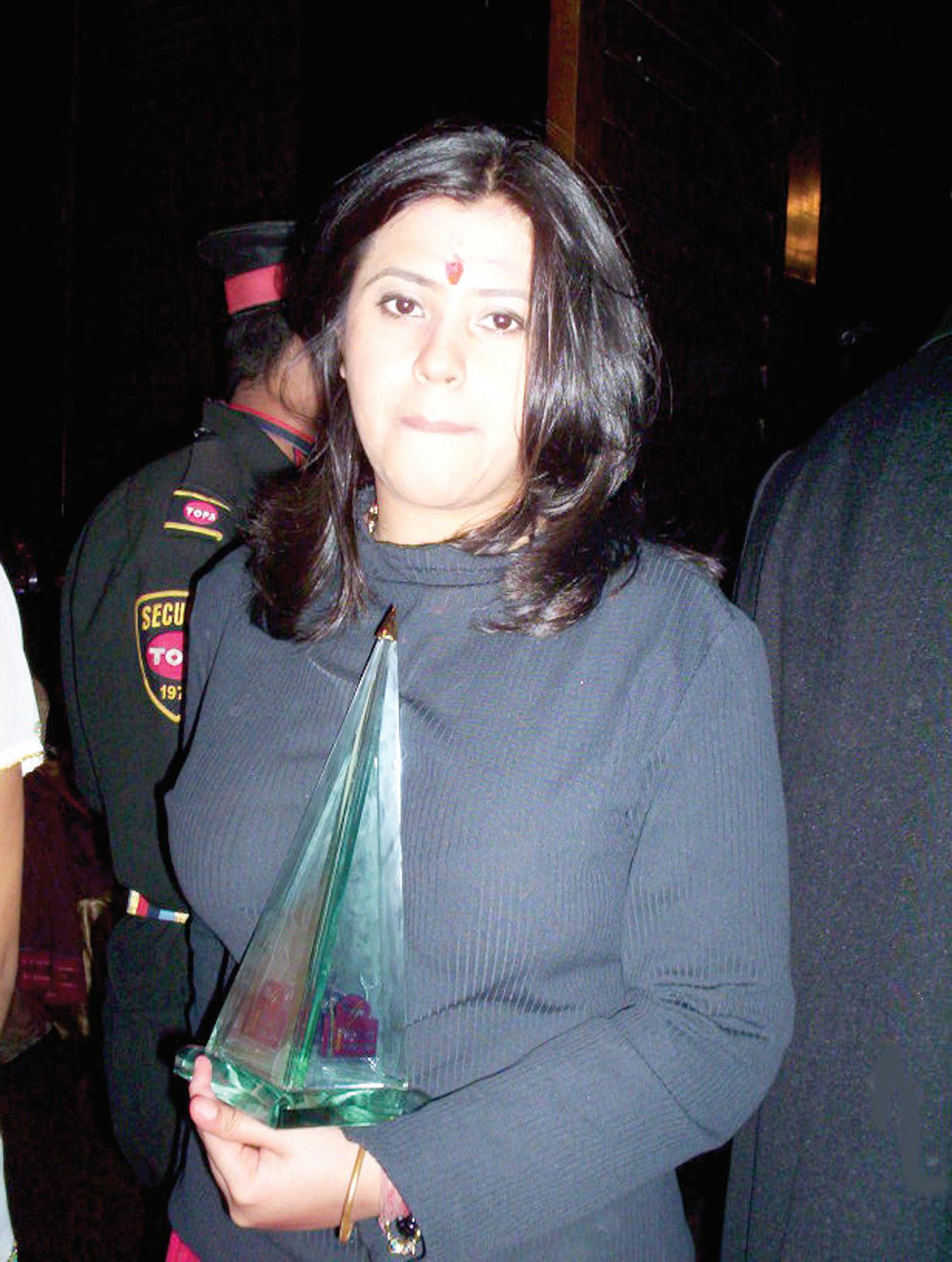
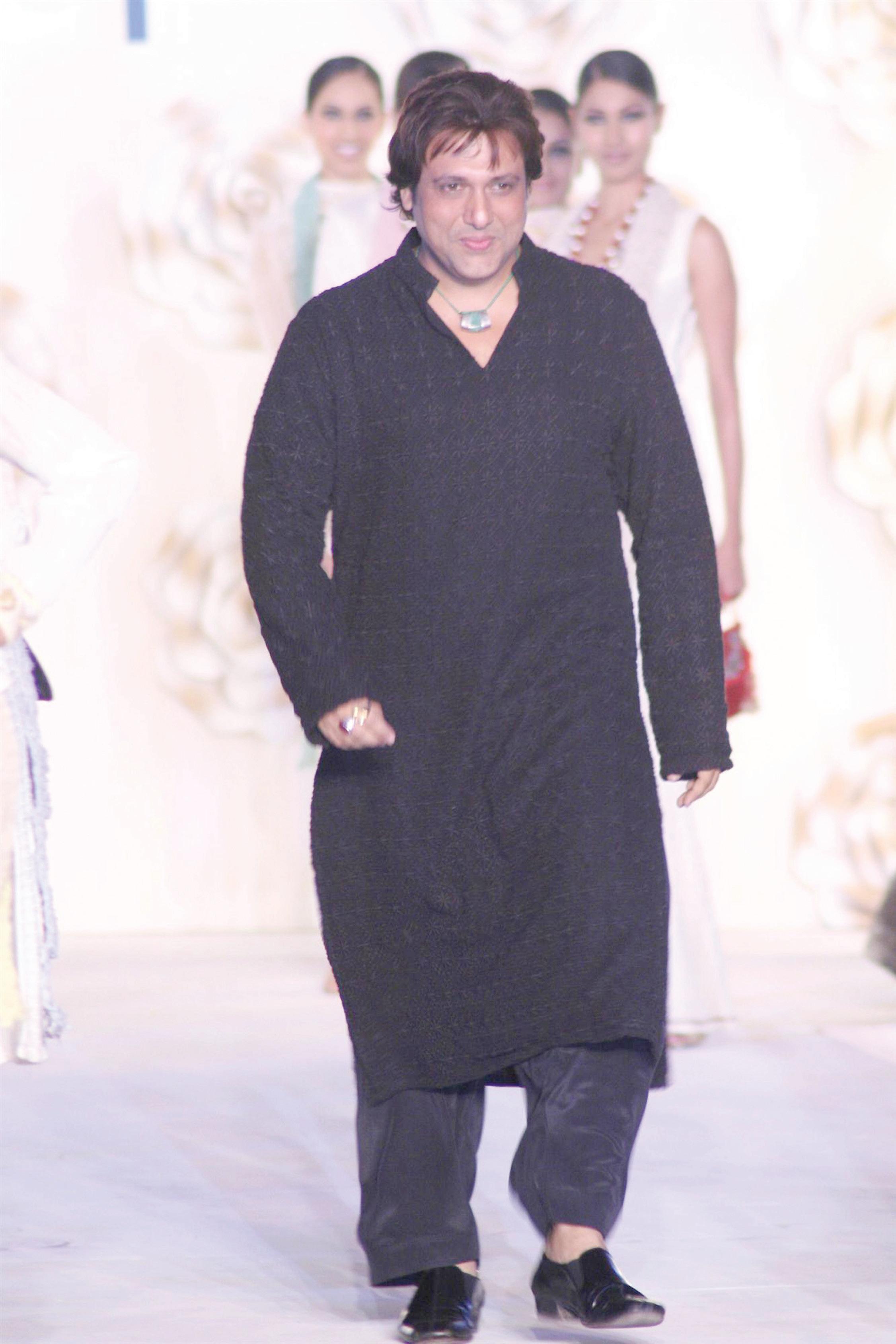
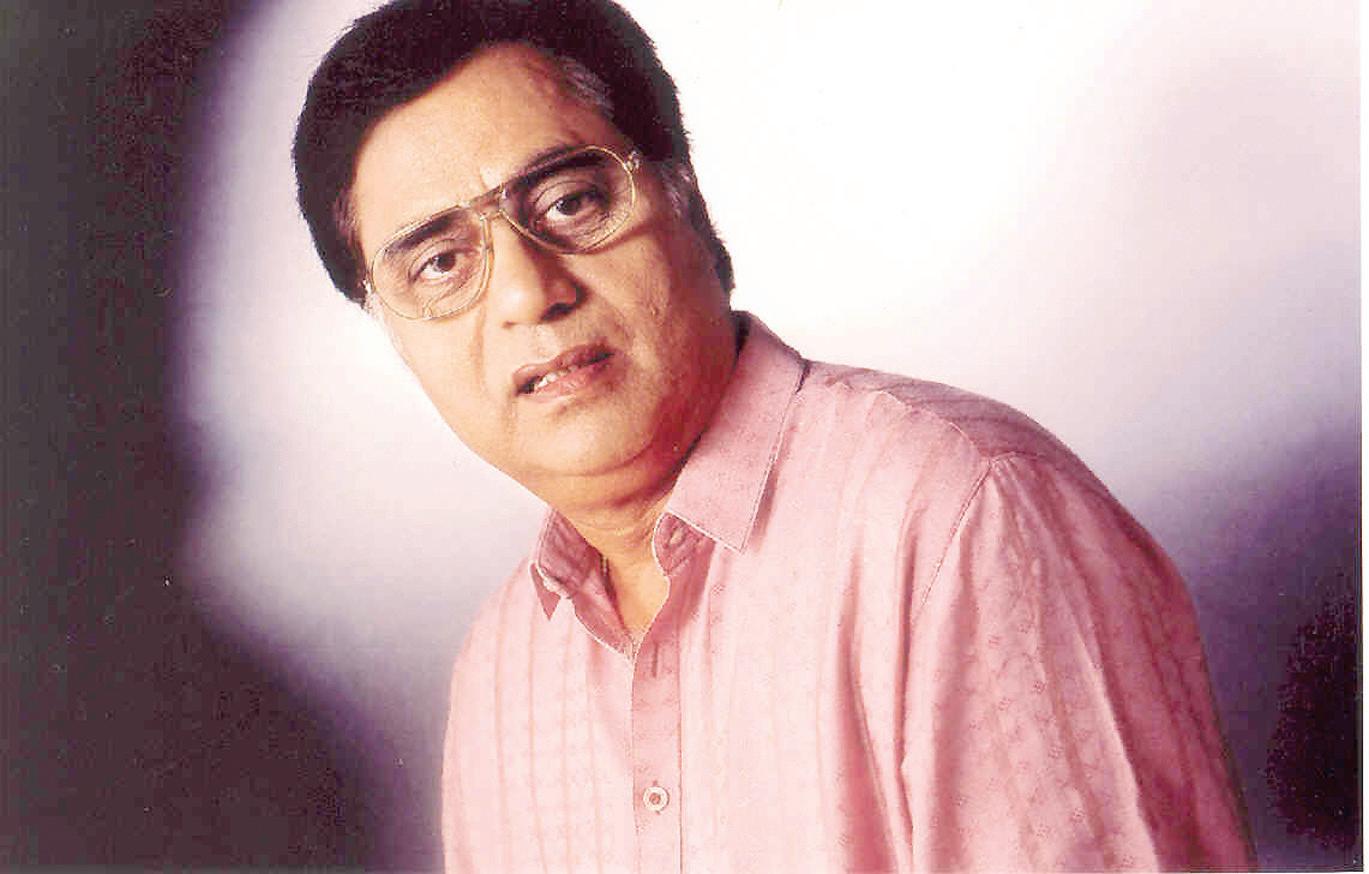
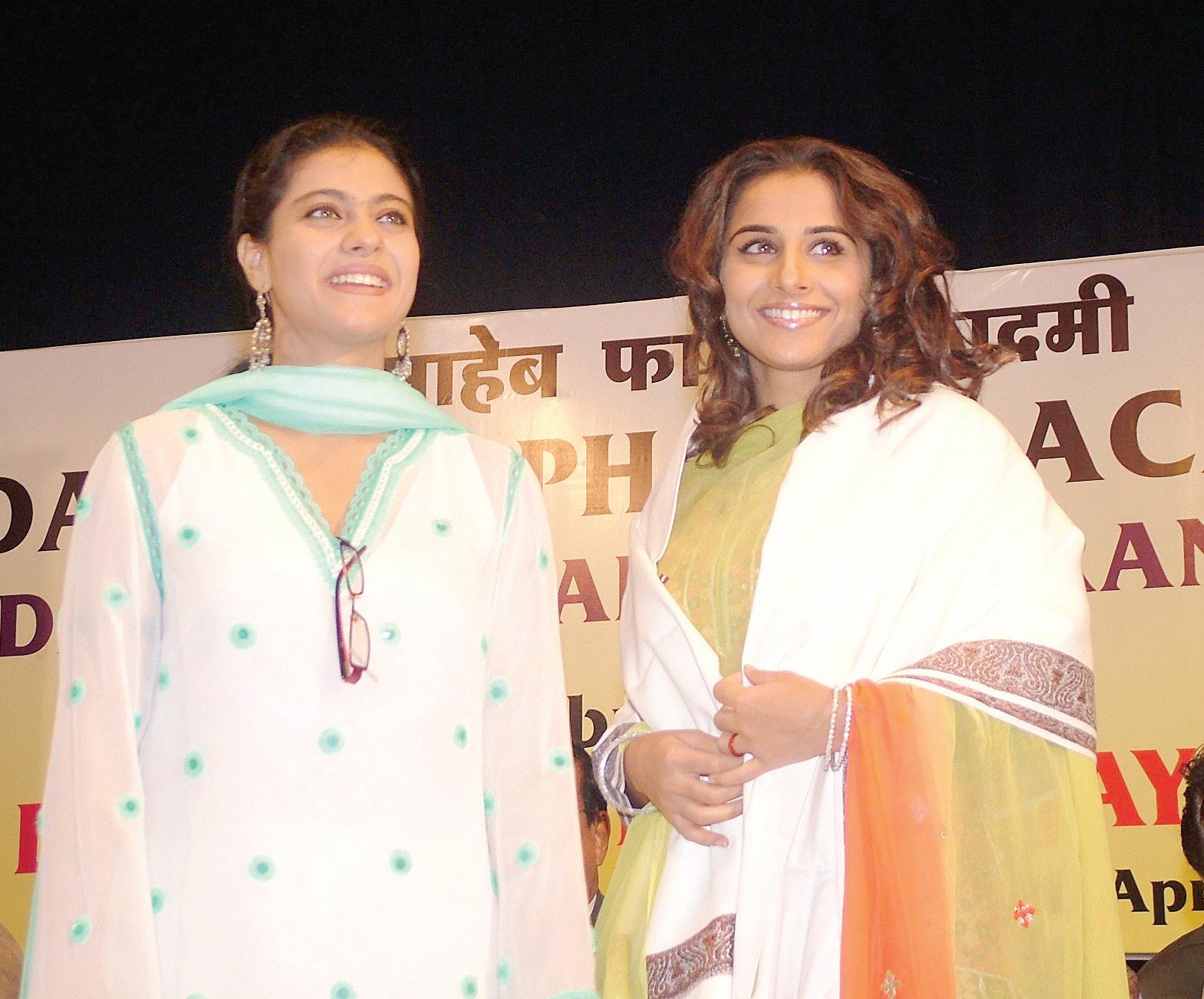
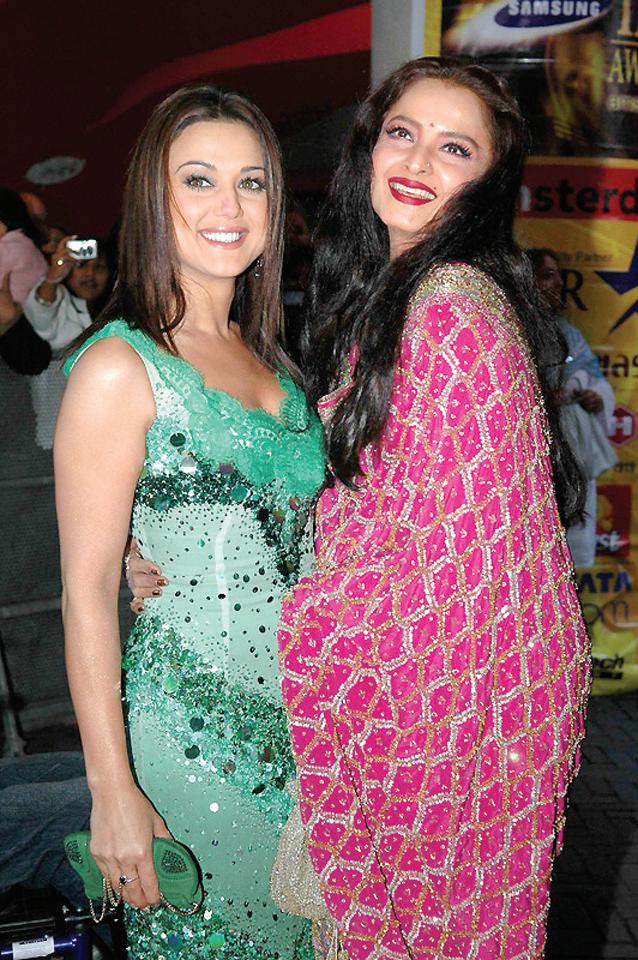
APRIL 2011 <> 49 www.indianlink.com.au
JAGJIT SINGH CAPTION CONTEST GUESS WHO :ANSWER Swara Bhaskar What’s the chitchat between Kajol and Vidya here? Send in your responses to info@indianlink.com.au and win a surprise prize Send in your responses to info@indianlink.com.au and win a surprise prize Last issue Caption Contest winning entry
The only way I can get photographed these days if I cling to you girls… Preity: My trick is going to the cricket. Suneet wins a free ticket to new release Thank You Suneet Manvani Wollongong NSW What’s the chitchat between Rekha and Preity here?
GOVINDA
Rekha:
Cine Talk
A stylishly crafted whodunit
Film: Game
Cast: Abhishek Bachchan, Kangna Ranaut, Anupam Kher, Boman Irani, Jimmy Sheirgil, Shahana Goswami, Gauhar Khan, Sarah Jane Dias
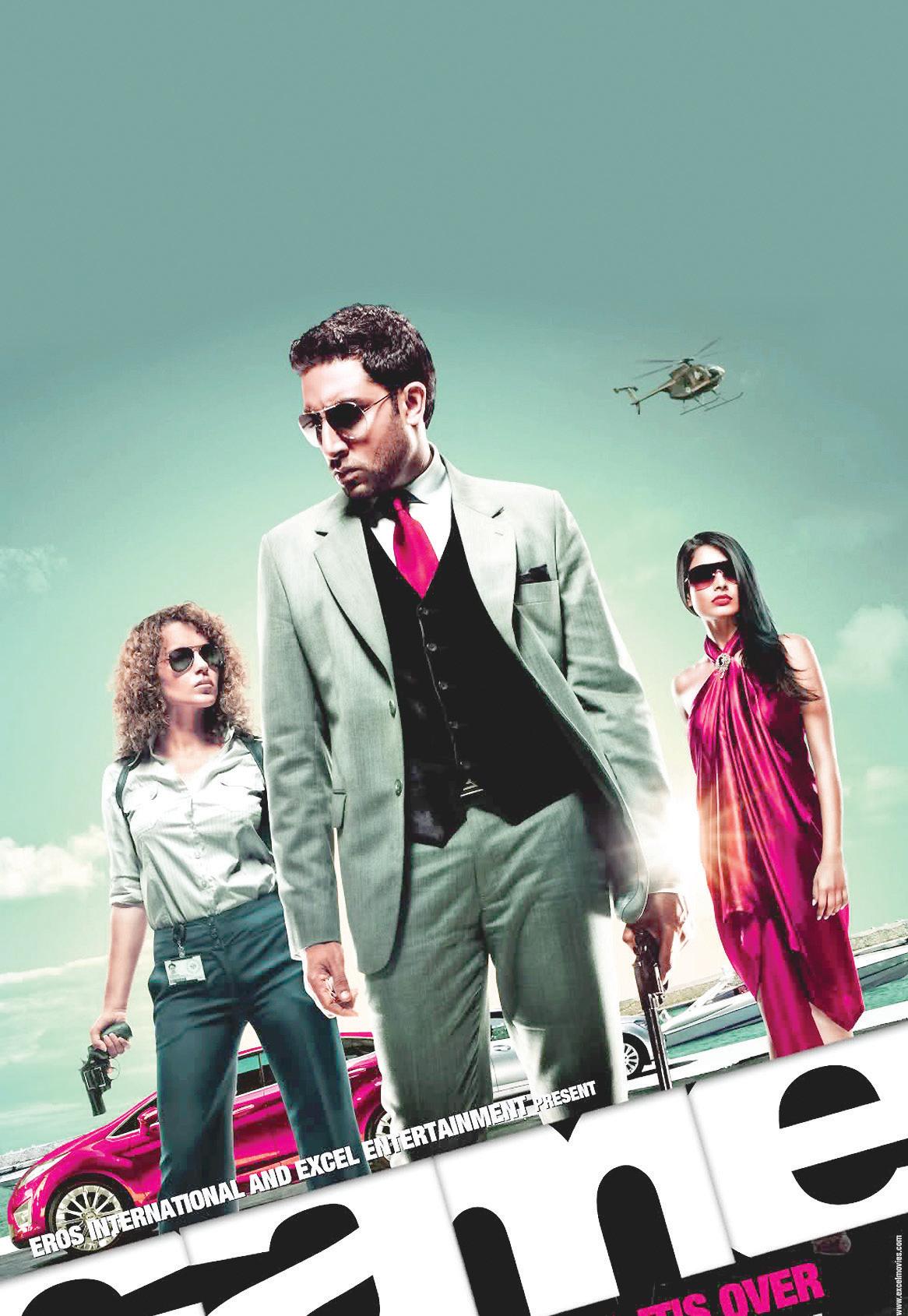
Director: Abhinay Deo
“What a story!” Abhishek Bachchan, playing a cross between a fugitive and a guardian-angel, says wrily at the end of this elegantly crafted whodunit.
What a story, indeed. Full marks to writer Althea Delmas Kaushal for crafting a jigsaw that would have made Agatha Christie smile. It wouldn’t be incorrect to say, they don’t make movies like this anymore. Stylishly crafted, cunning in plot and deft in its narrative thrust, Game is one of the most aesthetically-mounted Hindi films in recent times. Huge efforts and resources have gone into shooting the murder mystery in places where intrigue seems infinite, escape seems undesirable and redemption appears as distant as the sound of the waves splashing against rocks that have centuries of stories to tell.
Welcome to the Greek island of Samos. Anupam Kher, looking pricey in his tycoon’s avatar invites four of the most distinguished elitist-outlaws on this side of Charles Sobhraj. Each has a past tense and a future imperfect. Everyone has a history and a back-projection. This is a world defined by a wealth of unexpressed resentment and smothered anger waiting to erupt.
Debutant director Abhinay Deo displays a remarkable grip over the proceedings. Though the narrative moves through a number of continents and exotic cities (Istanbul jumps out at us from the James Bond movies) propelling his tortured characters forward into motions of restless salvation. There is a quietude and grace at the heart of the narration that we’ve rarely seen in desi whodunits.
The crime and its denouement are worked in graphic detail. But the narrative is never bogged down by overpunctuation. For a crime thriller that pays a homage to the best traditions of the genre represented by Sherlock Holmes, Agatha Christie and James Hadley Chase, there is a tightly-wound feel to the storytelling, as though the
director were moving contrary to the dictates of the genre, without slipping up with the details.
If god lies in the details then why does the devil seem to have taken over Game?
At heart Game is a love story about a high-profile gambler and his doomed lady-love…a kind of Bonnie and Clyde with the inherent desperation of the duo’s togetherness reined-in and qualified by ripples of elegant punctuation.
No hiccups, then, in Abhinay Deo’s directorial debut: it is a visual feast. Contrary to films by other ad-turnedfeature directors, Deo doesn’t unnecessarily abbreviate the shots in the fear of losing audiences’ attention. The characters, specially Abhishek Bachchan’s, get sufficient breathing space in a script that favours flirting with fate. There is a delicacy in the textures and colours used to bring forward the tensions in the plot. Shashank Tere’s art direction and Kartik Vijay’s cinematography imbue a gritty cold edge to the spill of blood and the smell of greed. The portions shot on the Greek island are particularly hypnotic, the splashing waves creating a ripple of anxieties in the turbulence of the characters’ lives without toppling the storytelling boat over into the sphere of the stormy.
Whether it is Anupam Kher as tycoon-host on the mesmeric island or Gauhar Khan as his seductive secretary, the characters never cease to appear glamorous on screen: all are eminently watchable. Anupam Kher, Kangna Ranaut, Boman Irani, Shahana Goswami and the underrated Jimmy Sheirgil get the tenor of tantalizing terror right. Sarah Jane Dias is quite a find, though she needs to work on those dancing skills!
Abhishek Bachchan proves once again a master of silences, his eyes conveying the pain of lost love, his lips curling up to convey the cynicism of a man who has seen it all and couldn’t care anymore. His two key action sequences are heart-stopping in their credibility.
Waltzing wickedly between the incredible and the inevitable Game succeeds in sustaining our interest right till the end.
Game is a film that never lets us forget that the whodunit attains an enticing aura only when the characters assume framed postures. Abhinay Deo’s narrative walks a fine bloodied balance between dread and delight.
A pleasant surprise
Film: F.A.L.T.U
Cast: Jackky Bhagnany, Pooja Gupta, Angad Bedi, Chandan Roy Sanyal
Director: Remo D’Souza
F.A.L.T.U? Not quite. A film that takes stinging swipes at our education system cannot live up to a title as uninspiring as that.
F.A.L.T.U turns out to be quite a pleasant surprise. Fresh, feisty, vivacious and vibrant, and with an important message on the gaping loopholes in our education system, this film gets your adrenaline all pumped for its energetic storytelling - and more than a fair share of juvenile antics which stop short of being annoying because they represent the dimmed aspirations of hundreds of school drop-outs and semi-drop-outs who run adrift in the absence of the requisite marks to get into college.
The film offers a solution borrowed straight from Steve Pink’s 2006 high-school comedy Accepted where the losers and other unlikely heroes opened their own bogus college to pacify their disgruntled parents.
Is Bollywood still doing unofficial remakes?
As in Ayan Mukerjee’s vastly superior Wake Up, Sid, the aimless protagonist takes the earnest parents for granted until the terrible marks precipitates a domestic crisis for the academic failures.
After a point, the storytelling acquires a life of its own independent of any other films, desi or firangi. The film exudes a certain gaiety and ebullience. Bright showy colours are used to convey the shallow life where the only thing to look forward after a party is an after-party.
Post-debutant director Remo d’Souza (he has earlier directed a Bengali film) lets the four principal characters do their own thing. A spirit of unconditional bonhomie runs through the hyper-activity of the characters, as they party, party and then party some more.
And then somewhere down the line they want to get serious about their education. Interestingly, the bonding among the quarter of friends never goes into any emotional tangents. There isn’t even a hint of a romance between Jackky Bhagnani and debutante Pooja Gupta who are the official hero and heroine.

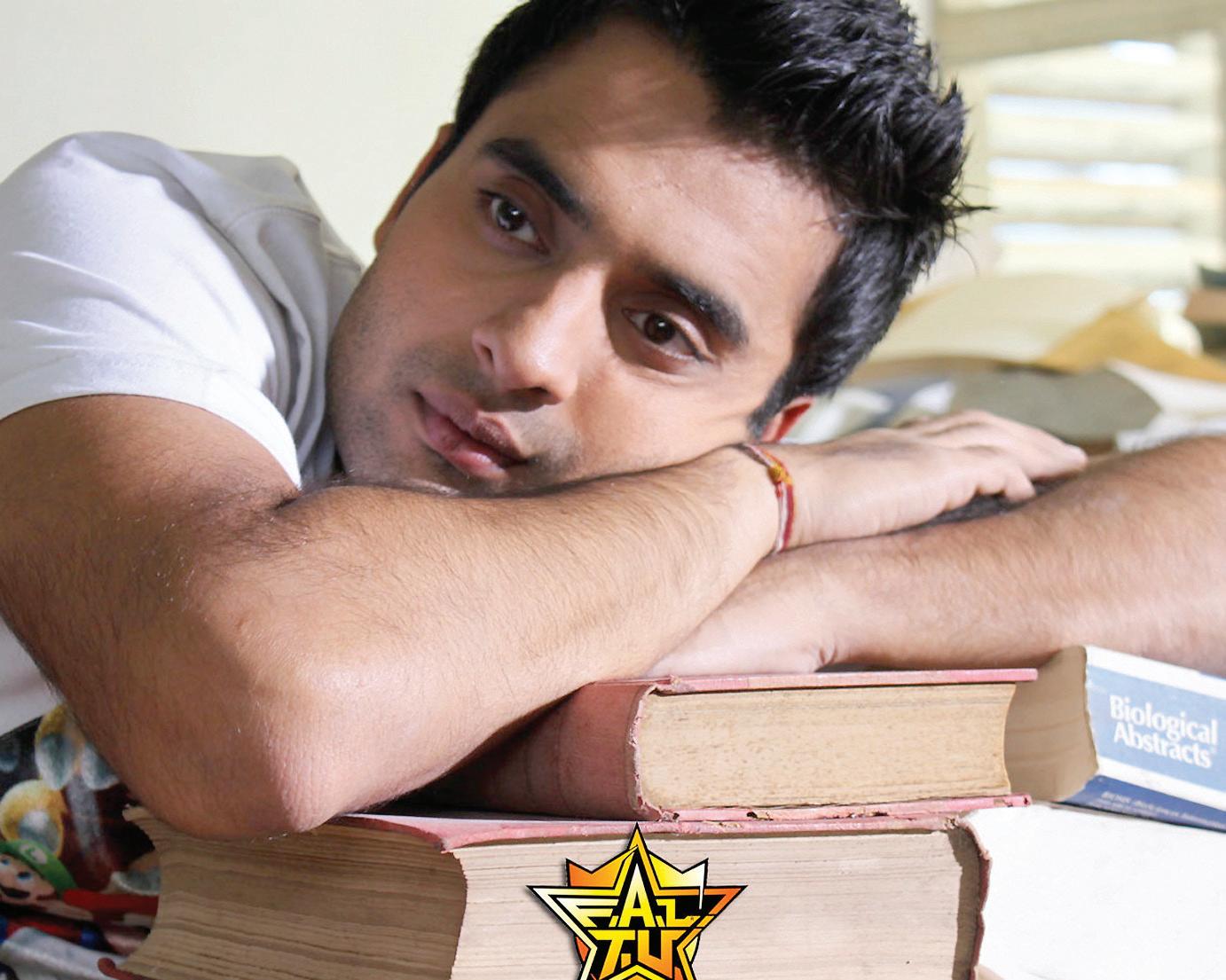
None of the four principal characters gets to lord over the proceedings. There are no romantic duets, no attempt to create individual alcoves of emotional or dramatic interest for any of the characters.
Not one moment touches your heart. This isn’t a film that encourages a slackening of narrative energy.
The performances are largely functional. Jackky Bhagnani shows a marked improvement since his last film. He gets dependable support from Chandan Roy Sanyal and to a lesser extent Angad Bedi. Among the senior cast one is rather taken aback to see Rameshwari who once played the charming scenestealer in Dulhan Wohi Jo Piya Man Bhaye, as Angad Bedi’s South Indian mother.
Angad looks as South Indian as Bishan Singh Bedi. But then we aren’t really looking for cultural specificity in these actors. These characters represent a state of mind. They live in a world of vibrant colours, a world where poor academic performance has turned them into diehard pleasure-seekers.
To avoid thinking of what darkness lies in the future for these young losers, there’s always the next party. Come, let’s join the fun.
50 <> INDIAN LINK
ENTERTAINMENT www.indianlink.com.au
Subhash K Jha
Desi democracy

downthrow of her own government.
BY ROY LANGE
Could the uprisings raging across North Africa spread to India? Could Rajpath be a furnace of revolution with farmers shoulder to shoulder with English medium types? This report from New Delhi.
New Delhi: Earlier today the Arab Spring uprisings spread to New Delhi where one million protesters massed at Rajpath. The gathering was generally peaceful until pandemonium broke out later in the day. Delhi Police believe 23 are dead, with several hundred injured.
The protest was initially organised by student leader Amit Das from the Communist Party-aligned All India Students Association
“The mobile phone is the twentyfirst century’s Kalashnikov!” he told this reporter. “We got all our comrades to get online and rally our troops!”
Amit was angrily interrupted by Ajay Goel, leader of the ABVP, the BJP-aligned student union, “Arrey yaar, these Bengali duffers tried to do this but they don’t own a computer, bhai! My father owns a mobile shop only.”
Amit Das tried to respond, but was enthusiastically interrupted by the Muslim Students Union and the powerful National Students Union and an emerging union from Panipat, with a membership of two. It did not escape this reporter’s observation that many of the student leaders were in their late forties, early fifties and that many of their children were in attendance as it was University study leave.
Mamta Banerjee took even stronger offence. But on questioning, she couldn’t say why she was offended, but insisted she was very angry indeed and couldn’t stop shouting (without taking a single breath!)
Despite the divisions, the rally was a historic display of democracy in play - a sea of humanity demanding the reclamation of their beloved India. Columns of smoke from burnt buses punctuated the horizon. Jats, with beautifully constructed deadly homemade weapons, repeatedly pierced the night sky with 1000 spears in appreciation of the charismatic speakers from every party and every faith. (Meanwhile the middle classes made herculean efforts of not panicking when the networks jammed and they couldn’t get in touch with their drivers).
After a fiery speech by a leader of the BJP, the crowd started to proceed to 10 Janpath with a taste for blood. It was Cairo all over again.
The power of the unstoppable crowd was simply terrifying.
It did not escape this reporter’s observation that many of the student leaders were in their late forties, early fifties and that many of their children were in attendance as it was University study leave.


Deejay from the Congress-aligned NSUI, finally managed to be heard. “We were appalled that these Unions were campaigning for the downthrow of our glorious leader. Soniaji zindabaad! So we started giving away mobile phones if people promised not to attend. The ABVP then irresponsibly promised, with the help of their seditious BJP masters, a 38” plasma television with every busload that came to the rally. We naturally responded by offering a 42” plasma television with a built-in coffee machine and promptly had Ajaj Goel arrested,” he stated enthusiastically.
The NSU also took very strong exception that Mrs. Gandhi, the President of the Congress, had not been invited as head speaker at such an important rally. Regardless that it was focussed towards the
Then Mrs. Gandhi took the podium and the less intelligent looked dumbstruck. How could she be in two places at the same time?
Mrs. Gandhi, in impeccable HindiItalian, charmed the crowd to a murmur and said that the legacy of Mahatma Gandhi dictates that violence is completely unjustifiable - but if the million strong crowd feel it is unavoidable, they should attack the BJP headquarters which was just round the corner, “…just past the second set of lights.”
In any case she said, inflation, corruption and no basic services is an incredibly clever CIA plot.
This was when a glorious movement lost its way. Mr. Diwan, a tailor from Bengali Market tells us his story.
“I was minding my own business, sewing a shirt with a tricky rainbow design, when there was an almighty noise outside my shop. I stupidly opened the shutters to find a mob shouting for a tape measure. Then I took a quick look at my bottle of Old Monk to see if I had taken one too many pegs because I saw at least 10,000 people start to measure a dozen plasma televisions. When they found it was 36” instead of 38”, all hell broke loose…”
On this reporter asking what happened next, searching for details of how Connaught Place was burnt to the ground, he admitted he didn’t know, as he had just regained consciousness.
APRIL 2011 <> 51 INDIAN LINK
BACKCHAT
When protestors gather to voice their opinions in a massive morcha, a confusion of causes reaps unusual benefits
www.indianlink.com.au

52 <> APRIL 2011 INDIAN LINK


APRIL 2011 <> 53 INDIAN LINK

54 <> APRIL 2011 INDIAN LINK
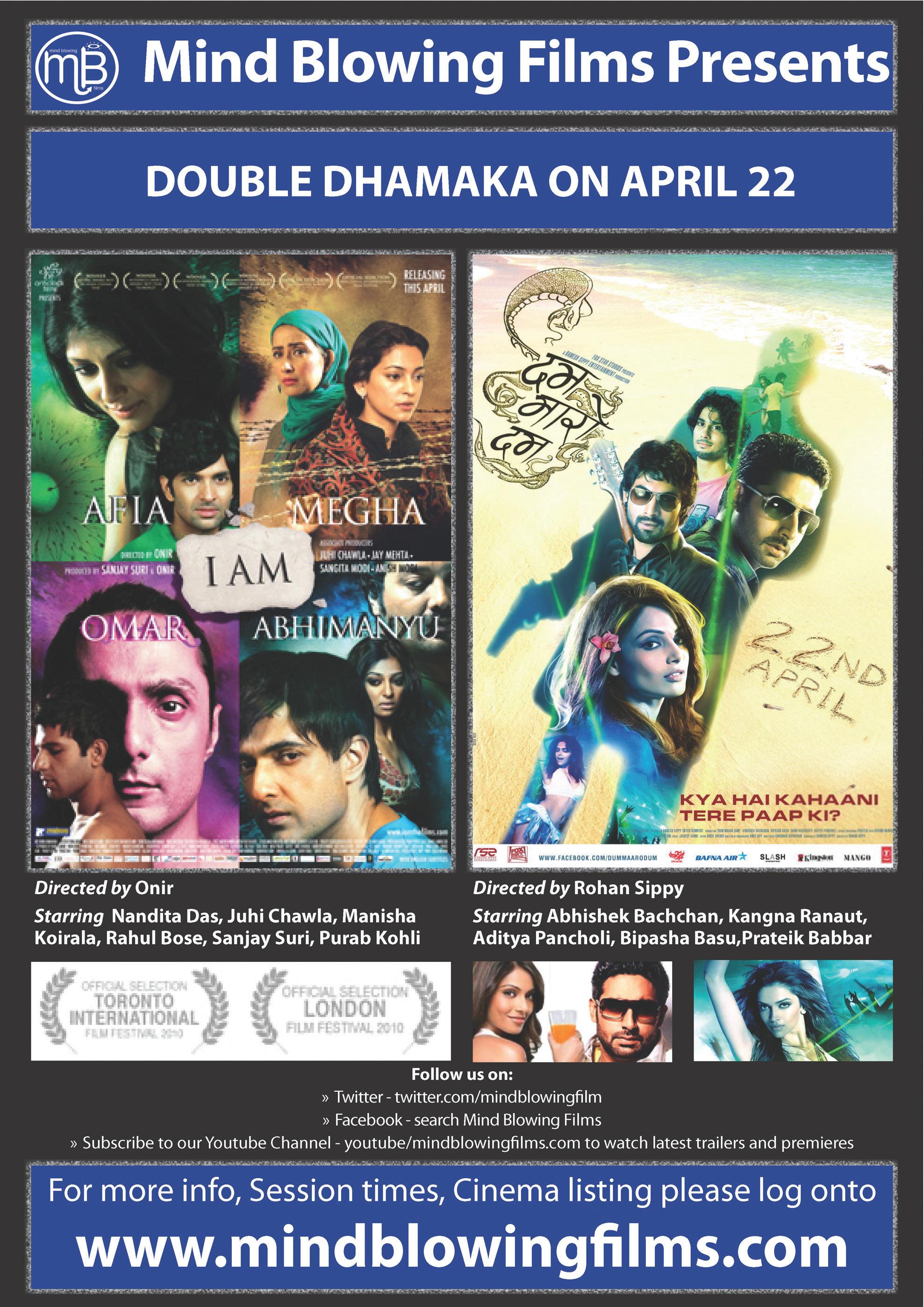
APRIL 2011 <> 55 INDIAN LINK

56 <> APRIL 2011 INDIAN LINK


















 BY PREETI JABBAL
BY PREETI JABBAL














 Photos: Ravinder Singh Jabbal; Mind Blowing Films
Photos: Ravinder Singh Jabbal; Mind Blowing Films











 BY PREETI JABBAL
BY PREETI JABBAL










 BY RAJNI ANAND LUTHRA
BY RAJNI ANAND LUTHRA






















































 BY CHITRA SUDARSHAN
BY CHITRA SUDARSHAN














 BY NIMA MENON
BY NIMA MENON

























































































